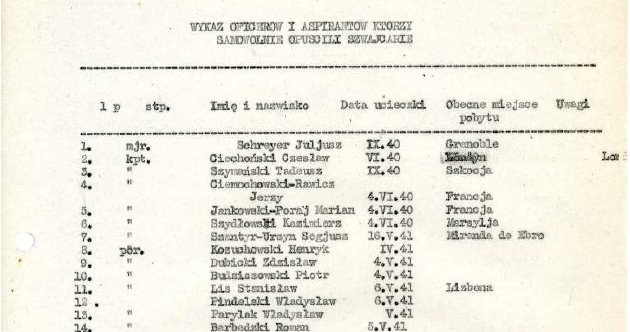Stanislaw Lis Archived Documents
This synopsis has been created using records recovered from Polish & UK Military archives. Please continue to scroll for translations of some of the documents. This is a work in progress
Early Biography
(The following has been compiled from several of my grandfather’s handwritten accounts)
In the summer of 1914, at the outbreak of the First World War, 11-year-old Stanisław Lis was on vacation at his family home in Michałówka near Rawa Ruska, where his father worked as a forest manager. Dense forests and rolling terrain would become the backdrop for his early resistance activities. Stanislaw was educated and inspired by his mother, the daughter of a participant in the January Uprising of 1863, and grew up steeped in stories of Polish resilience and rebellion against foreign oppressors. His mother’s vivid recounting of uprisings and her belief in the symbolic and material importance of resistance sharpened Stanisław’s awareness of Poland’s plight.
As the war erupted, Poland remained partitioned by the Russian, Prussian, and Austrian empires. The unique circumstance of these powers now being at war with each other seemed, to Stanisław and others like him, an opportunity to strike a blow for Polish independence. His mother, who embodied the indomitable spirit of rebellion, encouraged him, not just ideologically but also morally, lending her unwavering support to his "excesses" - actions she believed were small contributions to Poland’s larger struggle for sovereignty.
1915: Early Resistance Against the Russians (aged 12)
In the spring of 1915, as Russian troops occupied Michałówka, Stanisław began working covertly with the local forester, Lisetsky. Together, they stole weapons, including rifles and ammunition, from Russian encampments stationed in the forest. They hid the cache deep in the woods, intending to transport it to Żółkiew. In the autumn of that year, with the help of his friend Aleksander Głogowski, Stanisław succeeded in moving the weapons, demonstrating both ingenuity and courage.
One of Stanisław’s boldest acts occurred during the departure of a Russian military camp. On the eve of their planned withdrawal, he set fire to a haystack near his parents' residence and released around 30 horses from their enclosure. The resulting chaos delayed the camp’s departure and scattered the horses into the surrounding forest, with several never recovered. Though the local community whispered about the provocations, suspicion never fell directly on Stanisław, thanks to his mother’s careful efforts to shield him.
Despite the danger, his mother continually reminded him that even small, seemingly childish acts could contribute to the larger cause. These early actions - sabotage, theft, and disruption - were precursors to Stanisław's evolving commitment to resistance.
Shifting Focus: Resistance Against the Germans
When German forces replaced the Russians, Stanisław turned his attention to the new occupiers. Alongside Lisetsky and a Polish deserter from the Russian army, Stefan Rybak, he orchestrated more daring operations. One notable mission involved setting fire to the forest near a German supply depot. The blaze, strategically started in two locations, destroyed three carts of cigarettes, canned food, and some ammunition. The chaos caused disarray among the German troops, but Stanisław narrowly avoided capture. His father, Jan Lis, was unaware of Stanisław’s involvement and blamed German negligence - he even considered suing for damages.
Stanislaw’s mother, ever protective and pragmatic, chose not to inform his father of their son’s activities. This allowed Jan to maintain plausible deniability, which proved crucial when the family faced harassment and accusations.
Escalation of Activities and Polish Nationalism
By late 1915, Stanisław had transported more weapons to Żółkiew, hiding them in the woods near an old powder magazine by the cemetery. Alongside friends like Głogowski, Dubik, and others, he began conducting scout drills and intelligence-gathering missions. Their ultimate goal was to join the Polish Legions, the volunteer army formed by Józef Piłsudski to fight for Polish independence. Though initially deemed physically unfit for service, Stanisław persisted, continuing his clandestine activities while dreaming of a free Poland.
In 1917, his group carried out acts of sabotage, including the destruction of a military shooting range near Żółkiew. By this time, discontent with the war and the Treaty of Brest-Litovsk, which ceded Polish territories to Germany and Austria, had reached a fever pitch. Viewing this treaty as yet another partition of Poland, Stanisław and his peers staged demonstrations and intensified their sabotage efforts. One such action, targeting a meeting of pro-Russian Ruthenians, led to his arrest. He was beaten and jailed but eventually released thanks to the intervention of his high school principal, Kazimierz Eljasz.
1918: Escaping Arrest and Joining the Fight
In the aftermath of the Ukrainian uprising following the collapse of Austria-Hungary in 1918, Stanisław’s activities again drew attention. Arrested by Ukrainian forces in Zhovkva, he escaped and fled with his friend Dubik to Rawa Ruska. Their journey, fraught with danger, led them through forests and along railway tracks to reach Polish-controlled territory. By November 1918, Stanisław had joined Polish partisan units fighting near Jarosław, where he participated in engagements against Ukrainian and Bolshevik forces.
Military Service: 1918-1920
Stanisław’s involvement deepened as Poland fought for its independence. From late 1918 through 1920, he served in various military capacities:
Fighting with the 4th Infantry Regiment of the Legions during the Polish-Ukrainian War.
Joining the Armoured Regiment "Odsiecz I" during Poland's efforts to secure its borders.
Participating in the Polish-Soviet War (1920), he served in the 3rd Battalion of the 205th Infantry Regiment during the Bolshevik invasion.
By the end of these campaigns, 17-year-old Stanisław had risen to the rank of second lieutenant in the reserve artillery, marking the culmination of years of resistance, sacrifice, and service.
My grandfather’s actions were not isolated but deeply rooted in his family’s history and the Polish struggle for independence. His mother’s lineage, tied to the January Uprising, imbued him with a sense of duty and rebellion. Her moral and ideological support sustained him, whilst his father, shielded from the truth, faced harassment and imprisonment. These formative years, spanning guerrilla resistance and military service, reflect not only young Stanislaw’s bravery but also the broader Polish experience during World War I - a time of upheaval, sacrifice, and unyielding hope for a free and united Poland.
Polish Military Archives
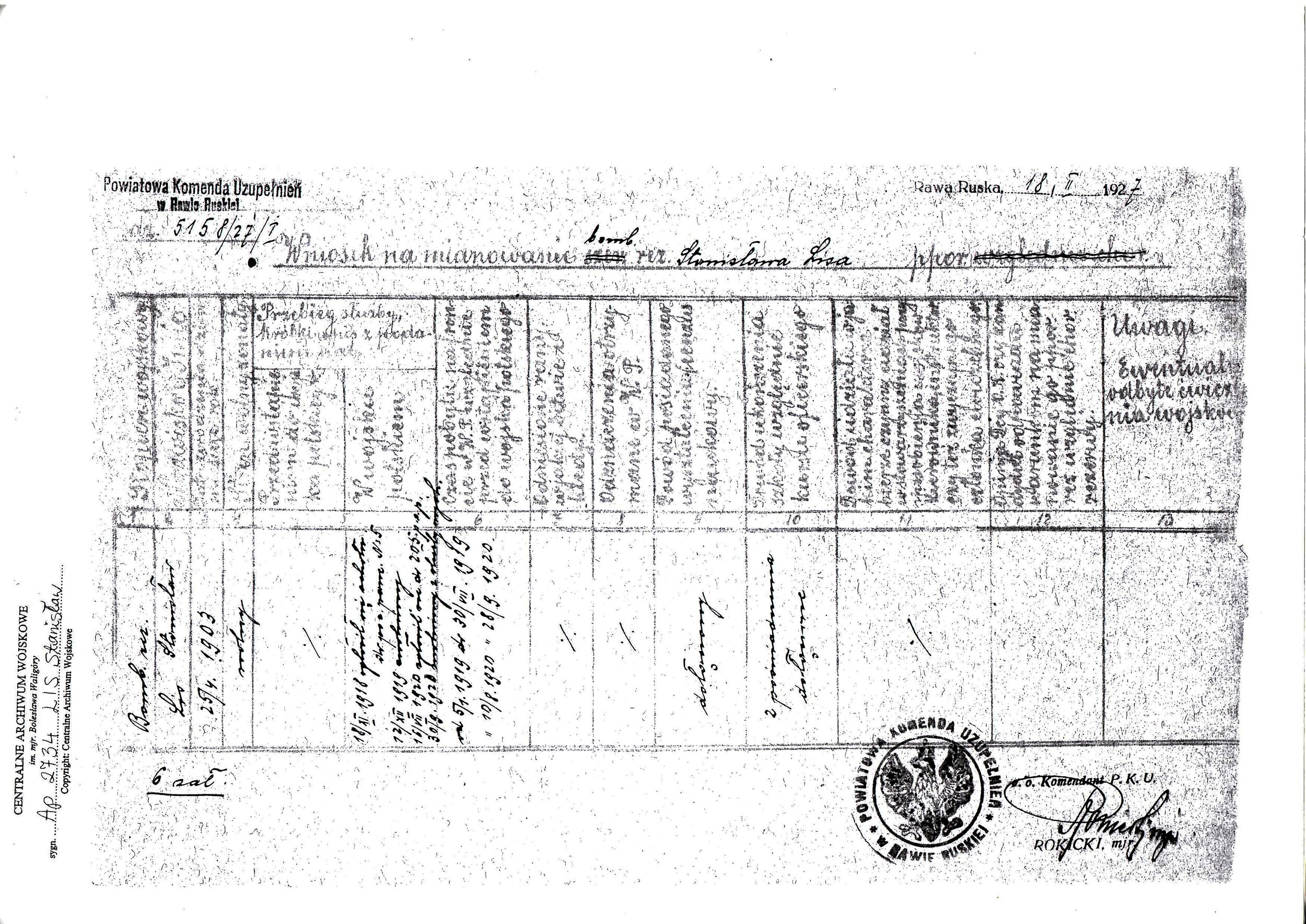
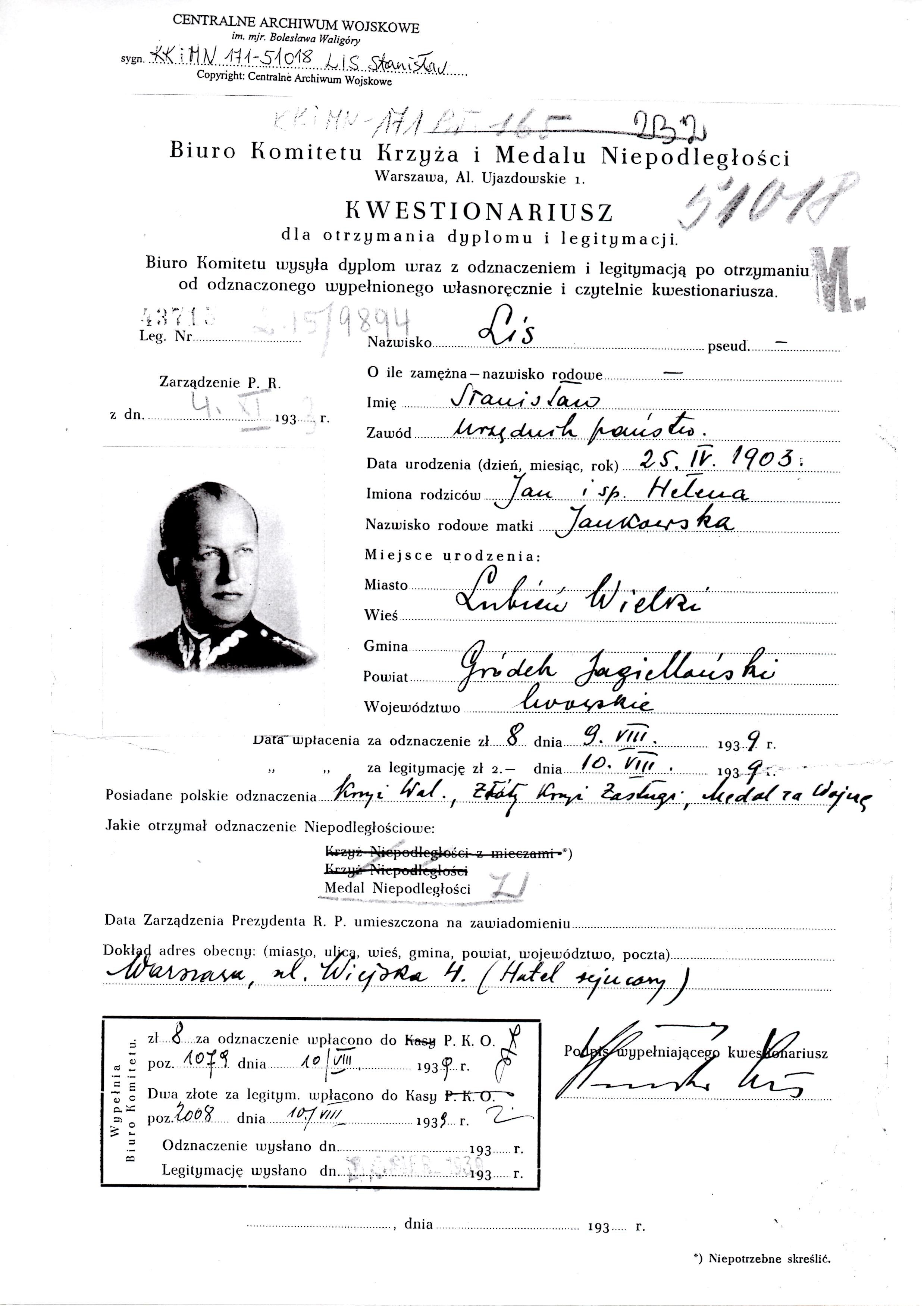
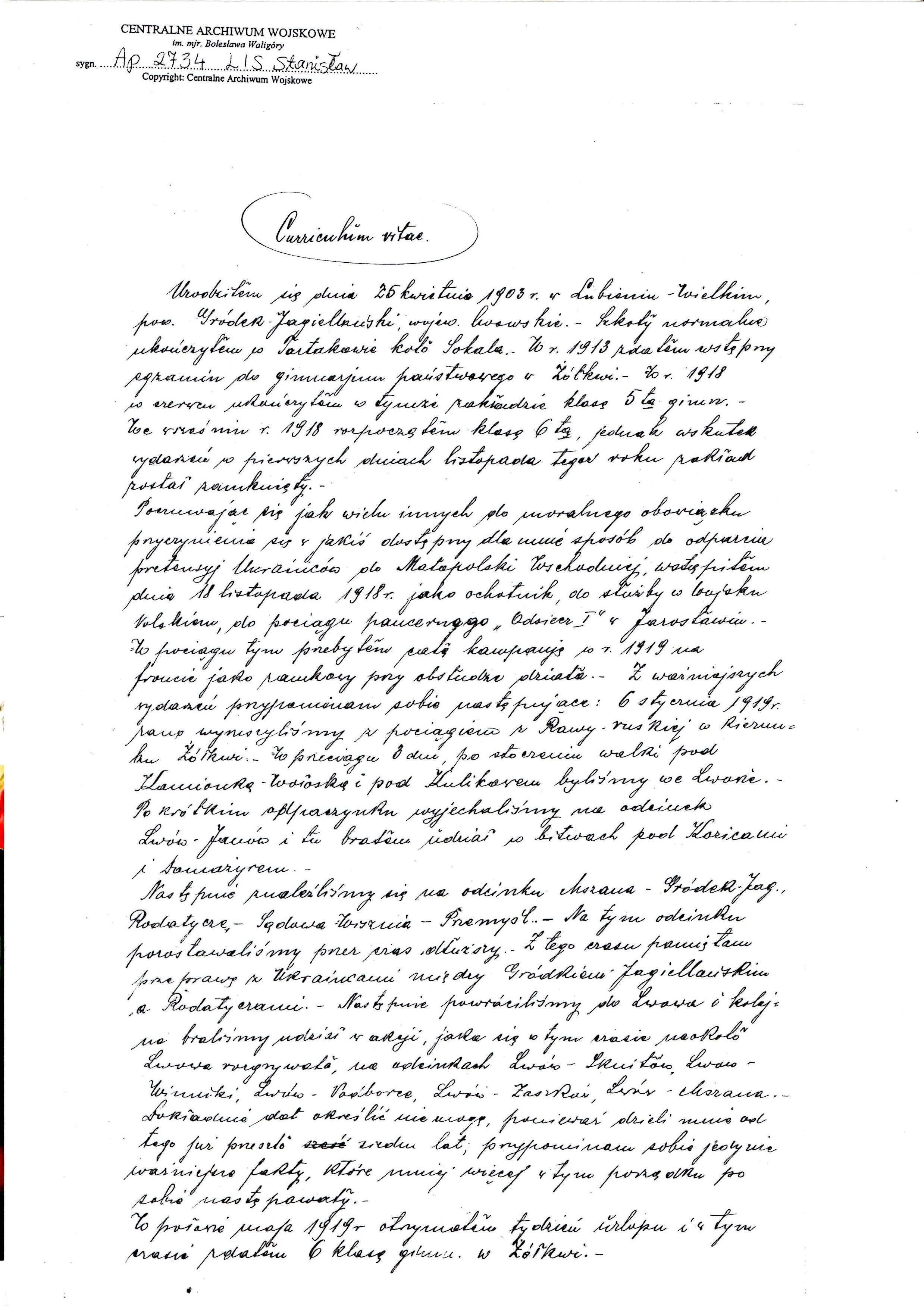
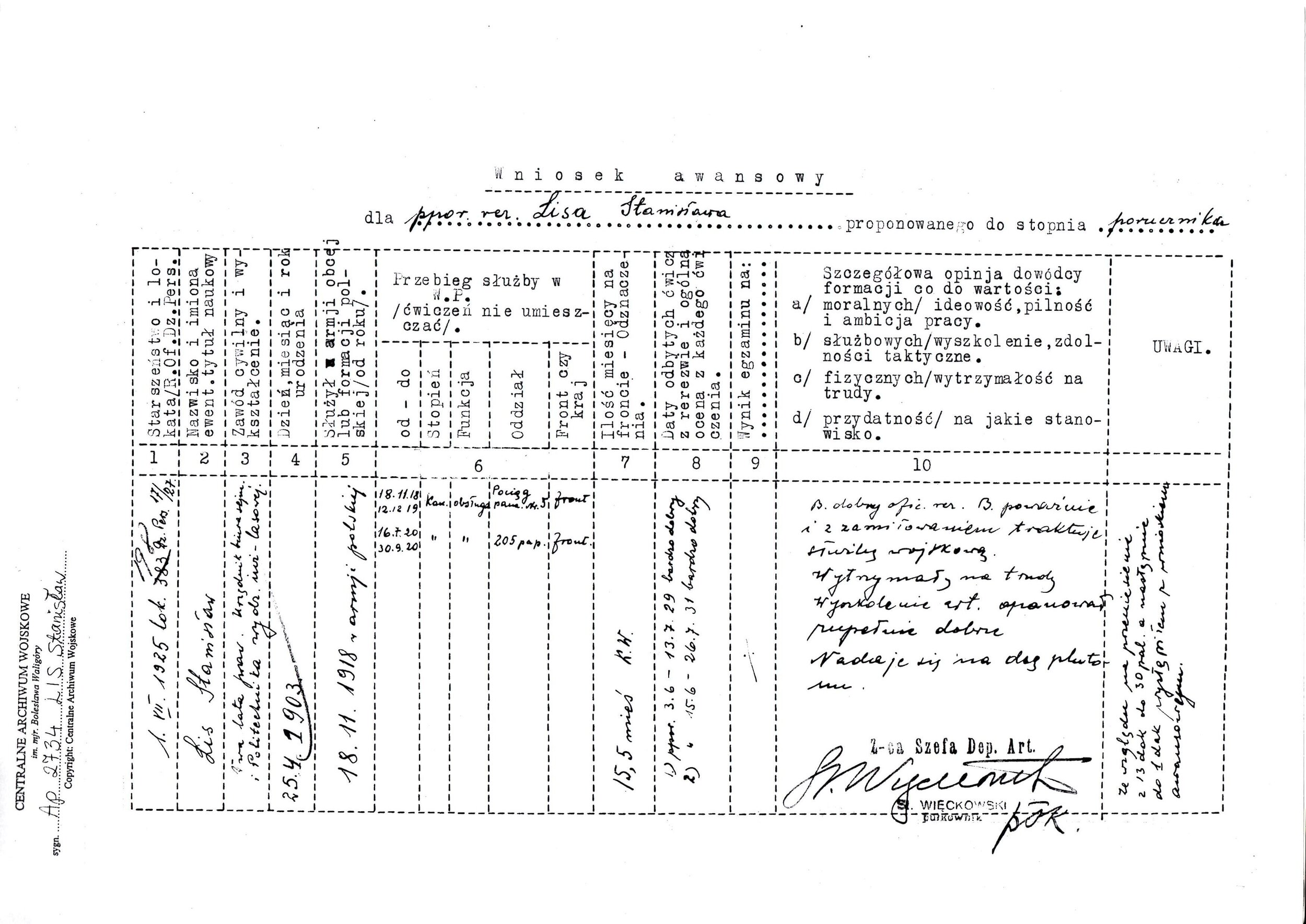
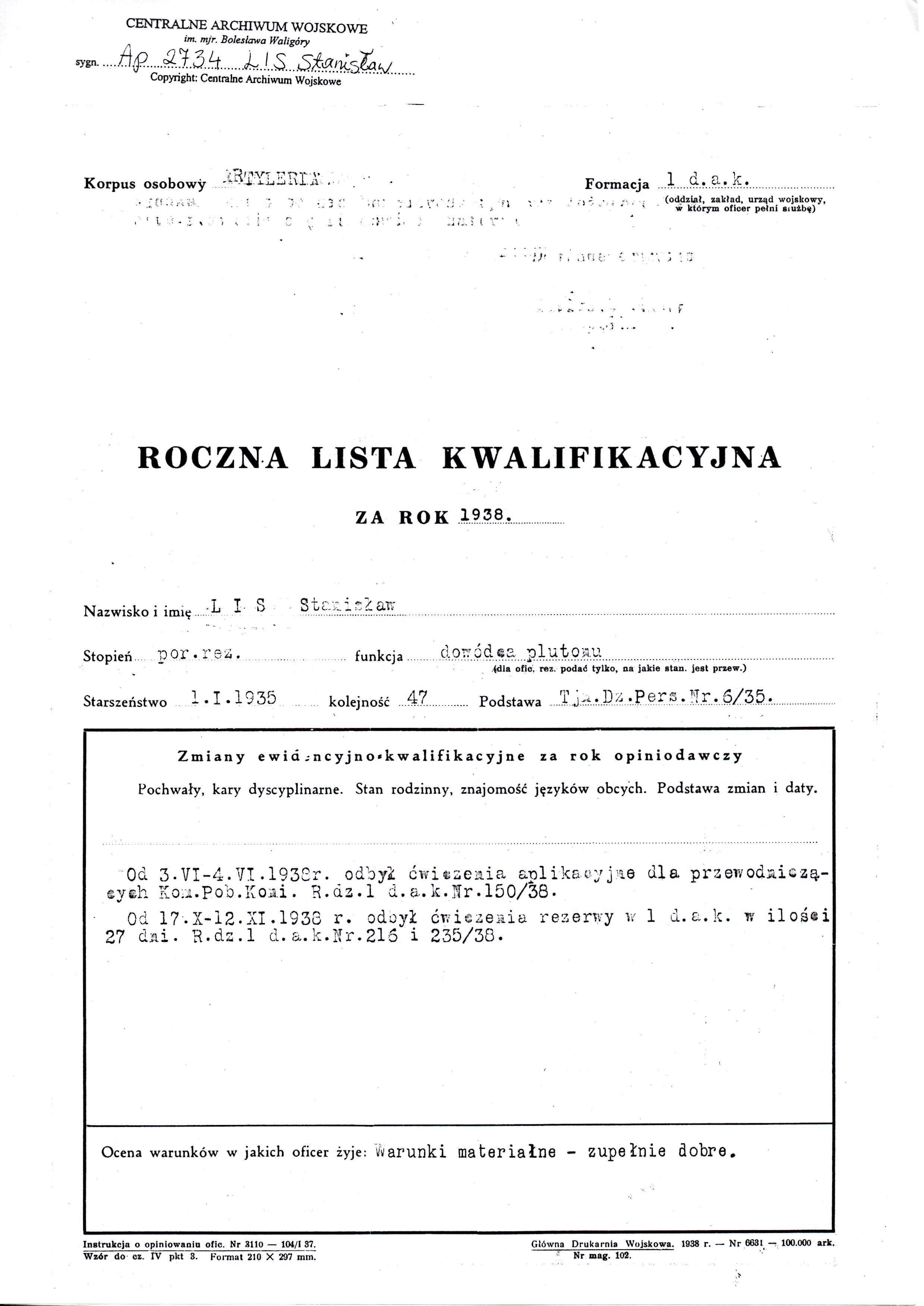
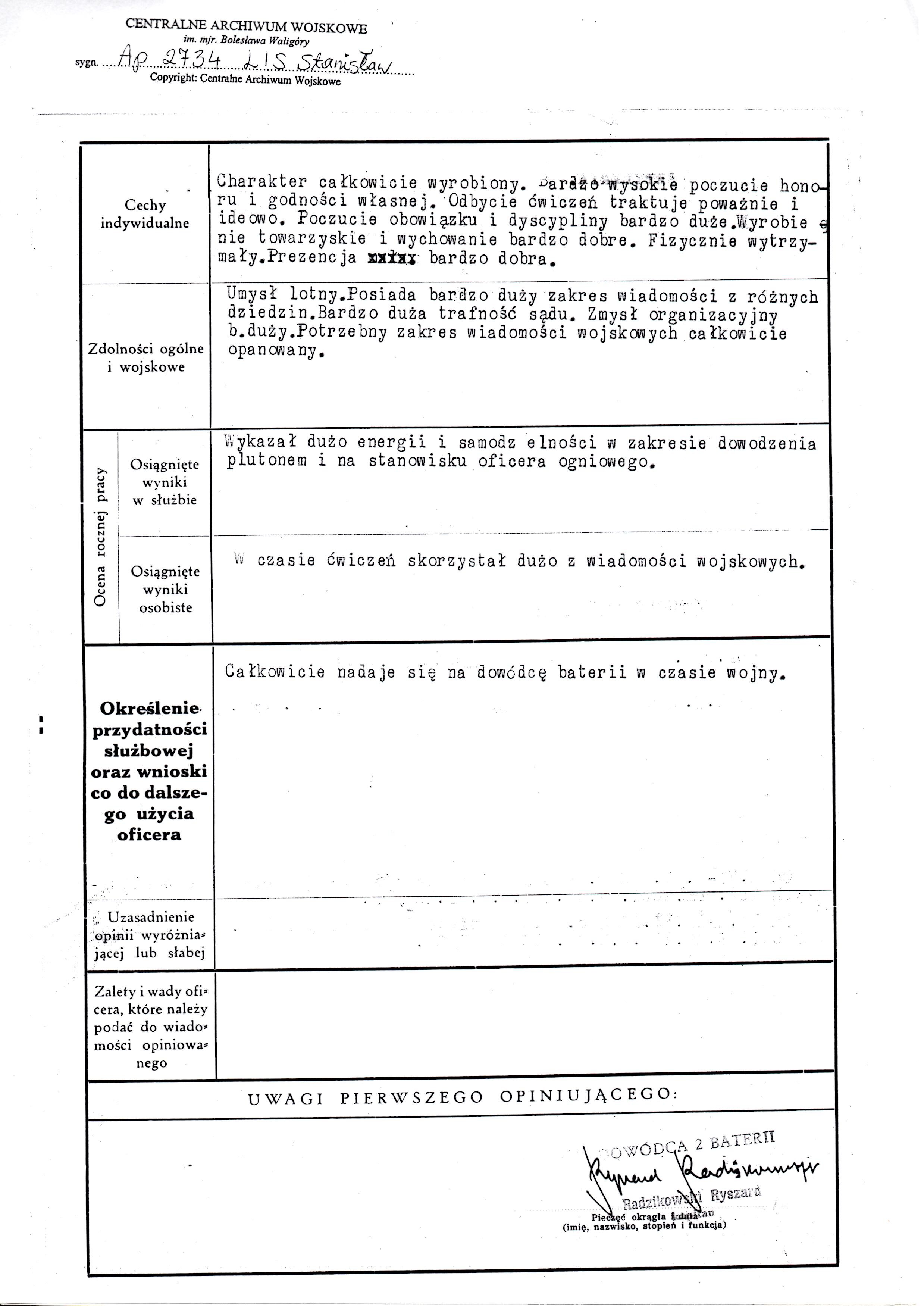
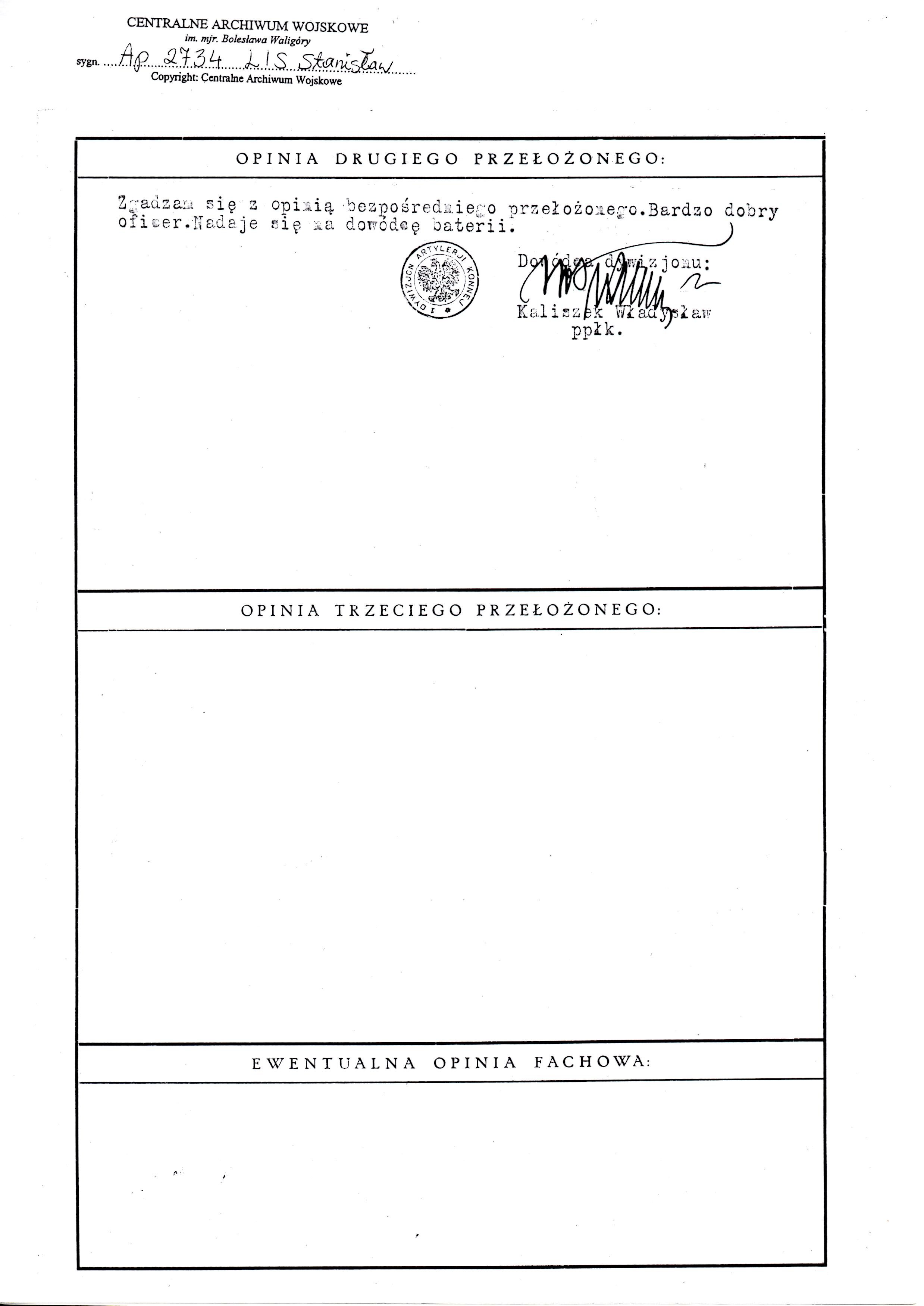
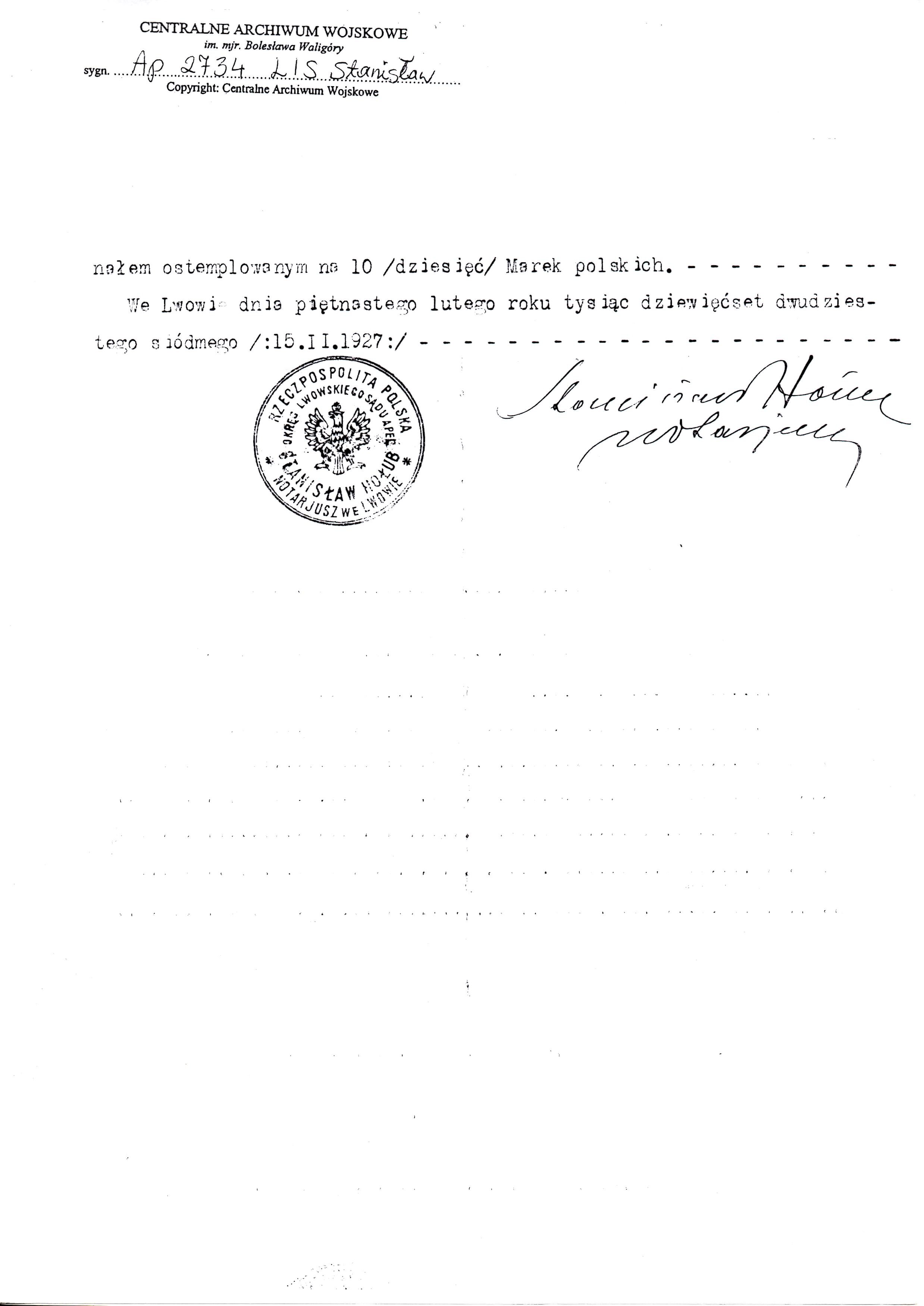
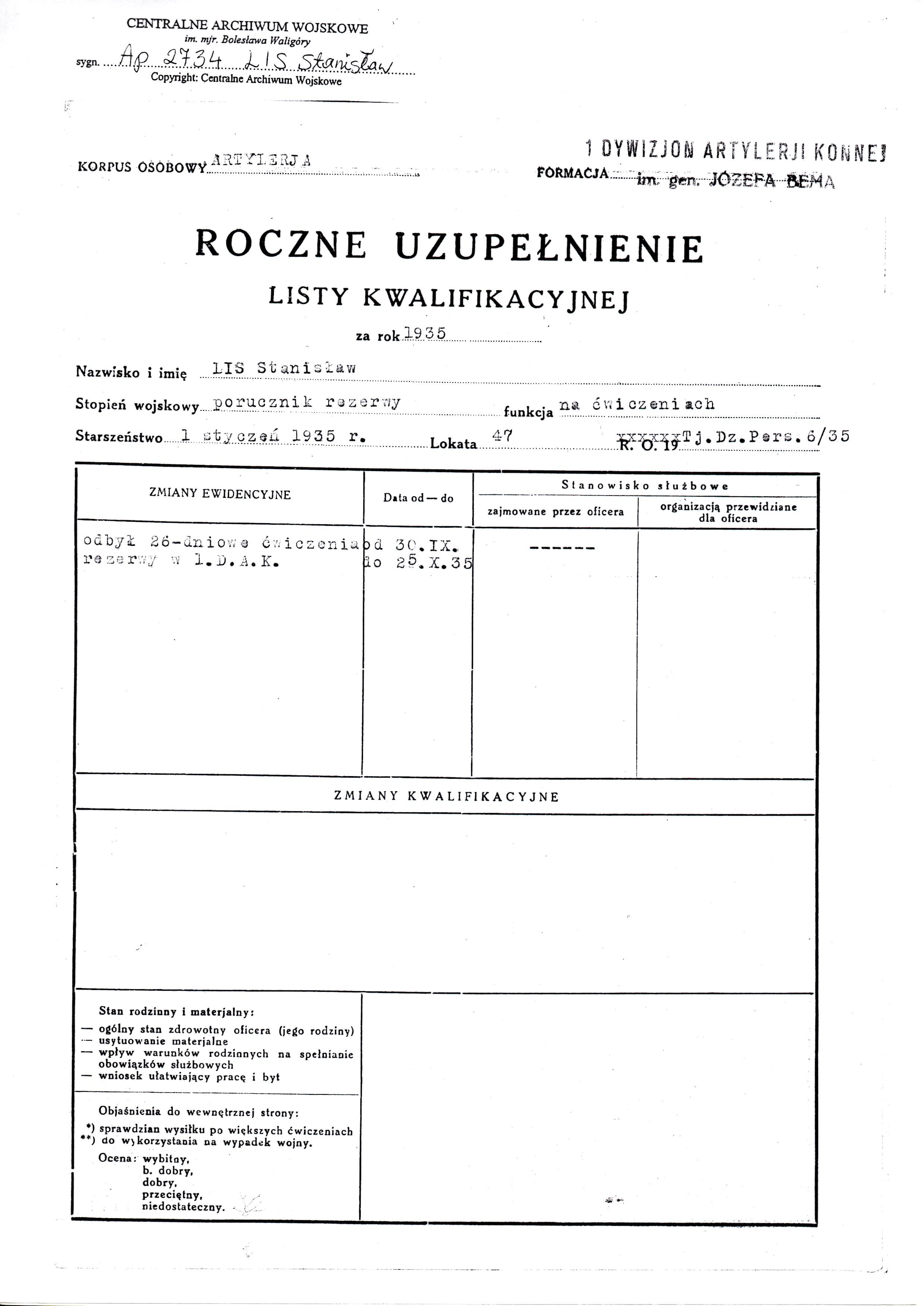
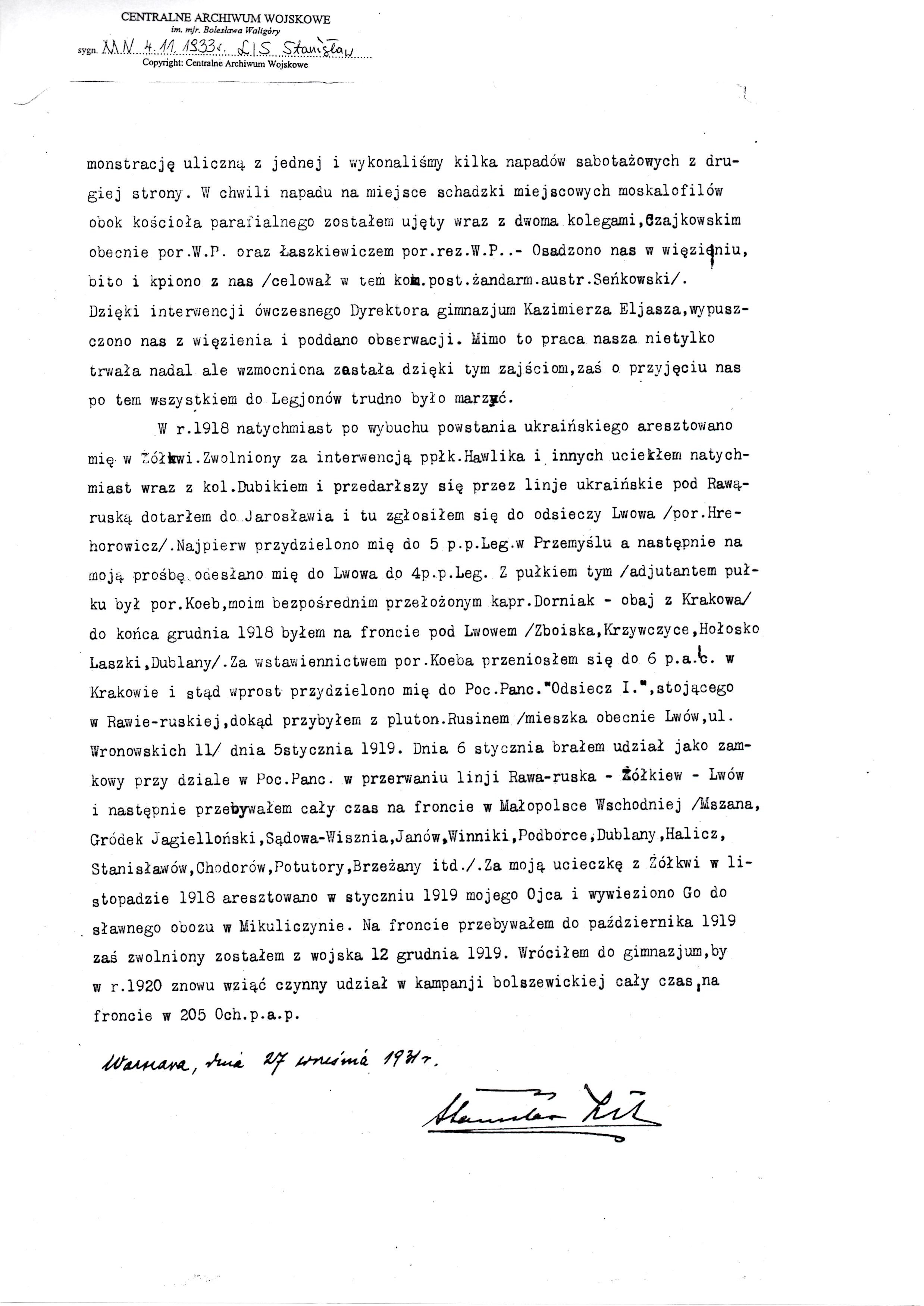
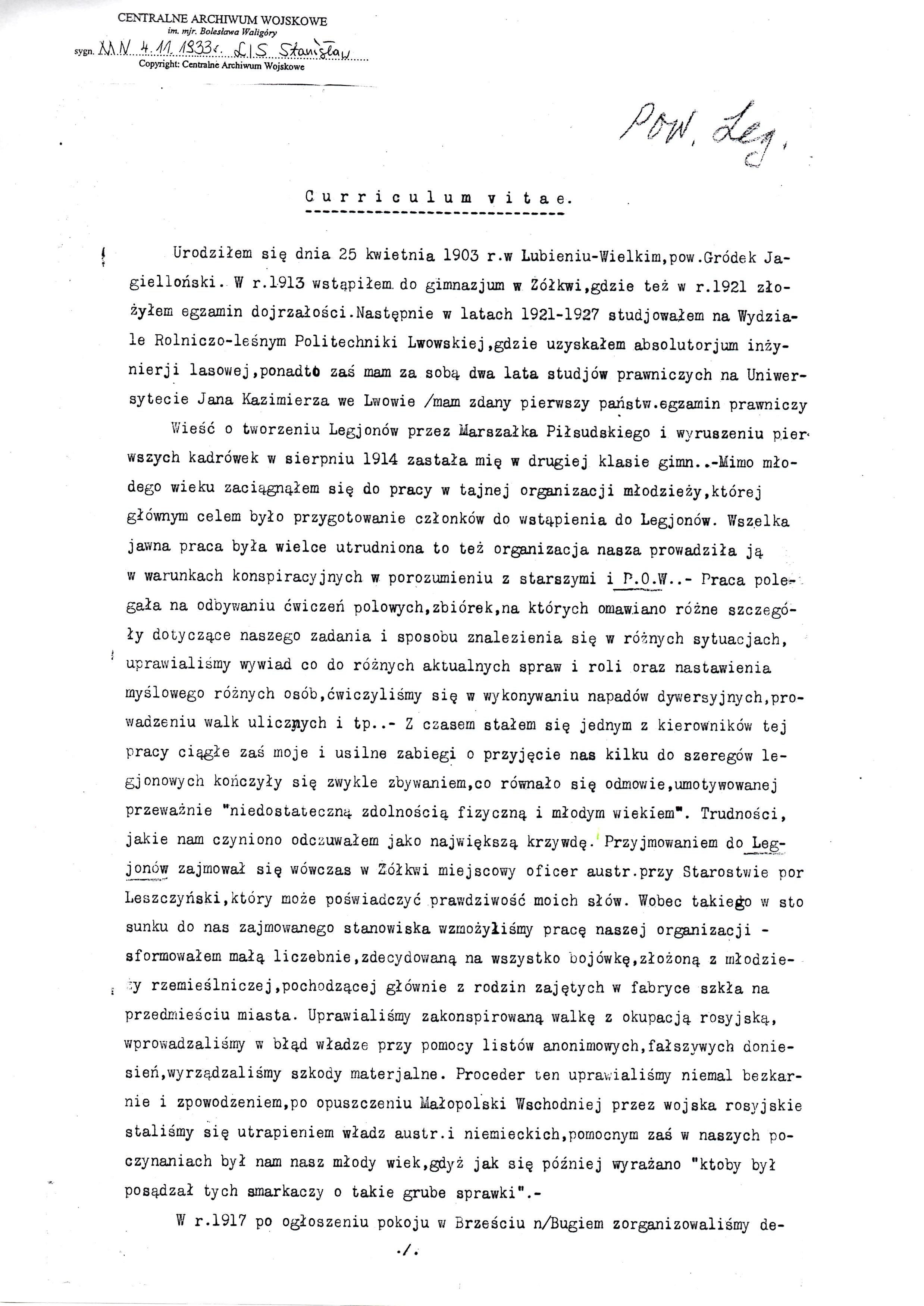
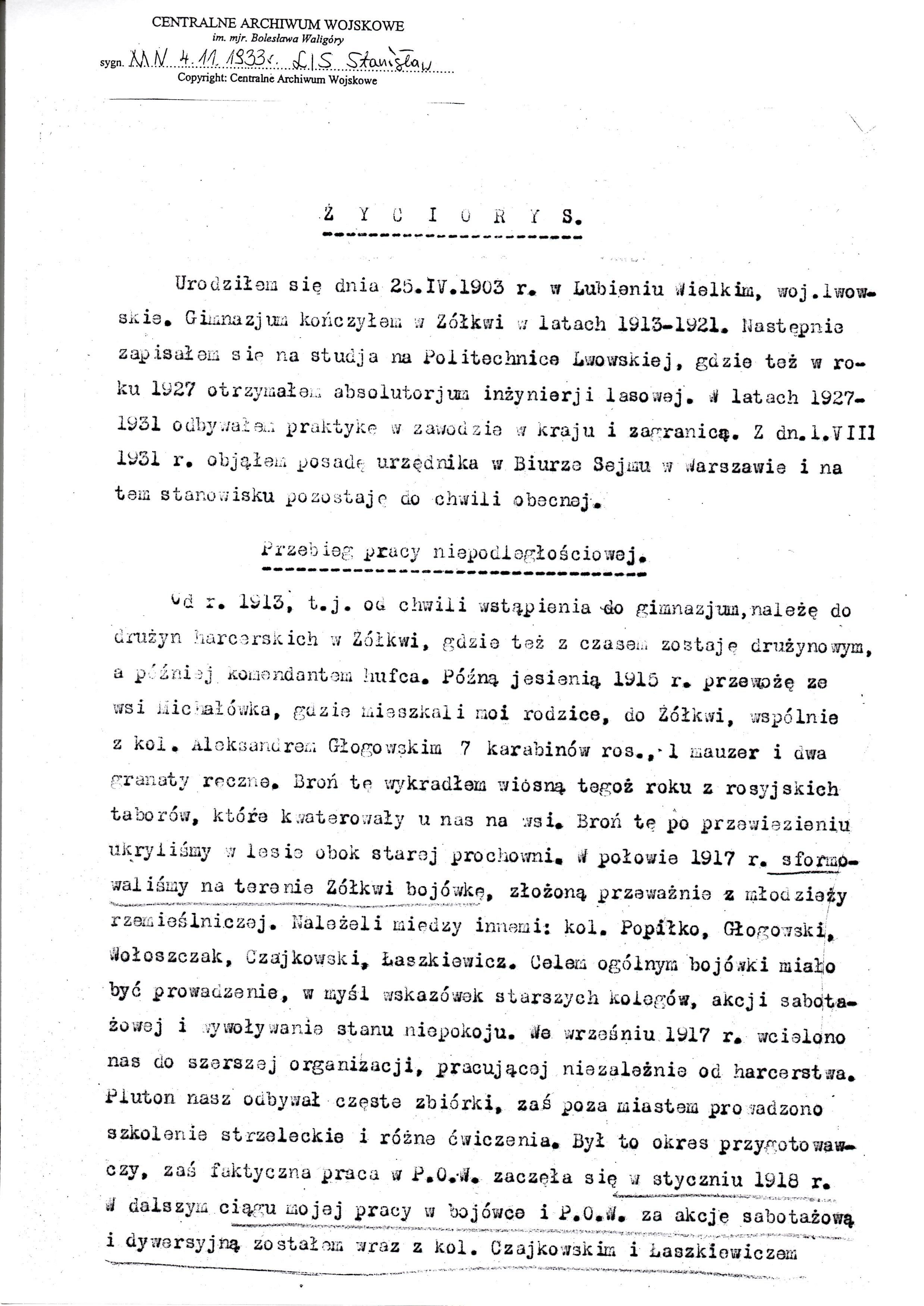
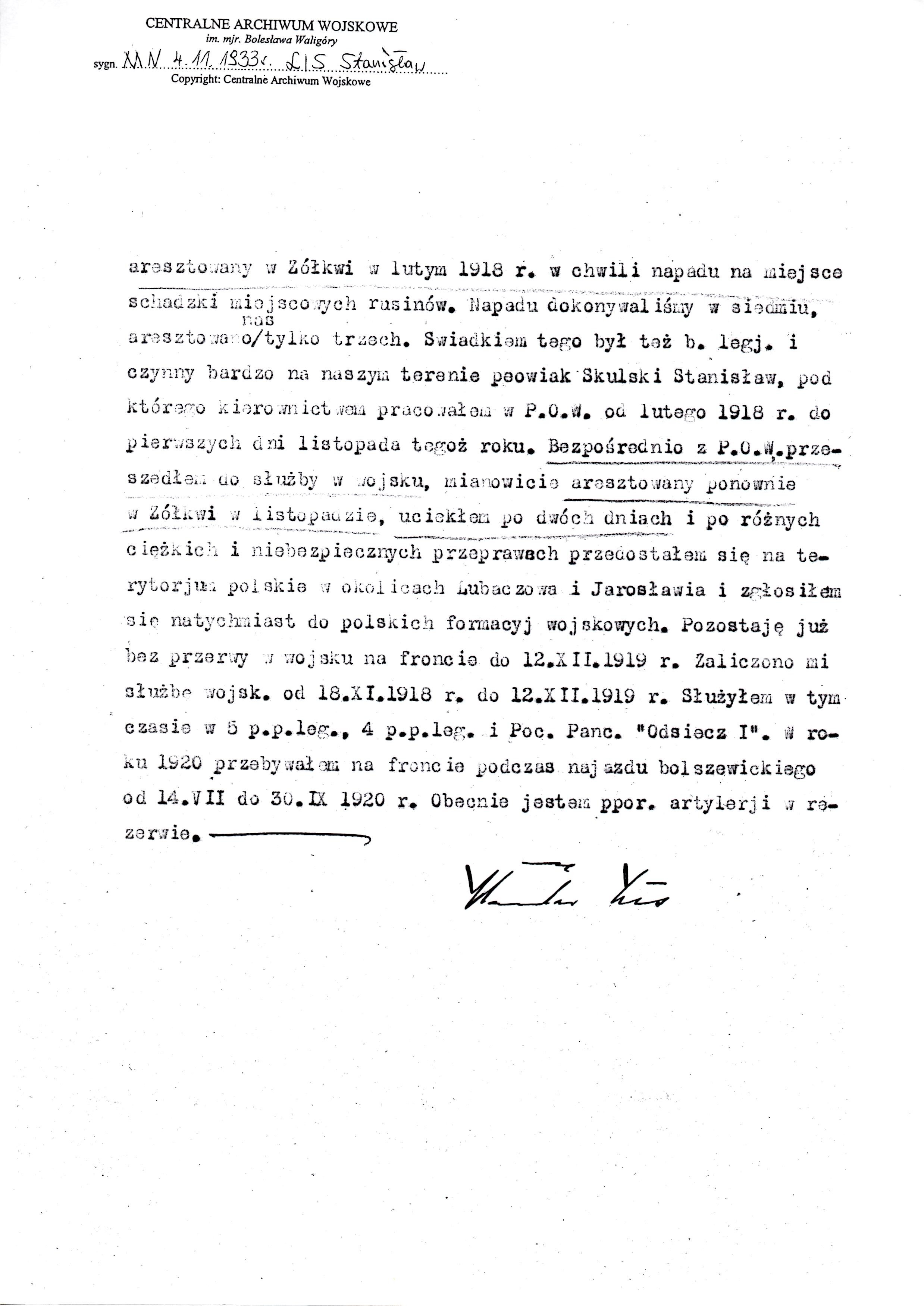
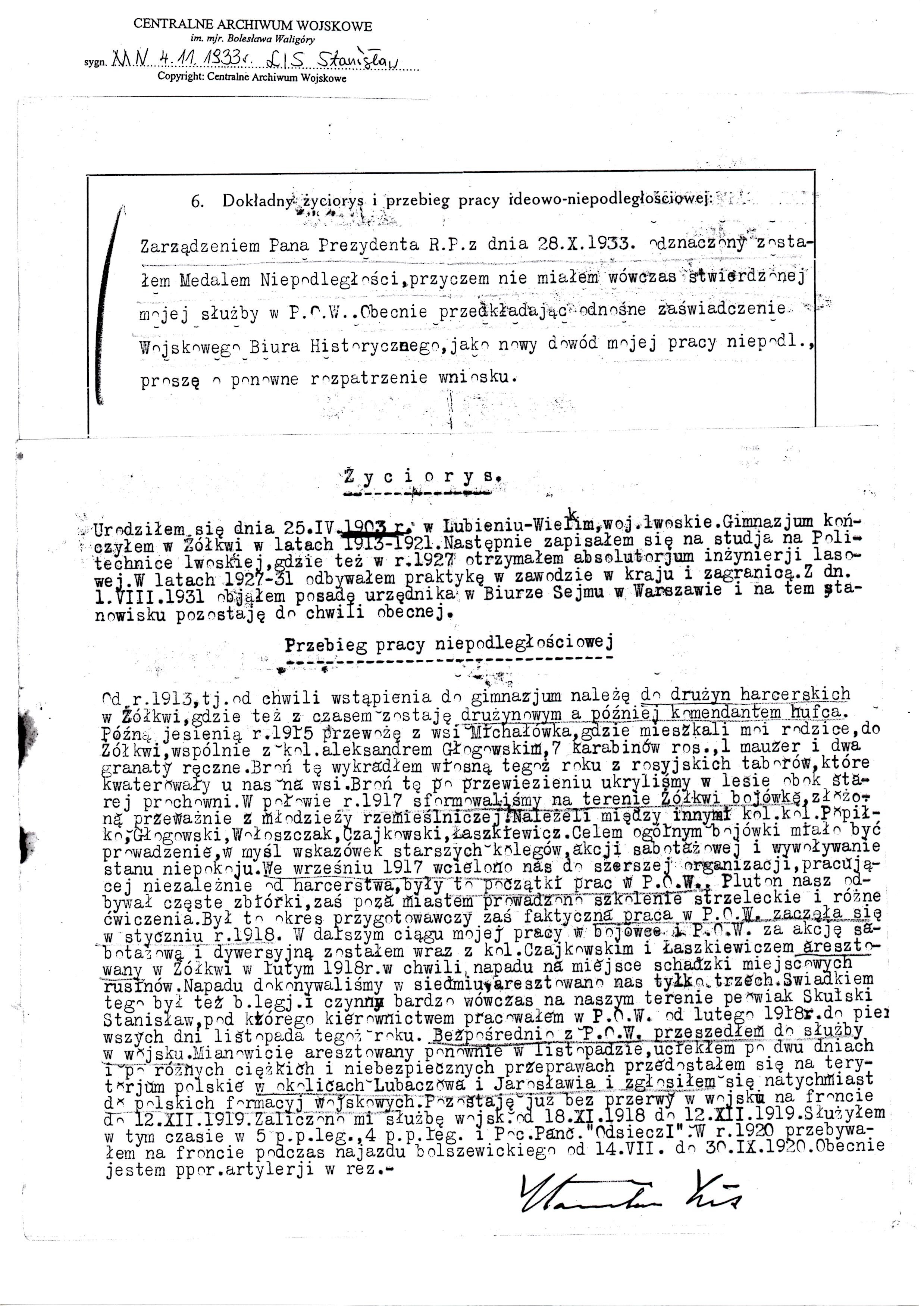
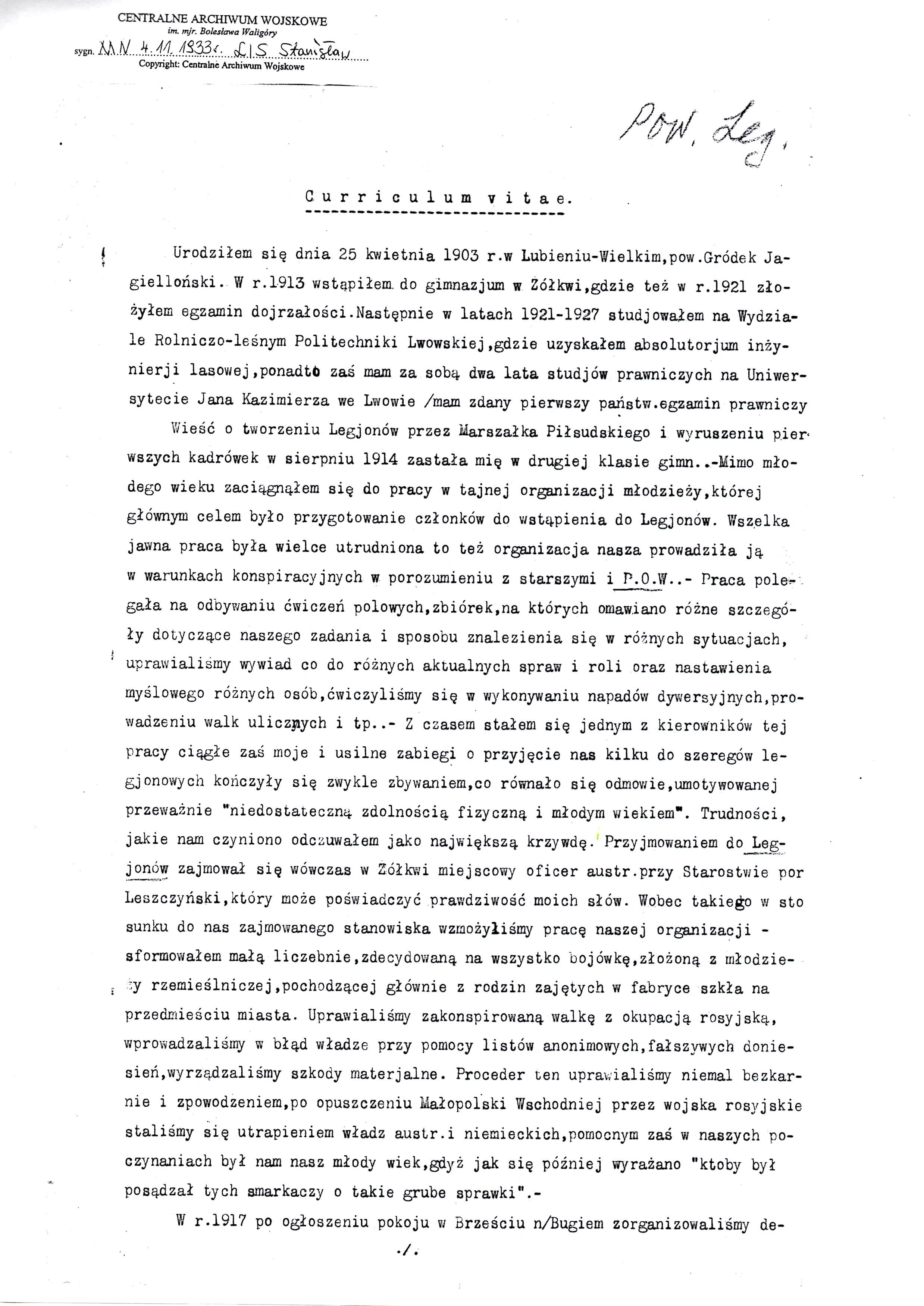
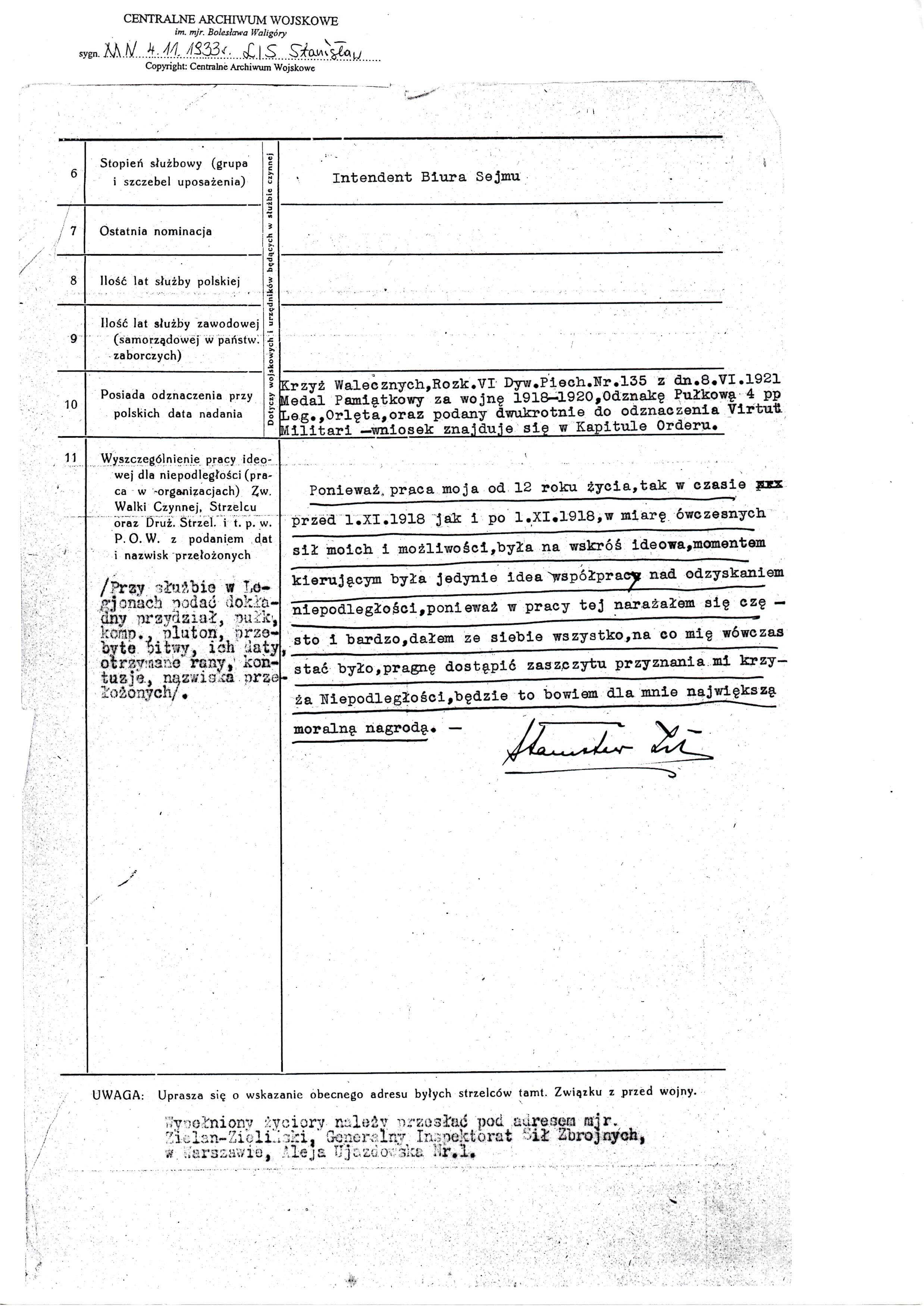
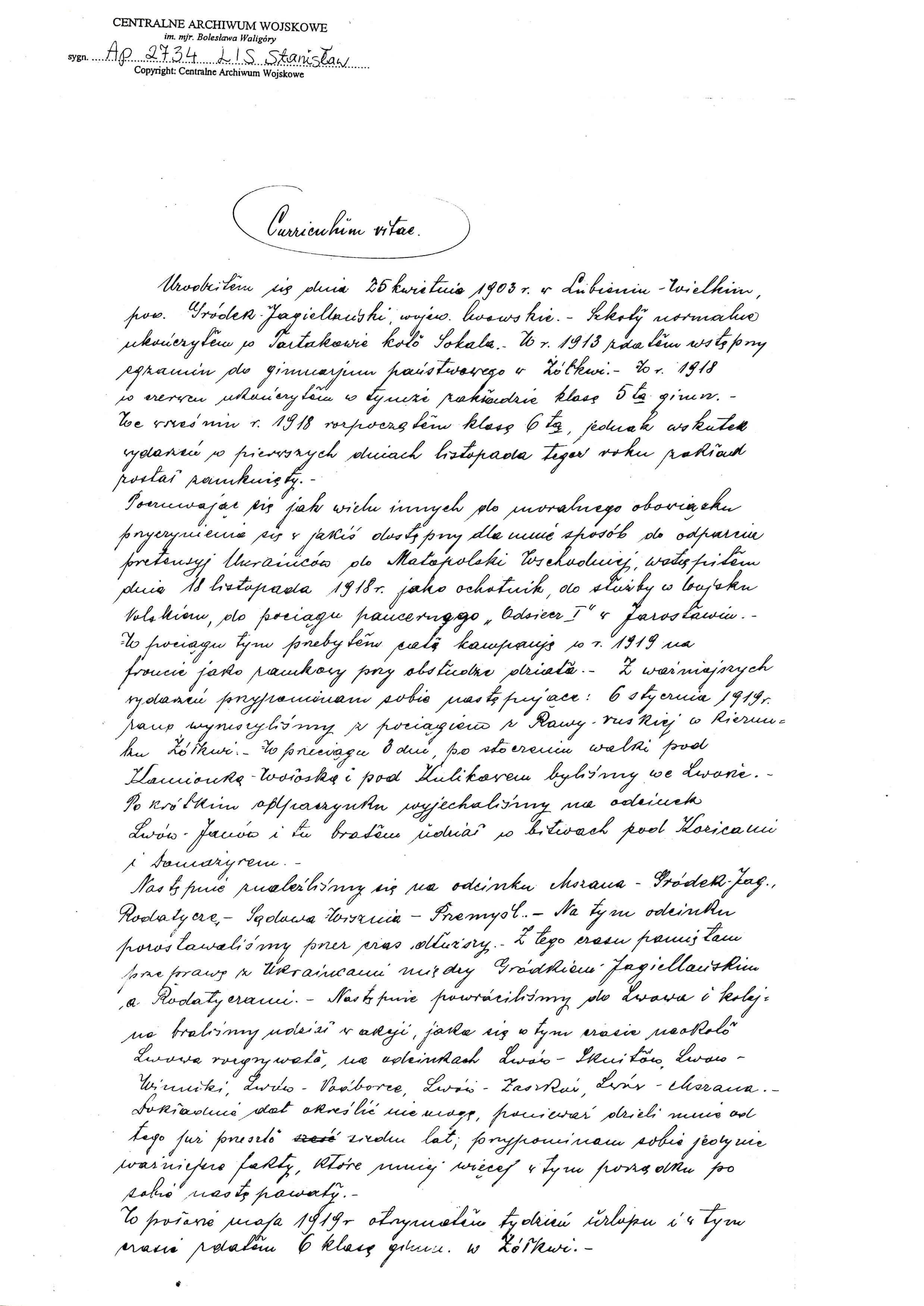

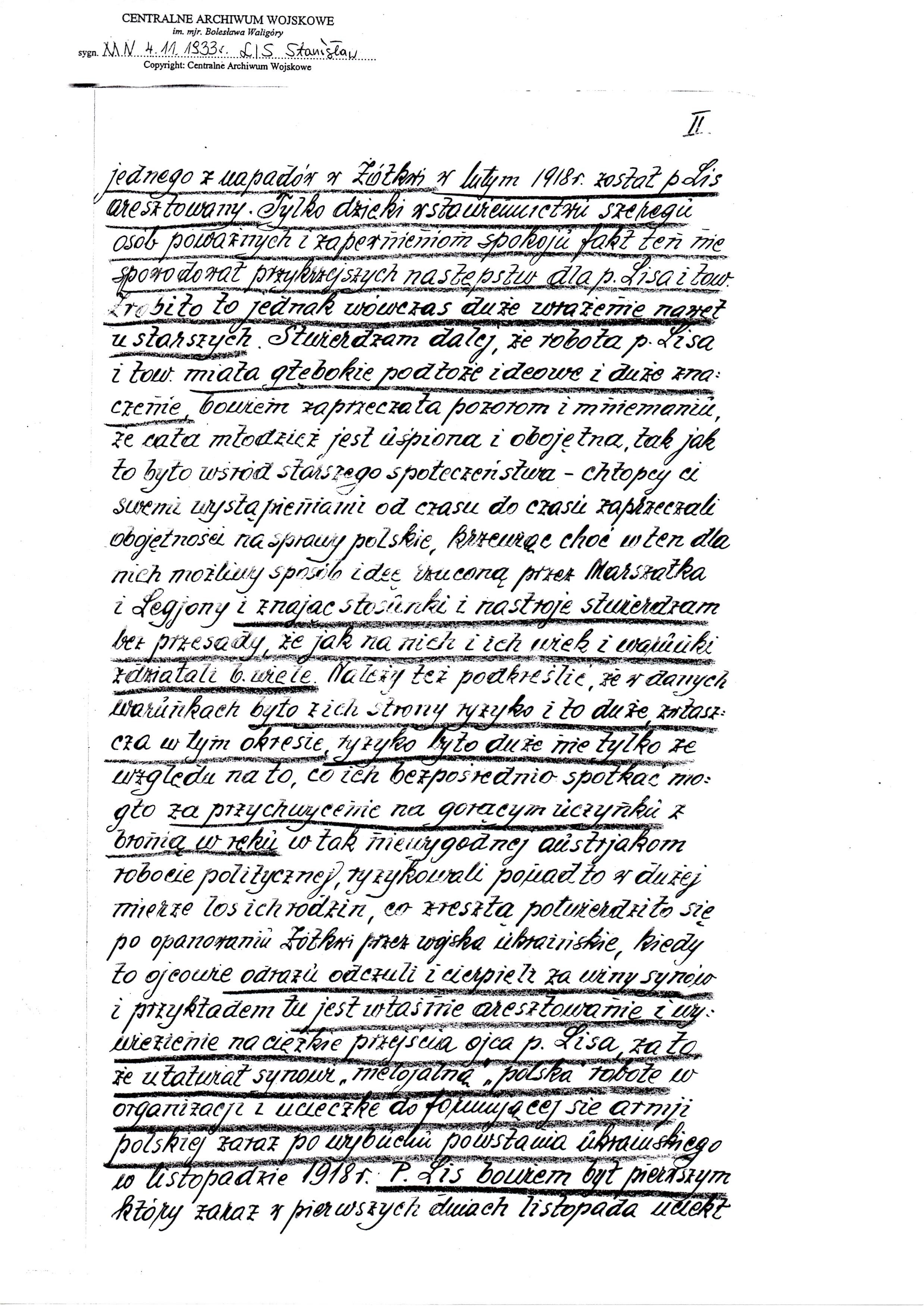
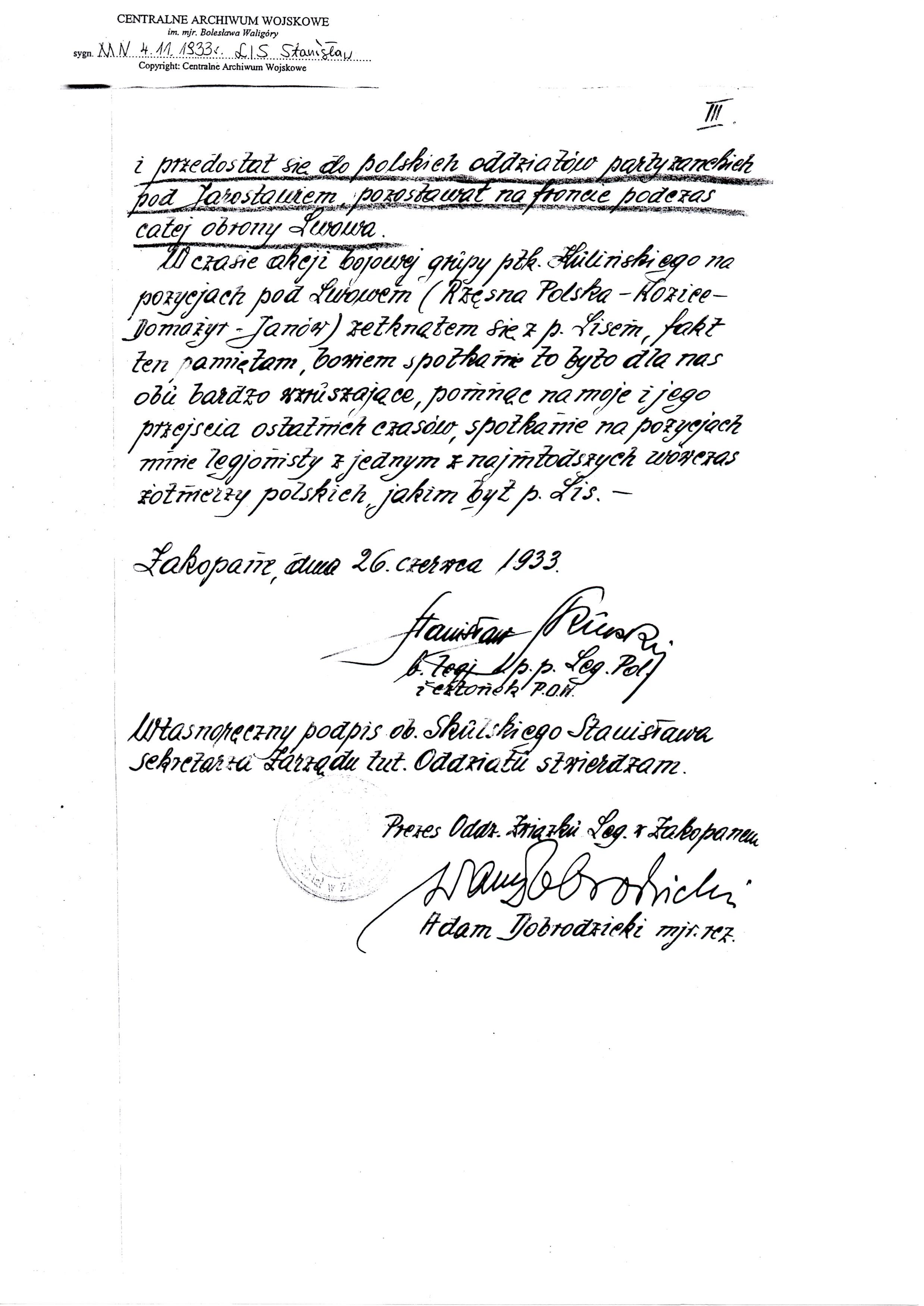
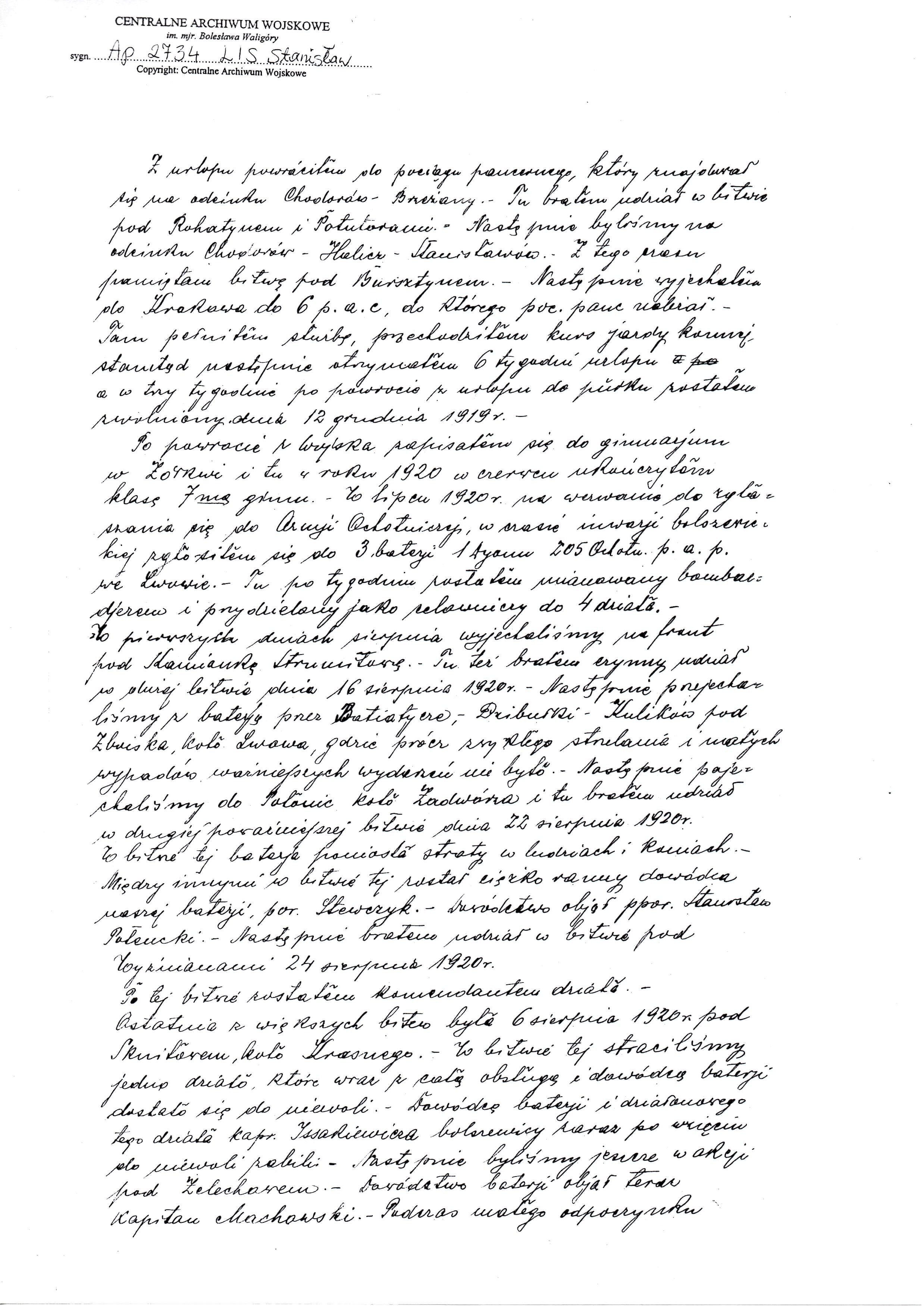
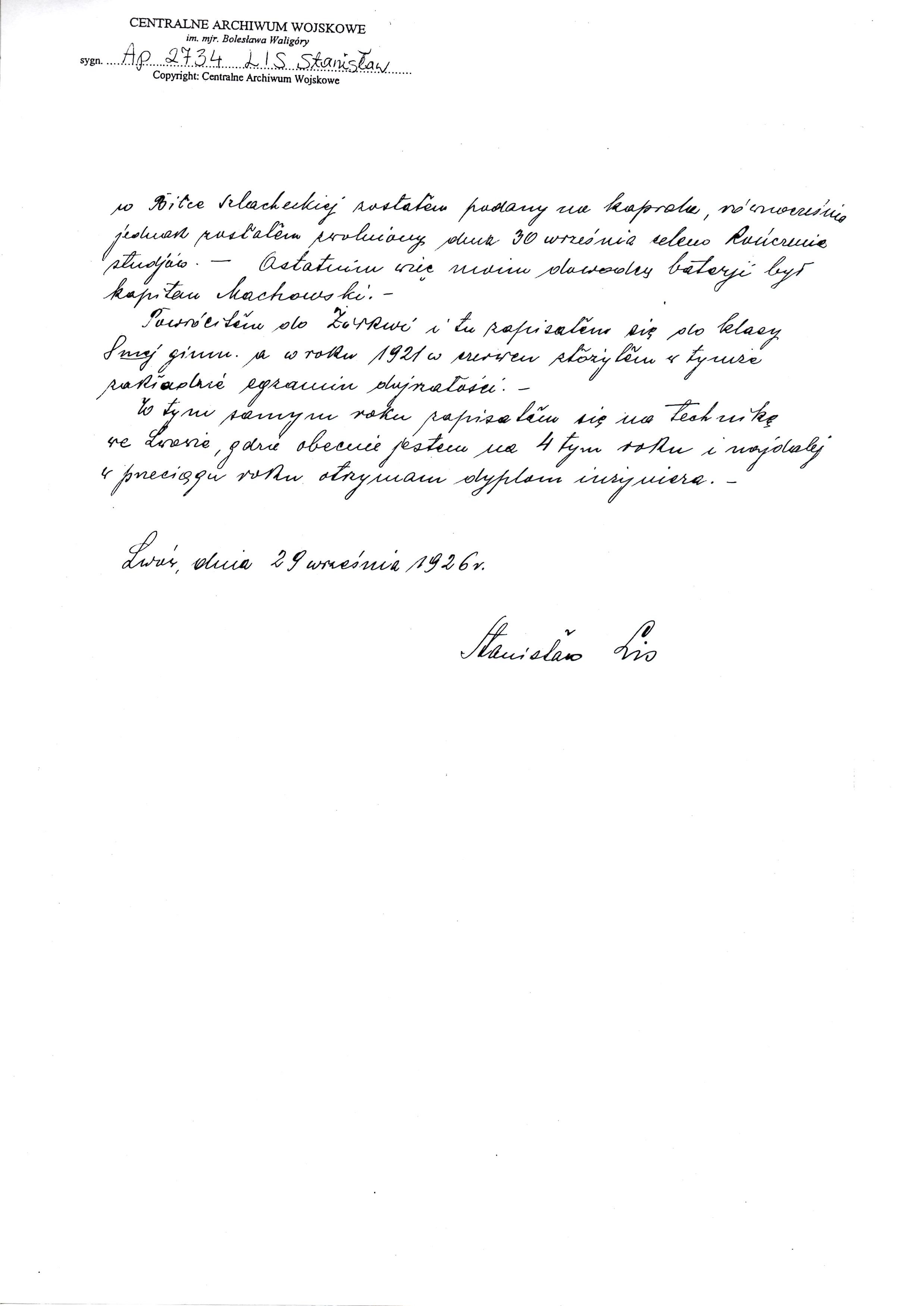
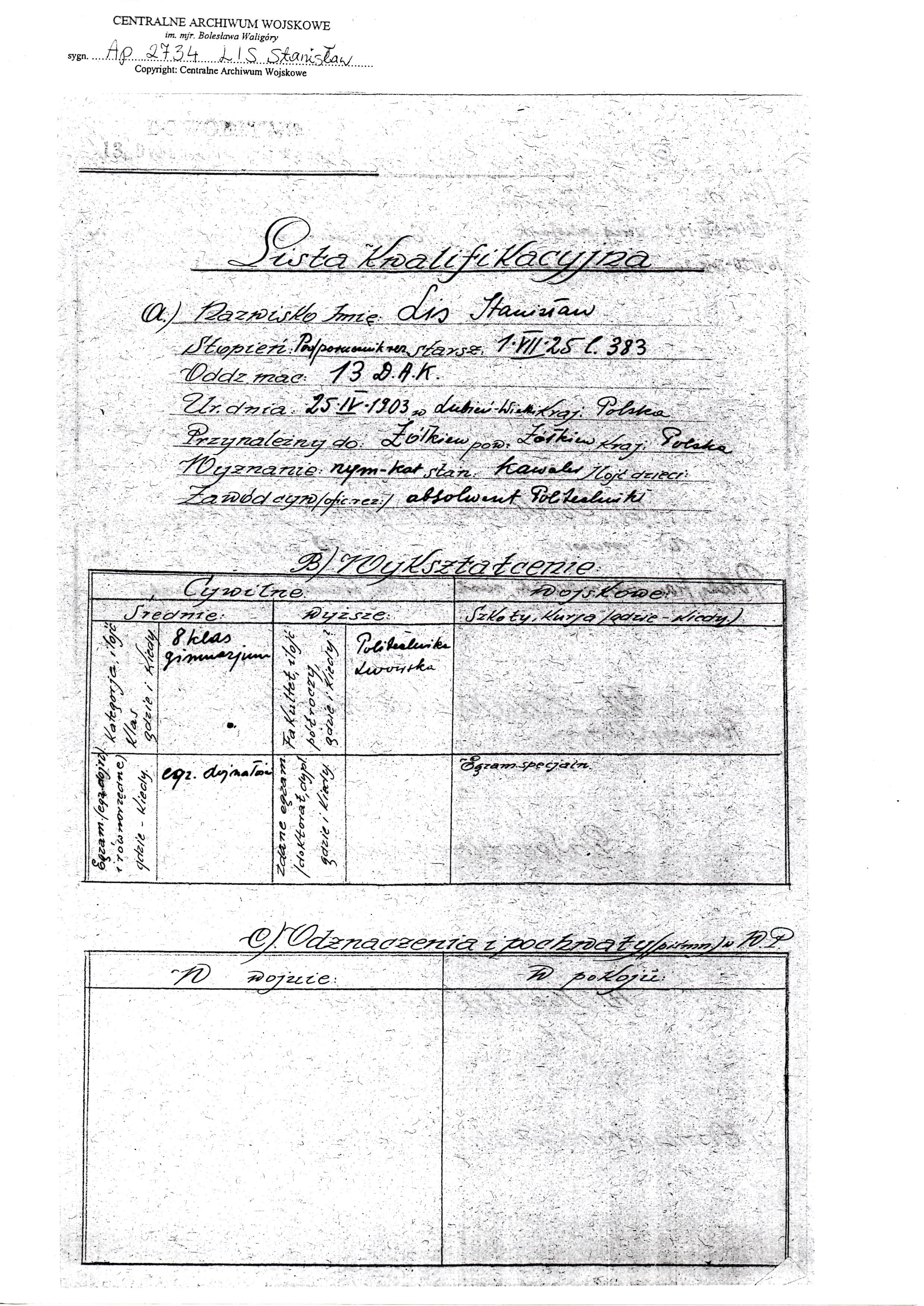

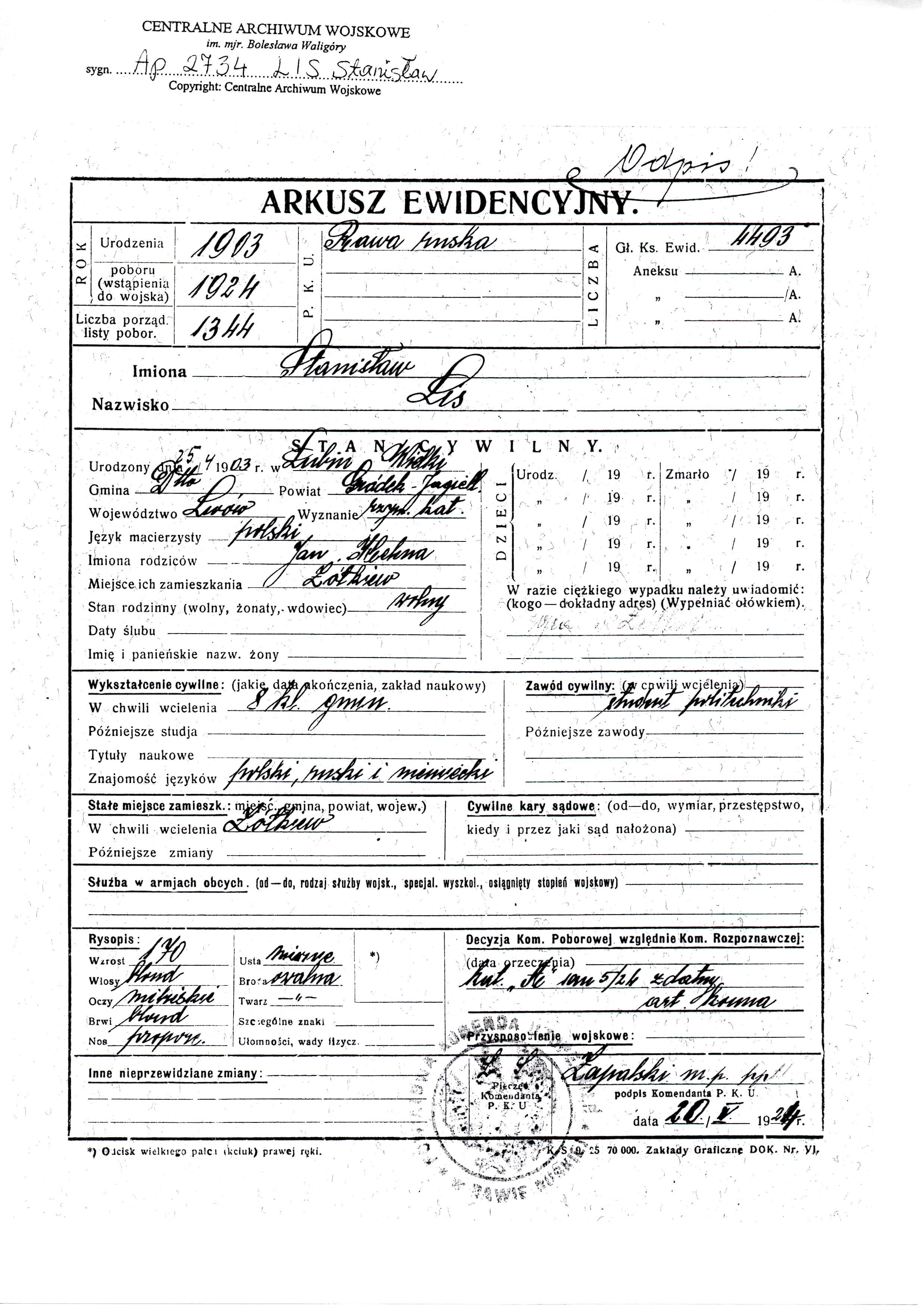
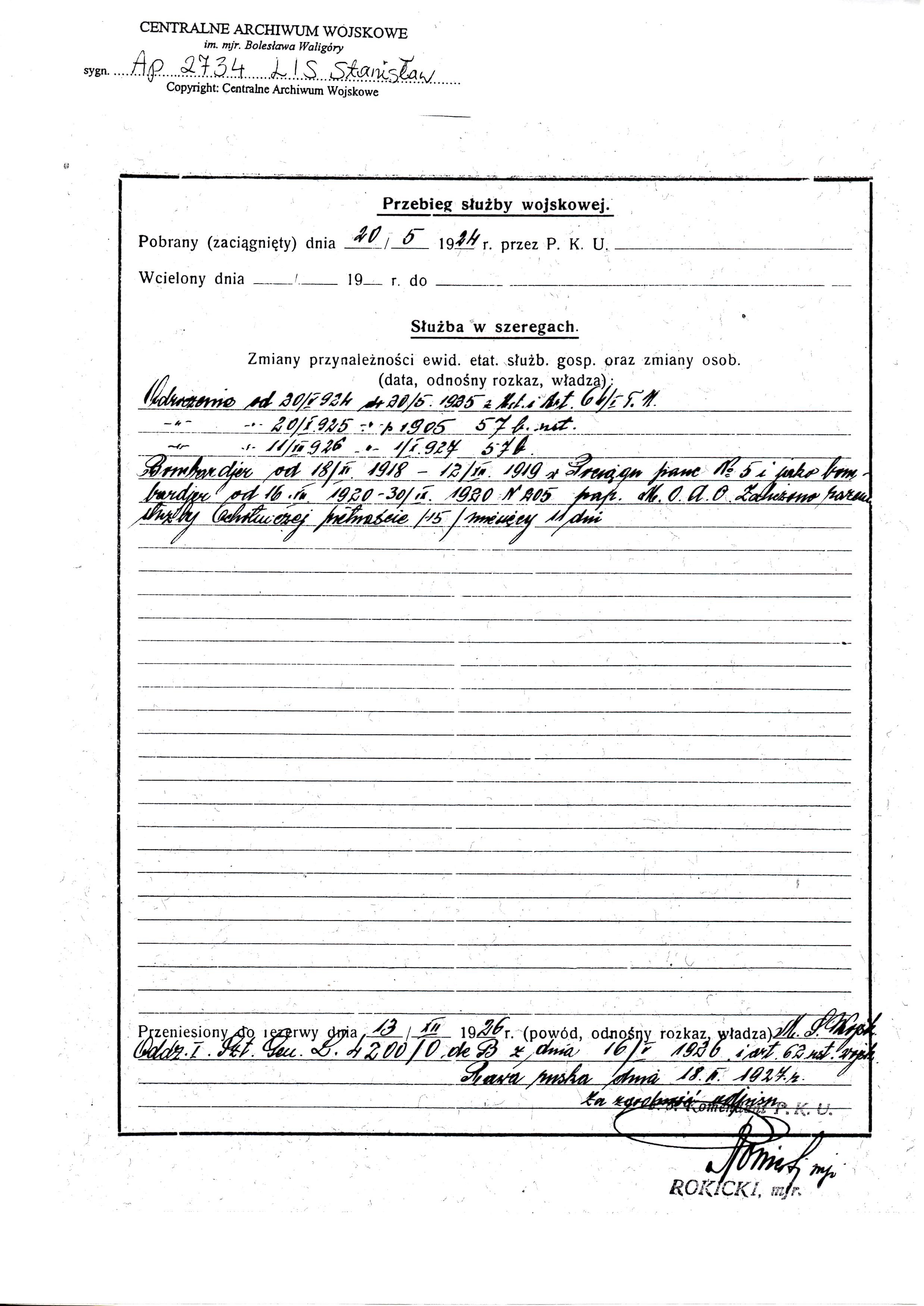
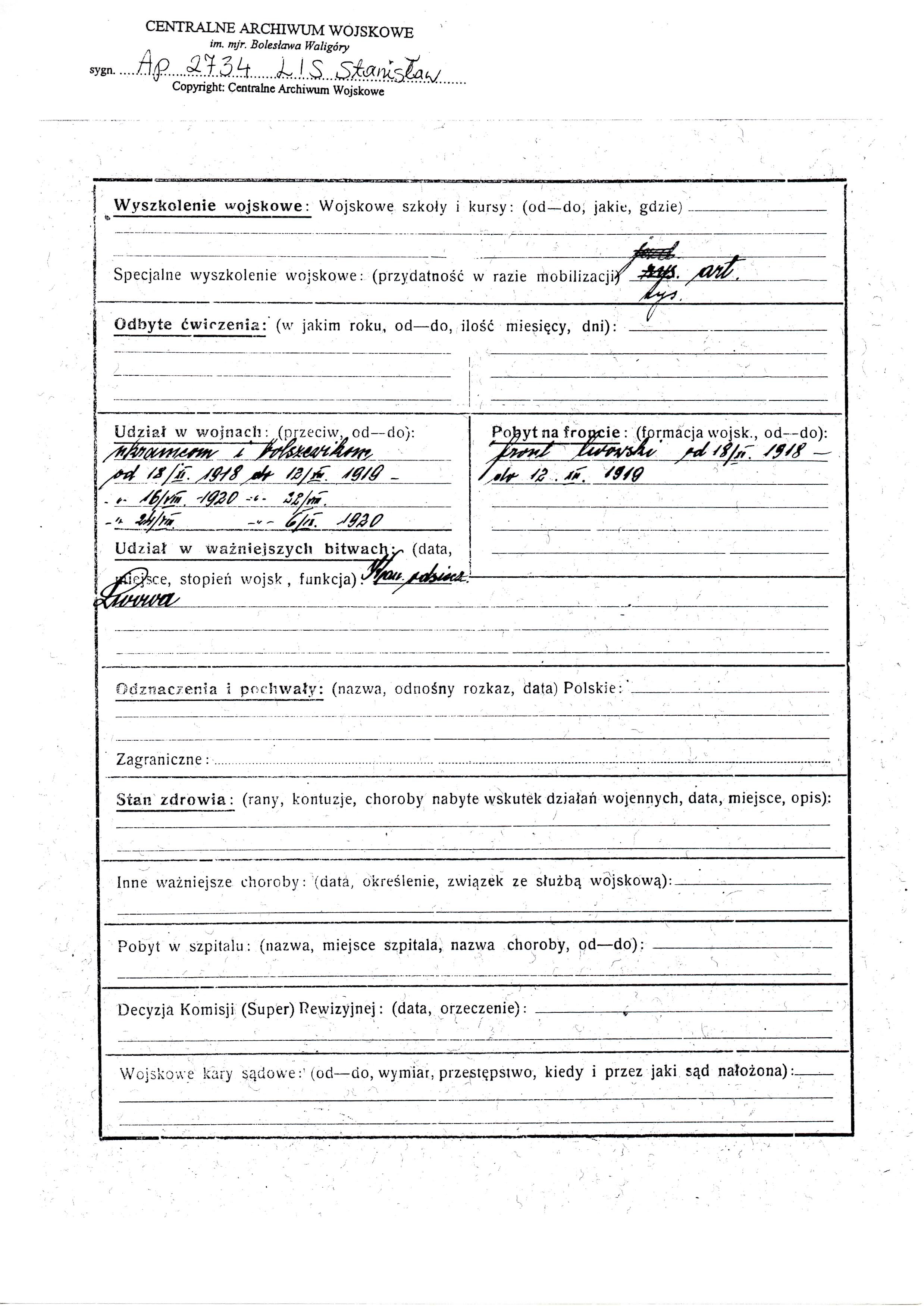

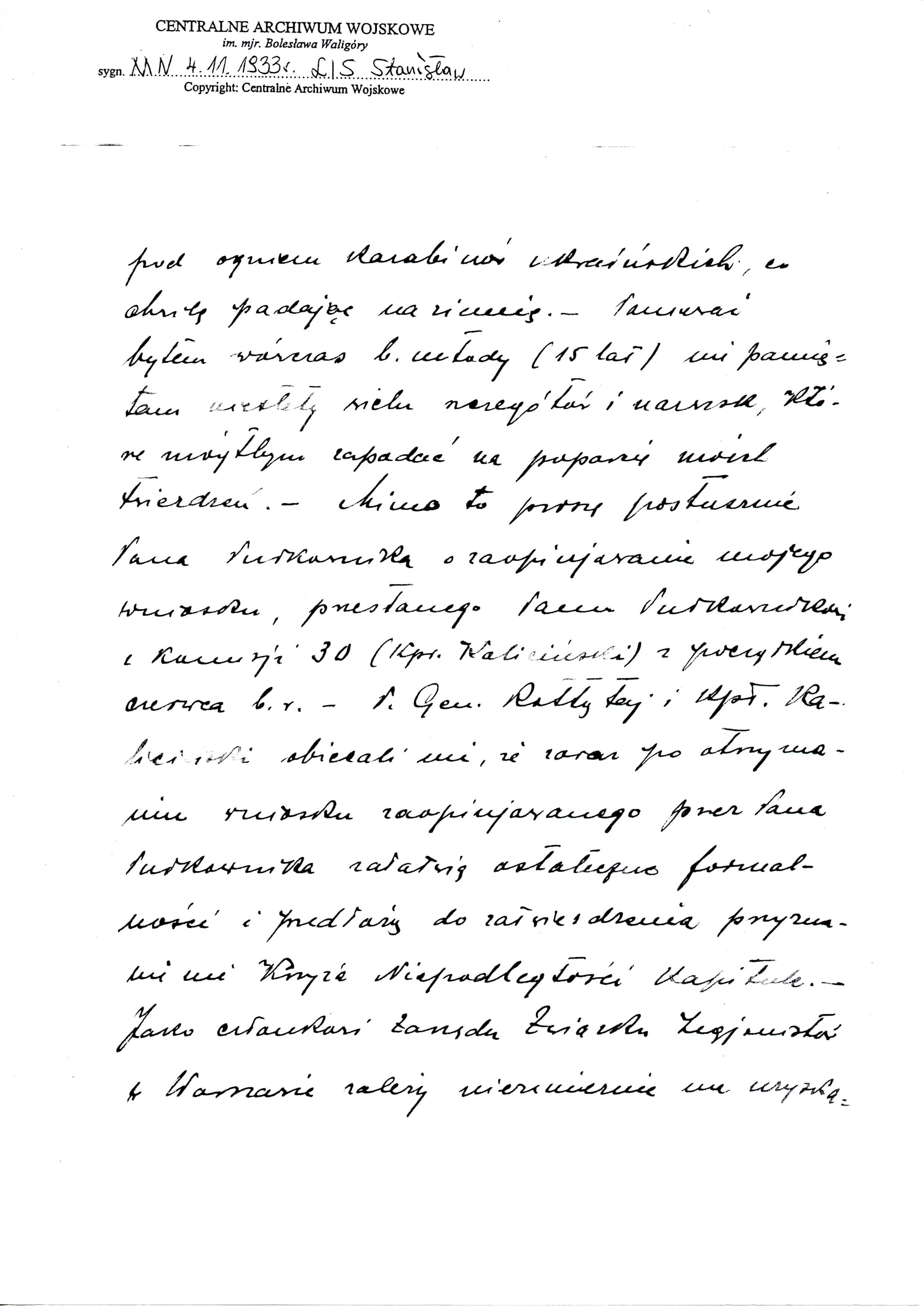
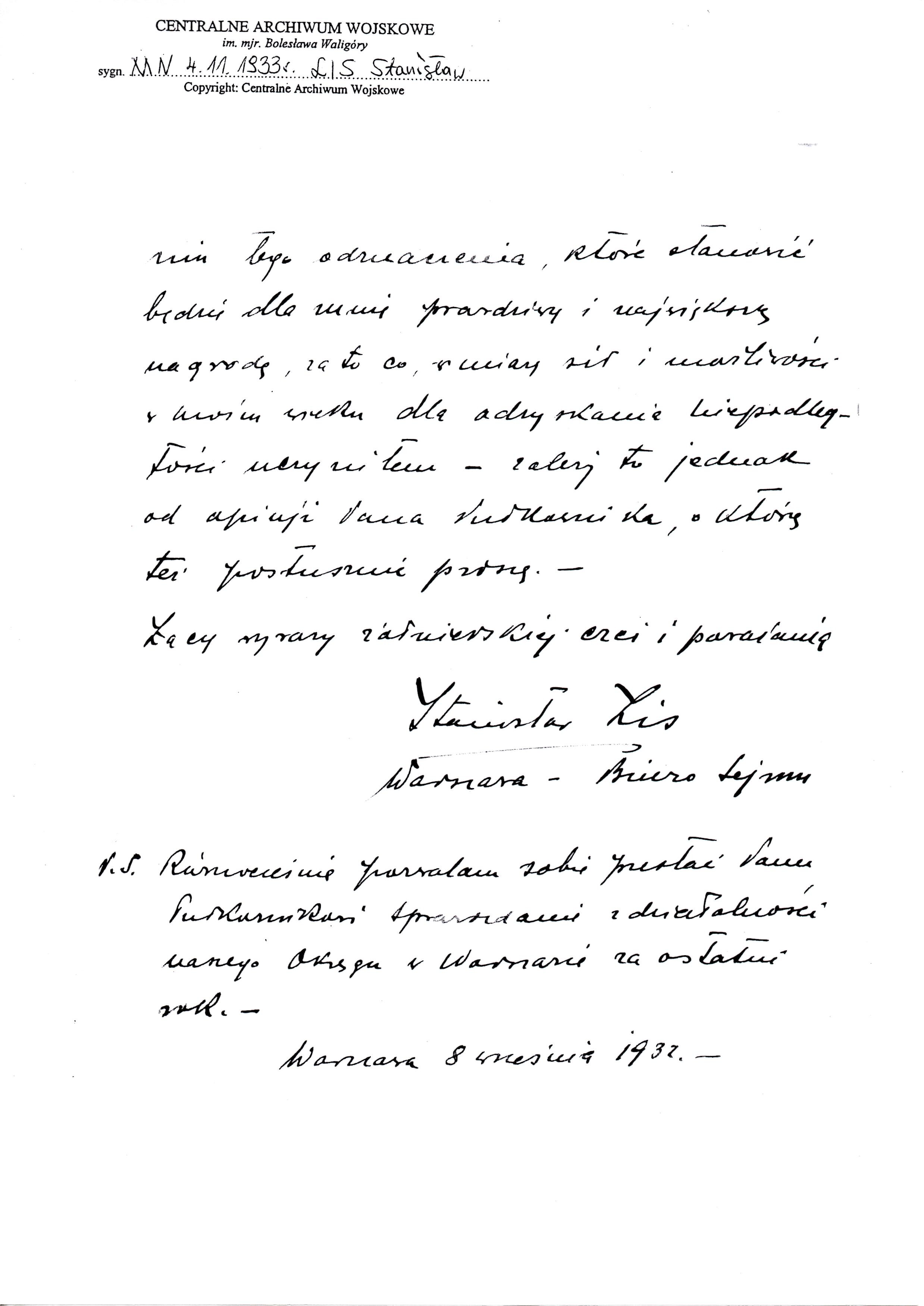
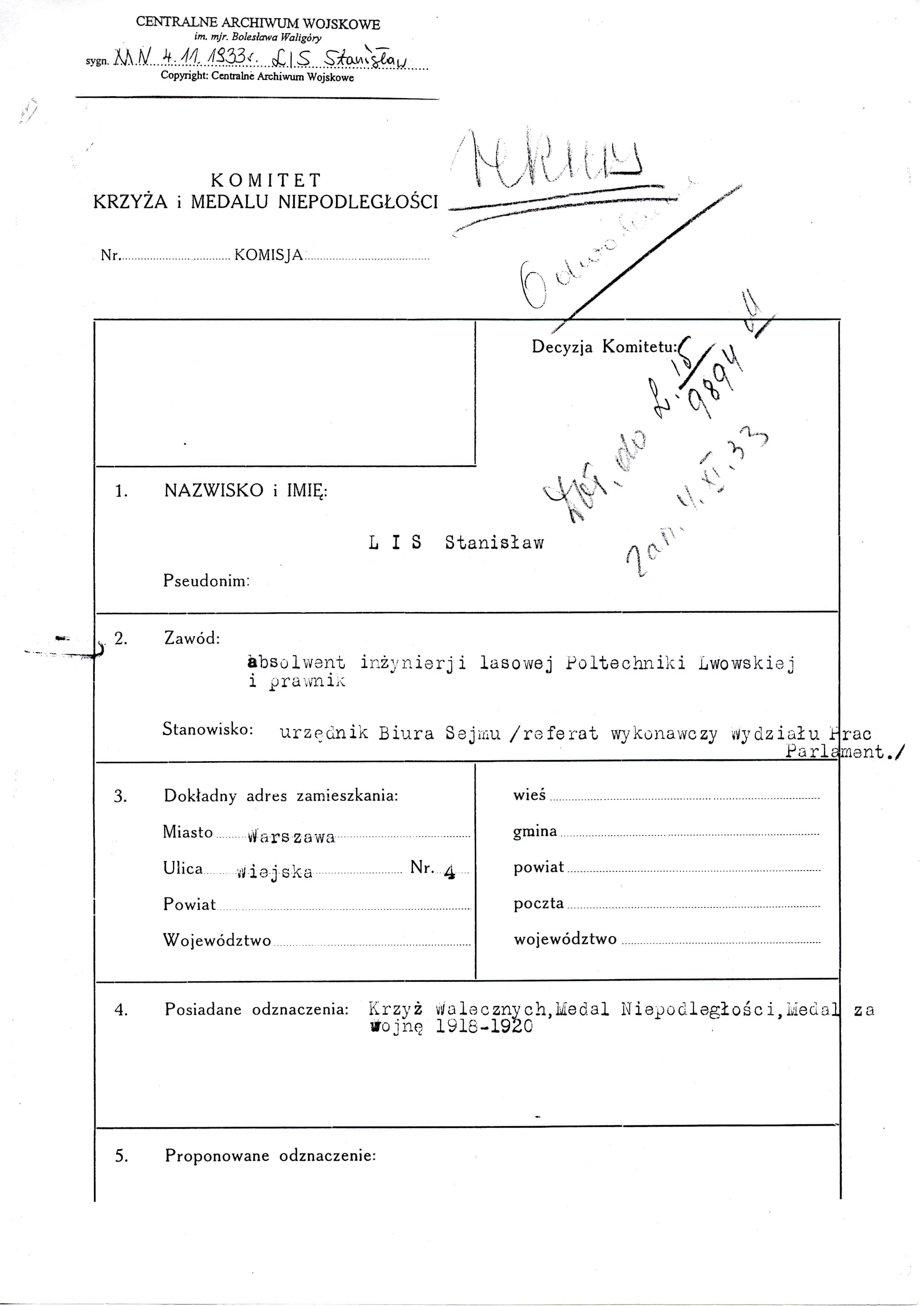
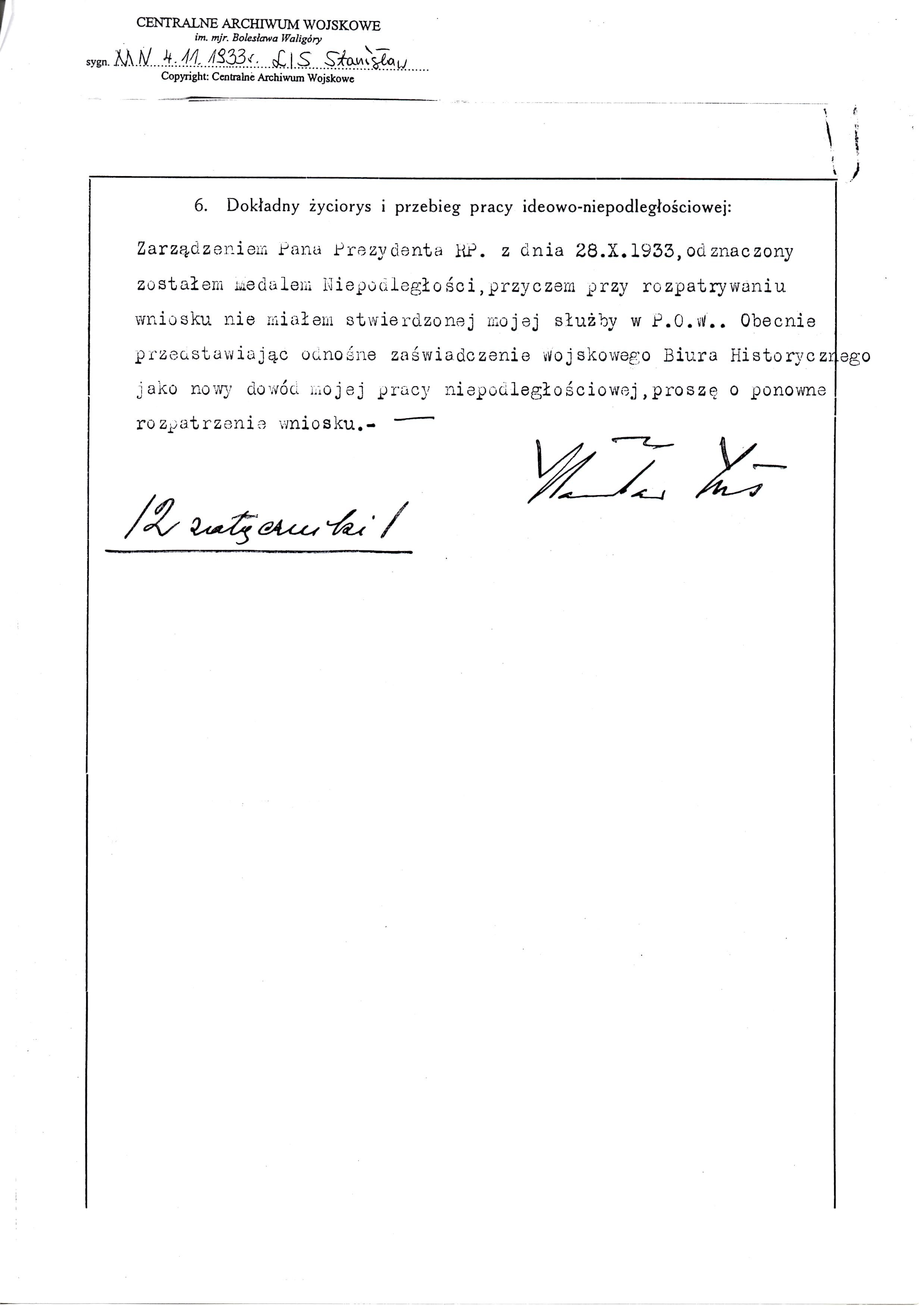
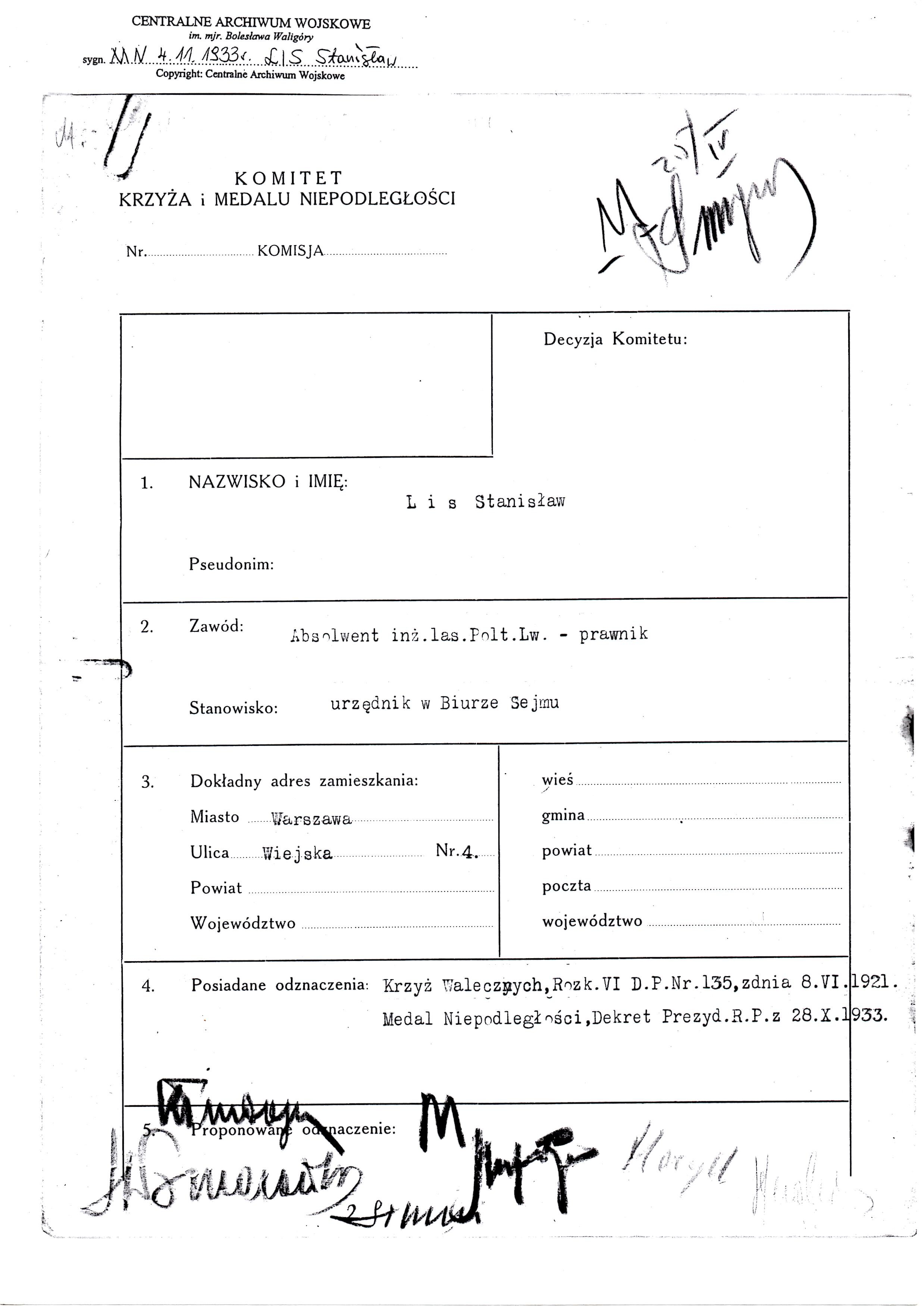


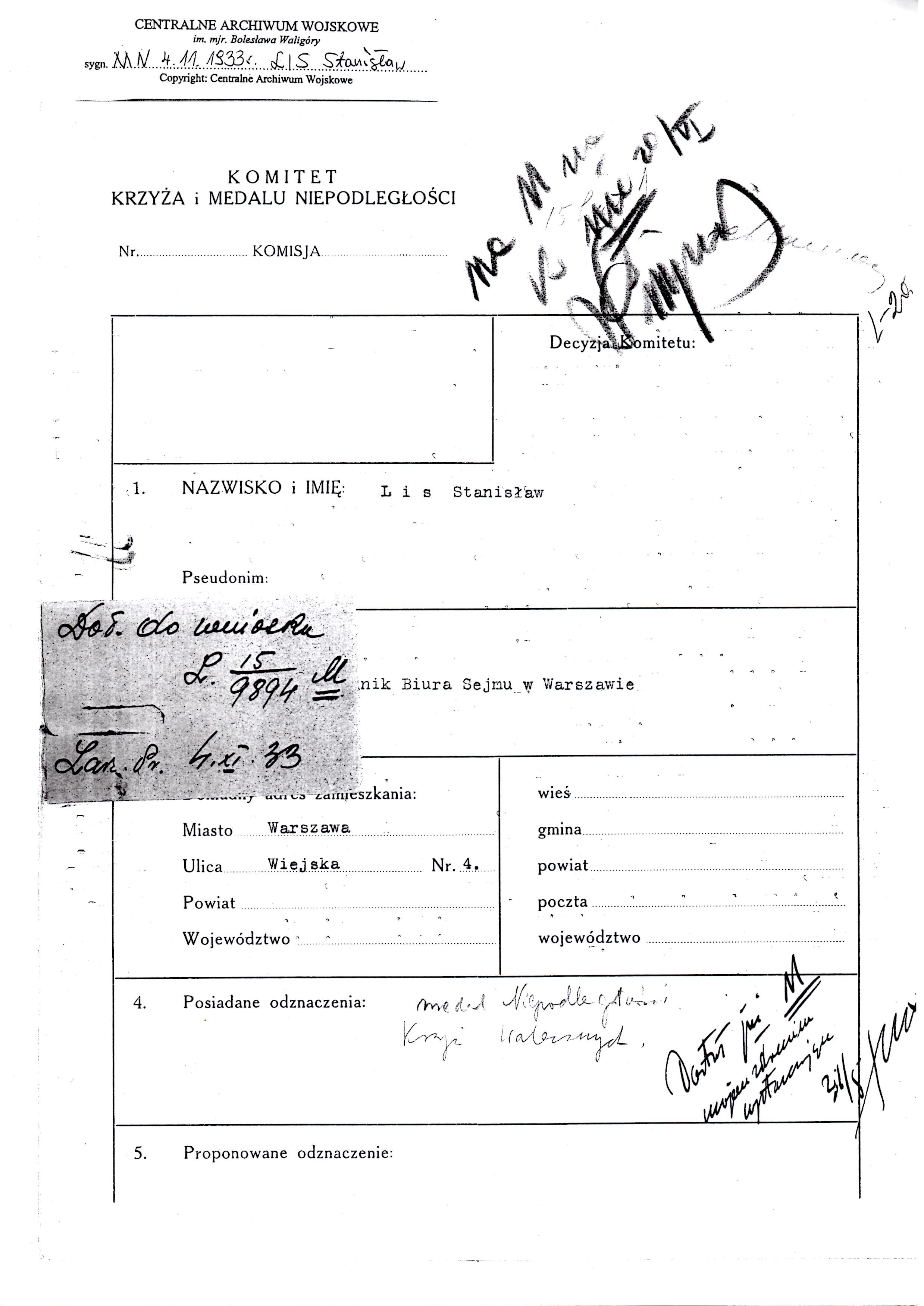
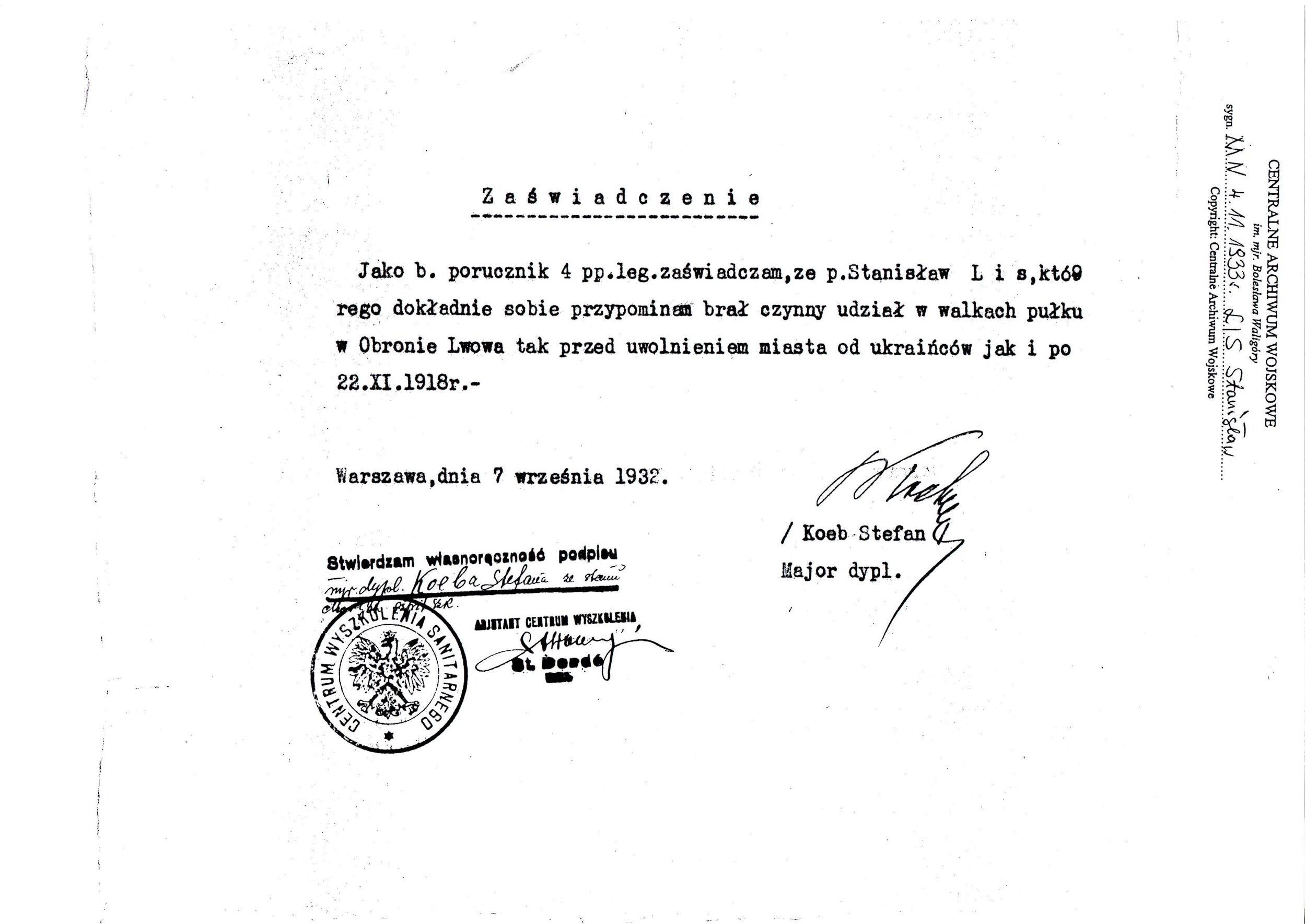

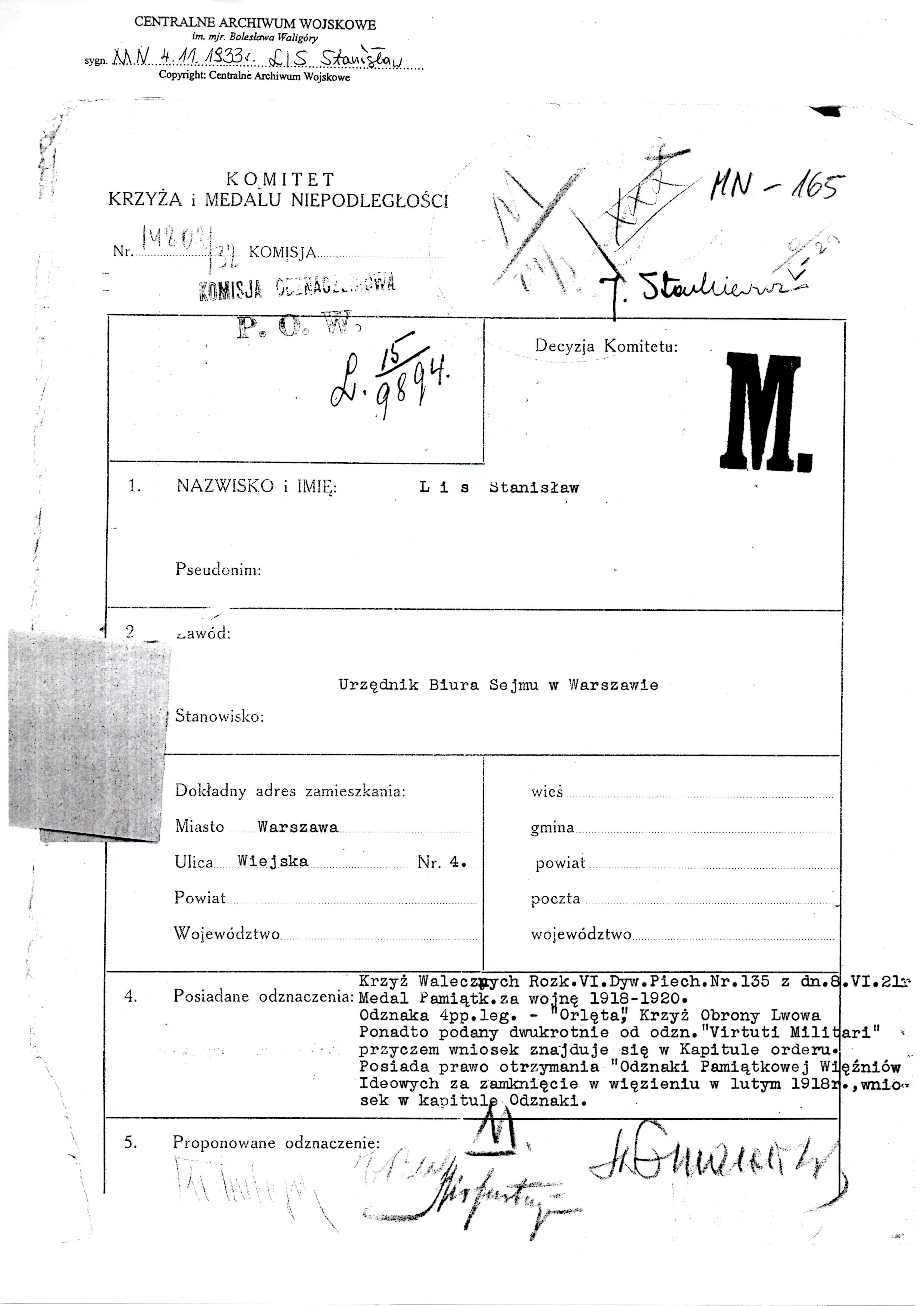
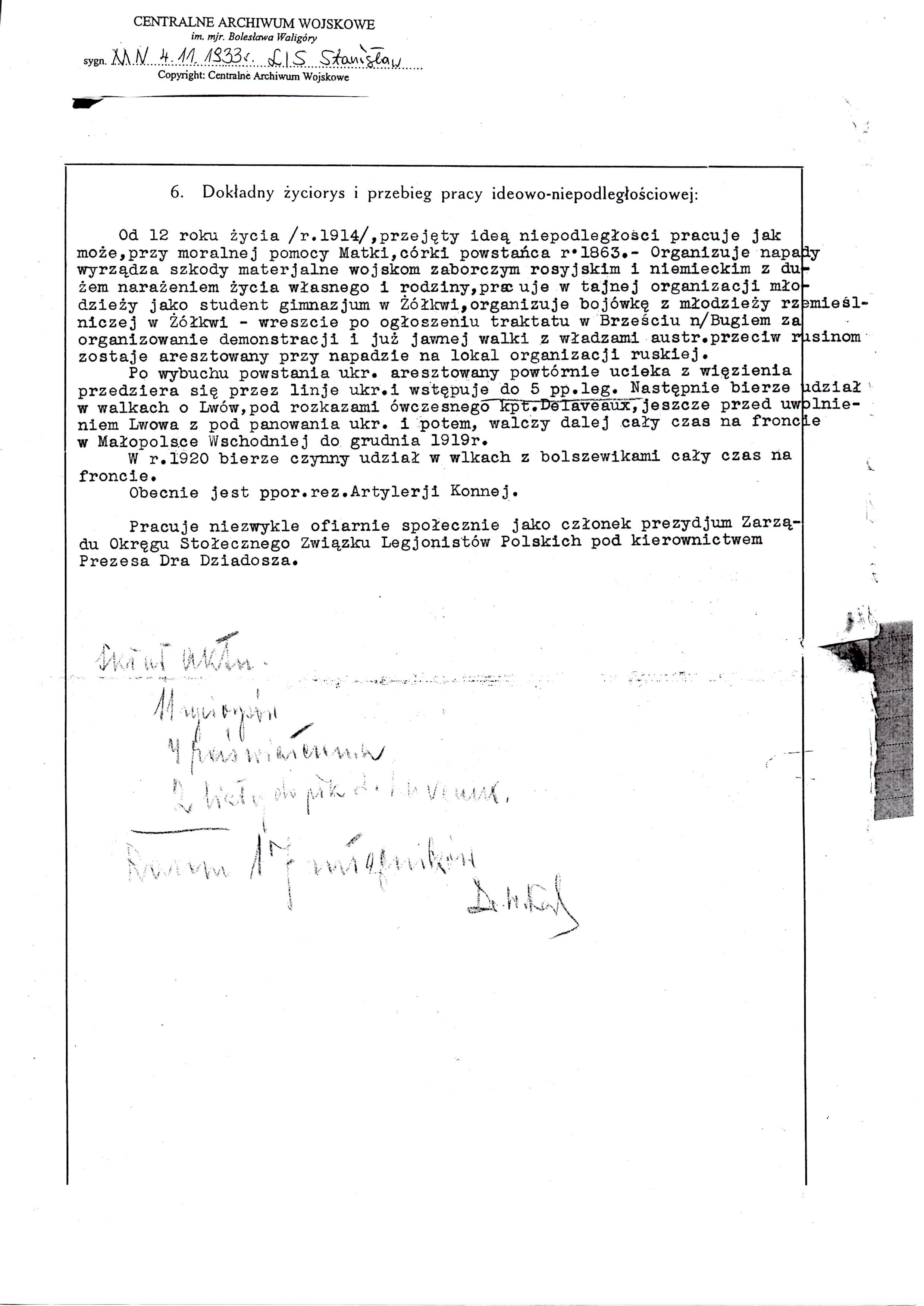
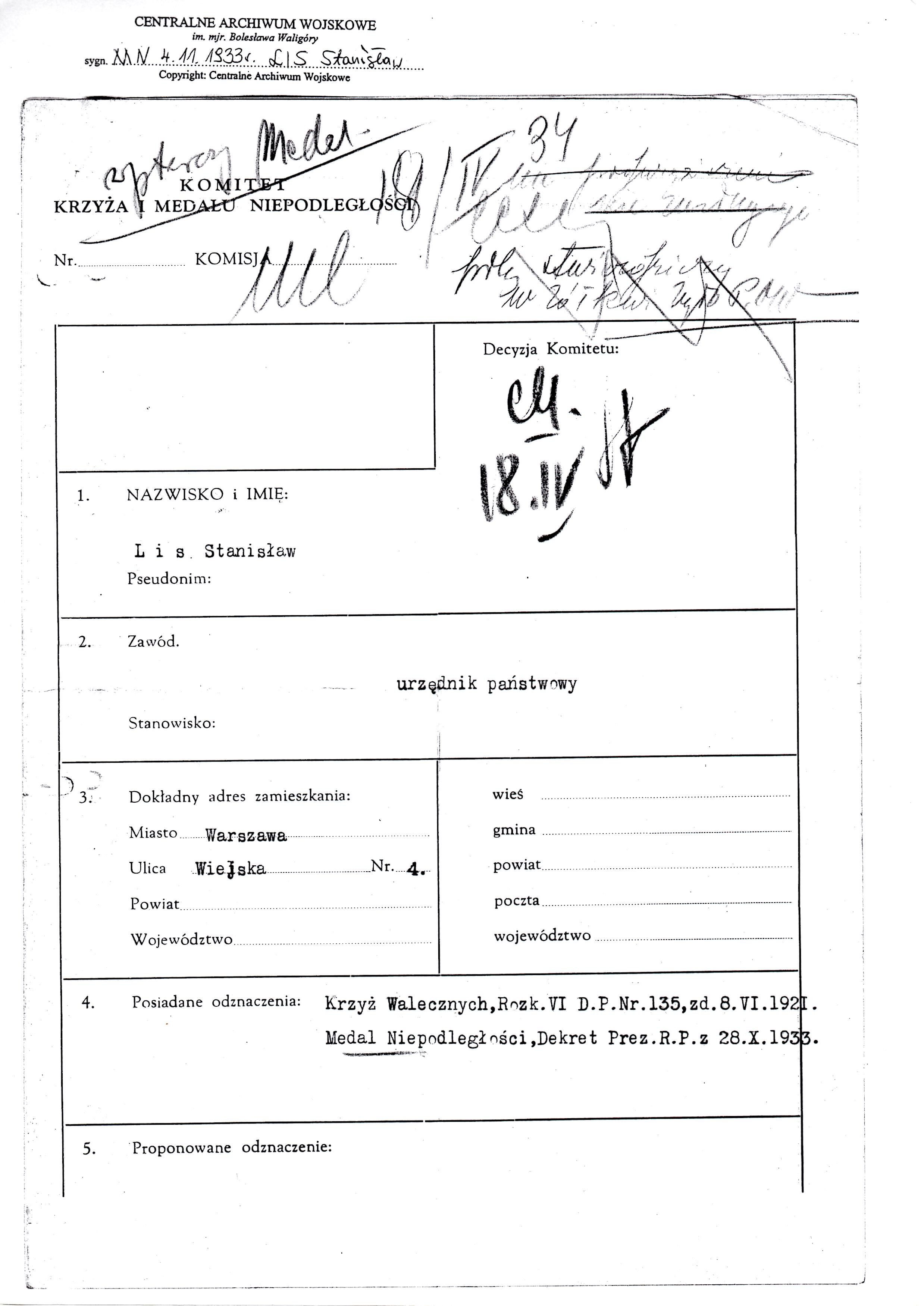

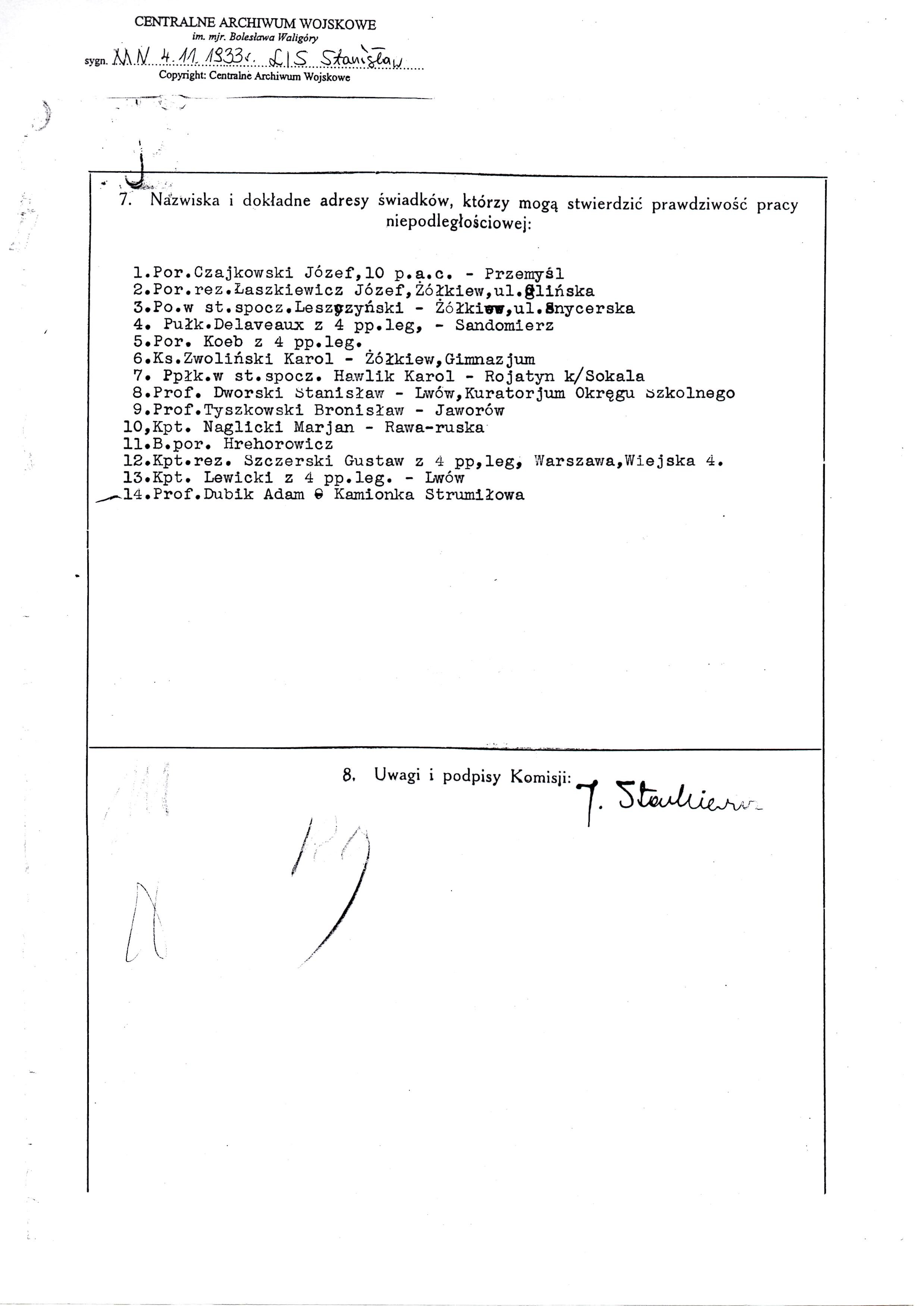
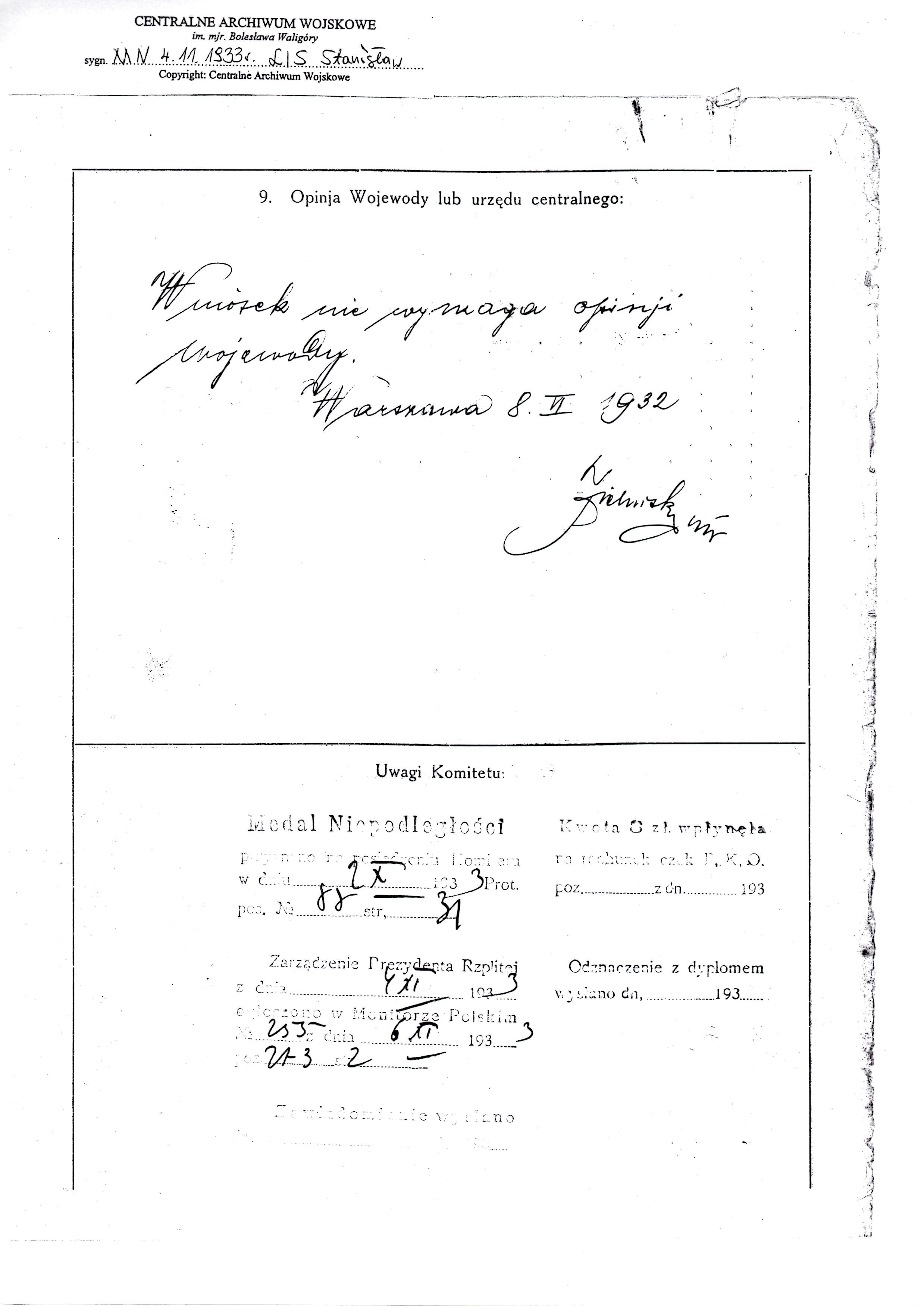


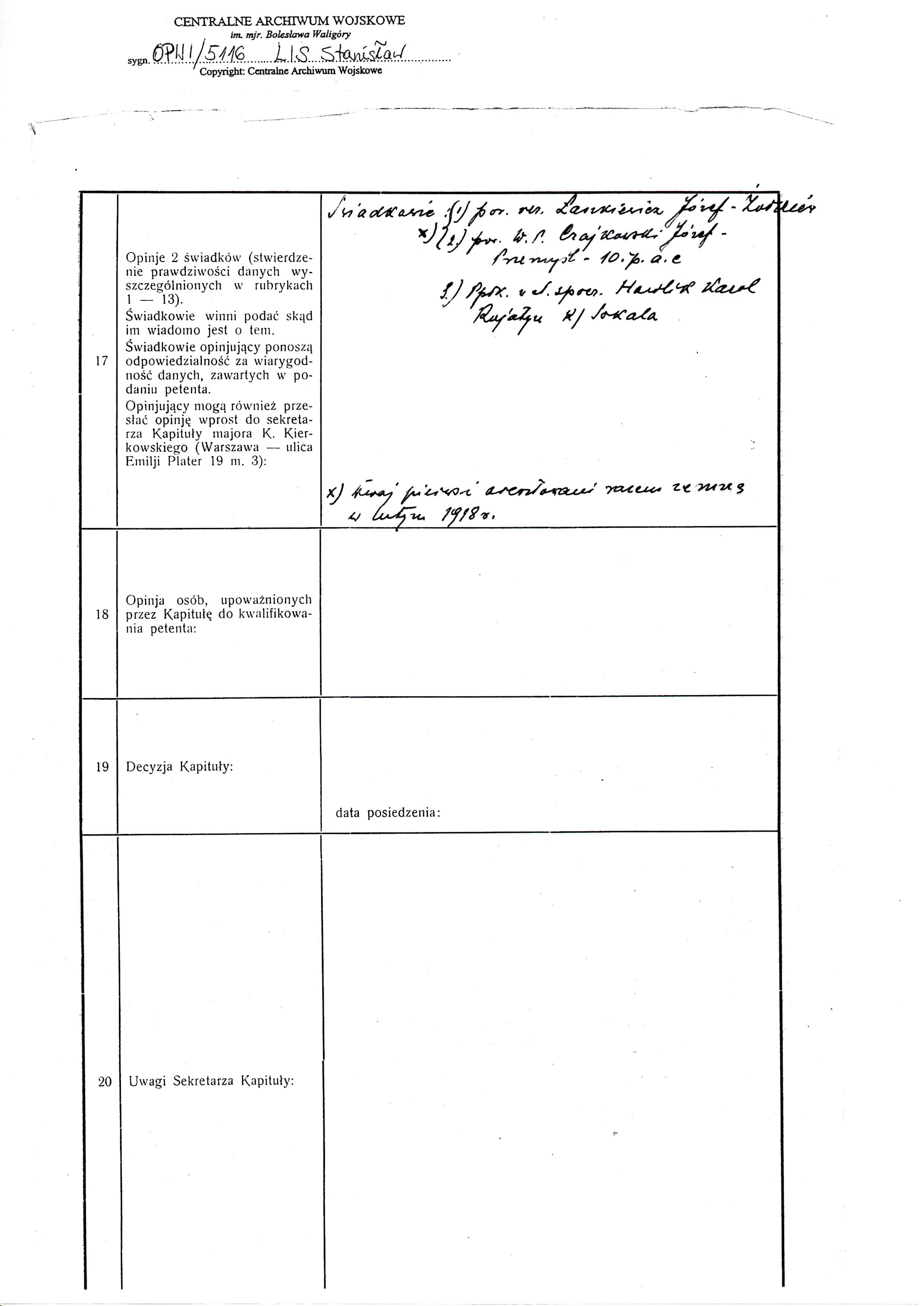
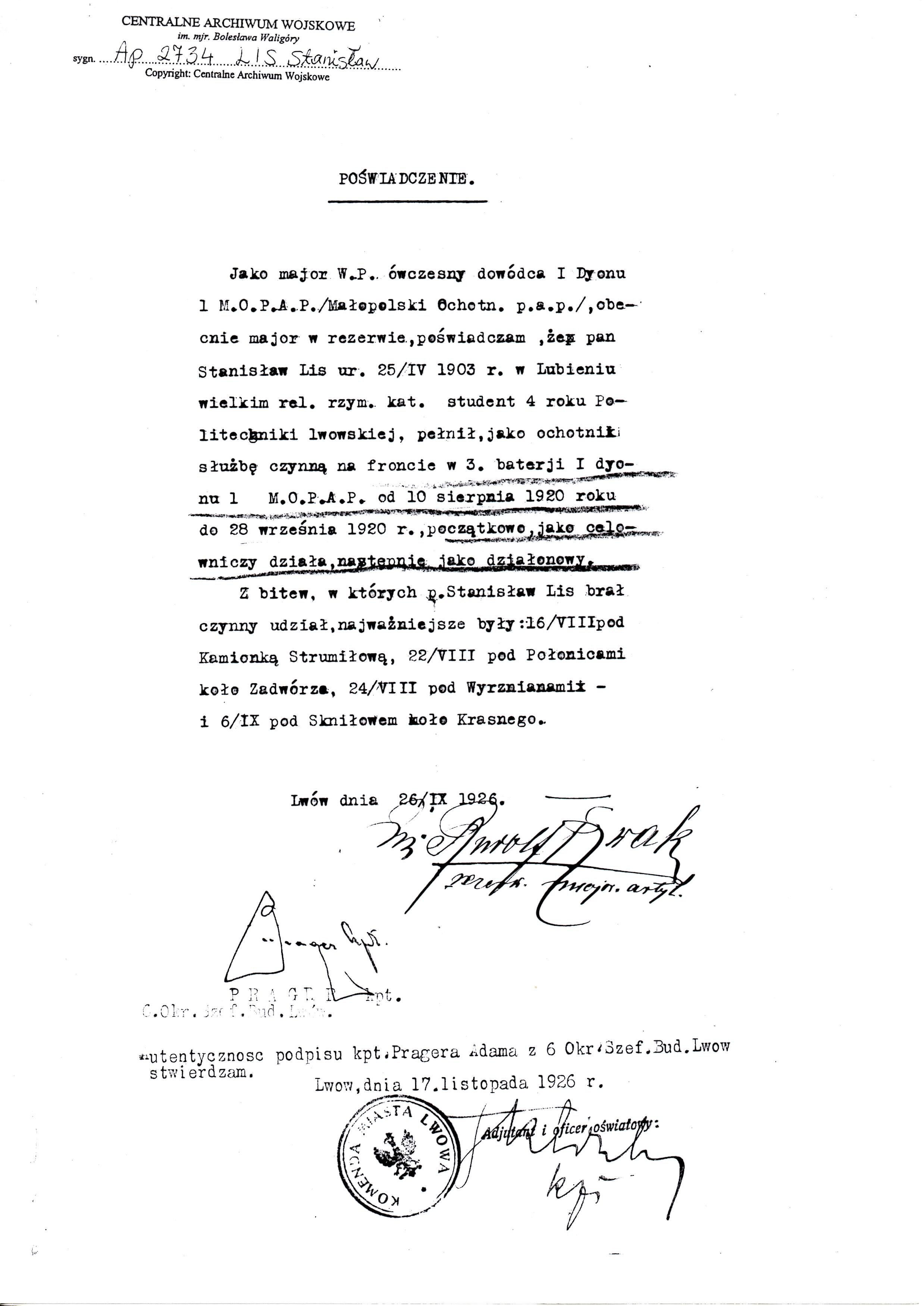
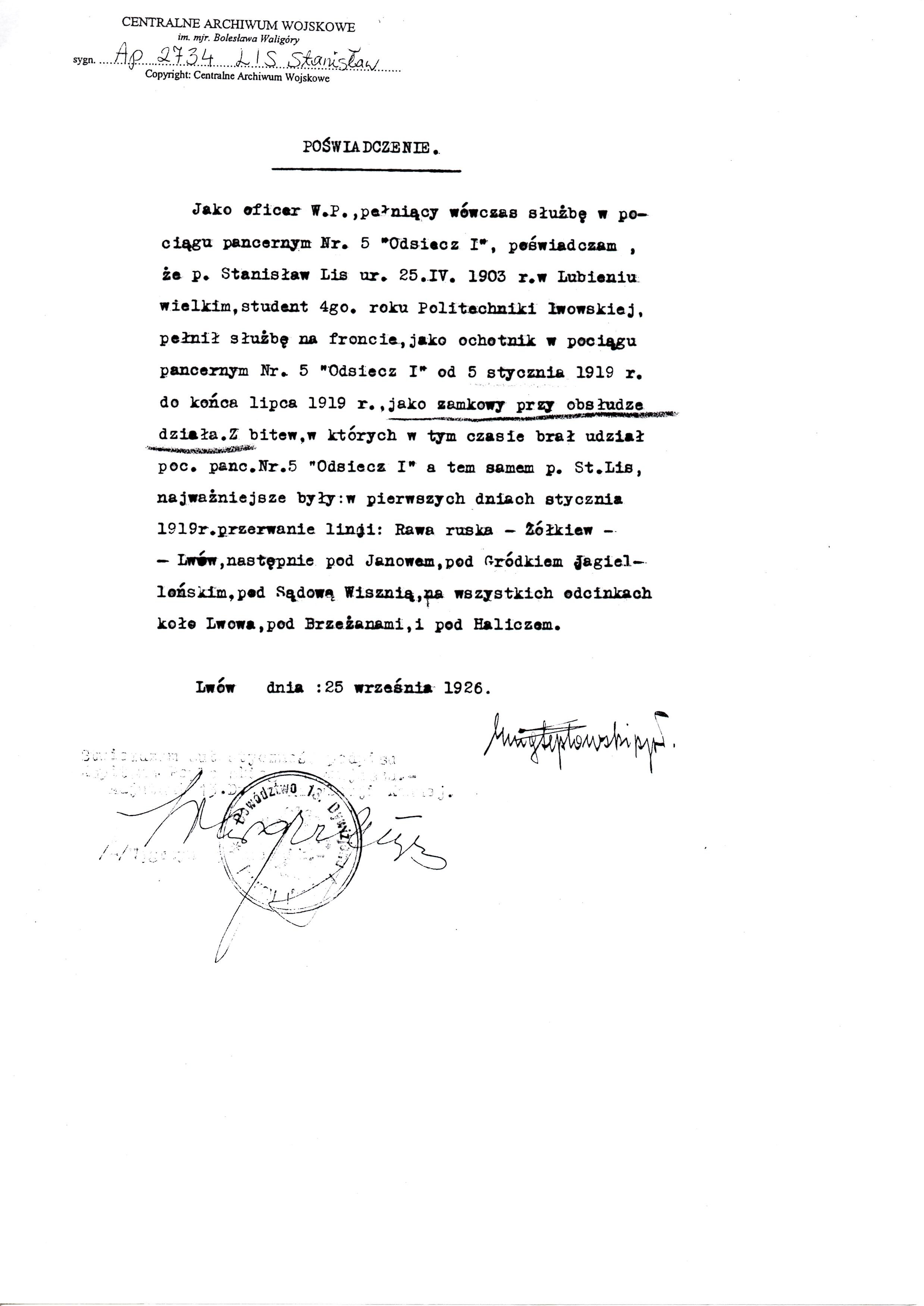
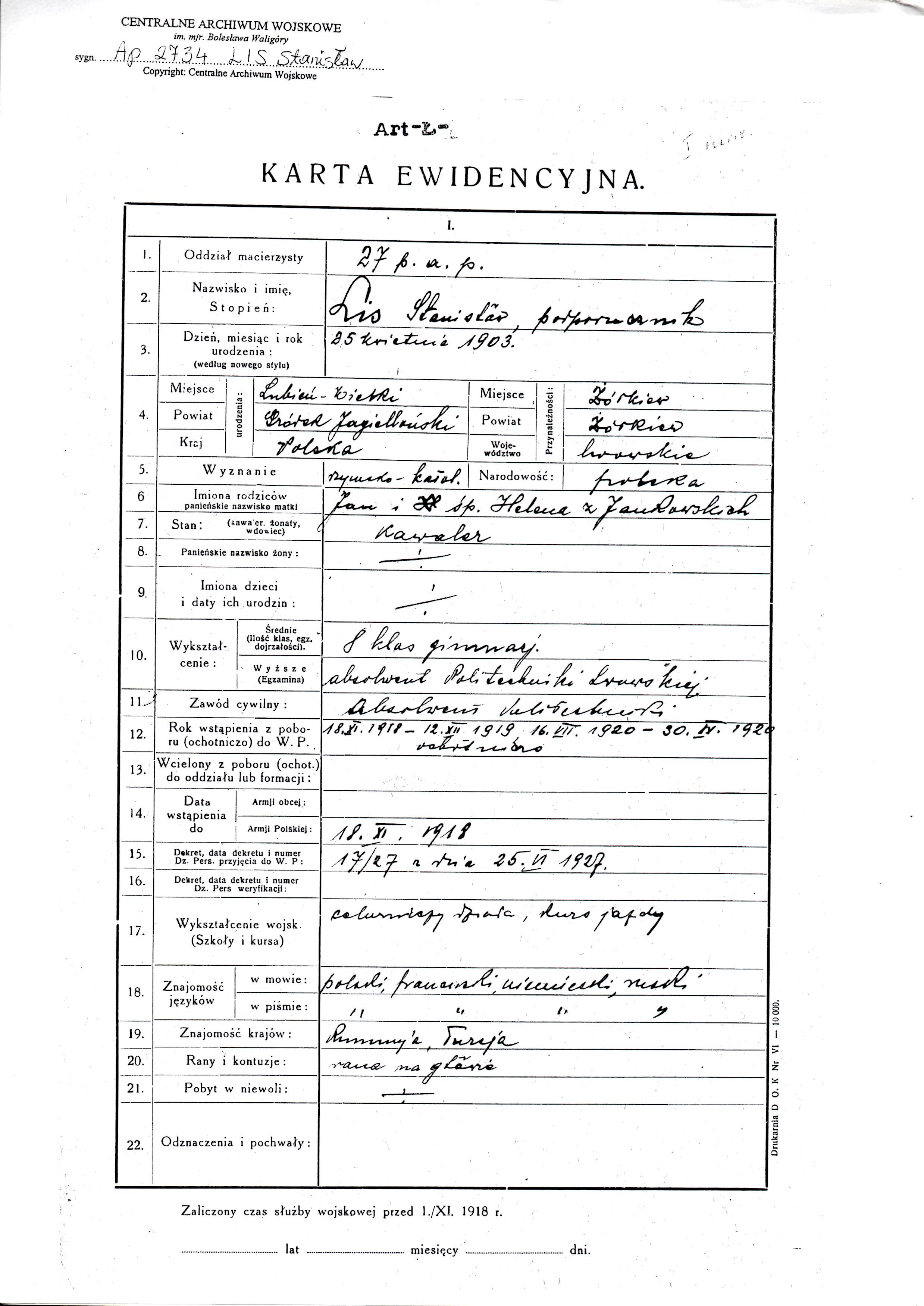
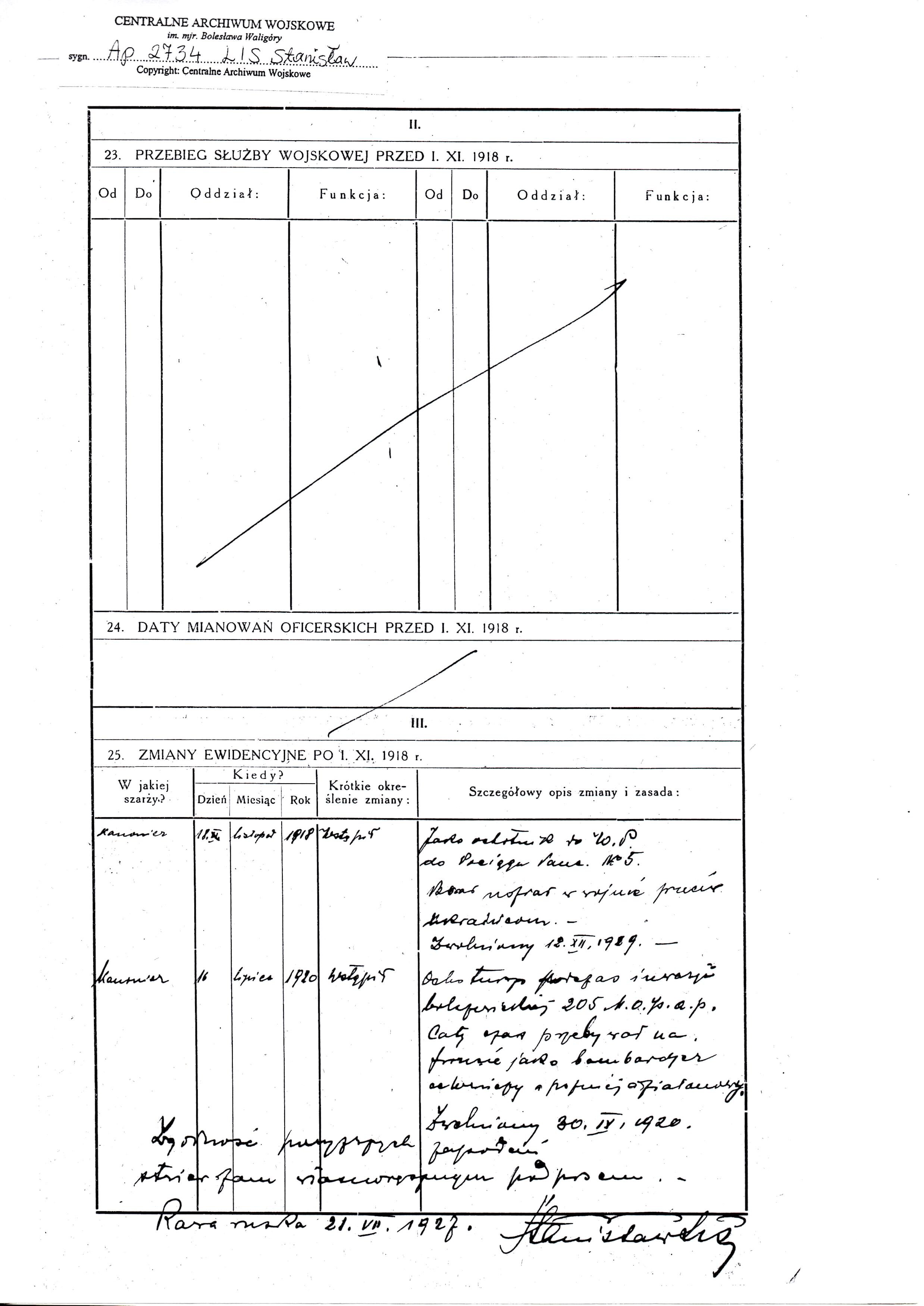
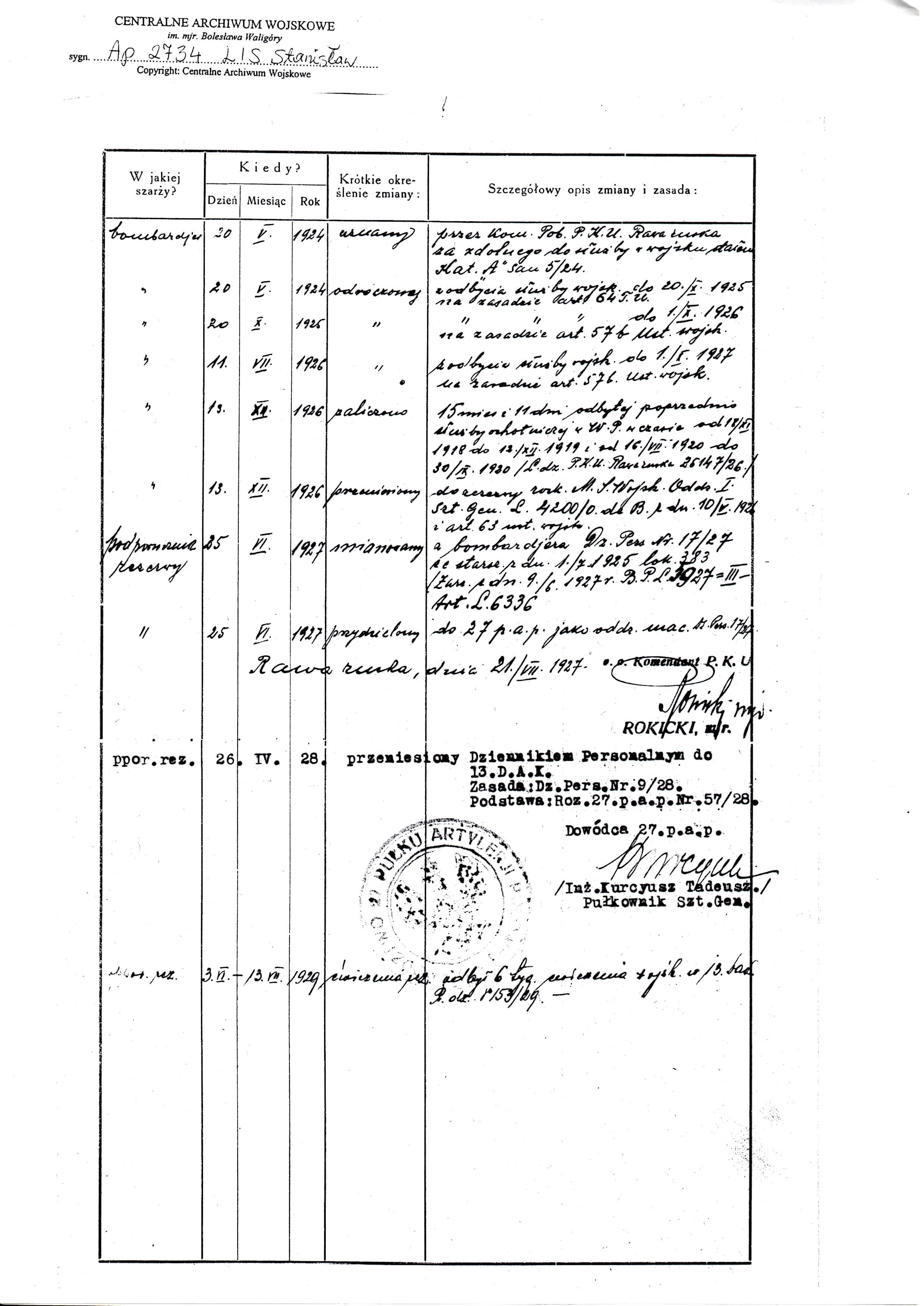
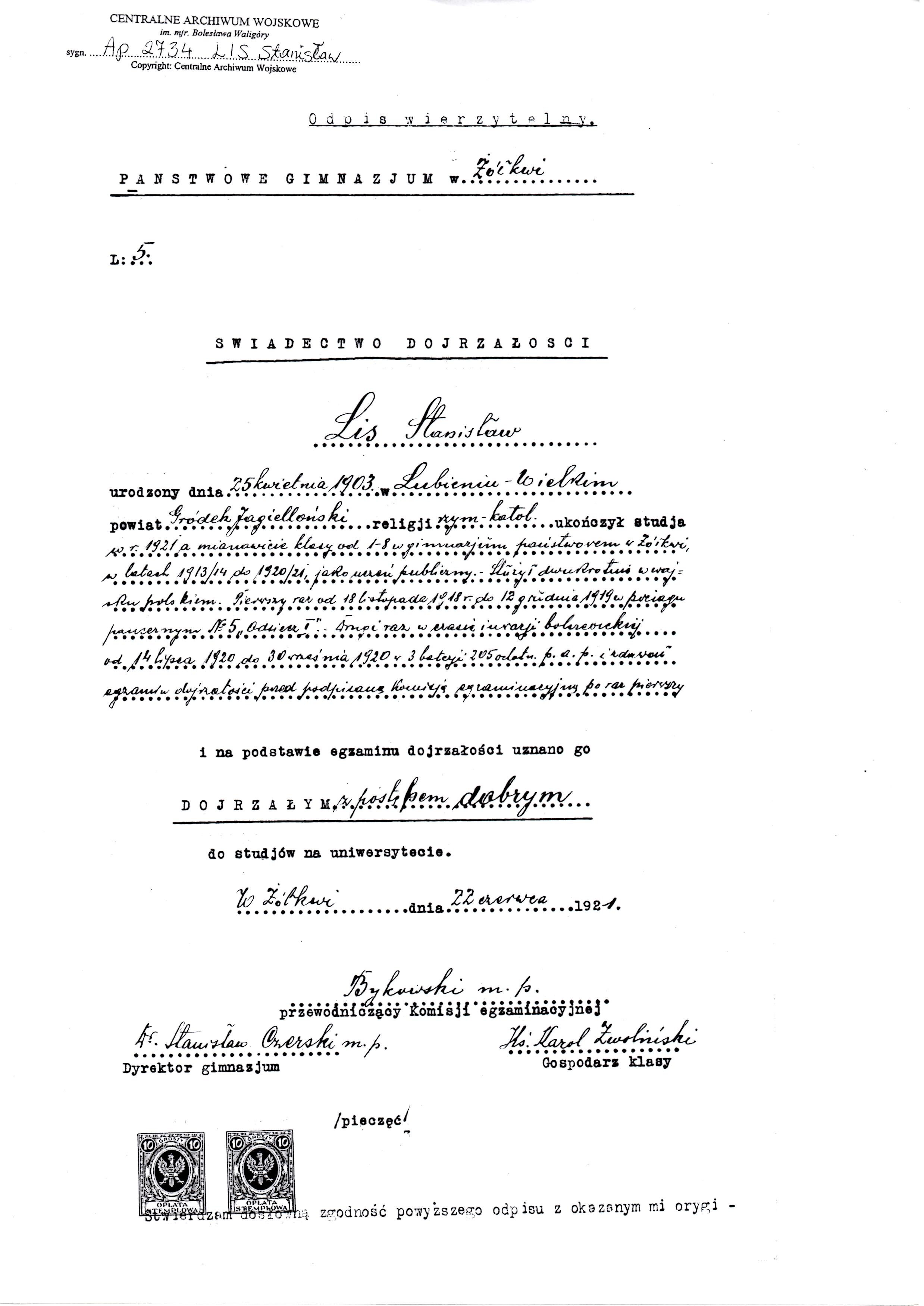
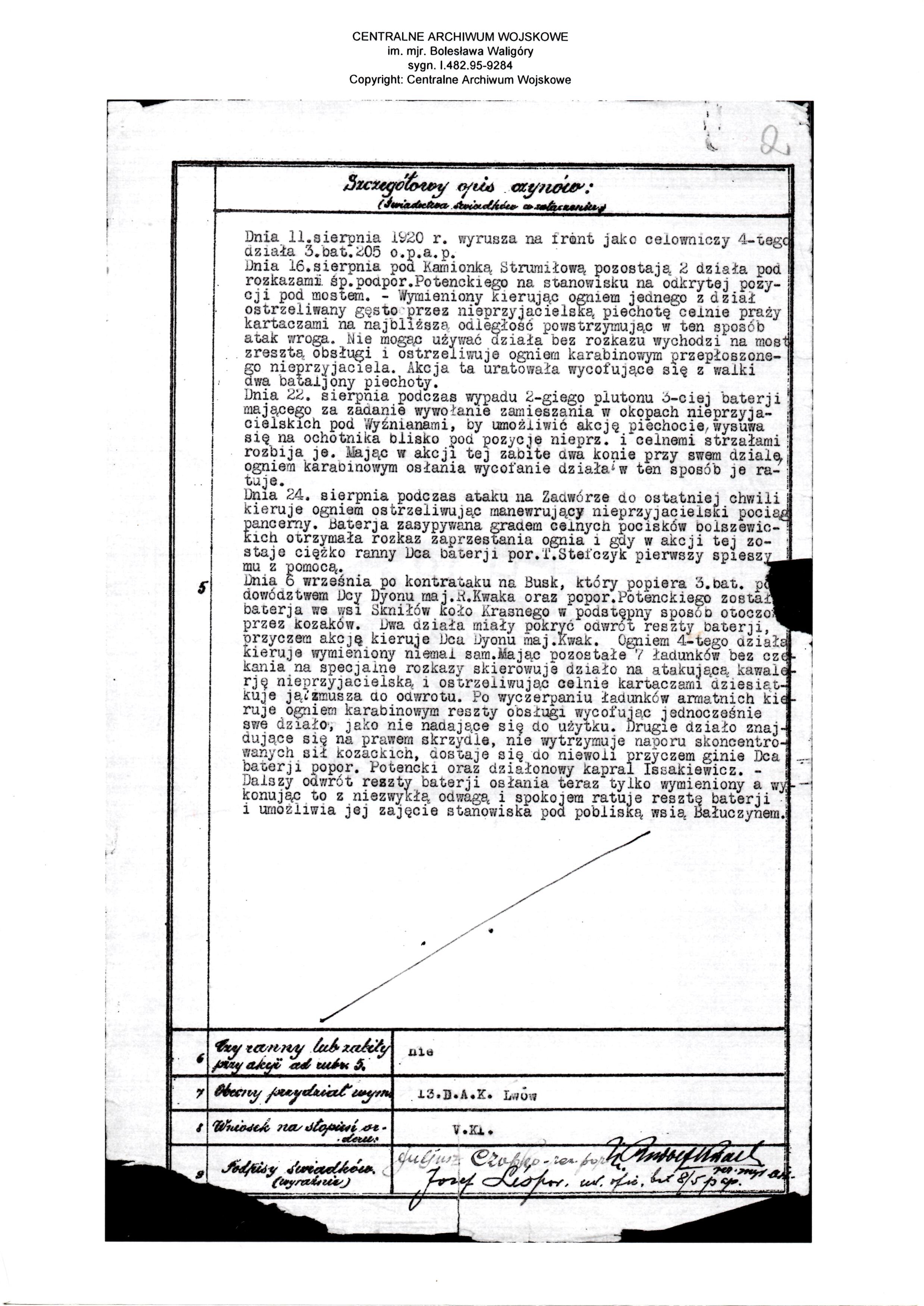
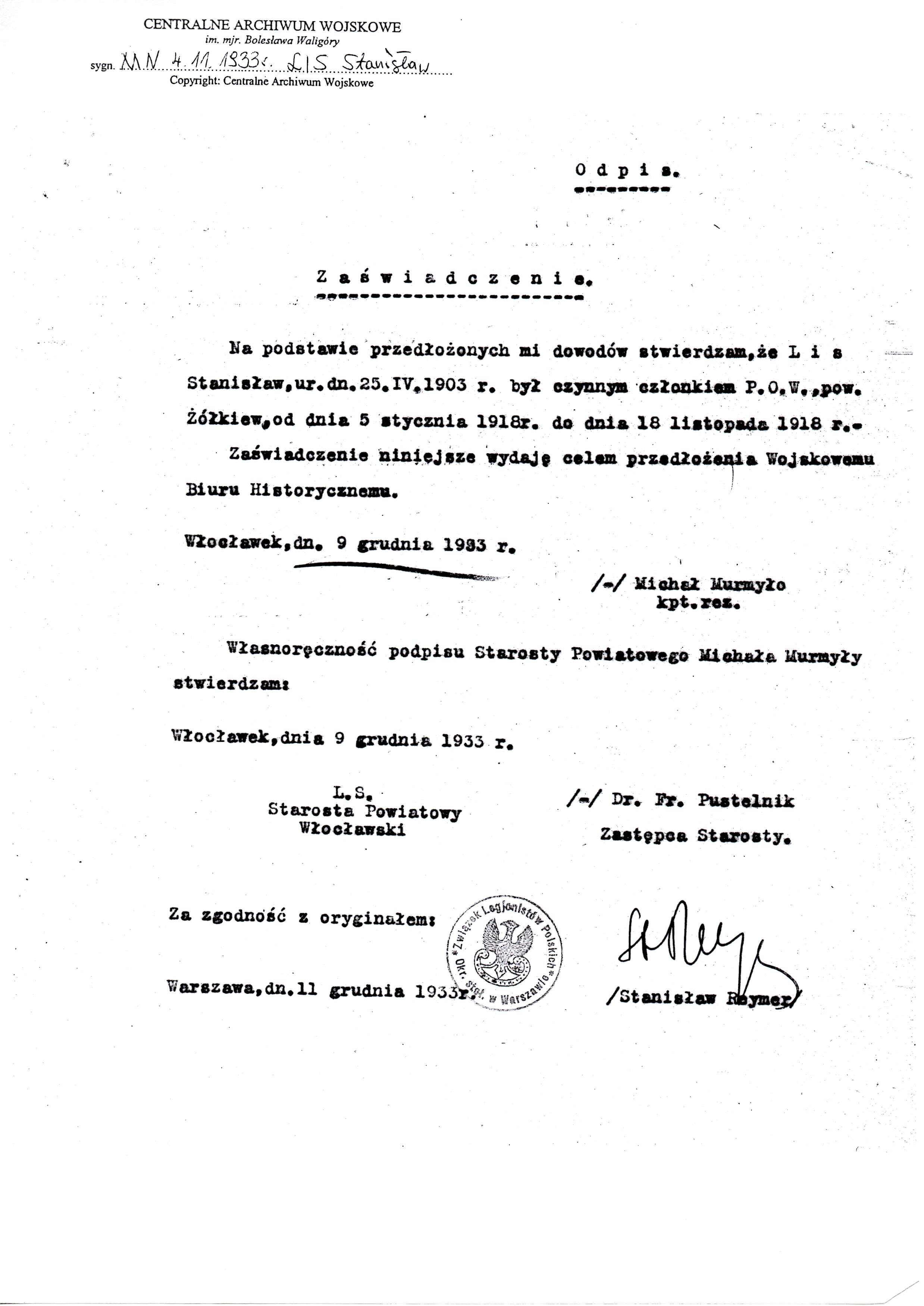
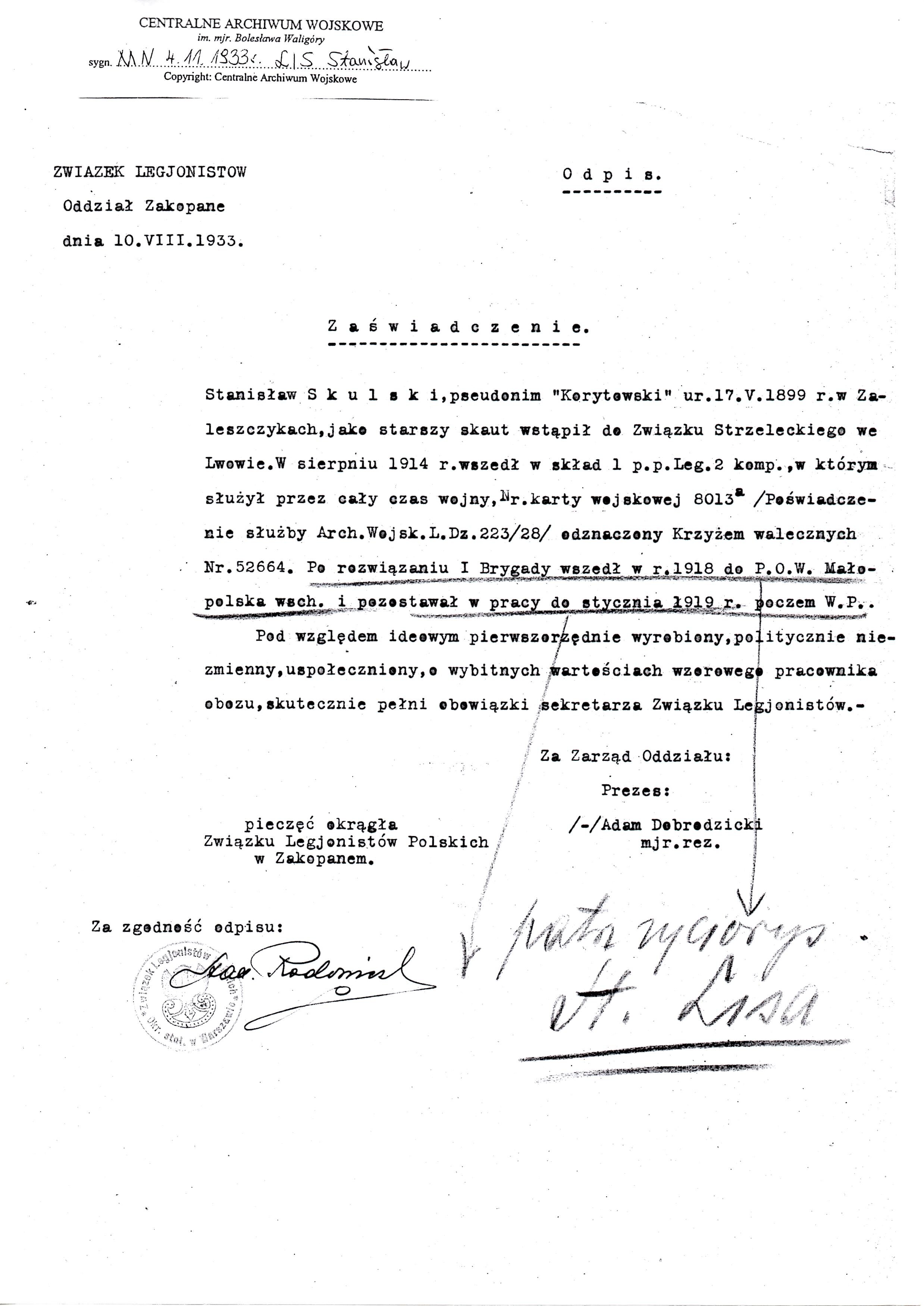
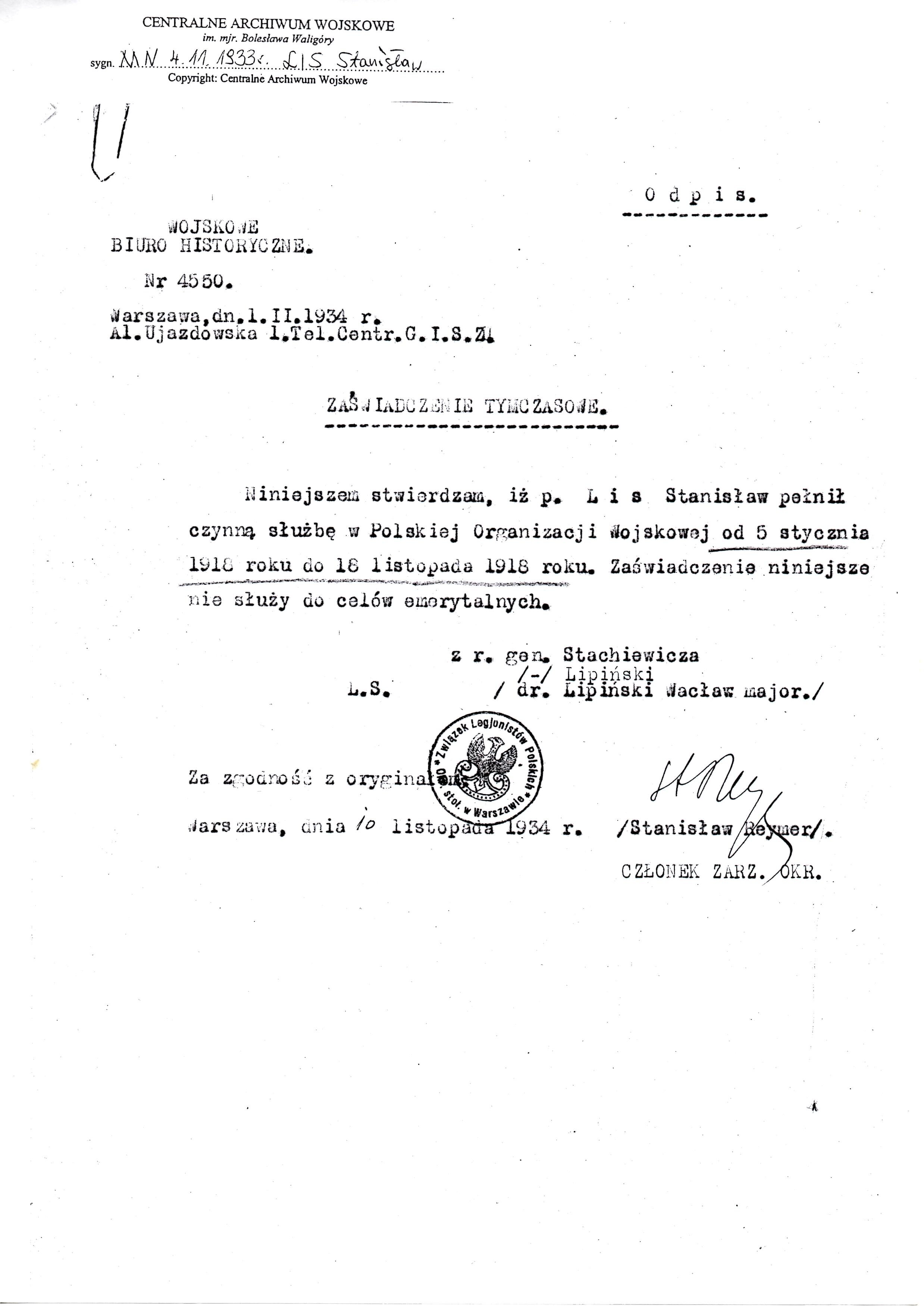
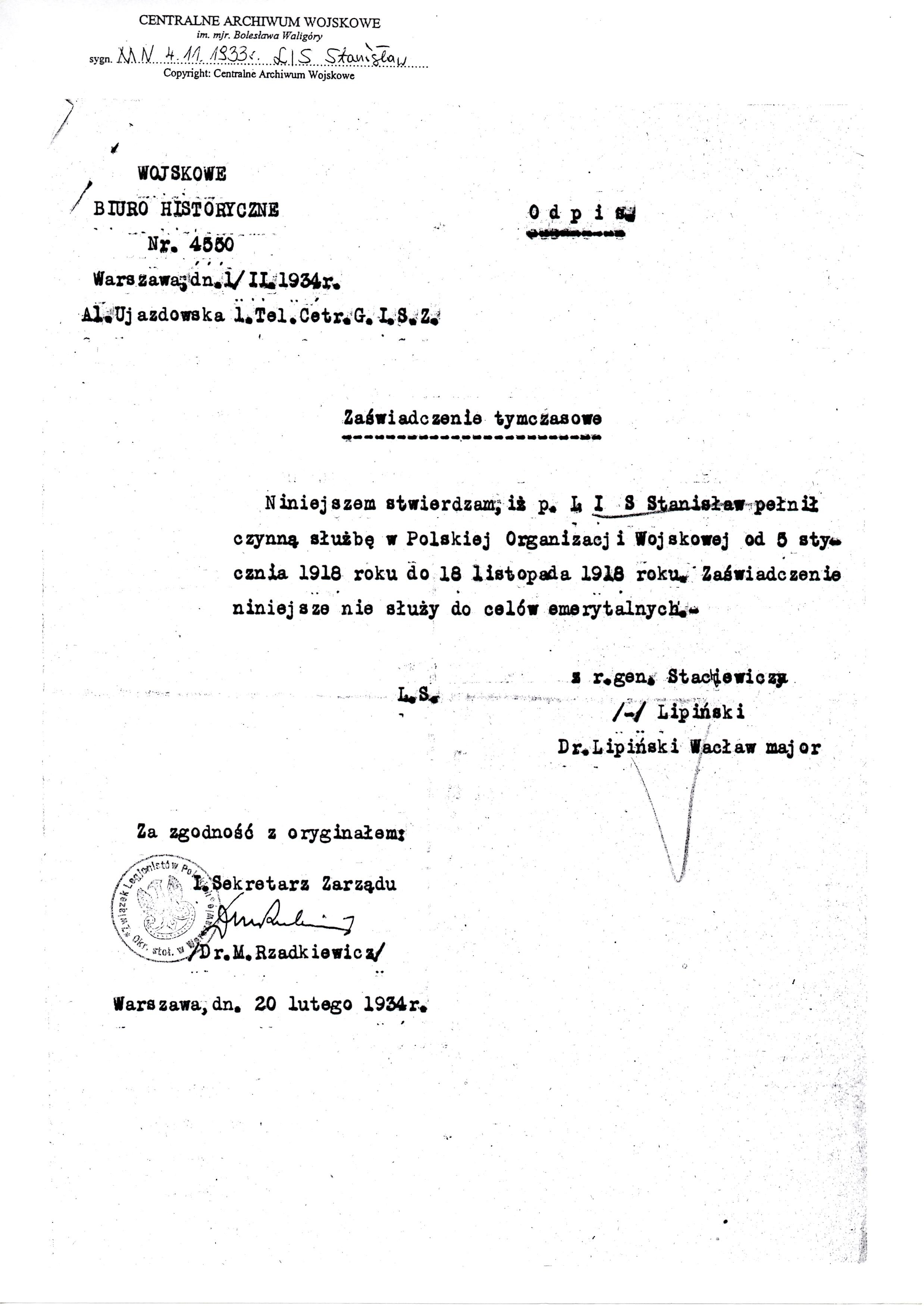
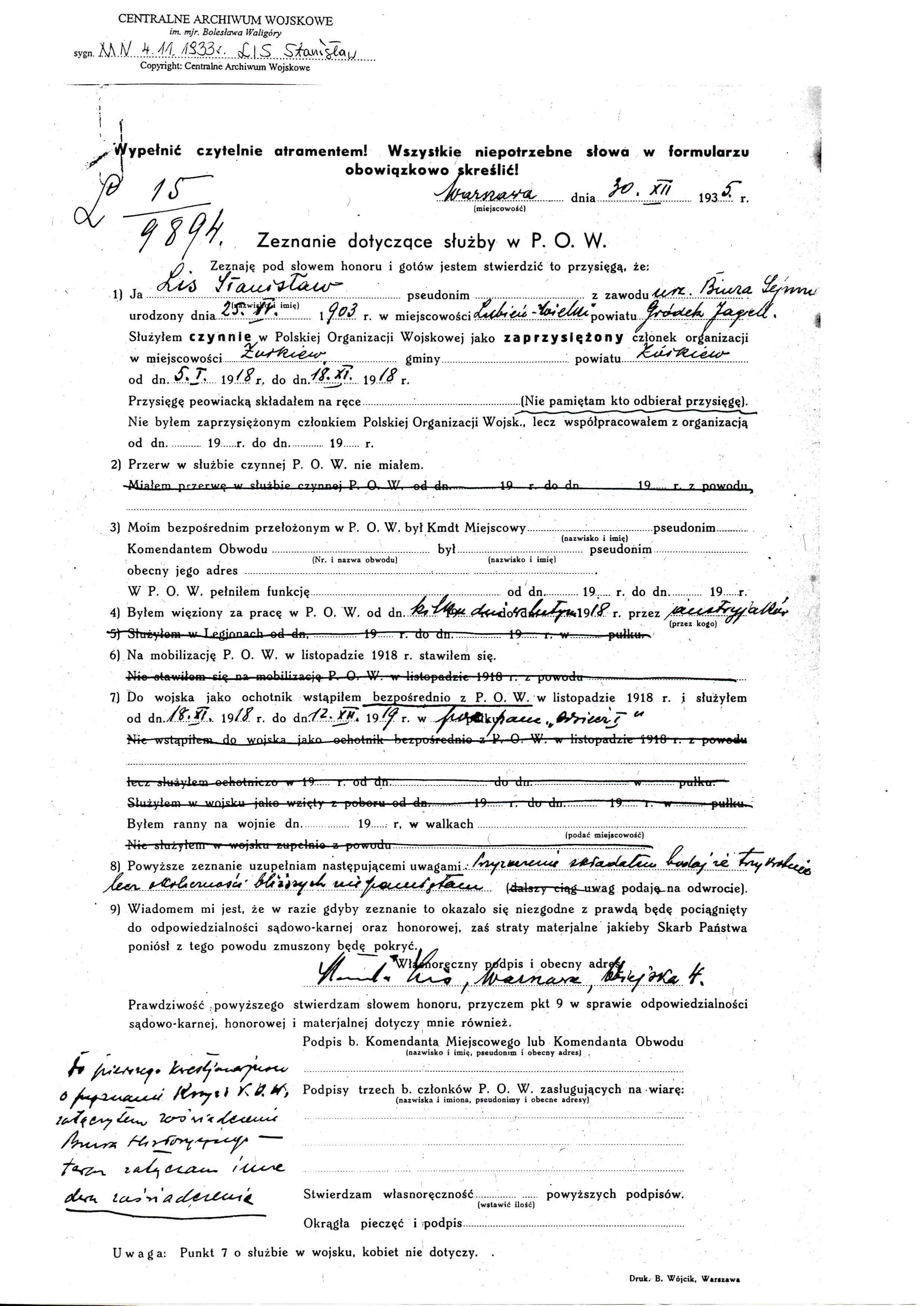
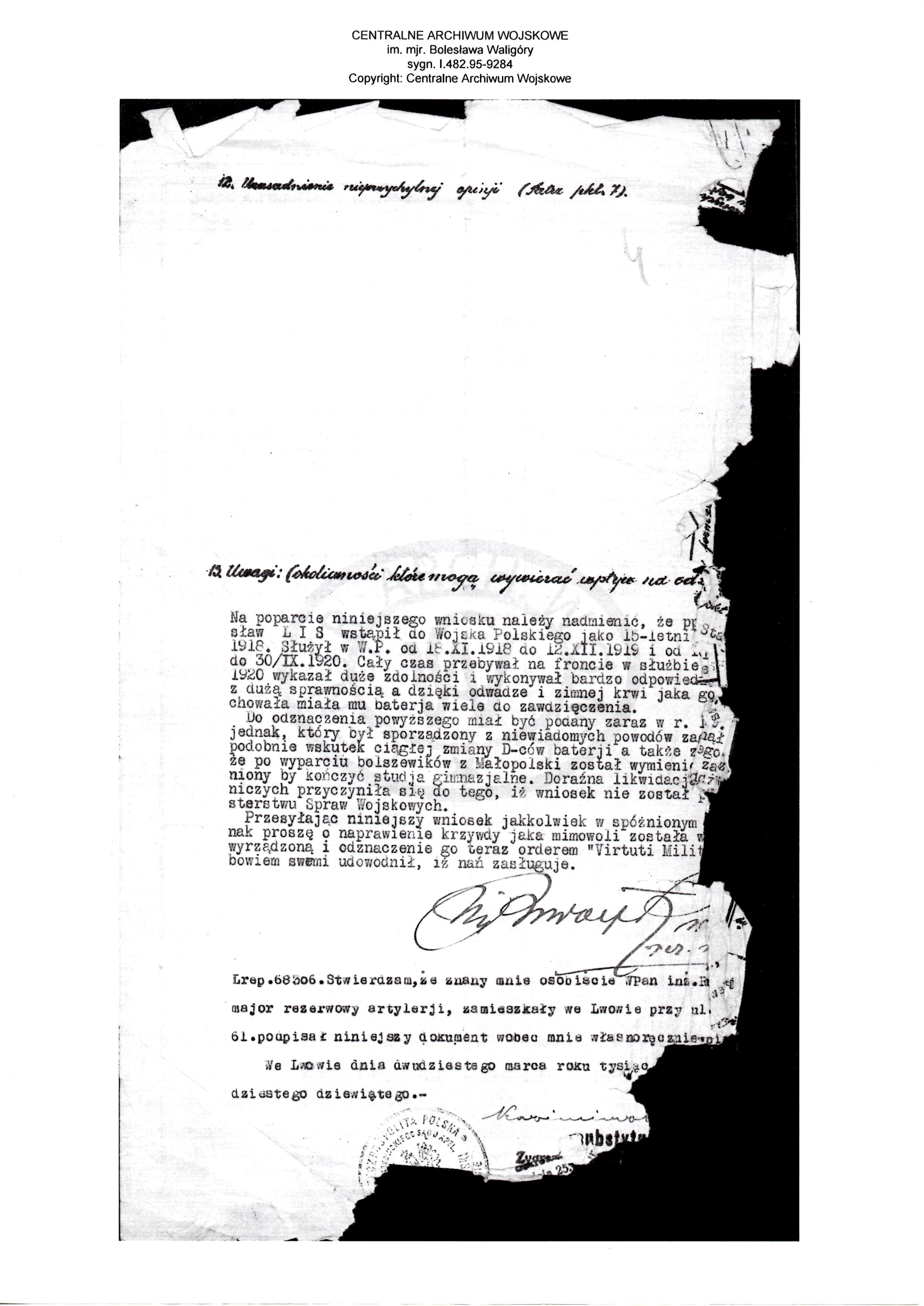
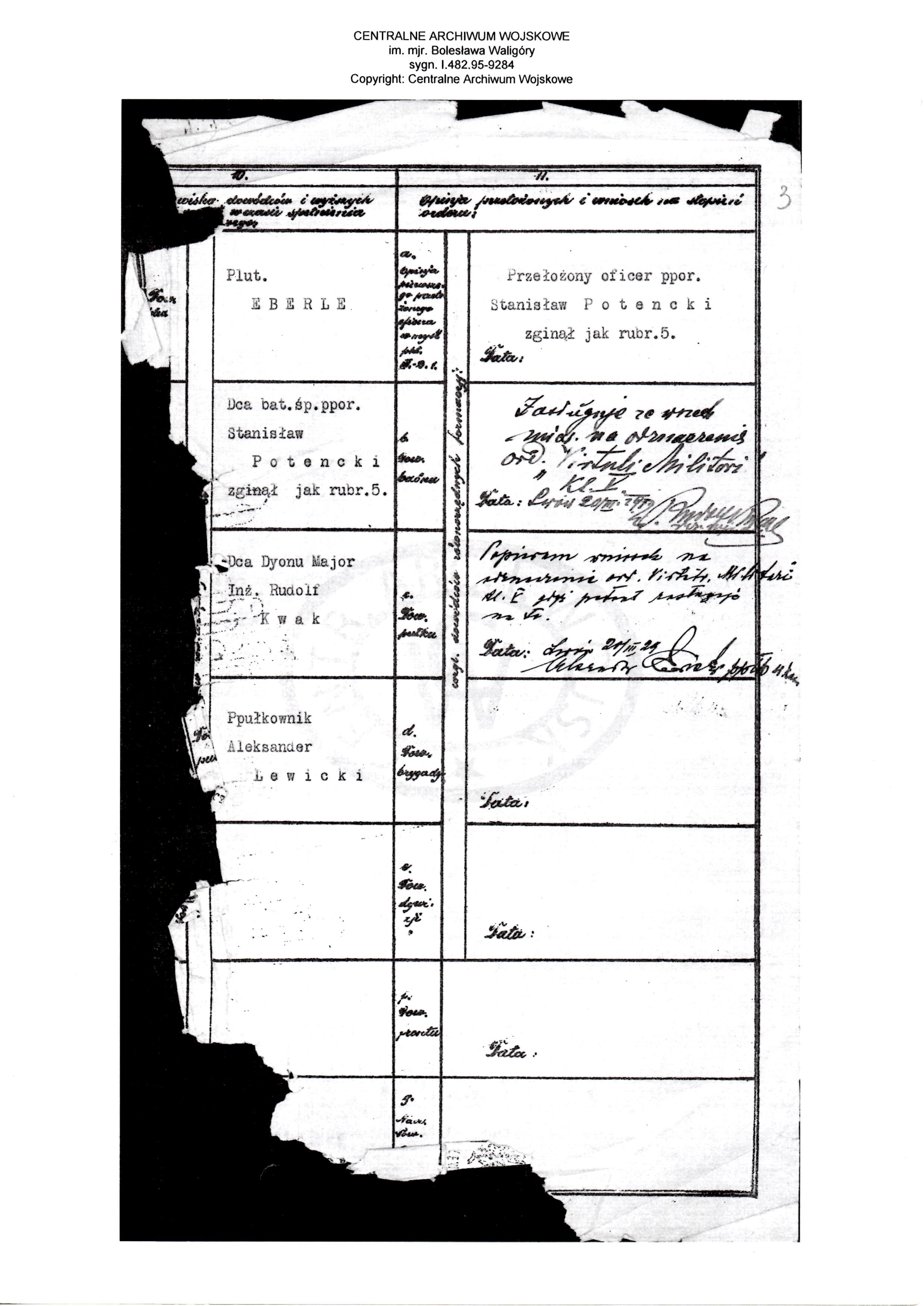

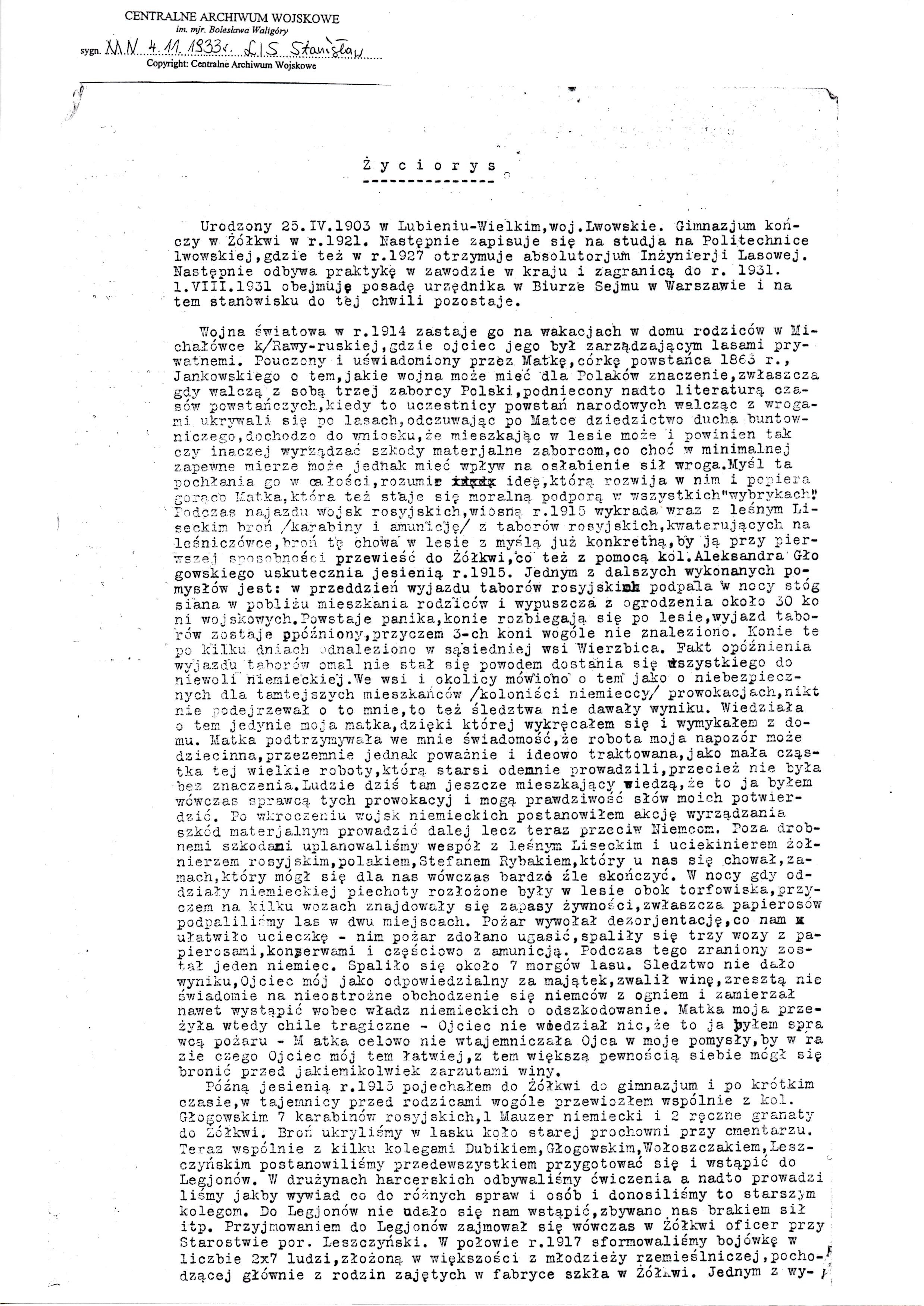
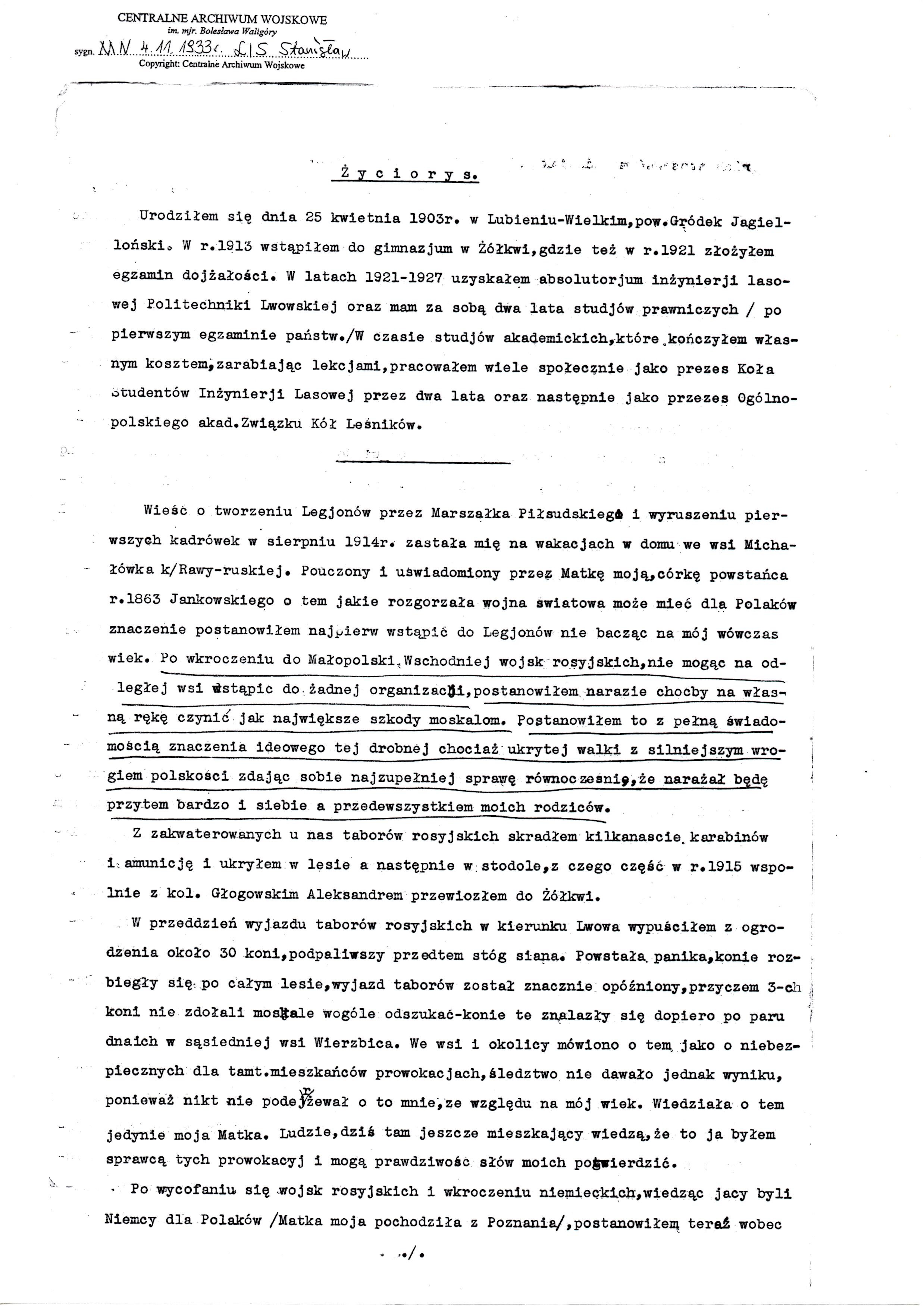
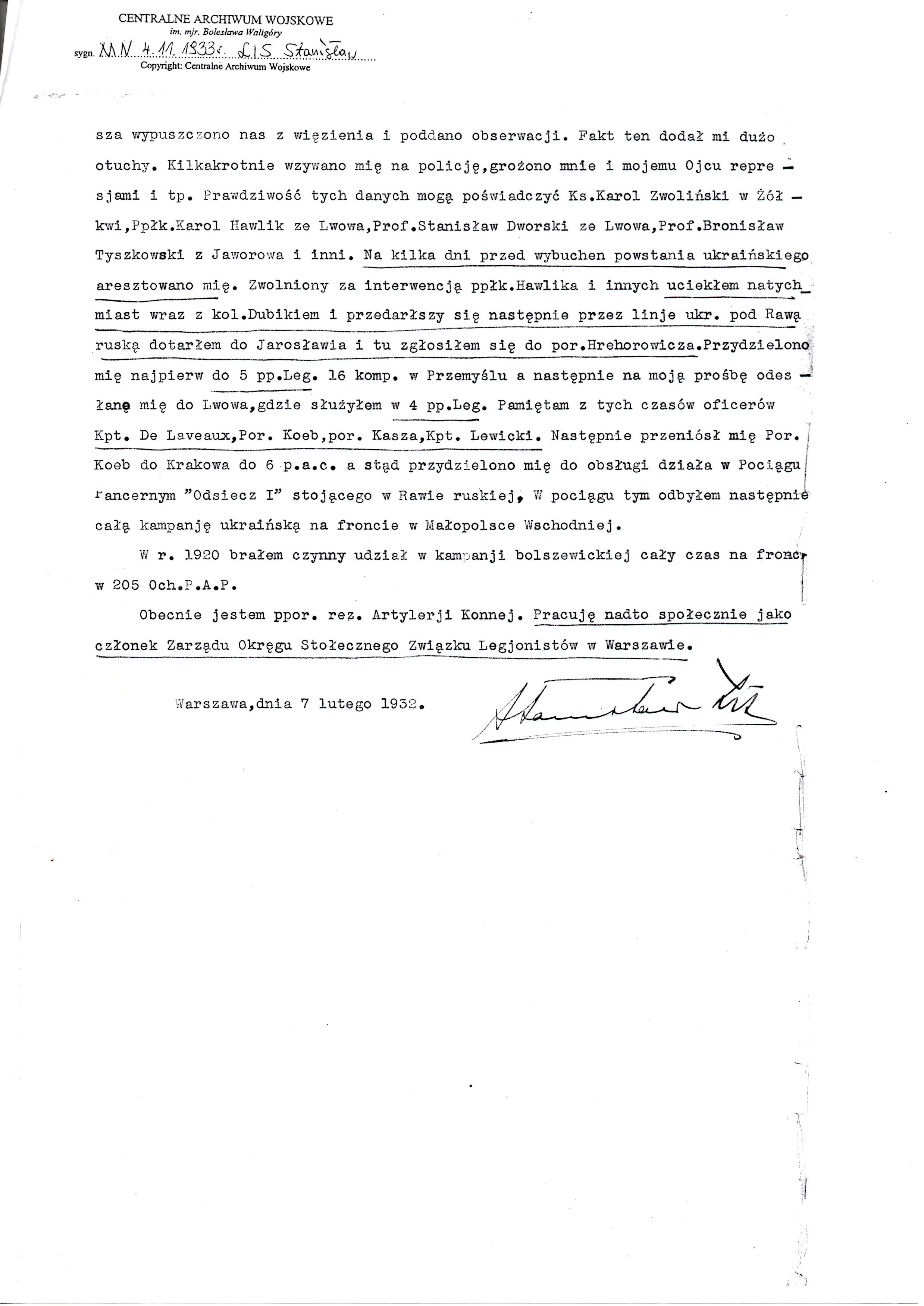

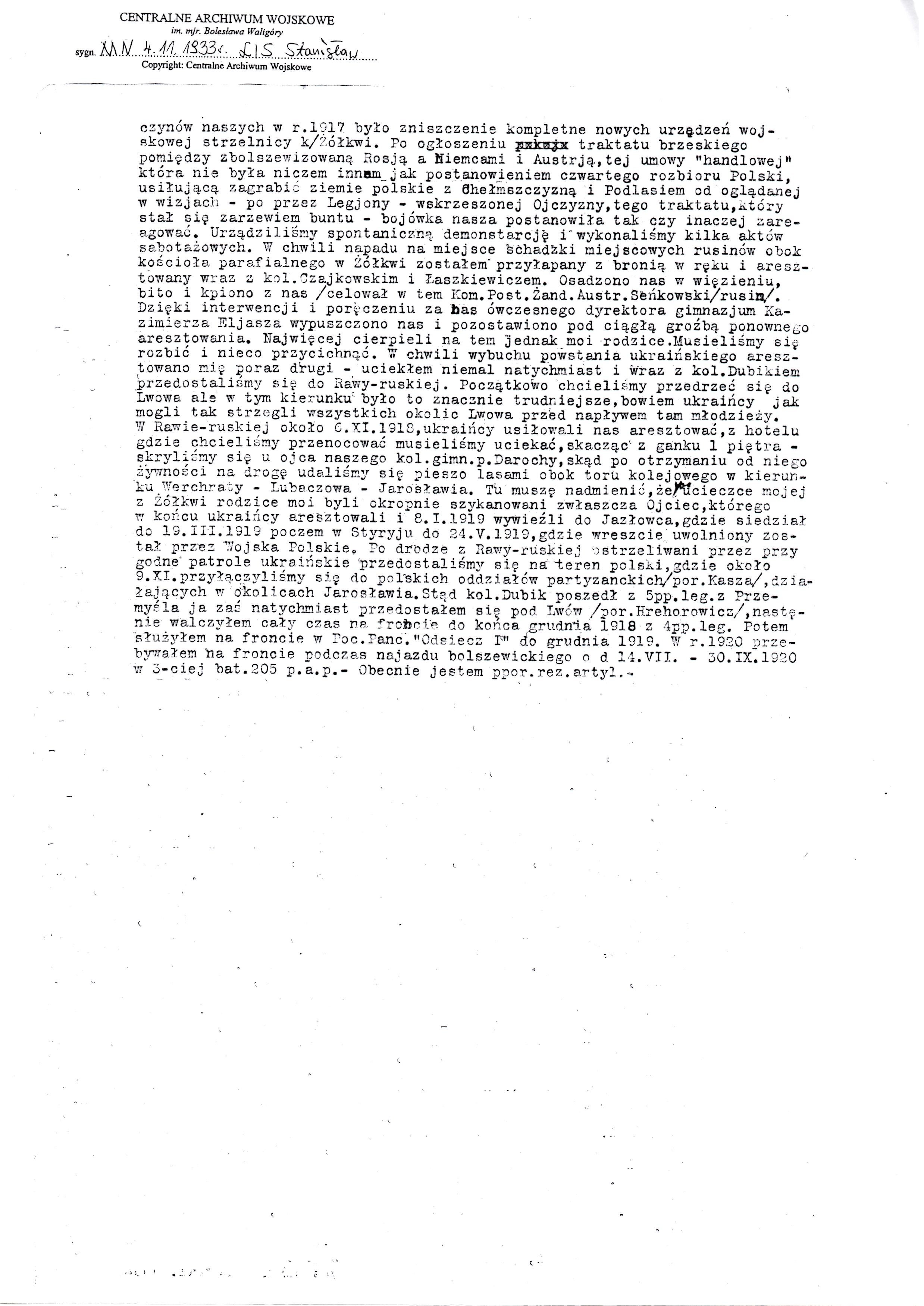
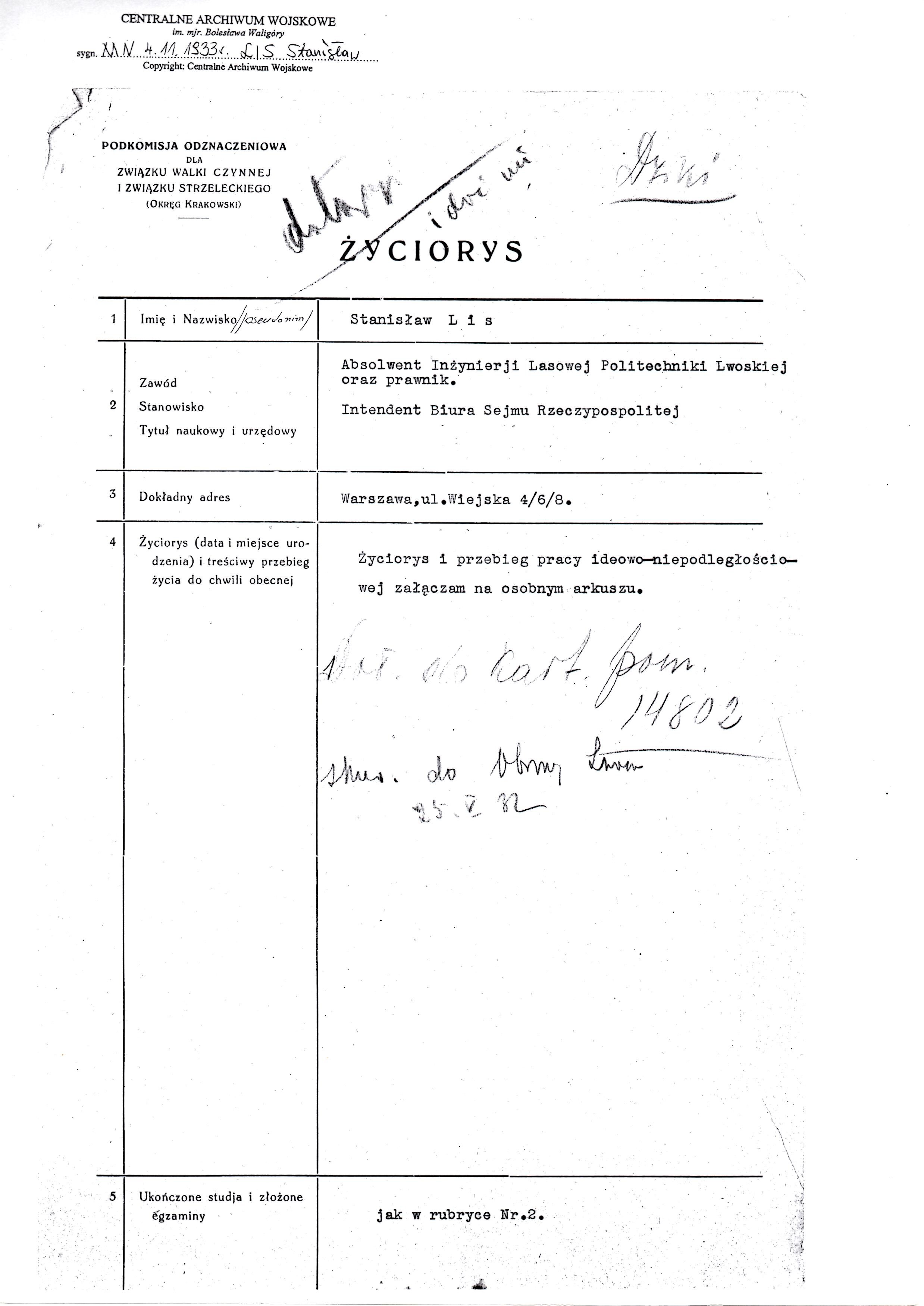
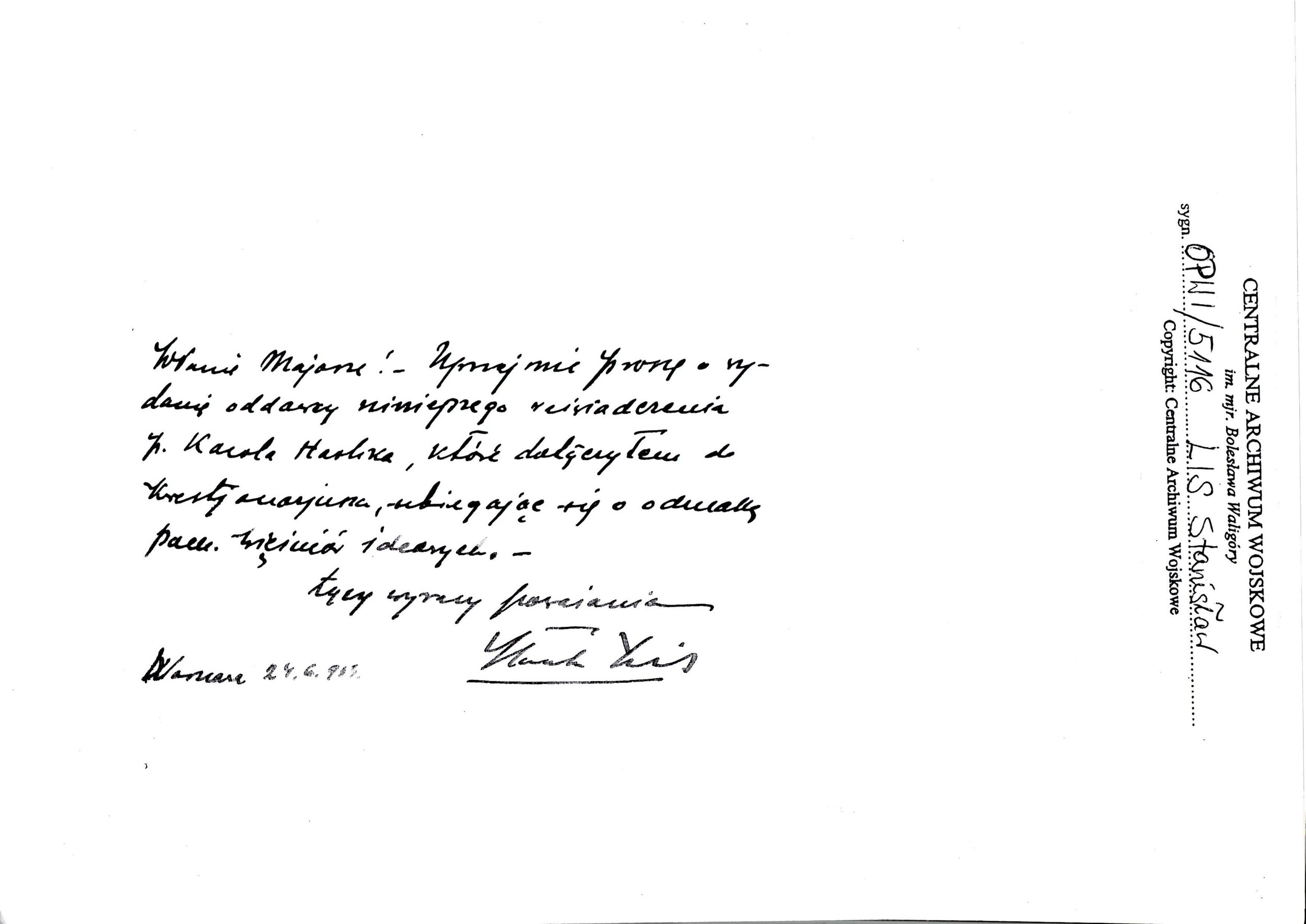
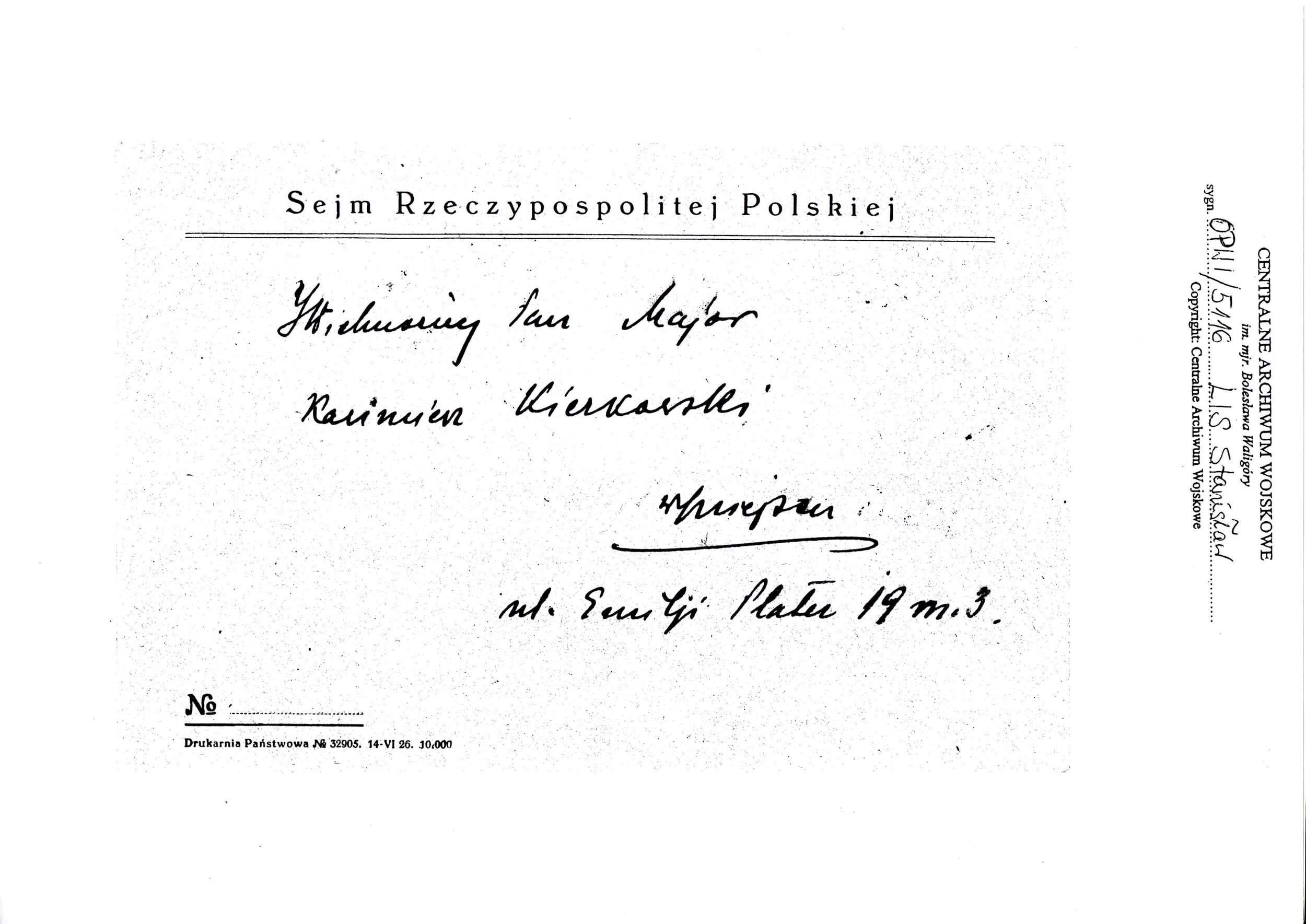
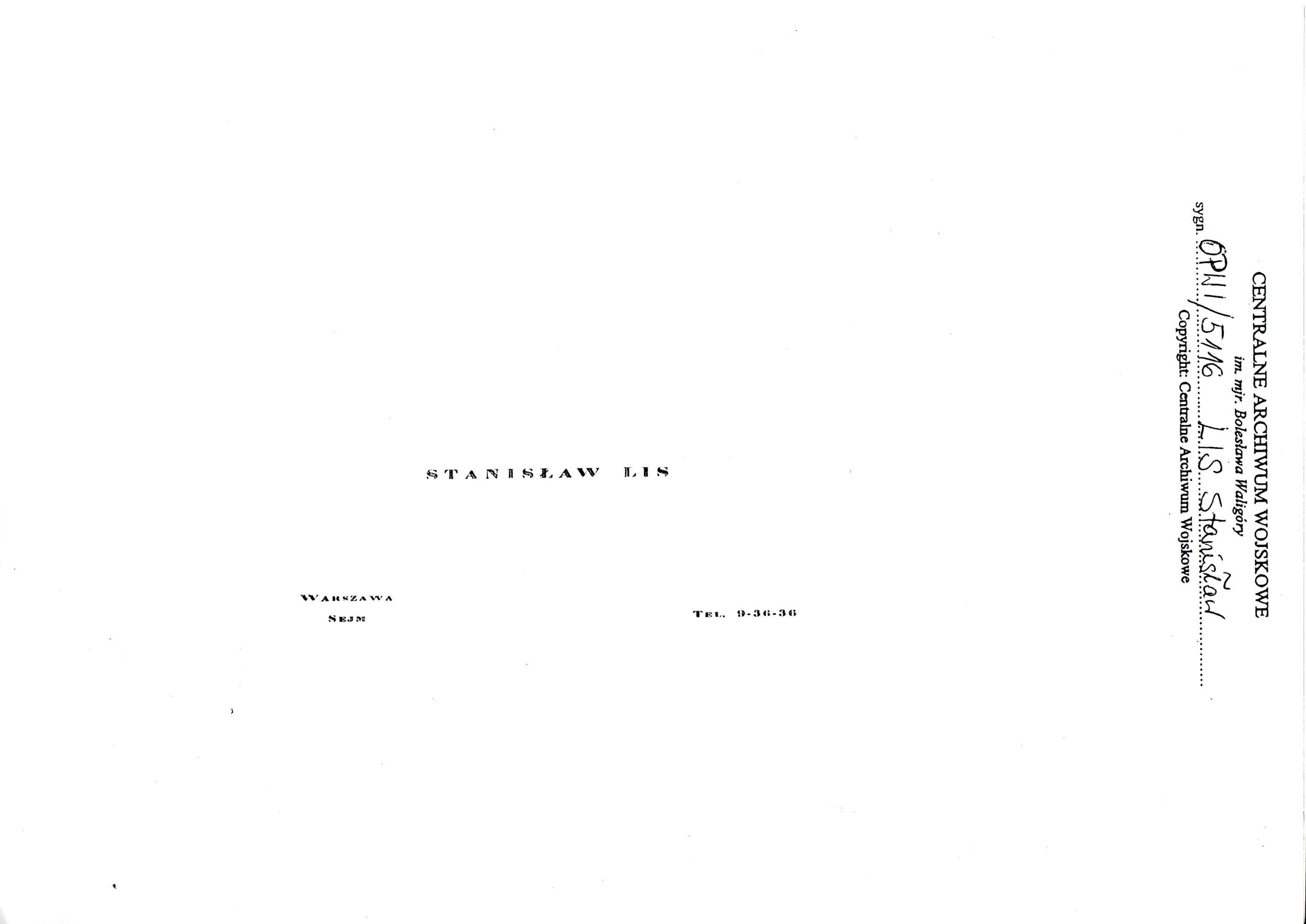
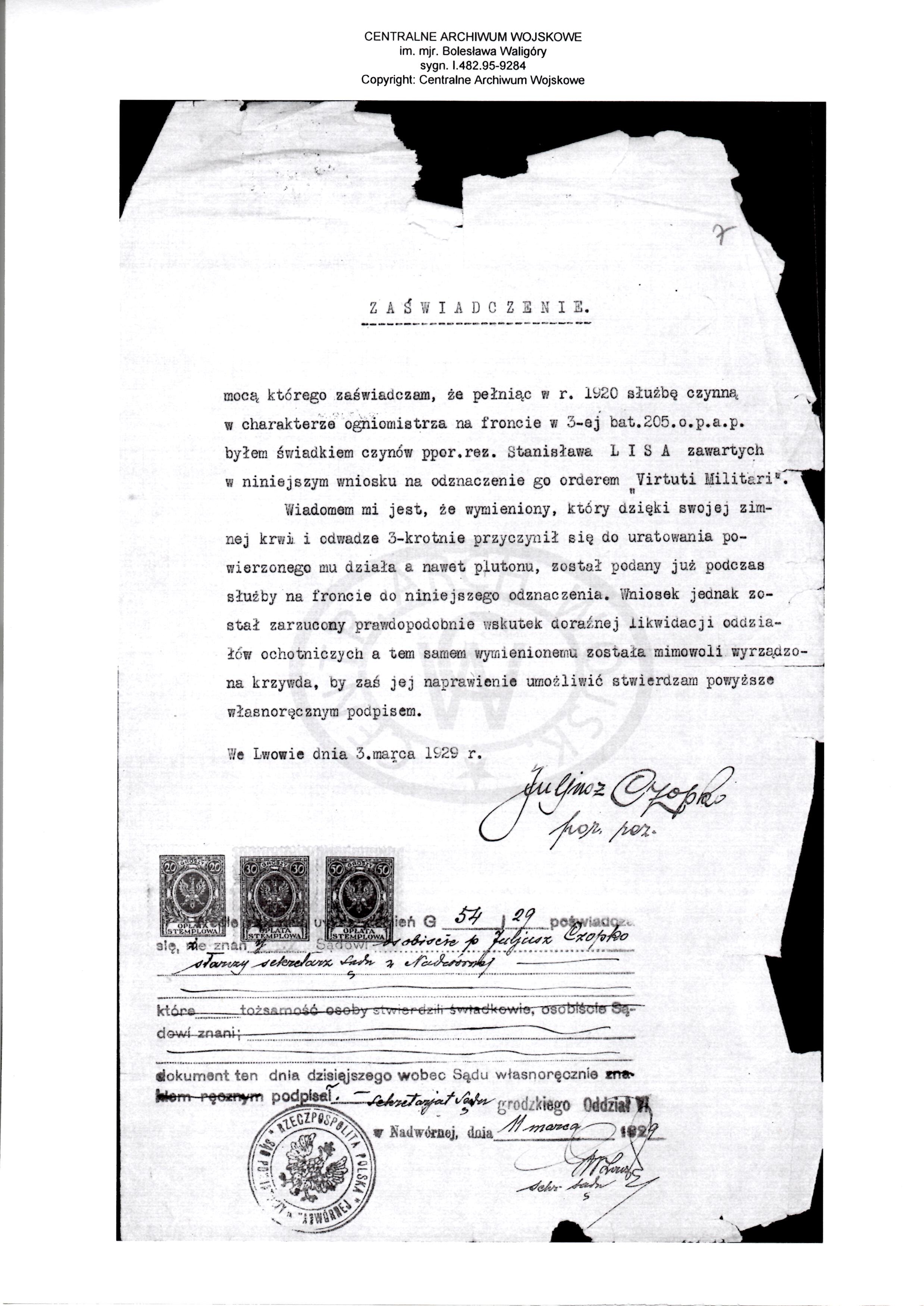
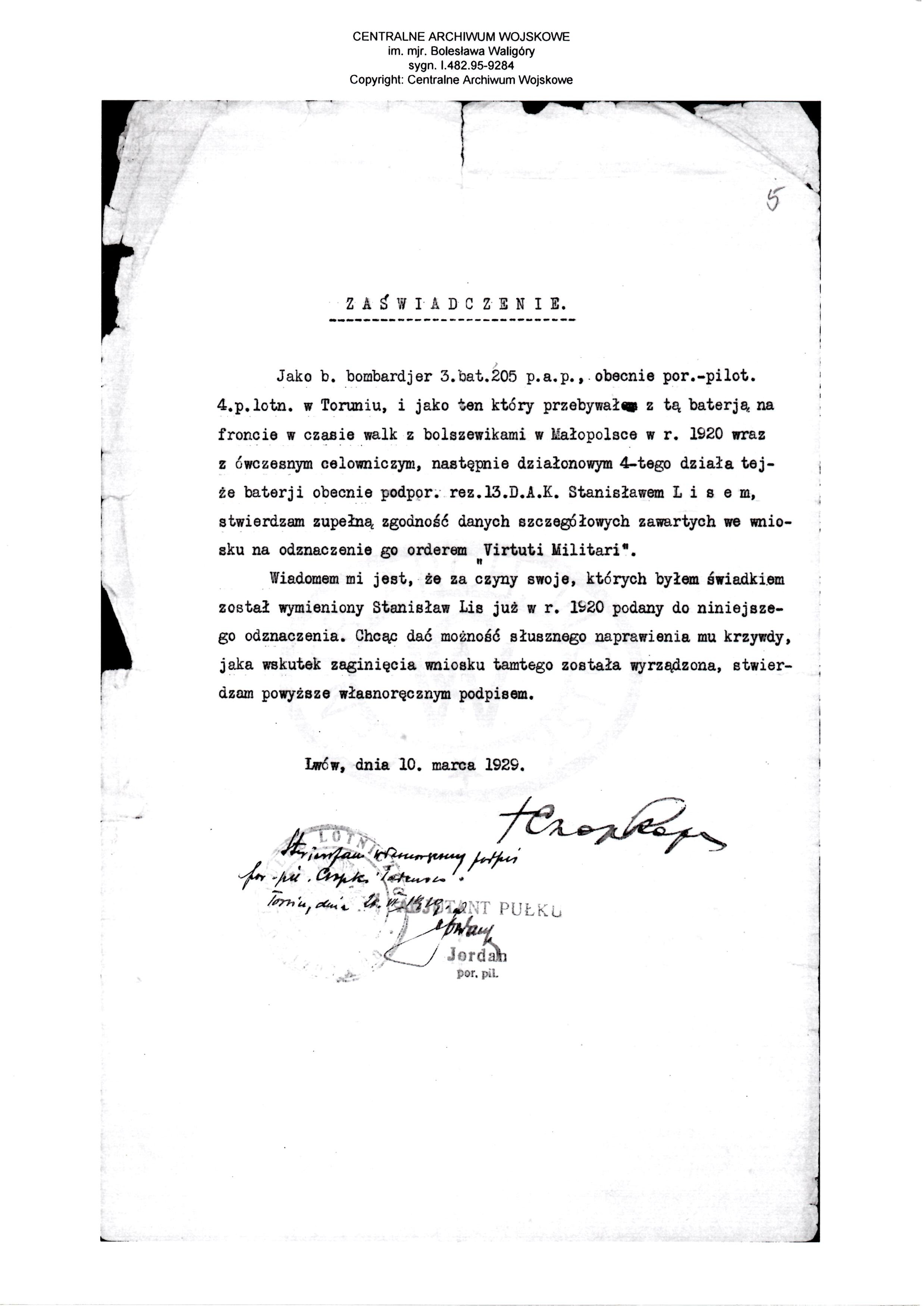
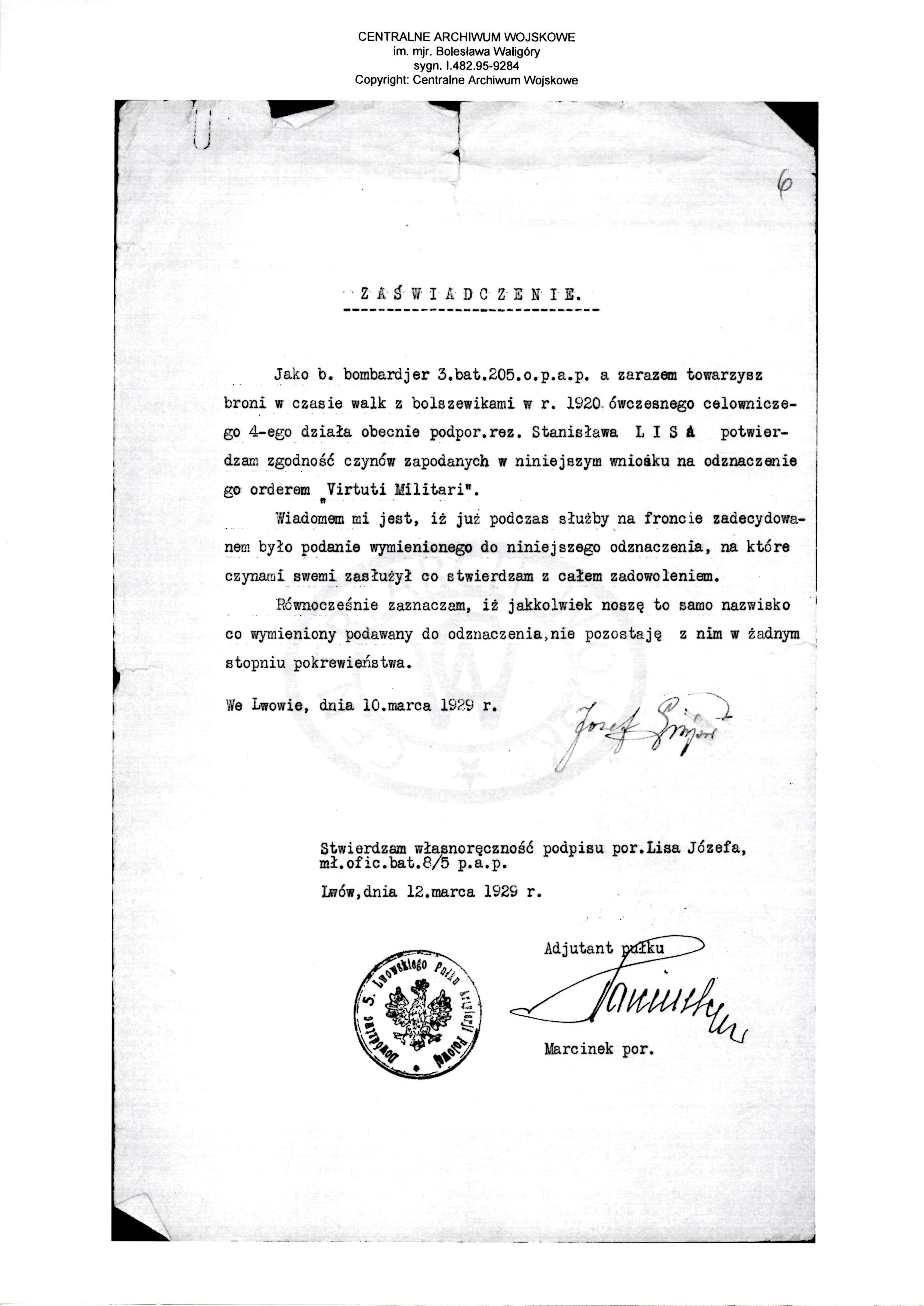
Translations
CENTRAL MILITARY ARCHIVES (Medal of Independence)
sign. MN 4.11. 19336. LIS Stanisław
Copyright: Central Military Archives
Polish Medal of Independence.
‘By order of the President of the Republic of Poland of October 28, 1933, I was awarded the Medal of Independence. Enclosing new evidence of my independence work, unknown at the time of consideration of the previous application, I ask for reconsideration.
Born April 25, 1905, in Lubień Wielki, Lwow province. I completed high school in Żółkiew from 1913 to 1921. Then, in 1921 - 1927, I obtained a degree in forest engineering from the Lwów Polytechnic. In 1927 - 31, I did professional practice in Poland and abroad. On August 1, 1931, I took up a position as a clerk in the Sejm Office, a position I have held to the present.
From 1913, i.e., since I entered high school, I have been a member of scout teams in 262-kwi, where I soon became a team leader and later commander of the troop. In late autumn 1915, I transported from the village of Michałówka (where my parents lived) to Żółkiew, together with colleague Aleksander Głogowski, some weapons and ammunition, which in the spring of that year I had stolen from Russian camps that were quartered with us, intending to transport these weapons from there to Żółkiew for our organisation.’
'After transporting the weapons to Zółkiew, we hid them in the forest next to the old powder magazine. In mid-1917, we formed a militia in the area of Zółkiew, consisting mainly of young craftsmen. It included, among others, Col. Popielko, Głogowski, Płoszczak, Czajkowski, Zaszkiewicz. The general goal of the group was to conduct sabotage, to cause a state of unrest in this area. In September 1917, I was accepted into an organization working independently of the scouts, it was P.O.. Our platoon held frequent meetings, outside the city, we conducted shooting training and various exercises, using rifles I had brought. It was a kind of preparatory period, while the actual work in P.O.W. began in January 1918.
While I was still working in the group and P.O.W., I was arrested for sabotage, together with Col. Czajkowskin and Zaszkiewicz, in Żółkiew (Zhovkva) in February 1918 during an attack on a meeting place of local Ruthenians. We carried out the attack with 7 men, and only three of us were arrested. This was also witnessed by the [?] Skulski Stanisław, under whose direction I worked in the P.O.W. from February 1918 to the first days of November of that year.
Upon the intervention of several people, we were released from custody after a few days, but during those few days, we were humiliated by beatings and mockery (by the Austrian gendarme Seńkowski). From the P.O.F. I went directly to the service of the Polish Army in November 1918, namely after the outbreak of Ukraine, I was arrested again in Żółkiew. After two days I escaped and after various difficult and dangerous crossings, I made it to Polish territory in the vicinity of Lubaczów and Jarosław and I immediately reported to the first Polish military formations I encountered.
Remaining in the army without a break until December 12, 1919, I went through the entire Ukrainian campaign on the front, then in the units of Lieutenant Kasza, 5th Legions Infantry Regiment, Armoured Regiment "Relief I". When I was transferred to the reserve, my service in the army from November 18, 1918, to December 12, 1919, was counted. In 1920, I was at the front during the Bolshevik invasion from July 14 to September 30, 1920. Currently, I am a second lieutenant of artillery in the reserve.’
Polish-Soviet War (1919-1921)
CENTRAL MILITARY ARCHIVES September 1926.
reference number: Ap 2734 LIS Stanisław
Copyright: Central Military Archives
CERTIFICATION.
‘As a Major of the Polish Army, the then commander of the 1st Division of the 1st Μ.Ο.Ρ.Α.Ρ./Małopolski Ochotn. p.a.p./, currently a major in the reserve, I certify that Mr. Stanisław Lis was born April 25, 1903, in Lubień Wielki, rel. Rome. category student of the 4th year of the Lwow Polytechnic University, he served as a volunteer on the front in the 3rd battery of the 1st division of the 1st M.O.P.A.P. from August 10, 1920, to September 28, 1920, as a gunner. Of the battles in which Mr. Stanisław Lis took an active part, the most important were: 16/VIII at Kamionka Strumiłowa, 22/VIII at Połonice near Zadwórze, 24/VIII near Wyrznianamit 1 6/1X near Skniłow near Krasne.
Lwow on September 26, 1926.
authenticity of the captain's signature, Prager Adam from the 6th District, Head of Building, Lwow, I confirm. Lwow, November 17, 1926
Adjutant and education officer.
This document is a translation of an official certification issued by the Polish Army in 1926, confirming the military service of Stanisław Lis during the Polish-Soviet War (1919-1921).
reference number: Ap 2734 LIS Stanisław
Copyright: Central Military Archives
CERTIFICATION.
‘As an officer of the Polish Army, at that time serving in armoured train No. 5 "Odsiecz I", I certify that Mr. Stanisław Lis, born on April 25, 1903 in Lubień Wielki, a 4th-year student of the Lwów University of Technology, served on the front, as a volunteer in armoured train No. 5 "Odsiecz I" from January 5, 1919 to the end of July 1919, as a lock keeper operating a gun. Of the battles in which the armoured train took part at that time, No. 5 "Odsiecz I" and thus Mr. St. Lis, the most important in the first days of January 1919 were breaking the line: Rawa Ruska, Żółkiew, Lwów, then near Janów, near Gródek Jagielloński, near Sądowa Wisznia, in all sectors near Lwów, near Brzeżany, and near Halicz.
Lwow on: September 25, 1926.’
Historical Context:
This second document provides further details about Stanislaw Lis’s military service during the Polish-Soviet War (1919–1921), specifically his involvement with armoured train No. 5 "Odsiecz I" in 1919.
Armoured Train No. 5 "Odsiecz I":
Armoured trains played a significant role in the Polish-Soviet War, especially in the defence of the city of Lviv (Lwów) and other territories in the region. These trains were equipped with artillery and machine guns and were used for reconnaissance, attacking enemy positions, and providing support during key operations.
Armoured Train No. 5 "Odsiecz I" was one of these units, tasked with defending Lwow and breaking through enemy lines in the early days of 1919. It was named "Odsiecz I" (which translates to "Relief I"), as it was part of an effort to relieve Lwow which was under threat from the Red Army and Ukrainian forces. The document mentions several critical locations where the armoured train, and by extension, Stanisław Lis, participated in operations. These include:
Rawa Ruska, Żółkiew (Zhovkva), and Lwów : The region around Lwow was a hotspot of military activity during the war. The Polish forces were engaged in fierce battles to defend the city.
Janów, Gródek Jagielloński, Sądowa Wisznia, Brzeżany, and Halicz: These towns and areas near Lwow were also significant battlefronts, where Polish forces clashed with enemy units.
Stanisław Lis’s Role:
The document states that Stanisław Lis served as a lock keeper (which refers to someone who operated a gun or artillery) in the armoured train during the period from January 5 to the end of July 1919.
The role of the lock keeper would have involved managing and operating the artillery or weaponry mounted on the armoured train during battles. It was a significant role; particularly as armoured trains were crucial in providing firepower and mobility in regions where traditional military units struggled.
CENTRAL MILITARY ARCHIVES - Virtuti Militari
no. 1.482.95-9284
Detailed description of the action:
Virtuti Militari (Stan was nominated for the medal two times but never received it.
(The testimonies of witnesses)
On August 11, 1920, he (Stanislaw Lis) went to the front as a gunner of the 4th gun of the 3rd battalion, 205 o.p.a.p.
On August 16, two cannons under the orders of the late Lieutenant Potencki remain at Kamionka Strumiłowa in an open position under the bridge. The aforementioned, directing the fire of one of the cannons, and fired at densely by enemy infantry, accurately fired grapeshot at the closest distance, thus stopping the enemy attack. Unable to use the cannon without orders, he went onto the bridge and fired rifle fire at the scared enemy. This action saved two infantry battalions retreating from the battle.
On August 22, during a sortie of the 2nd Platoon of the 3rd Battery, whose task was to create confusion in the enemy trenches near Wyźniany to allow the infantry to take action, he volunteered to move close to the enemy positions and destroyed them with accurate shots. Having killed two horses with his gun in this action, he covered the withdrawal of the gun with rifle fire, thus saving it.
On August 24, during the attack on Zadwórze, until the very end, he directed fire, shelling the maneuvering enemy armored train. The battery, covered in a hail of accurate Bolshevik shells, received an order to cease fire and when the battery commander, Lieutenant T. Sterczyk, was seriously wounded in this action, he was the first to rush to its aid.
On September 6, after a counterattack on Busk, which was supported by the 3rd battalion under the command of the Dey Division Maj. R. Kwak and Lieutenant Potencki, the battery in the village of Skniłów near Krasny was insidiously surrounded by the Cossacks. Two cannons were to cover the retreat of the rest of the battery, with the action being directed by the Dey Division Maj. Kwak. The aforementioned (Stanislaw) almost single-handedly directs the fire of the 4th cannon. Having the remaining 7 charges, without waiting for special orders, he directed the cannon at the attacking enemy cavalry and accurately shot it with grapeshot ten times, forcing it to retreat. After exhausting the cannon charges, he attacked the rest of the crew with rifle fire, withdrawing his cannon at the same time, as it was unfit for use. The second gun on the right wing, unable to withstand the pressure of the concentrated Cossack forces, was taken prisoner, killing the battery commander, Lieutenant Potencki, and the gunner, Corporal Issakiewicz. The further retreat of the rest of the battery is now covered only by the aforementioned, and by doing so with extraordinary courage and calm, he saved the rest of the battery and enabled it to take up a position near the nearby village of Bałuczyn.
13.D.A.K. Lwow
8. Application for the rank of the order
This document outlines a series of heroic actions by Stanisław Lis during the Polish-Soviet War (1919–1921) as part of a recommendation for the Virtuti Militari, Poland's highest military honour for valour.
Virtuti Militari: Established in 1792, the medal has five classes and is awarded for acts of extraordinary heroism in battle. The medal was awarded for acts of extraordinary bravery and is akin to the Victoria Cross in the UK or the Medal of Honor in the US.
Breakdown of locations, battles, and Stanislaw’s actions:
August 11, 1920:
"He went to the front as a gunner of the 4th gun of the 3rd battalion, 205 o.p.a.p."
Situates Stanisław Lis in the 205th Light Artillery Regiment. The Polish-Soviet War was at a crucial point in 1920, with the Bolshevik forces advancing deep into Poland, threatening Warsaw.
August 16, 1920 – Defense at Kamionka Strumiłowa (Kamionka Strumiłowa (now Kamianka-Buzka, Ukraine) was near the frontlines during the Soviet offensive.)
Actions: Lis, under heavy fire, directed grapeshot (a type of anti-personnel ammunition) at close range, effectively halting a Bolshevik infantry assault. When his cannon was no longer usable, he engaged the enemy with rifle fire from a bridge, protecting retreating infantry battalions.
Stanislaw’s decision to target advancing enemy infantry with grapeshot at close range demonstrated precise timing and a deep understanding of artillery’s tactical use. Grapeshot, akin to a giant shotgun blast, was highly effective but required proximity to the enemy, exposing the gunner to counterattack. The transition to rifle fire when the cannon was unusable reflects his resourcefulness. Using the bridge as a defensive position indicates an awareness of the terrain’s tactical advantages. Protecting two retreating battalions underlines his critical role in maintaining the cohesion of the Polish forces during a strategic withdrawal.
This engagement occurred during the critical phase of the Bolshevik advance toward Warsaw. Small acts of defiance, like Lis’s delayed enemy momentum, allowed Poland to regroup and counterattack. Kamionka Strumiłowa was part of the southeastern front, where Polish forces were stretched thin. The courage shown by individual soldiers like Lis played an outsized role in holding this fragile line.
August 22, 1920 – Sortie at Wyźniany: (Wyźniany was part of the wider Polish counteroffensive (known as the Miracle on the Vistula), which aimed to push back the Red Army.)
Actions: Volunteered to engage enemy positions directly. Destroyed enemy trenches and covered the withdrawal of his gun after losing two horses.
Volunteering for a high-risk mission highlights Lis’s willingness to act beyond the call of duty. His decision to move close to enemy trenches shows a deep commitment to ensuring the success of the operation. Despite heavy losses (e.g., two horses killed at his gun), he maintained composure, protecting his artillery piece with rifle fire—a critical move, as artillery was a scarce and valuable resource. The sortie was part of Poland’s broader effort to destabilize the Red Army’s positions and create opportunities for a counter-offensive. The Polish counter-offensive would culminate in the Miracle on the Vistula just days later. Acts of courage and sabotage, like Stanislaw’s sortie, played a vital role in undermining Soviet plans for a decisive victory.
August 24, 1920 – Attack on Zadwórze: (The Battle of Zadwórze, often called "Polish Thermopylae," saw Polish troops make a heroic last stand against Bolshevik forces to protect Lwów (now Lviv, Ukraine).
Actions: Directed cannon fire against an enemy armoured train, sustaining heavy artillery fire in return. When his commander was wounded, Lis rushed to his aid, risking his own life.
Engaging an armoured train - a highly destructive and morale-boosting weapon for the Bolsheviks - required precision and courage. The fact that Stanislaw continued directing fire despite heavy Bolshevik shelling indicates extraordinary mental resilience. When his commander was wounded, Lis’s immediate response reflects not only his bravery but also his loyalty and sense of duty toward his comrades.
Zadwórze was a sacrificial stand by Polish forces to delay the Red Army from reaching Lwów. The battle became a symbol of Polish valor and determination, often compared to the Battle of Thermopylae. The loss of the armoured train would have had a demoralizing effect on Bolshevik forces and a significant impact on the broader engagement.
September 6, 1920 – Defense at Skniłów (near Krasny):
By September 1920, Polish forces were on the offensive, pushing Soviet troops back eastward. However, encounters with Cossack cavalry and other Soviet units remained dangerous.
Actions: Directed cannon fire, accurately deploying grapeshot to repel attacking Cossacks. After exhausting cannon ammunition, he engaged the enemy with rifle fire while simultaneously withdrawing his gun. Despite losing a second cannon and two comrades, Lis's actions saved the remainder of the battery.
The successful defence against a Cossack cavalry charge was a remarkable feat. Cossack units were known for their speed, ferocity, and effectiveness in close combat. Lis’s ability to repel the charge with only seven rounds of grapeshot demonstrates tactical precision and discipline. Each shot had to be devastatingly effective to succeed. His transition to rifle fire while simultaneously withdrawing his cannon - a feat requiring exceptional multitasking under fire - ensured the survival of his artillery piece, likely saving lives and preserving combat capabilities. Covering the retreat of his battery, despite being isolated underscores his role as a linchpin of the unit's defence.
By September, the tide of the war had shifted in Poland’s favour following the Miracle on the Vistula. However, the threat of encirclement or local reversals persisted, as seen in the ambush at Skniłów. Losing artillery to the Cossacks would have severely impacted the Polish forces’ ability to counter future attacks. Lis’s actions preserved not only his unit’s firepower but also its morale.
"Application for the rank of the order" indicates that the detailed account of his actions was part of the formal nomination process for the Virtuti Militari.
"13. D.A.K. Lwow" Refers to the 13th Artillery Division in Lwów (Lviv), confirming the regional military structure involved.
For these actions he is twice nominated for the Virtuti Militari in the end receiving a Krzyz Walecznych - Cross of Valour- for his actions. He remains at the front until November 1920, when the Group is withdrawn to Lwow . In December the Group is disbanded and Stan is discharged from the army.
Historical Context
Virtuti Militari Recommendation March 3rd 1929 (Polish Military Archives)
Polish-Soviet War: A conflict between the Second Polish Republic and Soviet Russia, fought over territorial control in Eastern Europe after World War I. Poland's victory was solidified by the Battle of Warsaw in August 1920, also called the "Miracle on the Vistula." The battles described here occurred during this pivotal period. Stanislaw’s actions are emblematic of the broader Polish war effort during the Polish-Soviet War. Poland was outnumbered and under-equipped, relying heavily on the ingenuity, courage, and determination of individual soldiers and small units to counter the Soviet advantage in numbers and material.
The defence of towns like Kamionka Strumiłowa, Wyźniany, Zadwórze, and Skniłów played critical roles in delaying and destabilizing the Red Army during their westward advance. These actions contributed to the eventual Polish victory, ensuring the country’s independence at a time when it was under existential threat.
Summary of Actions
Stanisław Lis demonstrated exceptional bravery, tactical skill, and leadership during intense battles in the Polish-Soviet War. His actions directly saved lives, preserved military equipment, and contributed to Poland's victory in critical engagements. These qualities made him a prime candidate for the Virtuti Militari. His detailed account highlights not just his bravery but a profound sense of duty to his comrades and country.
Lis’s bravery and tactical brilliance during the Polish-Soviet War make his story a vital part of the Polish military
Death of his mother (1920)
Stanislaw’s mother, Helena Lis nee Jankowska, who had such an influence on his life, died on 28 December 1920 in Żółkiew, Lwow, of Typhus age just 46 years.
Draft Board Examination and Enlistment (1924)
Document: Military Registration Card – Karta Ewidencyjna
Date of Registration: 20 May 1924
Place: P.K.U. (Powiatowa Komenda Uzupełnień) in Rawa Mazowiecka
Initial Rank: Bombardier (junior artillery NCO)
This record places Stanislaw within the Polish draft system shortly after Polish independence. His classification as fit for service (kategoria A) and subsequent postponement likely corresponded with university studies, as was customary for educated recruits.
Returning to Education
After returning to civilian life and being demobilised from the army, Stanisław Lis returned to education, completing his matriculation before enrolling at the University of Lwów to study Agricultural Management. He graduated in 1927 and began postgraduate studies in Law, but economic circumstances forced him to seek employment. His early role as a Forestry Manager brought him into the service of Count Stanisław Jakub Niezabitowski, a prominent Galician senator and political figure, who became Stan’s godfather and mentor. Count Niezabitowski and his wife were key supporters in Stan’s advancement, assisting him in securing work within the state bureaucracy.
During this period, Lis also resumed his military obligations, being recalled as an active reservist and promoted to Second Lieutenant in the 13th Horse Artillery Battery in 1928. After passing his first Law exam in 1930, he successfully applied for a post in the Economics Ministry in Warsaw, supported by references from the Count. He later transferred to the President’s Chancellery and continued to build his career in public service. In Warsaw, his military assignment was updated to the 1st Horse Artillery Battery, where he served regularly and was also involved in ceremonial and diplomatic duties, including the funeral of Marshal Piłsudski.
Other forms of employment
Tutor
Translation: As the former guardian of the late Antoni, as well as Józef and Stanisław Bochdanow, owners of the estate at Zadwórze, I confirm that Mr. Stanisław Lis served as tutor to my wards from 1 July 1924 to 30 June 1928. During this time, he was also actively engaged in the management of the estate.
Signed: Feliks Domański
Estate Manager
Translation: Mr. Stanisław Lis has, from April of this year until today, served as secretary to the Estate Management Committee on this estate.
Location and date: Siedliska, near Rawa-Ruska, 7 December 1930
Signed: Prince Paweł Sapieha
Warsaw University Records

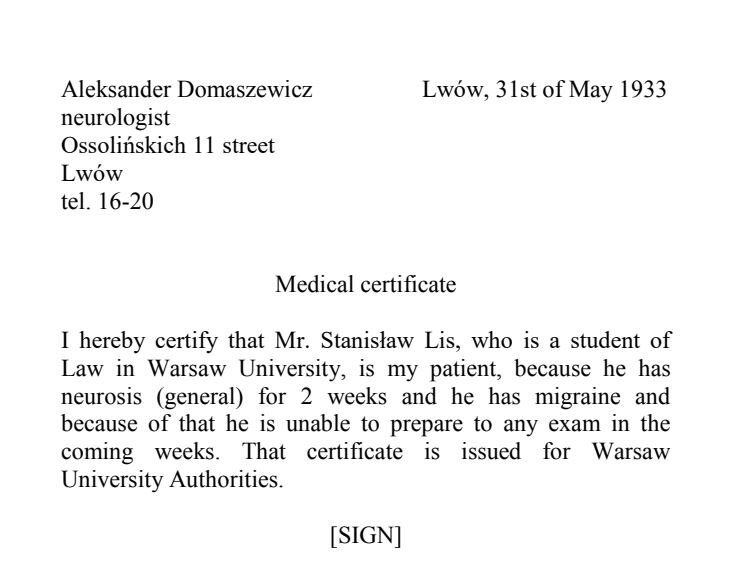


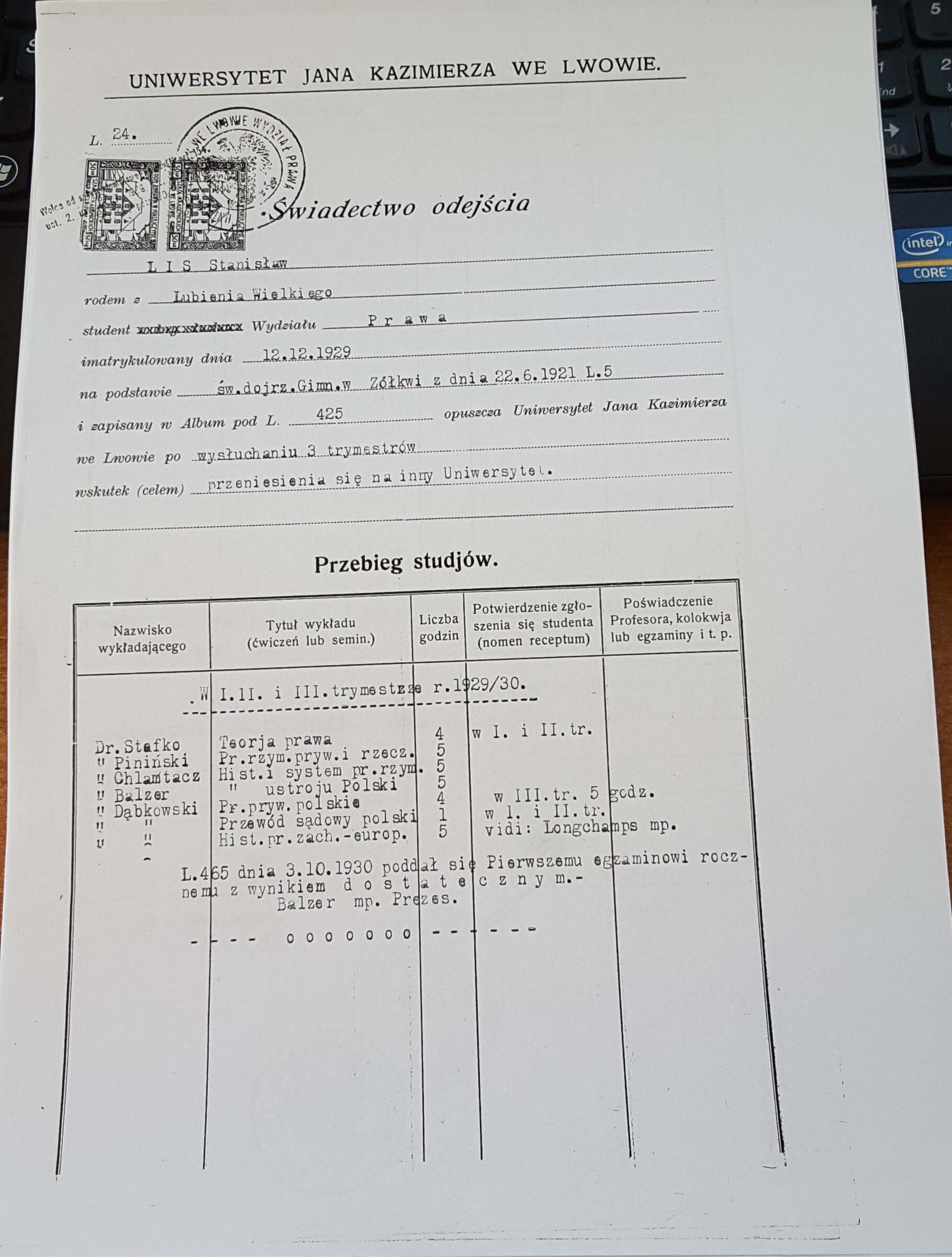

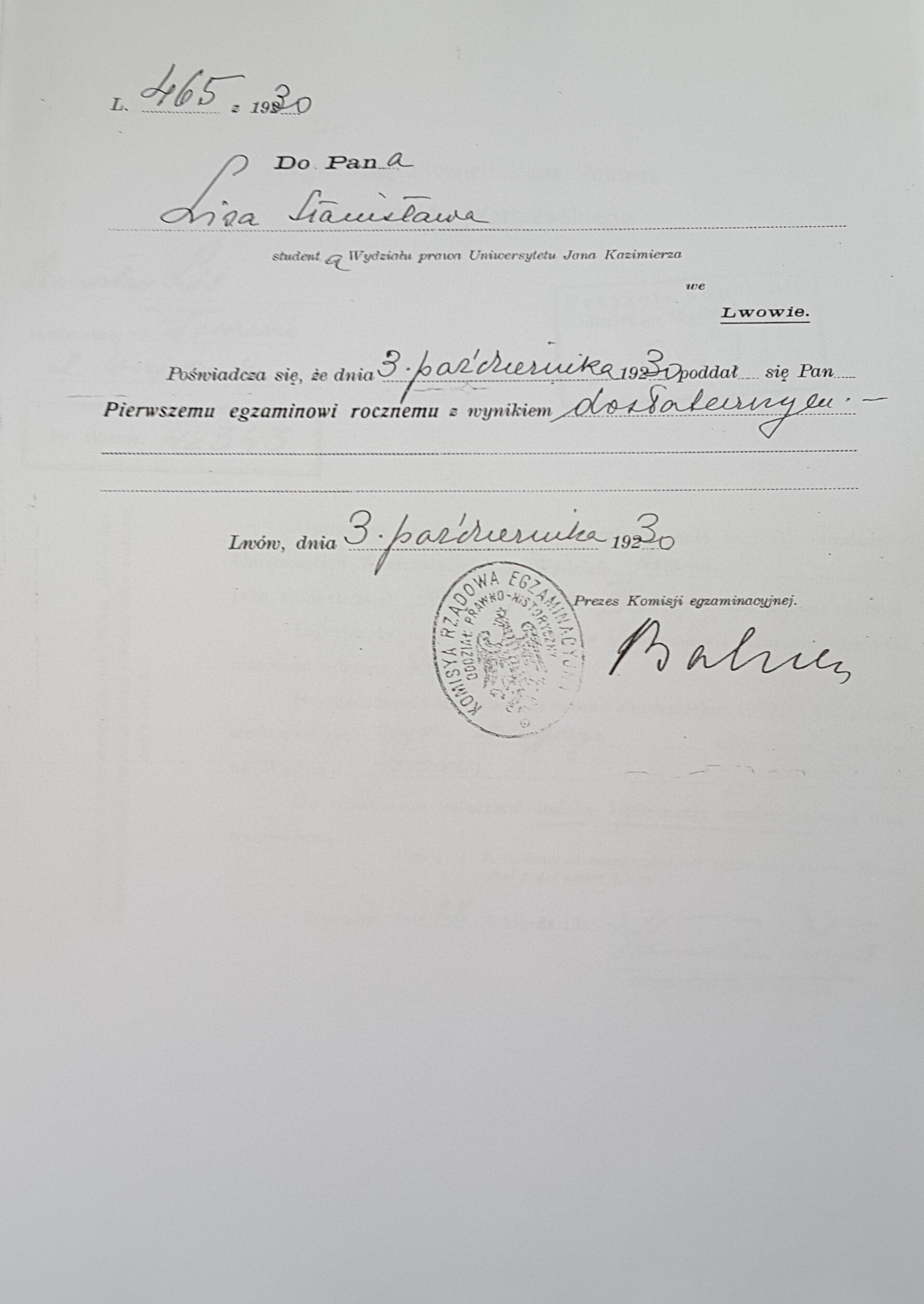
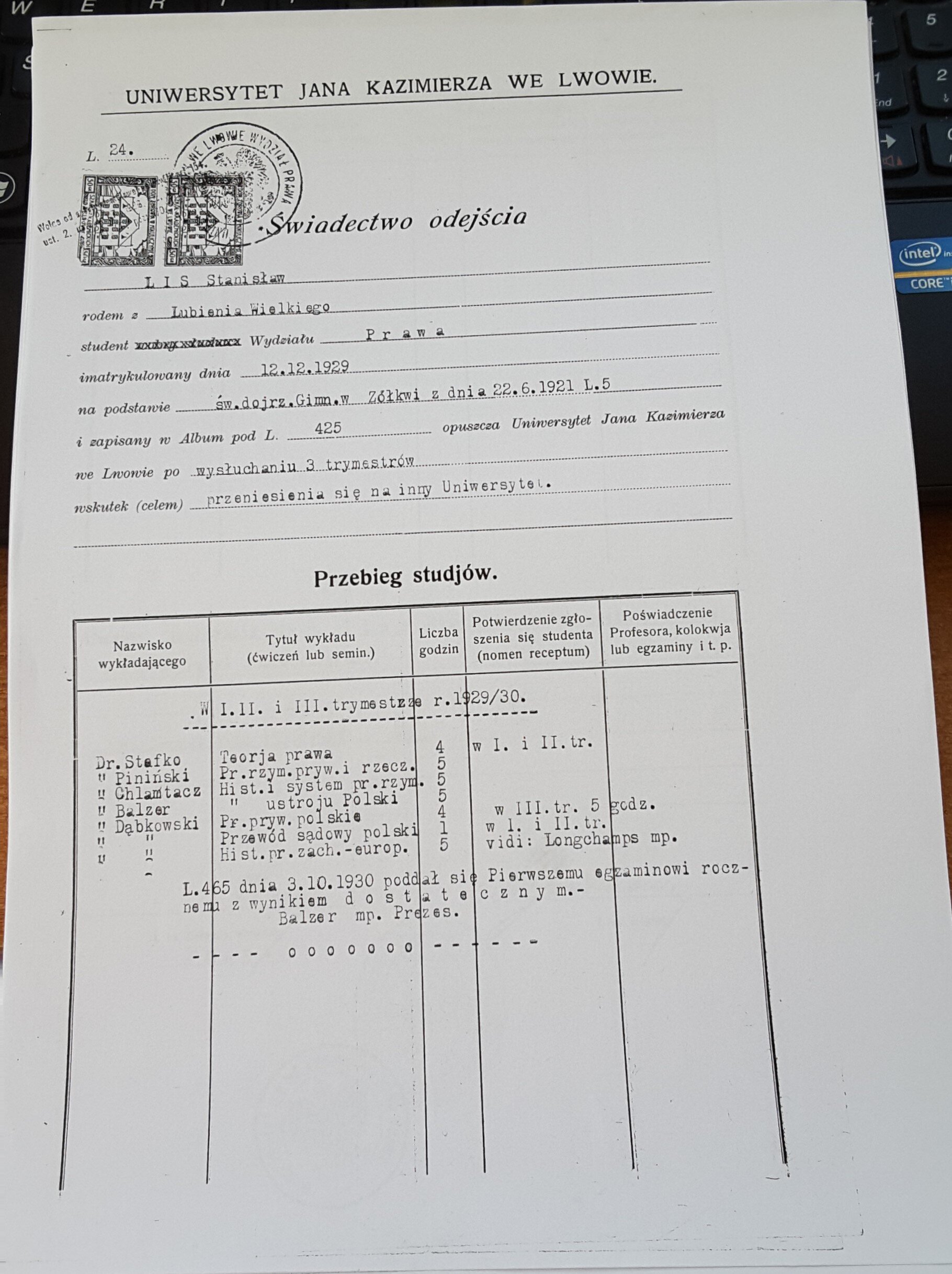
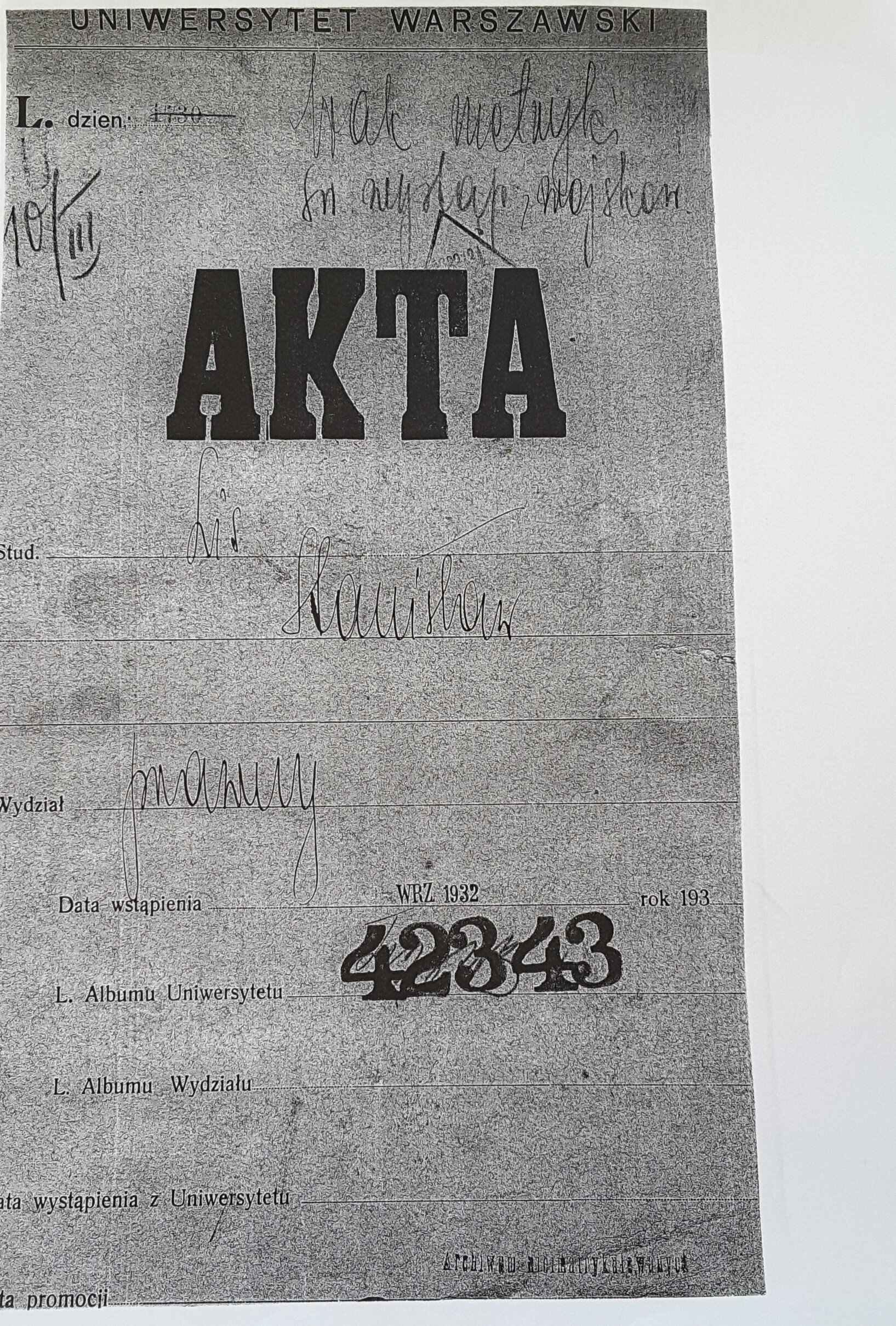
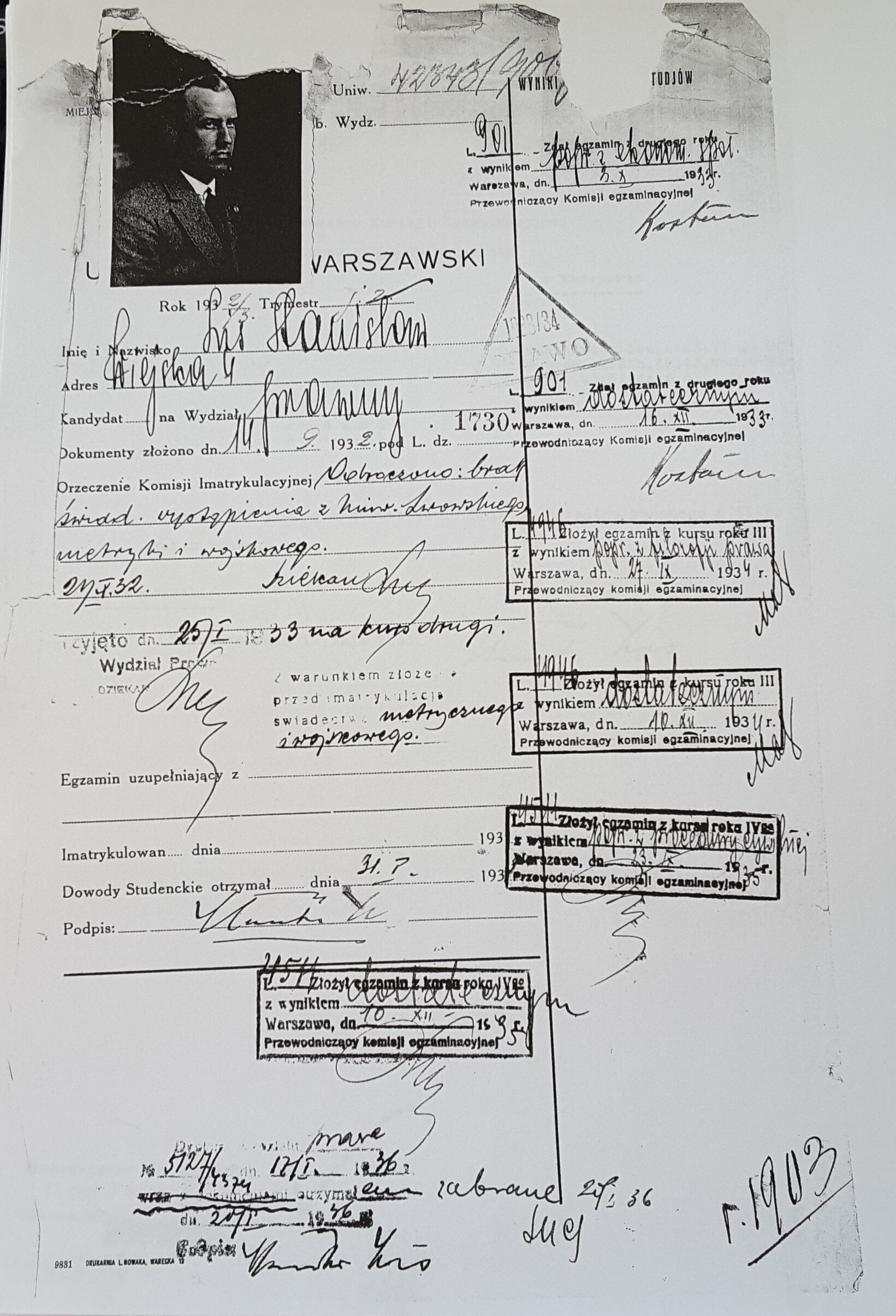
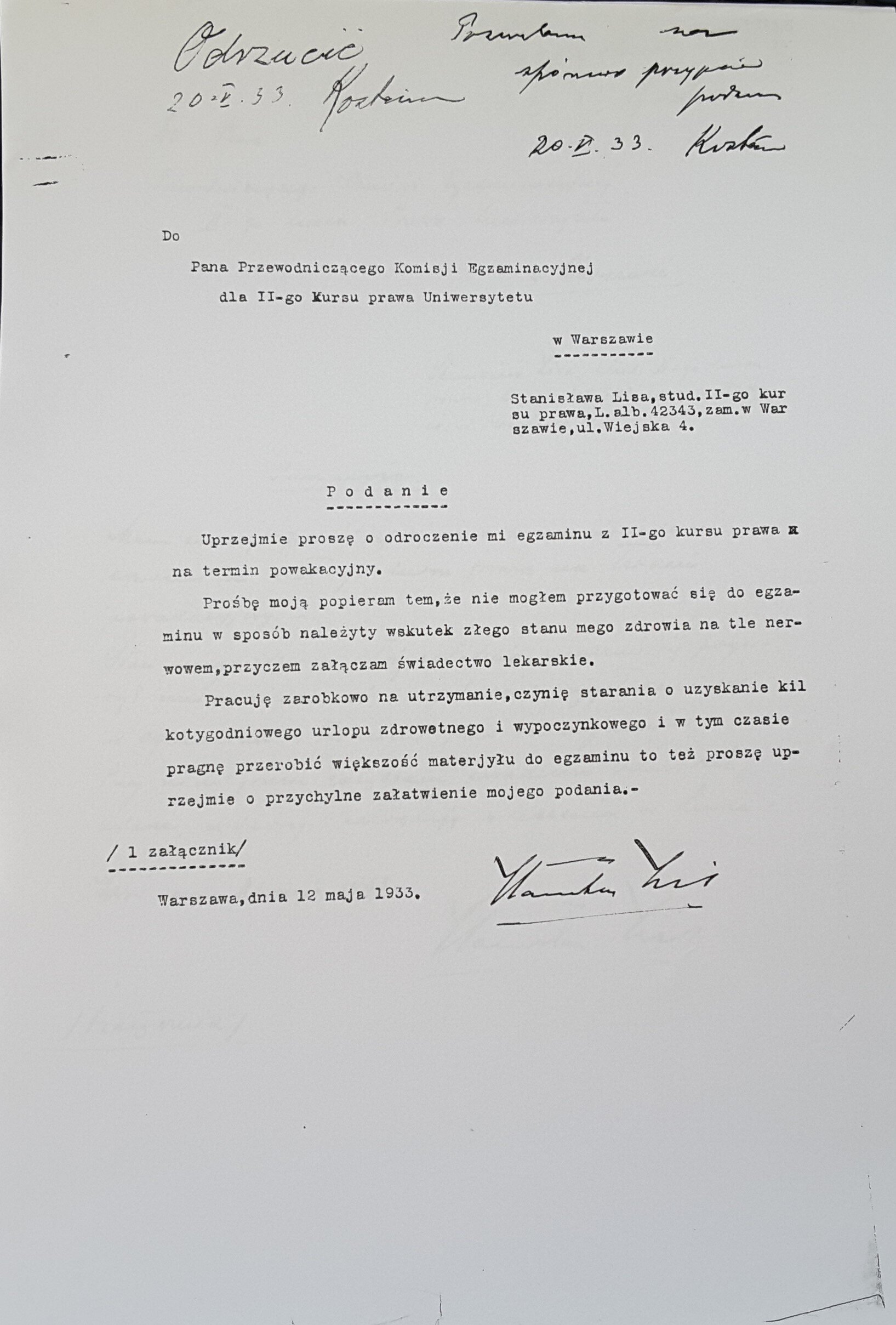
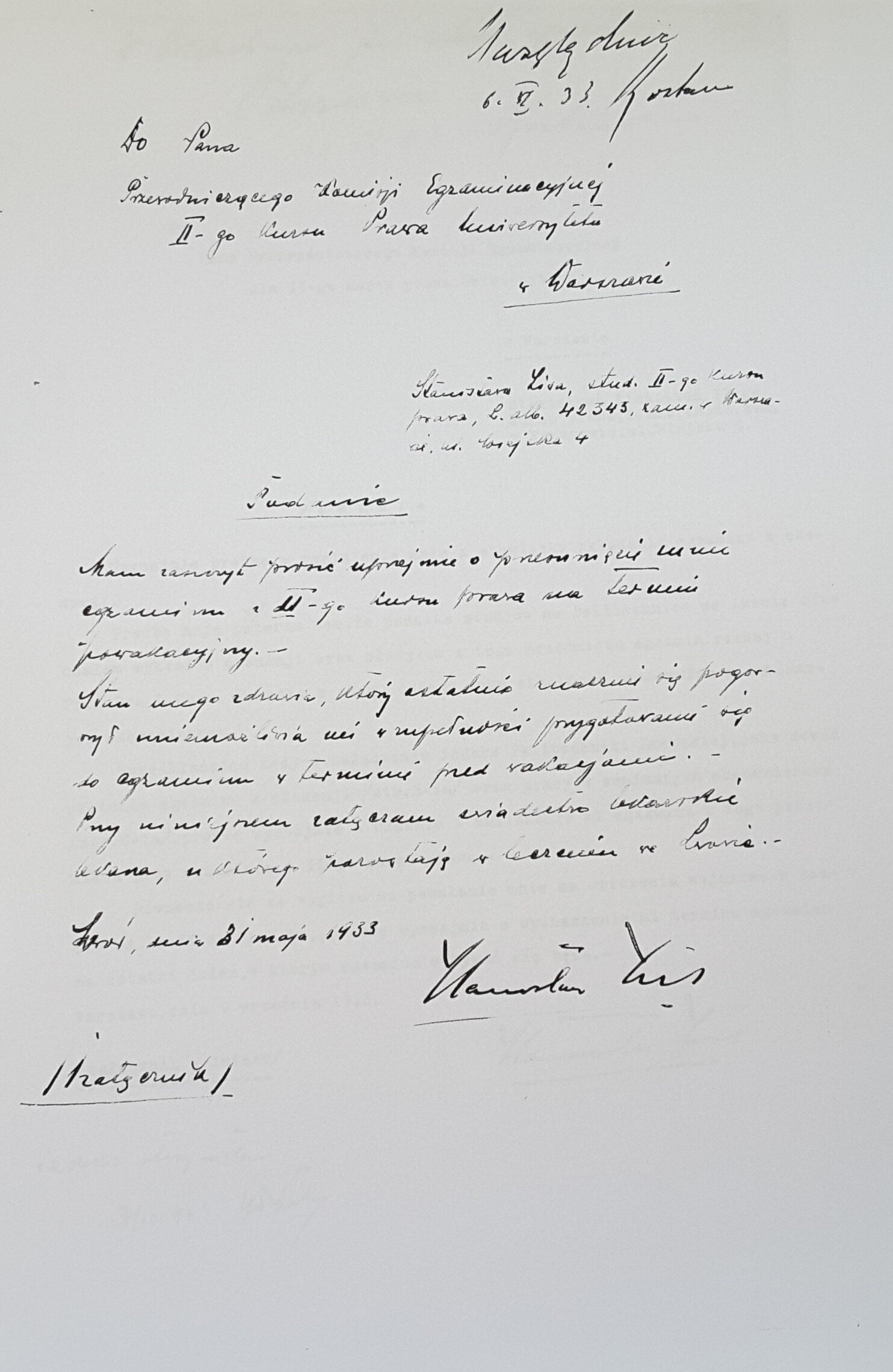
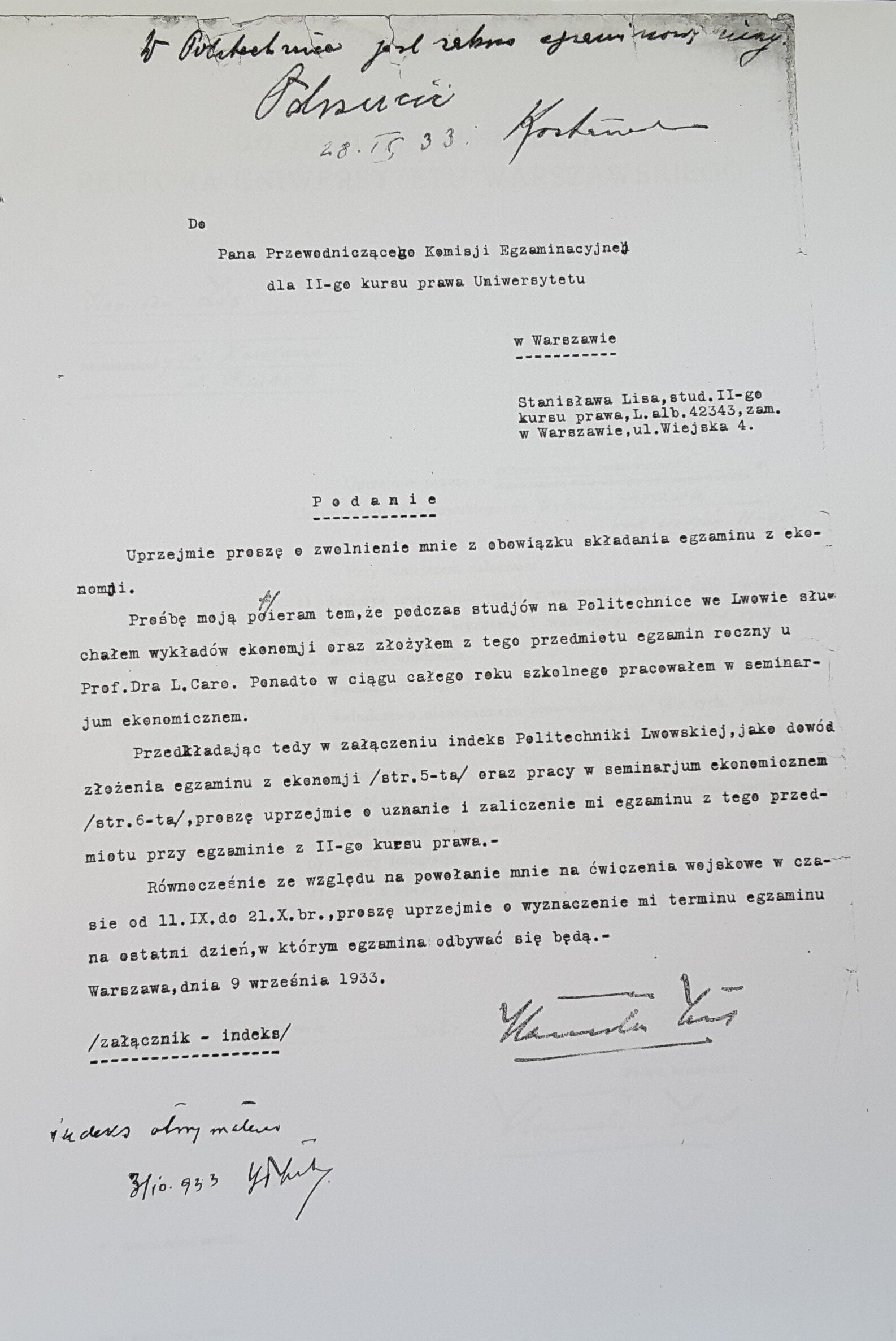
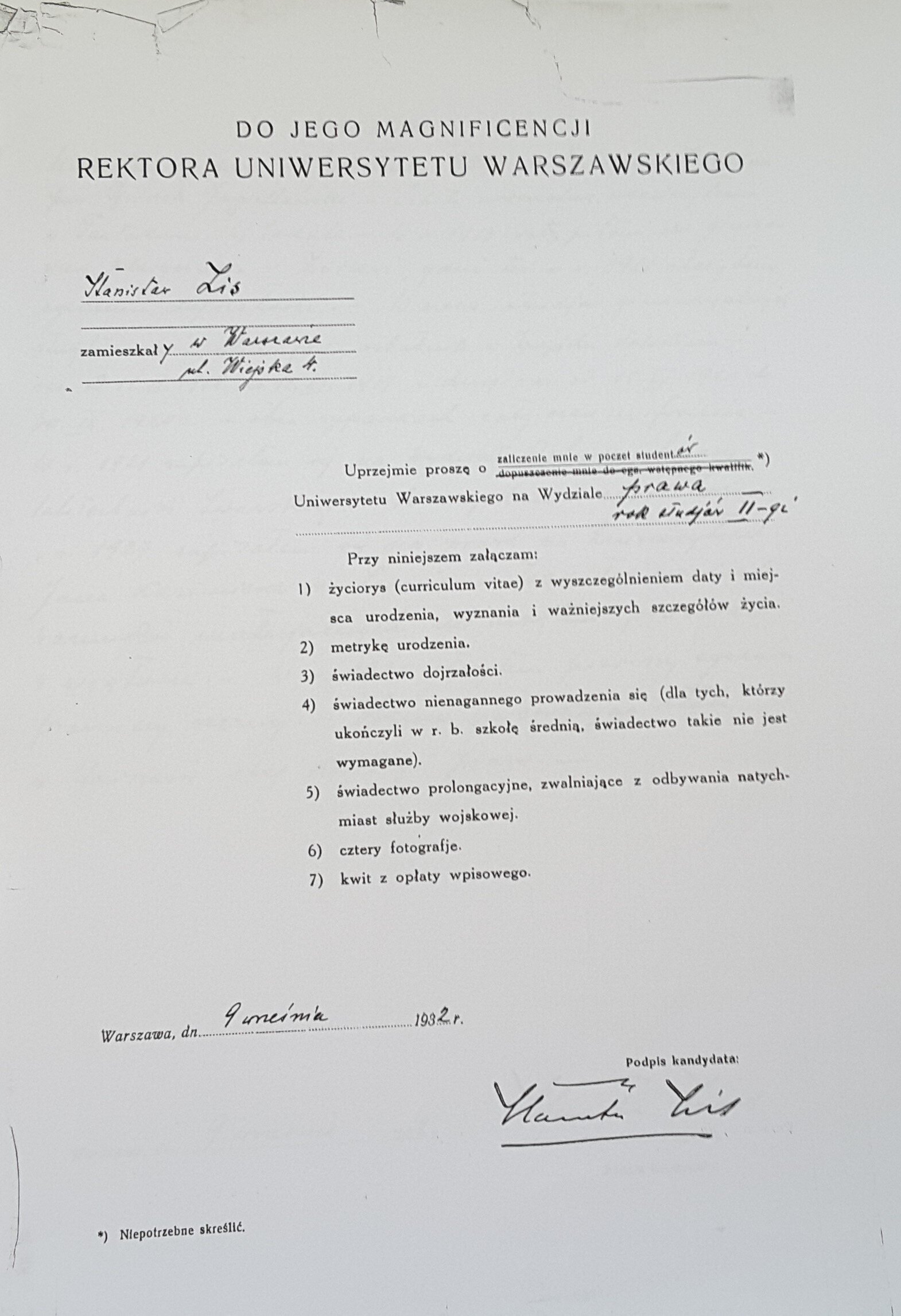

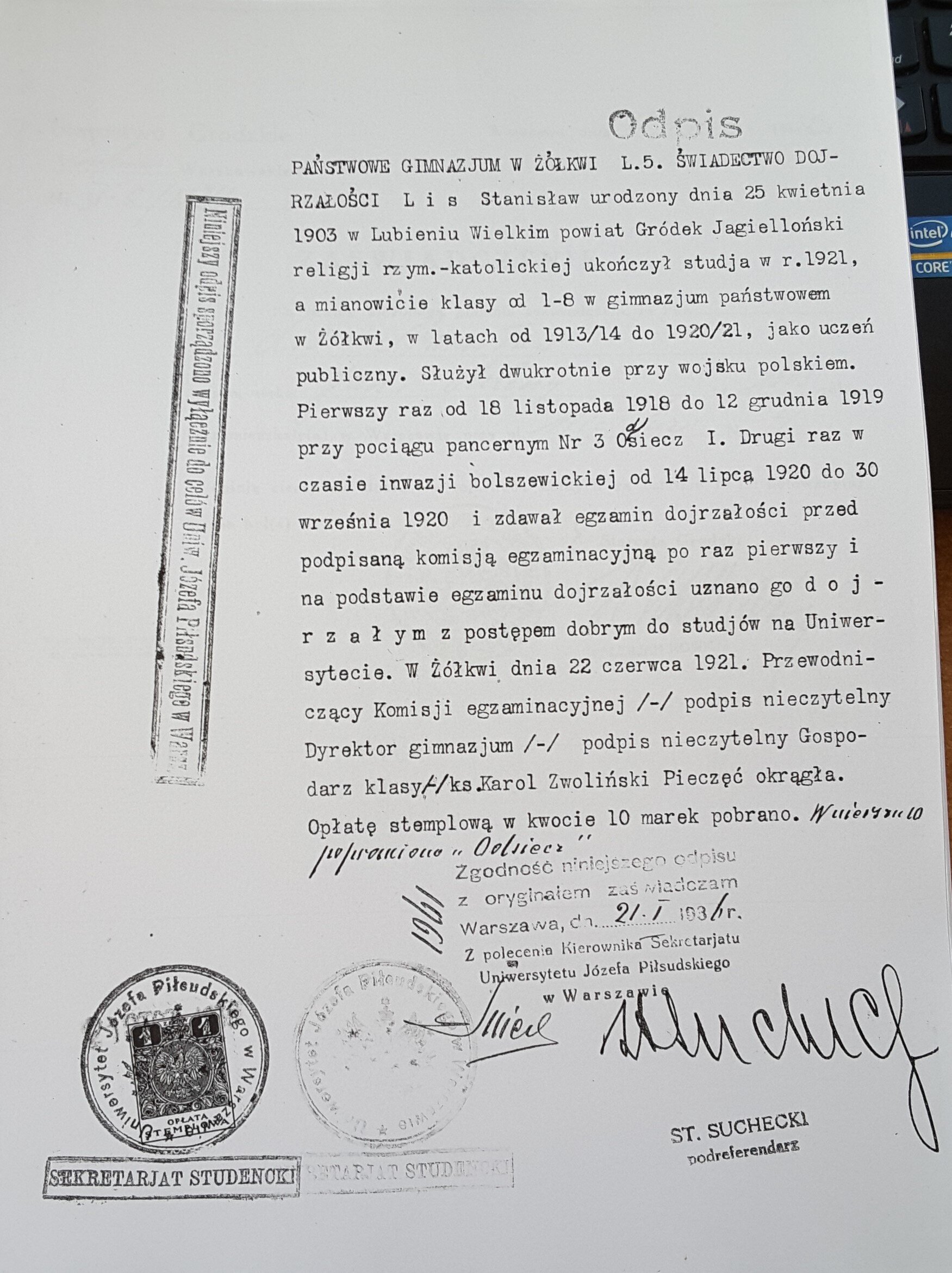
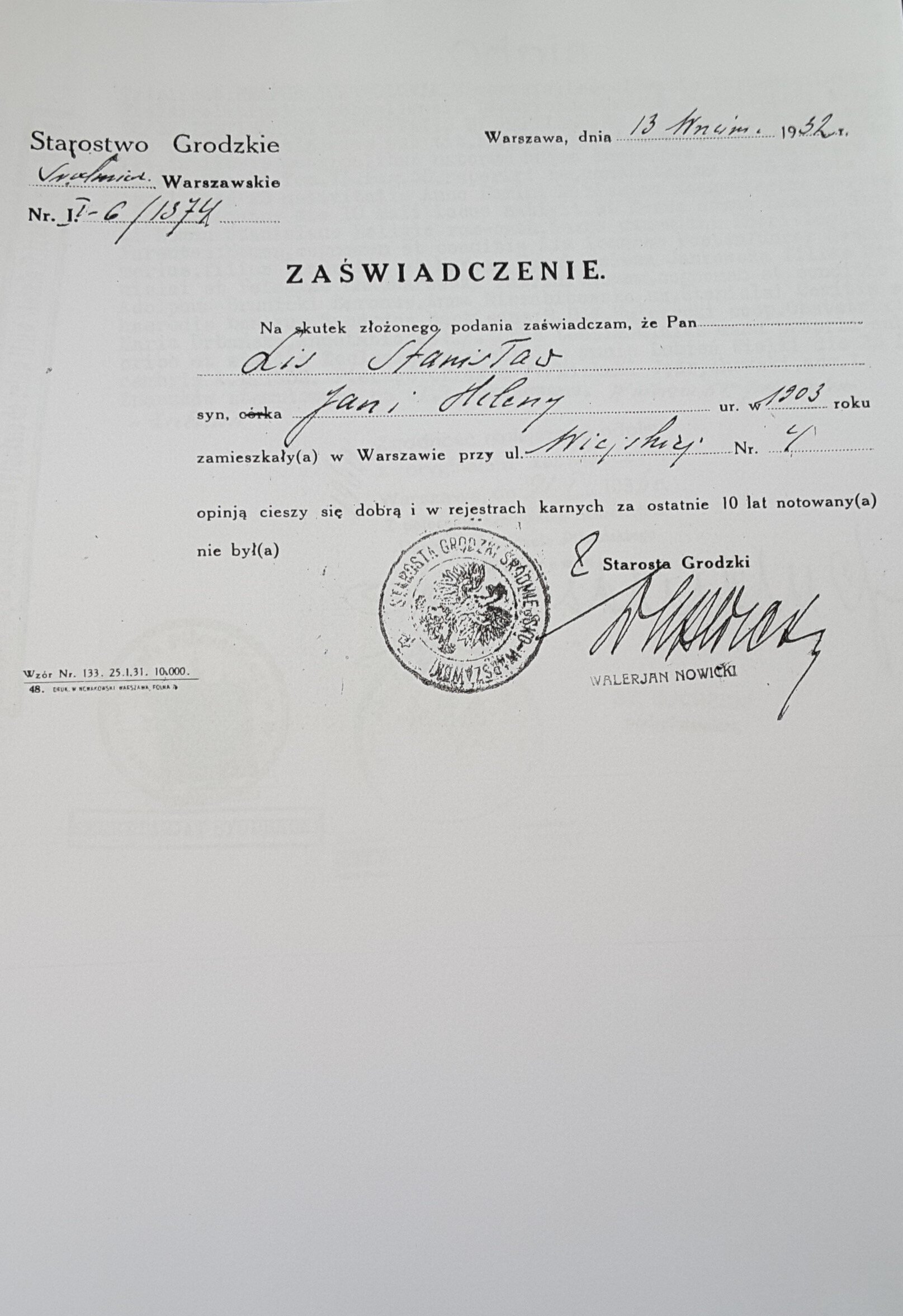
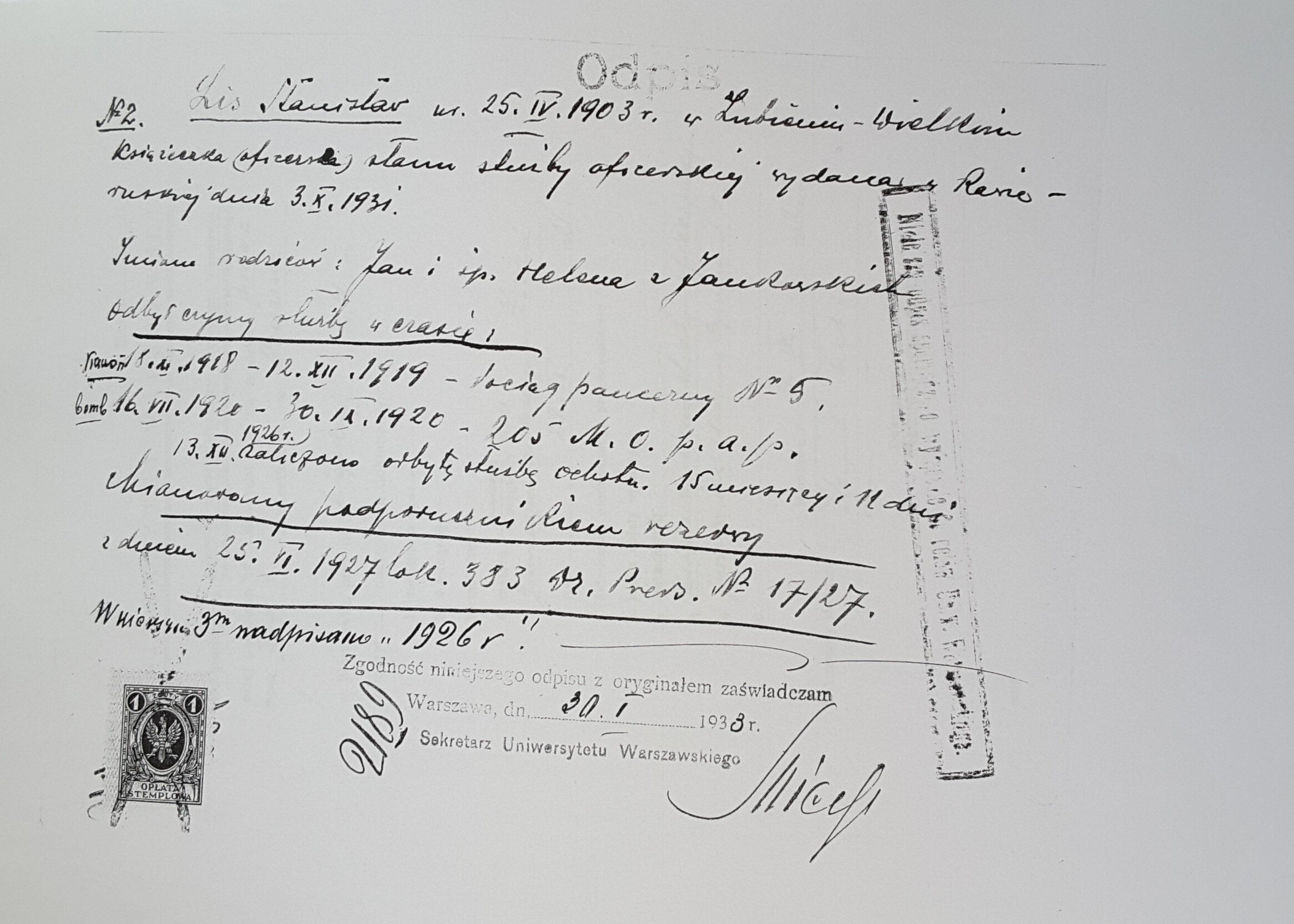
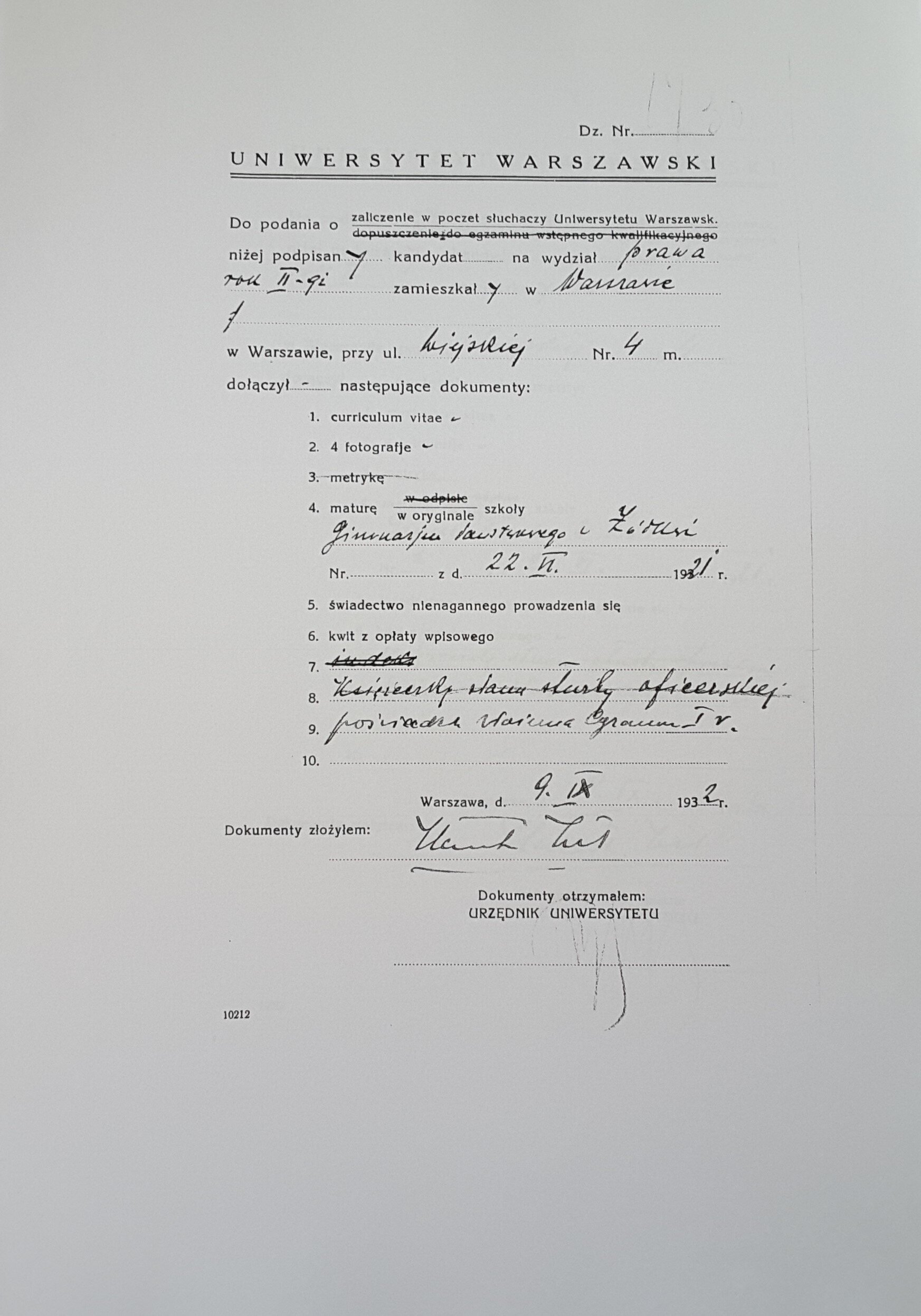
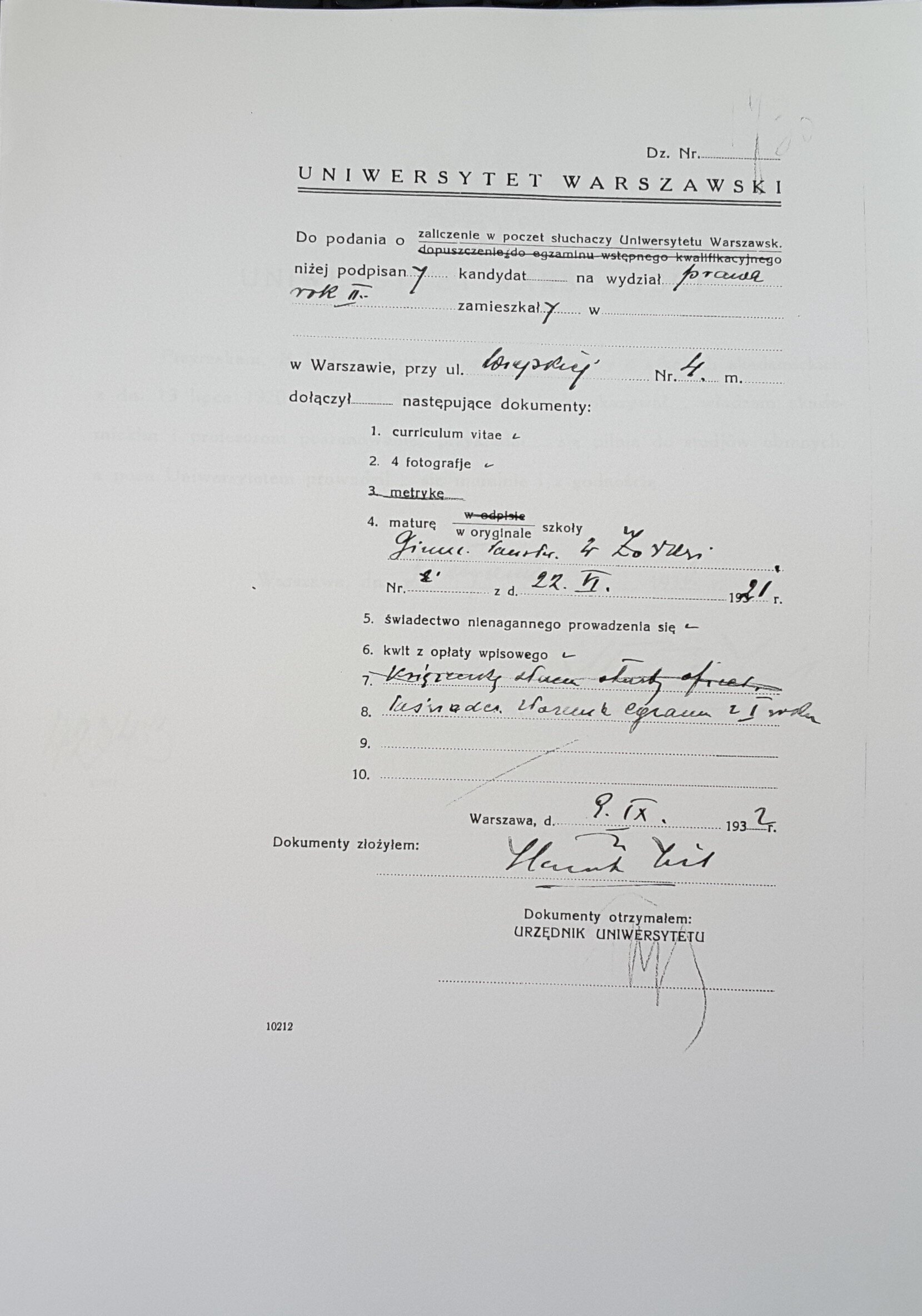
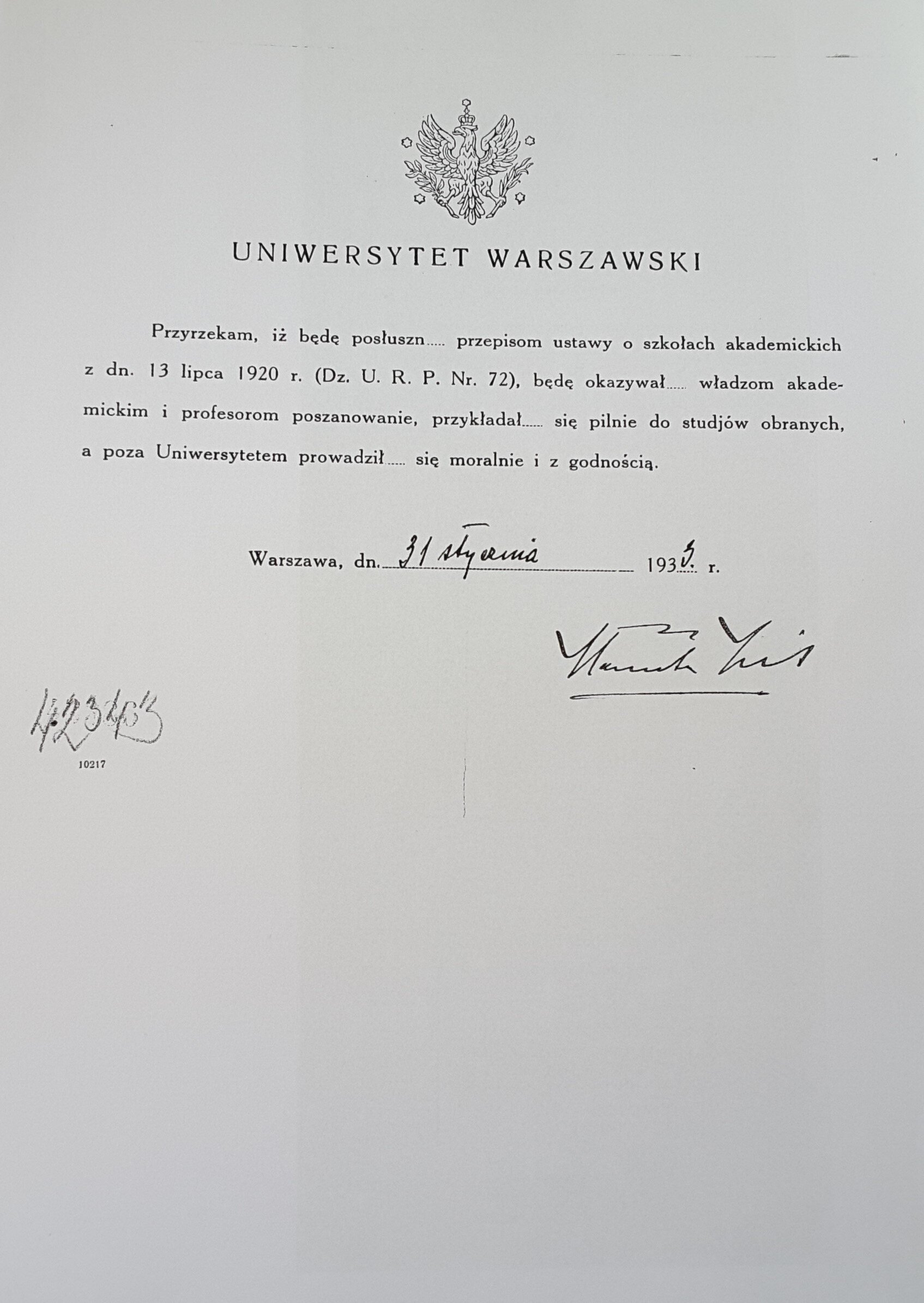
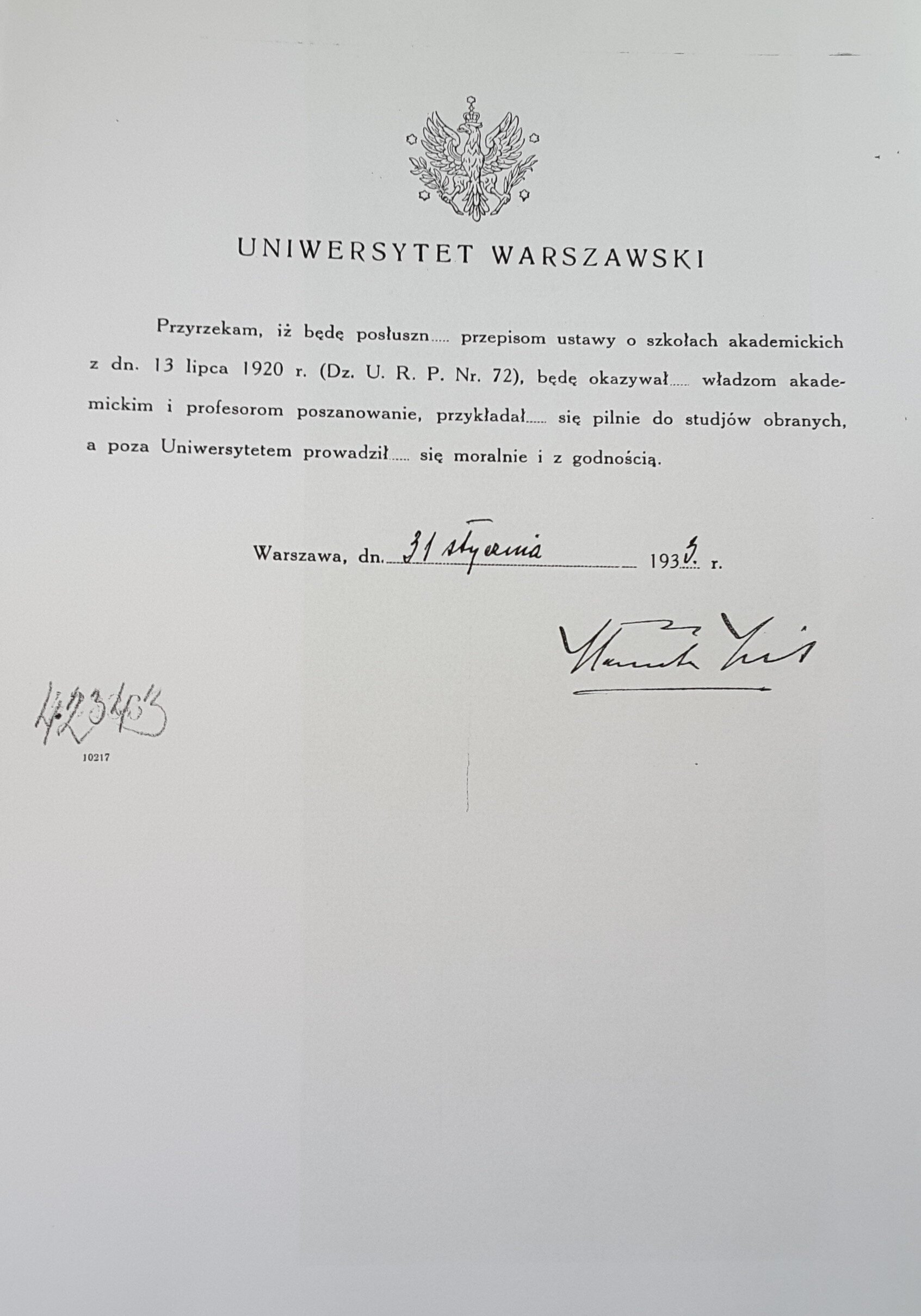
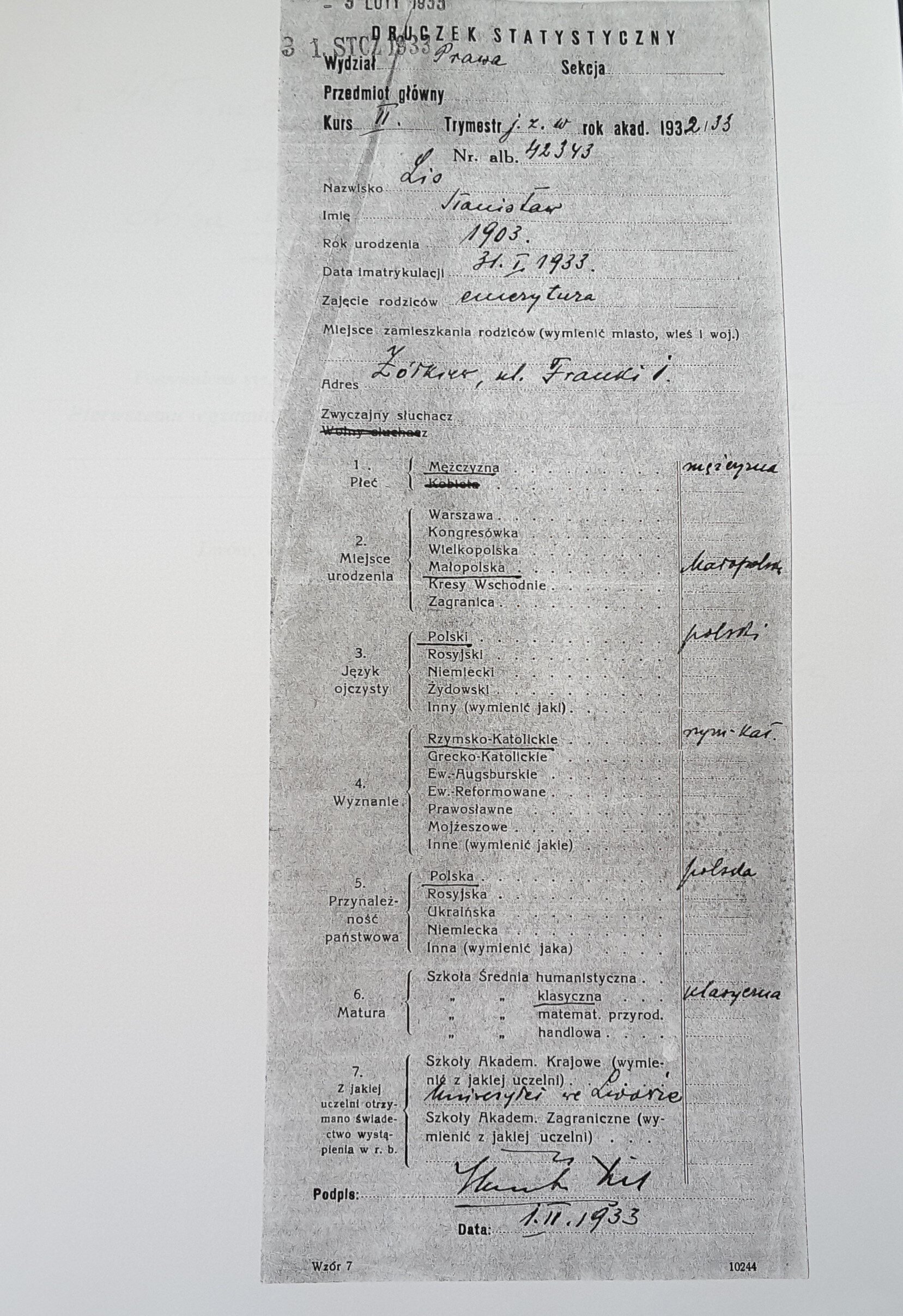

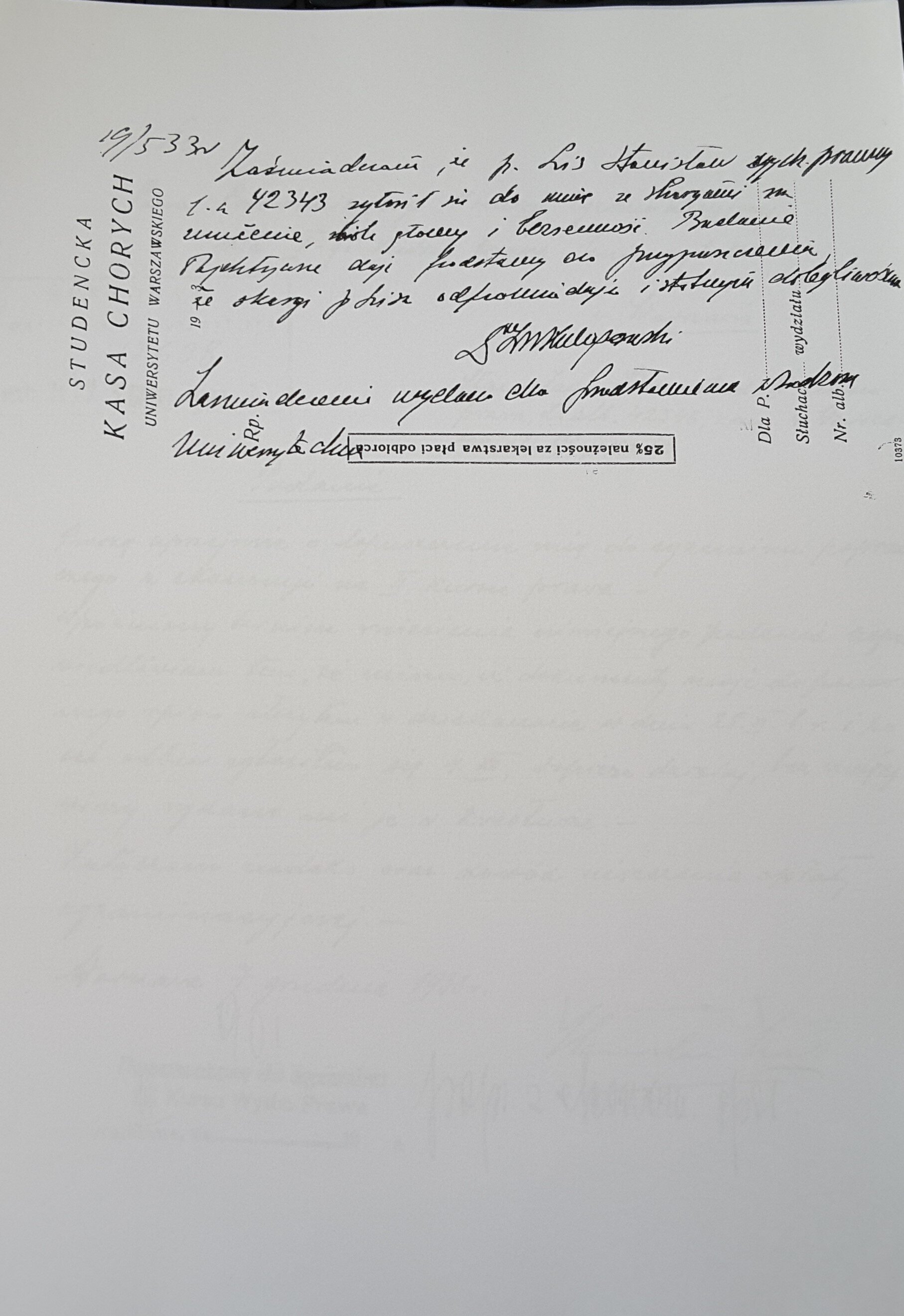
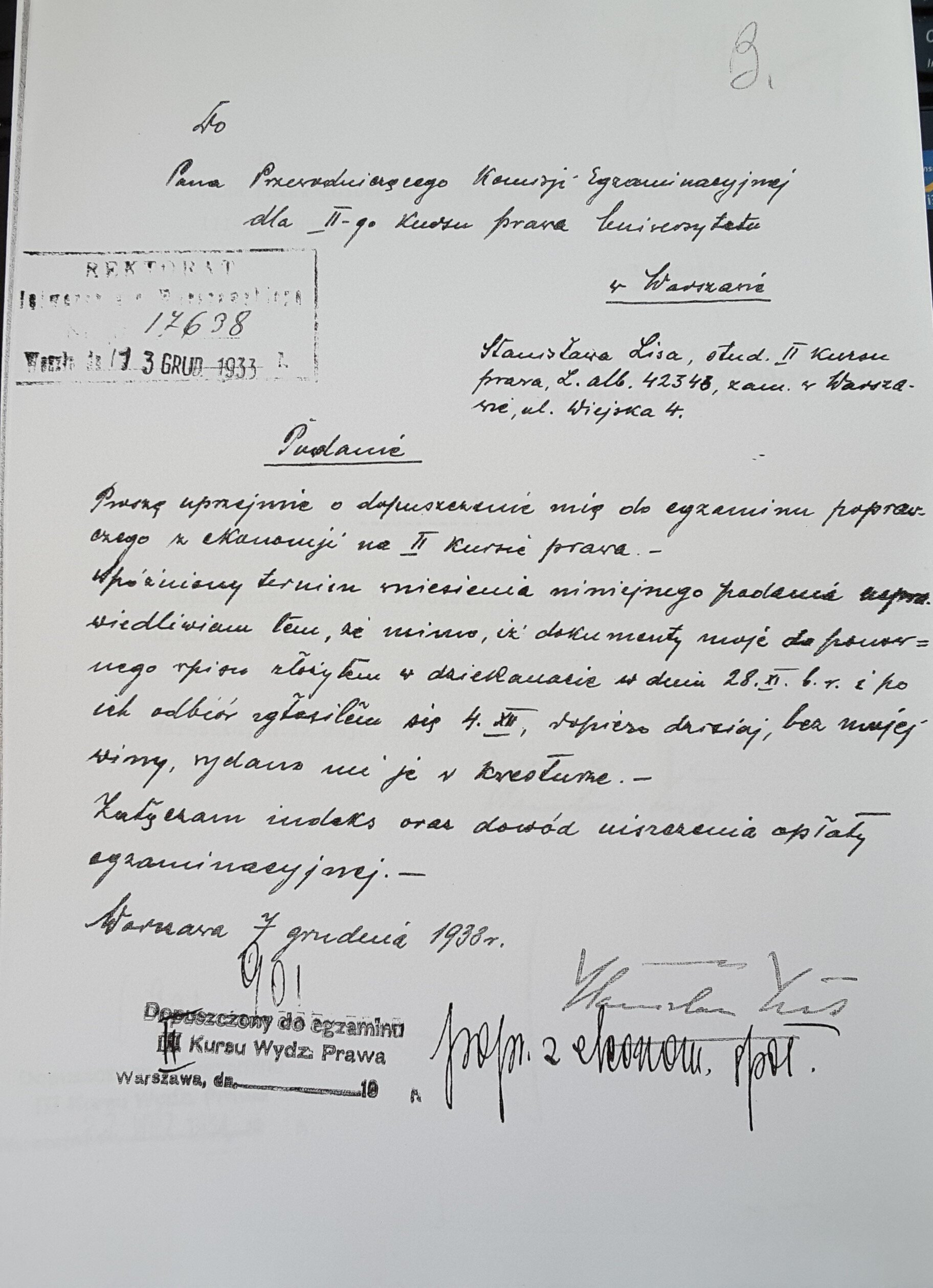
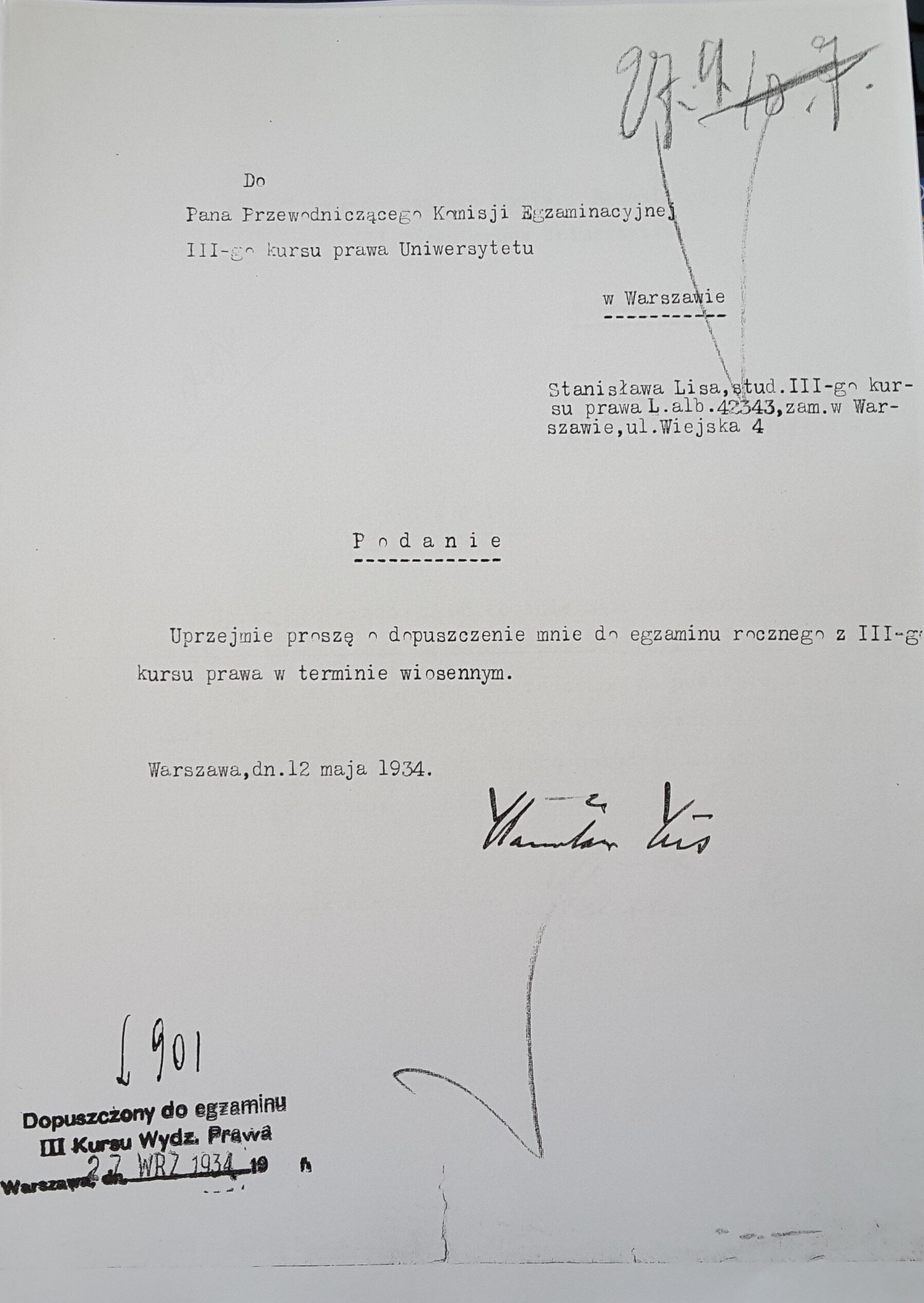
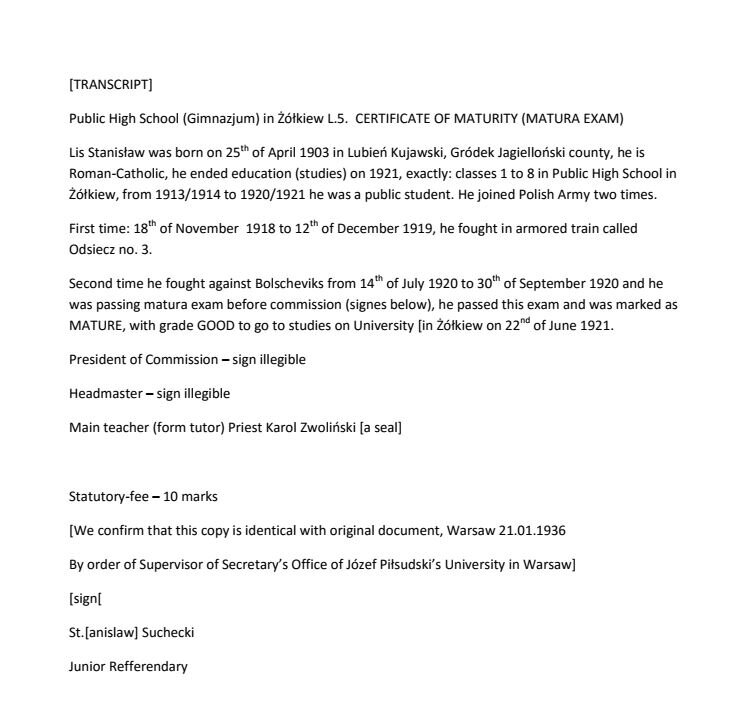
Having passed his first Law exam in 1930, he was able to secure Count Niezabitowski’s patronage and request references for his application to work in the Economics Ministry in Warsaw. He was successful in this and moved to Warsaw, taking up a post in the Forestry section of that Ministry. His personal situation had interrupted his studies and with that stabilised by 1932, he submitted a request to continue these by distance learning receiving permission to do so. In the interim (1933) he married Helena nee Rothenberg and was re-assigned to work in the President’s Chancellery
Sejm Papers

























































































































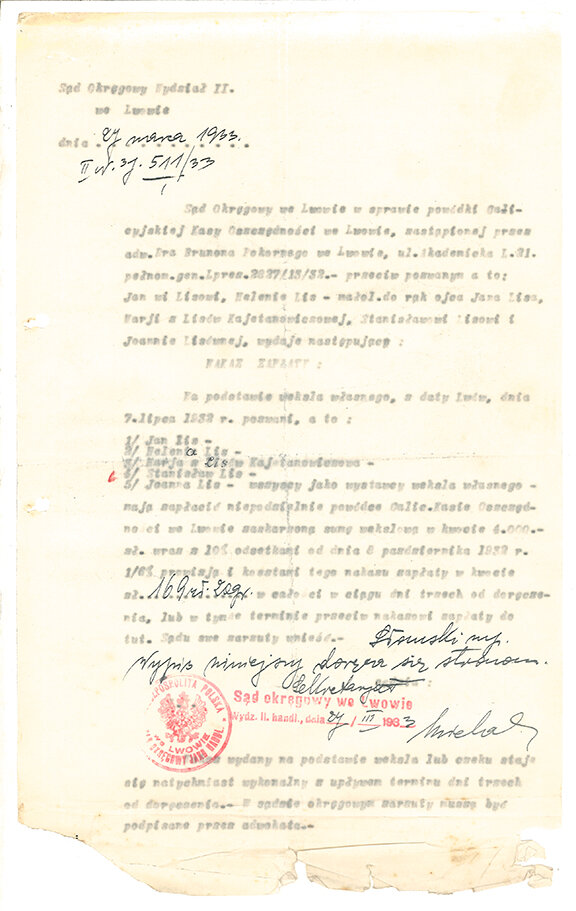
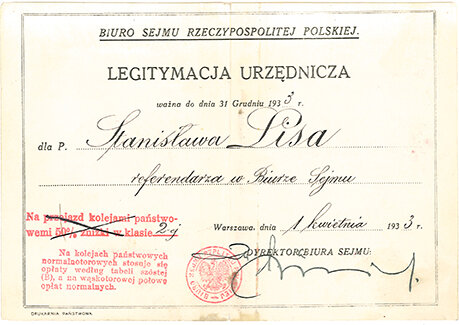
INTERWAR YEARS – GOVERNMENT SERVICE
The Oath
21 July 1931
Polish original: „Przysięgam Panu Bogu Wszechmogącemu - Przyrzekam uroczyście, że na powierzonem mi stanowisku urzędowem przyczyniać się będę w swym zakresie działania, ze wszystkich sił do ugruntowania wolności, niepodleglości i potęgi Rzeczypospolitej Polskiej, której zawsze wiernie służyc będę: wszystkich obywateli kraju w równem mając zachowaniu, przepisów prawa strzec będę pilnie, obowiązki mego urzędu spełniać gorliwie i sumiennie, polecenia mych przełożonych wykonywać dokładnie, a tajemnicy urzędowej dochowam. Tak mi Panie Boże dopomóż.”
English translation: I swear to Almighty God and solemnly declare that in undertaking the duties required by the position assigned to me, I will commit all my strength to reinforcing the independence, freedom and might of the Republic of Poland, which I will always faithfully serve; to treat all citizens of the Republic equally; to strictly observe the laws; to fulfil the responsibilities of my office zealously and conscientiously; to carry out the instructions of my superiors in every respect; and to preserve the secrecy of official matters. So help me God.
Government Service – Documents
1931–1932: Issued his initial ID as a probationary clerical officer at the end of his probationary year.
1934
Office of the Sejm Chancellery
Warsaw, 19 January 1934
The Marshal of the Sejm, by order dated 18 January 1934, appoints Mr. Stanisław Lis as referendary (legal advisor).
1935
L.OF.b- ł64/A
Warsaw, 17 May 1935
The Office of the Sejm Chancellery hereby certifies that Mr. Stanisław Lis, referendary, is delegated to fulfil duties connected with the travel of Members of Parliament and Senators to the funeral ceremonies of the First Marshal of Poland on 18 May 1935, and to accompany them on their return to Warsaw.
Signed: Director, Office of the Sejm Chancellery
1937
B.ł. 4014/37
Warsaw, 31 March 1937
To Mr. Stanisław Lis, Advisor to the Inner Cabinet – Council of Ministers
You are hereby appointed as Advisor in the General Department of the Ministry of Finance.
For the Minister of Finance: /-/ W. Drojanowski
1939
Ministry of Finance
Warsaw, 31 January 1939
To Mr. Stanisław Lis, Advisor at the Ministry of Finance
In connection with the resolution of the Council of Ministers dated 15 November 1938, I assign you to the Minister’s Private Office.
For the Minister of Finance: /-/ St. Widomski
Director of Department
Signed by:
Officer Commanding, No. 2 Battery: Ryszard Radzikowski
Battalion Commander: Lt. Col. Władysław Kaliszek
In Warsaw Stanislaw’s military assignment changed and he was transferred to the 1st Horse Artillery Battery ( 1 Dywizjon Artylerii Konnej), stationed in Warsaw. Apart from being required to take part in regular training and manoeuvres, he was involved in various public duties and parades which brought him into contact with the cream of Warsaw society and during Pilsudski’s funeral, with foreign dignitaries whom he was assigned to escort and look after, his knowledge of four languages no doubt assisting him in this task.
Yearly Qualification Record (1938)
Rank: Lieutenant in the Reserve (Porucznik Rezerwy)
Unit: 1st Horse Artillery Battalion, Named for General Józef Bem
Service Branch: Corps of Artillery
Date of Birth: 25 May 1903
Place of Birth: [Not listed, but likely within interwar Poland—possibly Warsaw or Rawa Mazowiecka]
Civil Status (as of 1937): Married to Helena Teresa Maria Rotenburg-Sołomirecka
Original Polish Source: Roczne Uzupełnienie Listy Kwalifikacyjnej
Unit: 1st Horse Artillery Battalion (1 Dywizjon Artylerii Konnej), Corps of Artillery
"Well-rounded and developed character. Highly developed sense of honour and personal dignity. Approaches military training with seriousness and conviction. Very strong sense of duty and discipline. Excellent social conduct and upbringing. Physically resilient. Excellent bearing and presentation.
Sharp intellect with broad general knowledge. Excellent judgement. Highly capable organiser. Has fully mastered the necessary level of military knowledge.
Demonstrated great energy and independence while commanding a platoon and acting as a fire officer.
Gained significantly from military training. Fully suited for battery command in time of war."
his is an official evaluation likely submitted as part of an annual officer review system in the interwar Polish military. In the late 1930s, Poland maintained a significant reserve force, expecting many officers like Lis to be called up in the event of a national emergency, which indeed occurred in 1939.
Until the outbreak of the war in 1939, he continued his career as a government official in the centre of Warsaw.
Invasion of Poland, call up from the Reserves and the September Campaign, and capture by the Germans
By the late 1930s, Stan held a respected role in the Ministry of Finance. On 24 August 1939, amid rising tensions, he was mobilised as part of the Mazowiecka Cavalry Brigade, initially commanding the battery’s ammunition supply column. He fought in the northern defence of Warsaw and the withdrawal of the Modlin Army. On 21 September 1939, after suffering severe losses, the unit reorganised and he was appointed Battery Adjutant. He participated in the Battle of Tomaszów Lubelski until Warsaw’s capitulation on 27 September. Taken as a German prisoner of war, he escaped just days later, returned briefly to Warsaw, and departed for France in November 1939.
Stanisław Lis: Account of Military Mobilisation and Escape (August 1939 – February 1940)
With rising tensions in Europe and the looming threat of German invasion, Stanisław Lis, then a reserve officer of the Polish Army, was mobilised on 24 August 1939 at 5:00 AM, joining his former unit—the Horse Artillery Battalion—in Warsaw. He was placed in command of a cavalry unit and remained in that position until 20 September 1939. From 21 September, he was appointed Adjutant to Squadron Commander Tadeusz Pietsz.
“I was called up from the Army reserve on 24 August 1939, at five o’clock in the morning, to report for duty with the Horse Artillery Battalion in Warsaw. I was placed in charge of a cavalry unit and remained in that role until 20 September. From 21 September, I served as adjutant to Commander Tadeusz Pietsz.”
On 26 August, shortly after mobilisation, the entire battalion moved out of Warsaw toward Radzymin, part of broader Polish defensive preparations under the Plan West (Plan Zachód), to counter the anticipated German assault. The unit passed through Lervek, Nasielsk, Narów, Przasnysz, and reached Kijewice by 30 August—just one day before the outbreak of World War II.
“Two days after my mobilisation, on 26 August, our battalion was ordered to move out of Warsaw. We advanced in the direction of Radzymin, passing through Lervek, Nasielsk, Narów, Przasnysz, and eventually reached the town of Kijewice on 30 August 1939. That was where the war met us.”
On 1 September 1939, Germany invaded Poland from the west. Three days later, under increasing pressure from the Wehrmacht's rapid advance and facing logistical disruption, Lis and his unit began a tactical retreat. During this period, his cavalry formation moved through approximately 30 towns, a testimony to the chaos and constant repositioning forced upon Polish units as they tried to regroup and counter the blitzkrieg.
Throughout this phase—until 20 September—Lis remained actively engaged in command. On 21 September, amid the continued Polish withdrawal, he became the squadron adjutant, serving closely with Colonel Karcz, commander of the Mazowiecka Cavalry Brigade. From 24 to 27 September, the unit fought under the designation "Mazur Squadron", taking part in heavy combat near Tomaszów Lubelski, one of the largest battles during the campaign. During this period, Lis also briefly served with an infantry battalion as the aide-de-camp to General Pierkarski, indicating his continued involvement at a high operational level.
On 27 September 1939, as Warsaw prepared to capitulate, Lis’s unit—encircled and outgunned—was forced to surrender in the town of Kiełkiełki (possibly a phonetic variant or misspelling of a village in the Lublin region). He was taken prisoner by the Germans. However, on 1 October 1939, while in transit or under detention in Ostasice, Lis managed a daring escape and made his way back to Warsaw.
Determined to rejoin the fight against Nazi Germany, Lis remained in hiding until he could legally secure passage out of occupied Poland. On 18 December 1939, with the assistance of a German-issued travel permit (for which he paid), he departed the country via Italy, reaching Rome. There, the Polish Consulate issued him a passport on 8 January 1940 (serial no. 11/274484), which enabled him to cross into France via Modane on 28 January 1940.
Just two days later, on 30 January 1940, he reported for duty with the Polish Armed Forces in exile in Paris, ready to continue his service in the campaign against Nazi Germany.
“In case of my death, please notify my wife.”
– Stanisław Lis, written in Paris, 22 February 1940
He finally left Warsaw on 18/11/39 and made his way to France, via Italy, crossing the French border in the last days of January 1940. After a period of retraining Stan was again assigned to the artillery. The German assault on France saw Stan once again in action, repeating his exploits of 1920 and preventing his battery’s guns from being captured by the Germans, for which he was awarded the French Croix de Guerre. However his unit was thereafter forced to withdraw and for the remainder of the French campaign, acting under the orders of the Polish High Command, they continued to withdraw seeking a safe port or neutral territory which would enable them to evacuate from France to the UK.
“On 1 October 1939, I escaped from captivity near the village of Ostrawice. I made my way to Warsaw, from where, following a summons from the German authorities, I left on 18 December 1939 and travelled via Italy to France. I crossed the French border on 28 January 1940 at Modane, on the strength of a passport issued by the Polish Consulate in Rome on 8 January 1940.”
The French Campaign
Arrival in Paris and Military Assignment
From Modane, Stanisław was sent to an assembly point for officers at the Bessières barracks in Paris, where he awaited assignment. He reported there on 30 January 1940.
“I crossed the French borders on 28.01.1940 in Modane, based on the passport issued by the consulate in Rome, dated 8.01. 1940, serial no 11/274484 no 729/1/40.
I joined the Armed Forces in Paris on 30.01.1940.
In case of my death, please notify my wife.
Stanislaw Lis
Paris 22.2.1940’
Assignment to the 1st Wilno Light Artillery Regiment
He waited until April 1940 before being posted to the 1st Wilno Light Artillery Regiment (1. Wileński Pułk Artylerii Lekkiej), which was in the early stages of formation at Coëtquidan as part of the 1st Grenadier Division. He was appointed commander of the ammunition column of the 3rd Battalion (III dywizjon).
Approximately 50% of the Polish Army being formed in France at this time was made up of untrained volunteers—mostly Polish émigrés from France, Belgium, and other countries. An intensive training period began, but the German threat meant that training was rushed and incomplete.
German Invasion and Battle in Lorraine
The German offensive began in June 1940. For three days, the Polish 1st Grenadier Division repelled all attacks in their sector. As the French Army began to retreat, Stanisław’s unit—the 1st Light Artillery Regiment—covered their withdrawal with artillery fire. After a general withdrawal was ordered, they continued to provide covering fire for Polish units as well.
Over the next week, the Division conducted a series of fighting retreats, eventually falling back to the Marne–Rhine Canal. Eventually, they were surrounded near Baccarat. With losses nearing 50%, and under orders from the French High Command, the 1st Grenadier Division, including Stanisław’s unit, was ordered to lay down their arms.
5Citation for Bravery
The bravery and experience of Polish soldiers - many of them veterans from the 1939 September Campaign—did not go unrecognized. Stanisław was officially commended for his courage:
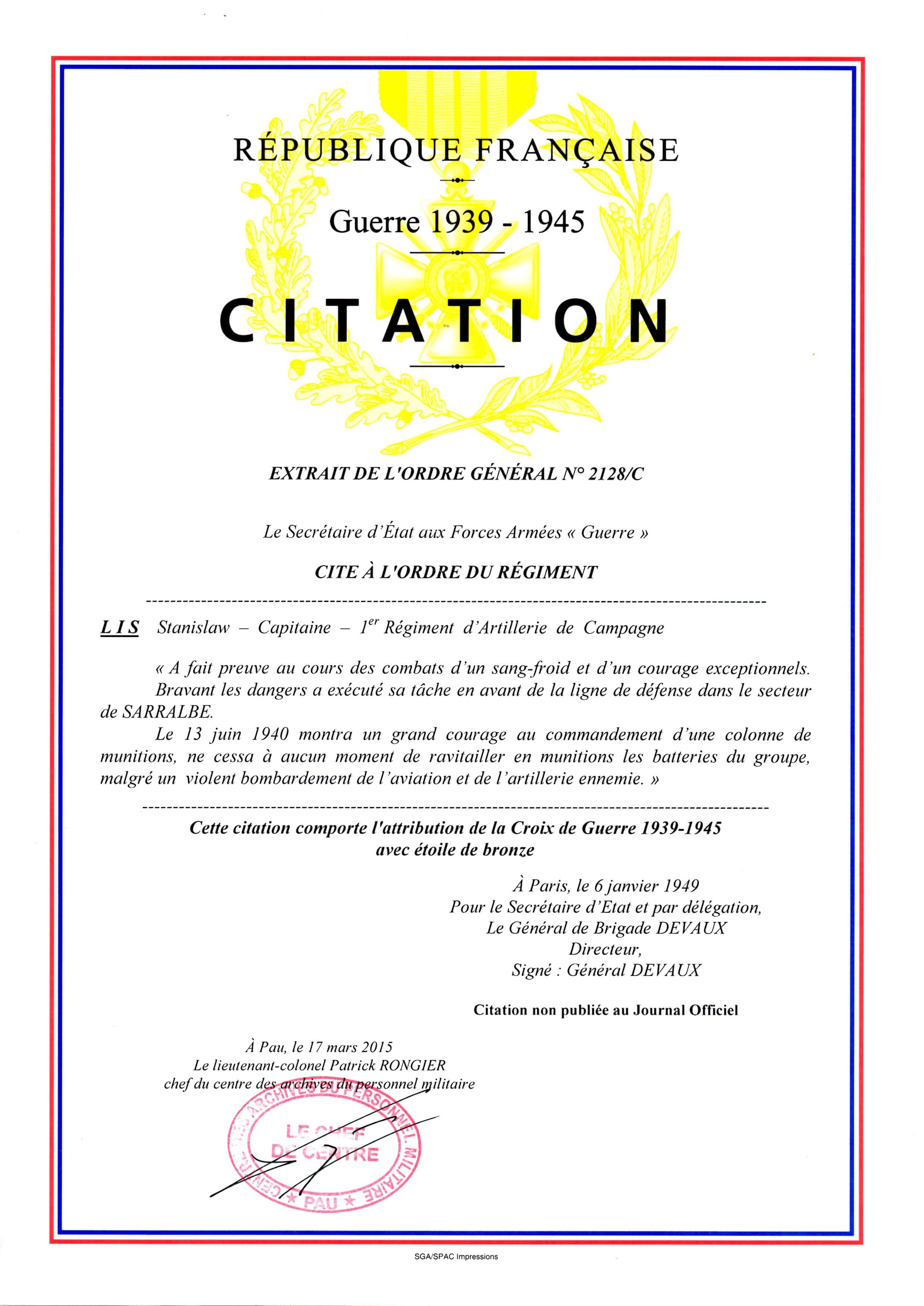
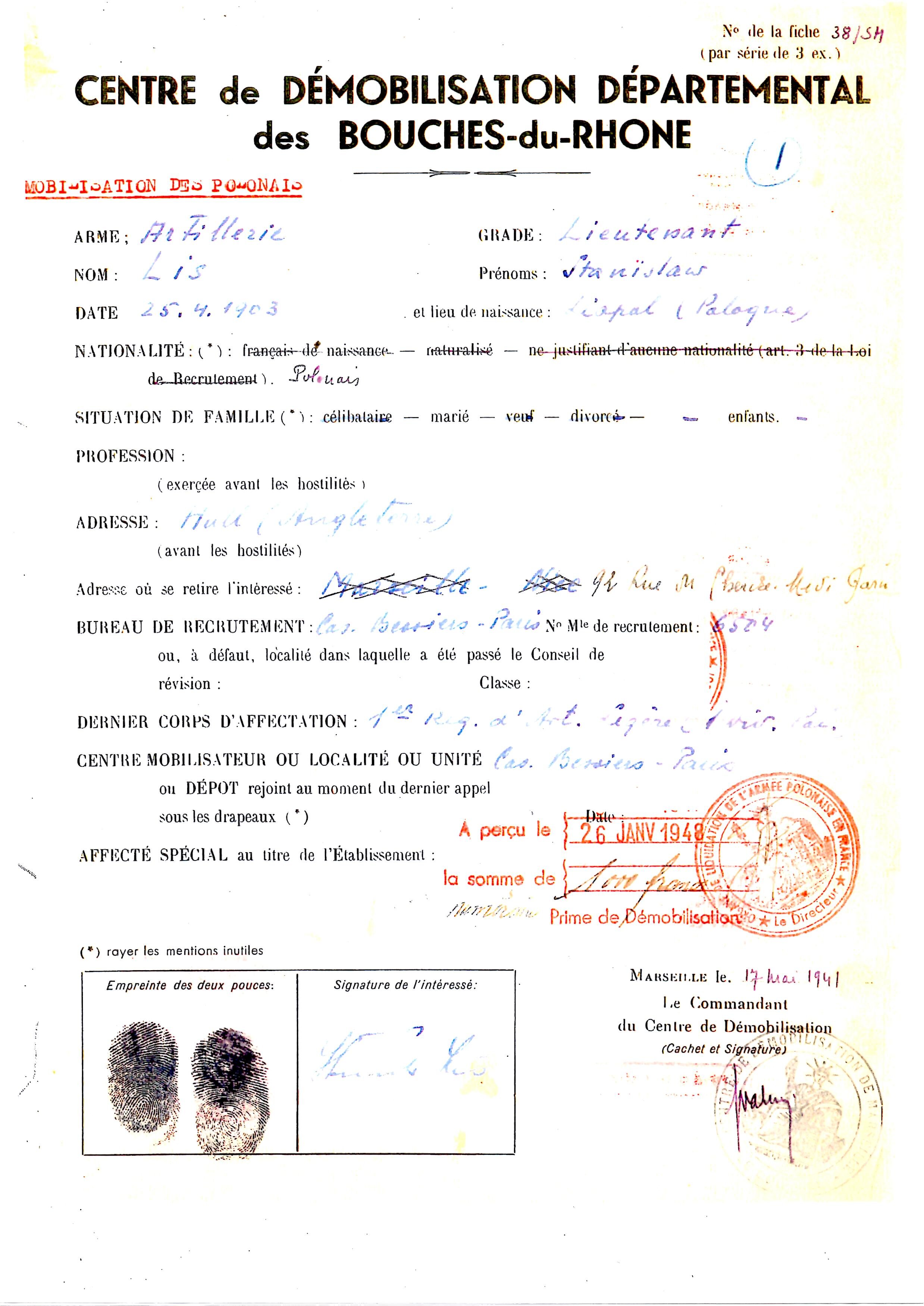
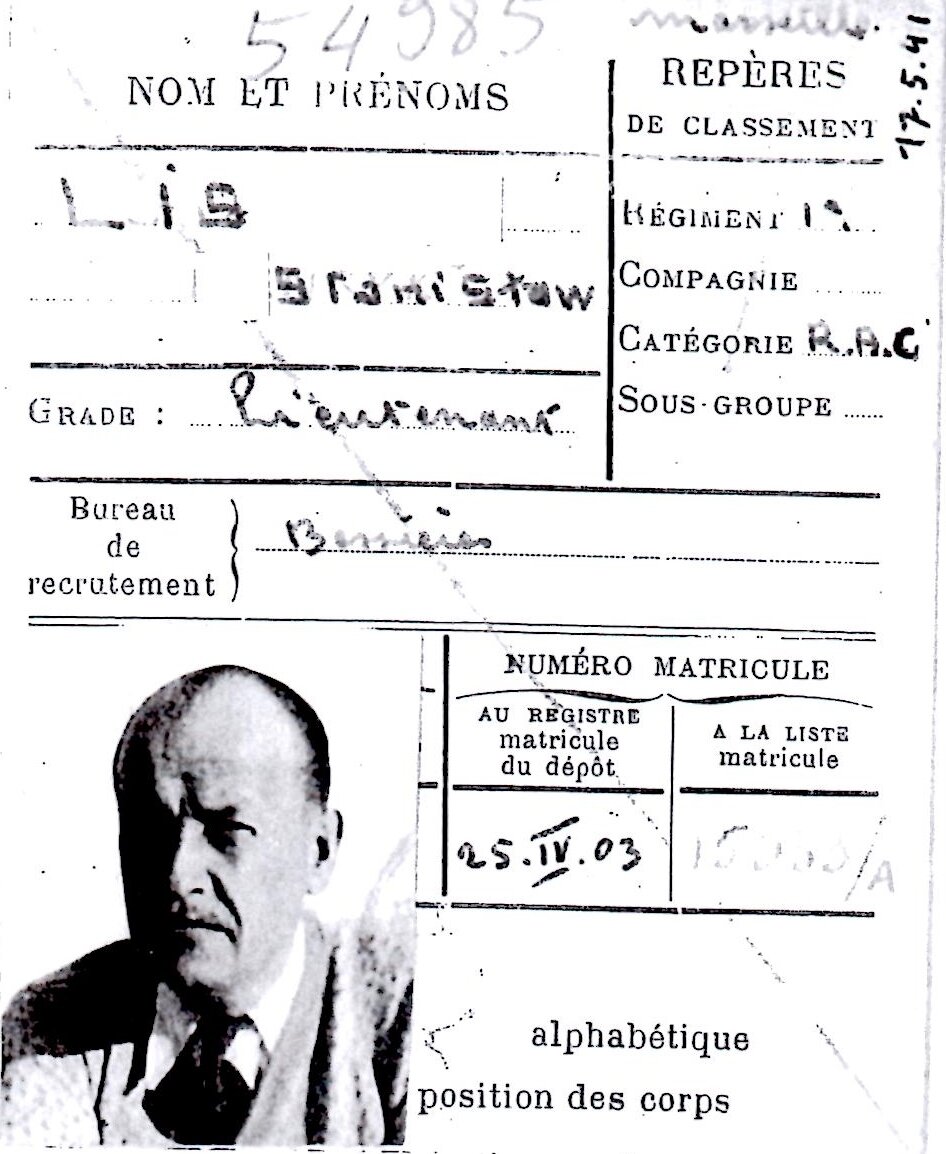
Croix de Guerre
(This medal was awarded by France to individuals who demonstrated extraordinary bravery in combat during WWII. A bronze star indicates that the citation comes from a divisional commander.)
Croix de Guerre
This citation is an official document awarding Stanislaw Lis, a captain in the 1st Field Artillery Regiment of the Polish Army, the French military honour of the Croix de Guerre 1939–1945 with bronze star.
Citation Details:
Recipient: Stanislaw Lis, a captain in the 1st Field Artillery Regiment, part of the Polish Army that served under Allied command.
(The citation honours Captain Lis's bravery and leadership during the German offensive in June 1940, particularly in the Sarralbe sector in France.)
On June 13, 1940, he displayed exceptional courage by ensuring the supply of ammunition to artillery batteries under his command despite intense bombardment from enemy aircraft and artillery. His actions ensured the continuity of his unit's operations under extreme danger.
Authority: Issued on January 6, 1949, in recognition of his wartime contributions.
Signed by Brigadier General Devaux, representing the French Secretary of State for the Armed Forces.
Context:
General Order No. 2128/C: The citation is part of a larger collection of official recognitions issued by the French Armed Forces.
Croix de Guerre 1939-1945: This medal was awarded by France to individuals who demonstrated extraordinary bravery in combat during WWII. A bronze star indicates that the citation comes from a divisional commander.
Importance: This citation reflects both personal valour and the collaborative effort of the Polish Army fighting alongside the French during World War II. Captain Lis's actions are emblematic of the sacrifices made by Allied forces, particularly those from Poland, which had been invaded and occupied by Germany and the Soviet Union.
The Croix de Guerre with bronze star serves as a tangible symbol of his contributions and bravery during one of history’s most challenging conflicts.
The events described in Stanislaw Lis's citation took place in the Sarralbe sector, a region in northeastern France near the German border. This area saw significant activity during the Fall of France in May–June 1940, as German forces launched their decisive offensive against French and Allied troops.
The Fall of France
Operation Fall Rot (Case Red): By June 1940, German forces were advancing rapidly across France following the initial breakthrough in the north during Operation Fall Gelb (Case Yellow). After encircling large Allied forces in Belgium, German troops pushed south to capture Paris and force France's surrender.
The Maginot Line, France's heavily fortified defensive line, was bypassed by German forces through the Ardennes. However, some parts of the line, such as the Sarralbe sector, remained active in delaying actions and defense.
The Polish Army, exiled after the fall of Poland in 1939, fought alongside French forces as part of the Allied effort. Many Polish units were integrated into French commands, including the 1st Field Artillery Regiment mentioned in Lis’s citation.
The Battle in the Sarralbe Sector
Sarralbe is situated in the Alsace-Lorraine region, a strategically important area due to its proximity to Germany and its industrial resources. The fighting occurred in mid-June 1940, during the final days of the German campaign in France.
Significance: This was a period of desperate rearguard actions by French and Allied troops to slow the German advance. Sarralbe, as part of the Maginot Line defenses, witnessed intense fighting as German forces attacked with artillery, aircraft, and mechanized units.
Captain Lis’s Role
As commander of an ammunition column in the 1st Field Artillery Regiment, Captain Lis was responsible for maintaining the flow of munitions to his unit's artillery batteries. This was critical to the defense, as artillery played a central role in holding back advancing German forces.
On June 13, 1940, during an intense aerial and artillery bombardment, Lis demonstrated exceptional bravery by ensuring the uninterrupted supply of ammunition. Such actions required extraordinary courage, as ammunition convoys were prime targets for enemy attacks, given their importance to the defensive effort.
Outcome: Despite the bravery of soldiers like Captain Lis, the German offensive overwhelmed Allied defences. By June 22, 1940, France signed an armistice with Germany. However, actions like those in Sarralbe delayed the German advance and allowed some Allied troops to retreat and reorganize. For the Polish forces, it exemplified their commitment to the Allied cause, even after their own country's fall.
The battle in the Sarralbe sector is less well-known compared to larger engagements like Dunkirk or the Battle of France's early stages. Still, it highlights the resilience of Allied troops, including the Polish Army in exile. The bravery of individuals like Captain Lis remains a testament to the Allied effort against overwhelming odds during this critical phase of World War II.
After the fall of France in June 1940, Stanisław Lis and approximately 12,000 Polish soldiers of the 2nd Polish Infantry Division crossed into Switzerland to avoid capture by German forces.
Stanisław Lis and the Legacy of the Polish Soldiers Interned in Switzerland
Stanisław was an officer in the 3rd Battery of the 1st Field Artillery Regiment, serving as commander of the ammunition company between April and June 1940.
On 21 June 1940, with the remnants of his unit, he crossed into neutral Switzerland to avoid capture. He was one of approximately 12,000 Polish troops and 25,000 French soldiers to enter Swiss territory in the closing days of the Battle of France. In line with the Hague Convention of 1907, Switzerland was obligated to disarm and intern all belligerent troops entering its borders. Though safe from German imprisonment, these men were not free.
Polish Internment in Switzerland
Initially housed in large holding camps like Büren an der Aare, Polish internees were soon dispersed throughout the country. They lived in wooden barrack camps, wore civilian clothing marked with red armbands, and were closely supervised by Swiss authorities. They were not prisoners of war in the conventional sense - they could take courses, correspond with family, and attend church, but they could not leave.
The Swiss government engaged the internees in public works projects. In the Insubrica region near Losone, Polish soldiers reclaimed agricultural land, built bridges, and paved roads, some of which are still known locally as "Polish paths." The physical and cultural legacy of their labour remains visible in the landscape of Ticino and other cantons.
While internment allowed for survival, it left few traces in military archives. There is little documentation about units of the Polish 1st Grenadier Division (in Stans’ case, the 3rd Battery of the 1st Field Artillery Regiment) after it entered Switzerland. Stanisław’s escape is therefore one of the few documented continuations of this unit’s war story beyond June 1940.
Polish Military expert Robert Ostrycharz notes, ‘In a Polish language book I have about the Polish Armed Forces in WWII, he is shown under the III dyon of the 1st Artillery Regiment as - Ammunition Column - Kpt. S. Lis’
On 5th May 1941 Stanislaw escaped Switzerland.
Second Lieutenant Stanisław Lis escaped internment in Switzerland on 5 May 1941, a daring act during a perilous time for many Polish officers displaced by World War II. After his escape, Lis made his way south through France, which was then under Vichy control, a difficult and risky passage given the political climate and surveillance of foreign military personnel.
By 1 October 1941, Lis was documented to be in Lisbon, Portugal, a crucial transit hub during the war, known for facilitating the escape and evacuation of Allied personnel, refugees, and military officers. Lisbon was one of the few neutral ports where safe passage could be arranged for those fleeing occupied Europe.
"Wykaz oficerów i aspirantów którzy samodzielnie opuścili Szwajcarię"
(Translation: List of officers and aspirants who independently left Switzerland)
List of Polish Officers who independently left Switzerland. Lisbon Oct 1st 1940
Entry #12
Name: Lis Stanisław
Rank: p.por. (Podporucznik – Second Lieutenant)
Date of escape from Switzerland: 5.V.41 (5 May 1941)
Current location: Lizbona (Lisbon)
This document confirms Stan successfully made it to Lisbon by 1 October 1941. He was among a group of Polish officers traveling independently, likely relying on clandestine networks and support from the Polish government-in-exile and British consulates. Other names on the list (e.g., Parylak Władysław, Fidelski Władysław, Barbacki Roman) may have traveled with him.)
From Lisbon, Lis embarked on a troopship bound for the United Kingdom. On 11 October 1941, he arrived in Liverpool, completing a journey that likely followed this route:
Escape from Switzerland → crossing into Vichy France
Travel overland or via covert routes through France to reach the Spanish border
Crossing into neutral Spain and onward to the Portuguese coast
Arrival in Lisbon, where passage to Britain was arranged
Sea voyage aboard a British troopship, such as the Duchess of Bedford, escorted by Allied naval vessels, arriving in Liverpool
This route was a common escape and evacuation path for Polish military personnel during the war, enabling them to regroup and continue their fight alongside Allied forces in Britain.
On 11 October 1941, the Duchess of Bedford, a British troopship requisitioned during World War II, arrived in Liverpool as part of a convoy transporting Polish officers and personnel from Lisbon to the United Kingdom. The convoy, which had departed Lisbon on 6 October 1941, was escorted by British destroyers HMS Edinburgh and HMS Garland, along with the Polish destroyer ORP Piorun.
Consequences
What should have been seen as an act of heroism was initially treated as a disciplinary infraction. According to a handwritten 1965 military memorandum, Stanisław had been “found guilty in proceedings, likely based on German reports” about his escape, even though Germany was the enemy. Swiss neutrality depended on legal rigor, and escapees, especially officers, were sometimes formally recorded as violating international protocols. As a consequence, he was denied promotion to captain in 1942, despite strong performance and “very good” evaluations. His promotion came only in 1944, and the delay affected his eligibility for promotion to major in 1946.
Recognition
Later, General Władysław Anders, Commander-in-Chief of the Polish Armed Forces in the West, annulled the disciplinary note, formally recognising Lis’s escape as a justified and courageous act. Yet by then, structural regulations around seniority had taken their toll. Lis’s progression was frozen by a bureaucratic mark, only later understood as unjust.
English Translation
A.XII.86/48 (182)
Letter mentioning Stans escape and request for promotion
He was found guilty in proceedings, I presume based on reports from the German side, i.e., during his escape from internment in 1942. Therefore, he could not be considered for promotion to captain in 1942. This punishment was later annulled by the Commander-in-Chief — but the fact caused Mr. Lis to become a captain only in 1944. Had it not been for that penalty, he would have been made captain already in 1943 and could have been considered for promotion to major already in 1946 (the requirement was seniority from at least 1943).
His evaluations were “very good” and “very good.” The Training Center Commander confirmed in writing many skills and that there were grounds for promotion. In 1946, Mr. Lis was also recommended for promotion by the commander of the Training Center — but he was not promoted due to seniority being from 1944 (while 1943 was required).
Since his demobilisation, Mr. Lis has taken a very active role in the social, political, and public life of the veteran community in exile. From the founding of the S.P.K. Study Circle, he actively participated in nearly all of its activities.
He was President of the Polish Union in Great Britain from 1964 to 1960 (likely a reversal; probably 1960 to 1964).
For 20 years, he has been Vice President of the Association of Former Soldiers. Most recently as a full-time comrade delegate (1/1 p. dym. Towarzyszów).
M.O.D. Papers
The following information about Stans service in the Polish Army under British Command has been taken from his Ministry of Defence papers.
Arrival in Britain - Service in the Polish Armed Forces under British Command (1941–1946)
After a year of internment in Switzerland and a treacherous escape across occupied Europe, Stanisław Lis arrived in Britain on 11 October 1941, determined to return to active military service. His integration into the Polish Armed Forces in the West reflected both his resilience and the Polish military’s efforts to rebuild in exile - especially in Scotland, where tens of thousands of Polish soldiers would train, reorganise, and prepare for the next stage of the war.
Rebuilding the Polish Forces in Scotland
By 1941, the bulk of the Polish Army in exile had regrouped in Britain under the command of General Władysław Sikorski, with a significant contingent forming in Scotland. There, under British and Polish leadership, the Polish I Corps was created and charged with defending the Scottish coast from potential German invasion and preparing for future operations in continental Europe.
The Polish forces were stationed across eastern and northern Scotland, with units based in Angus, Fife, Perthshire, and the Highlands. Local communities grew accustomed to Polish soldiers drilling on beaches, marching through villages, and setting up training grounds across the rural landscape. In turn, the Polish presence left a lasting mark on local culture and memory — visible today in cemeteries, memorials, and preserved military sites.
First Posting: 7th Field Artillery Battery (7 d.a.l.)
Upon arrival, Stanisław Lis was posted to 7 d.a.l., the 7th Field Artillery Battery, part of the 7th Cadre Rifle Brigade (7. Brygada Kadrowa Strzelców). At that time, the unit was stationed in Brechin, a market town in Angus, before relocating to Dundee on 17 October 1941. This movement was part of a wider restructuring plan to transition the brigade into a training formation. By 1 December 1941, the 7th Brigade had officially transformed into the 2nd Officers’ Training Battalion, forming a key component of the Polish I Corps’ new Training Brigade, tasked with preparing future non-commissioned and commissioned officers for operational deployment.
Officer Cadet School at Lintrose House
On 23 December 1941, Lis was transferred to the Officer Cadet Artillery School, based at Lintrose House near Coupar Angus in Perthshire. The school, housed in a former country estate, delivered intensive courses in artillery tactics, gunnery, military leadership, and battlefield communications. It aimed to create competent and tactically astute artillery officers ready for field operations in North Africa, Italy, or Western Europe. Lis likely participated in the 4th Officer Cadet Course, which ran from 5 January to 17 June 1942, producing 59 graduates. Training would have included both intensive instruction in leadership and field exercises with live ammunition, map work, gun positioning, and coordination with infantry.
Blairadam and the Movement of the School
By early 1943, the artillery cadet school had moved to Blairadam, likely housed at Blairadam House, an estate just north of Cowdenbeath in Fife. While the precise location of the school is not definitively confirmed in records, Blairadam's scale, strategic placement, and accessibility make it a strong candidate. The 5th Cadet Course ran from December 1942 to May 1943, graduating 39 officers. This was followed by a hiatus, possibly reflecting changes in Polish Corps deployment plans or shifting Allied priorities as the Italian campaign intensified and preparations for D-Day began.
Artillery Training Centre, Cowdenbeath
On 17 September 1943, Lis concluded his instructional duties and was reassigned to the Artillery Training Centre at Cowdenbeath the following day. There, he served as Adjutant — a crucial administrative and organisational role within the command structure. Adjutants managed personnel files, issued orders, scheduled training, and ensured communication between officers and staff was efficient and properly documented. The Cowdenbeath centre was a hub for artillery conversion courses, particularly for soldiers and officers transferring from infantry, engineers, or other arms into artillery roles. It also ran refresher and tactical development programmes for serving officers.
The Polish Army’s emphasis on artillery proficiency stemmed from wartime experience in France and Poland, where coordinated fire support had been critical to success. The Training Centre ensured that Polish artillery units in Britain — whether destined for Italy, Normandy, or occupation duties - could fight with discipline and precision.
A Soldier’s Quiet Legacy
Although records seem to show Stanislaw Lis didnt return to a front-line artillery battery after 1943, his role in training the next generation of Polish officers was indispensable. The men he helped instruct would go on to fight with distinction in Monte Cassino, Ancona, Falaise, and beyond.
The Scottish fields where he taught gunnery, the houses that housed his schools, and the regimental histories that mention his name all form part of a landscape of memory — not only of battles fought, but of knowledge passed on, and duty fulfilled, even far from home.
Command, Intelligence, and Mechanisation (1944–1946)
On 1 January 1944, Stanisław Lis was promoted to the rank of Captain, formalising the leadership role he had already assumed through years of instruction and operational coordination within the Polish artillery corps in exile. His promotion came at a pivotal time in the evolution of the Polish I Corps. As Allied forces prepared for a return to continental Europe, the demands on Polish training institutions intensified. Artillery had to adapt to increasingly mobile warfare. Commanders needed to understand not just ballistics and tactics, but mechanisation, logistics, and morale, and Captain Lis was at the centre of this shift.
Intelligence and Field Security
On 15 April 1944, Lis was reassigned to a sensitive new post described in Polish records as “ofic. wyw. obron.” - likely short for oficer wywiadu obronnego, or Field Security Officer. In this role, Lis would have been responsible for maintaining discipline, cohesion, and political reliability within the ranks. As part of the internal intelligence structure of the Polish Army-in-Exile, he may have monitored not only military conduct but also morale, ideological tensions, and the influence of external propaganda — particularly significant in a force composed of men from varied social, regional, and wartime backgrounds, some of whom had passed through Soviet camps, internment, or exile.
This period saw increasing political polarisation among Polish troops abroad, especially as news of Soviet advances and shifting Allied support for the Polish Government-in-Exile stirred anxiety and debate.
Driving School Commandant, Dalkeith
By 28 October 1944, Lis’s trajectory shifted back toward command. He was appointed Commandant of the Driving School at the Artillery Training Centre, located in Dalkeith, just southeast of Edinburgh. This school trained soldiers in the operation and maintenance of military vehicles critical to artillery operations, including tractors, transport lorries, and early mechanised towing equipment for heavy guns. Dalkeith’s location near key transport infrastructure made it ideal for these purposes. Lis’s command would have required balancing technical training with discipline and efficiency, ensuring drivers understood both mechanical reliability and battlefield pressure.
Mechanised Artillery School, 1945
On 20 February 1945, Lis took command of a school for mechanised artillery vehicles, a natural progression from his earlier role. This move reflected a broader doctrinal shift across Allied forces: traditional horse-drawn or static field guns were being replaced by self-propelled guns, armoured artillery, and mobile battery systems capable of following advancing troops over rough terrain. This school would have trained artillery crews in combined arms coordination, mechanical upkeep, rapid deployment drills, and communication under fire. It symbolised the Polish Army’s adaptation to the realities of late-war mechanised warfare.
The Artillery Training Centre: Structure and Scale
By this stage, the Artillery Training Centre (Polish: Centrum Wyszkolenia Artylerii) had become a major wartime institution, with branches in Cowdenbeath, Dalkeith, and eventually Inveraray. The Centre included:
Field artillery training (for light and medium batteries)
Anti-aircraft and anti-tank schools
Driving and vehicle maintenance divisions
Officer and NCO development programmes
Security and intelligence roles embedded in the training structure
Stanislaw, having served as both Adjutant, Training Officer, and Commandant, was an integral part of this system.
Final Posting: Inveraray and Commendation
In the final phase of his wartime service, Lis remained with the Artillery Training Centre as it relocated to Inveraray, on the west coast of Scotland. Known as Town Camp, Inveraray was a key training site used jointly by British and Allied forces for amphibious and combat preparation. Its rugged terrain and isolation made it ideal for realistic field exercises. Captain Lis served there until 13 September 1946, well into the post-war demobilisation period, helping to retrain soldiers and reorganise units uncertain of their future as political negotiations reshaped Europe.
His final service reports were exemplary. The Commandant of the Artillery Training Centre and the Acting Commander of the Polish I Corps Artillery praised his leadership, professionalism, and his contributions to intelligence gathering and morale support — vital in a time of growing uncertainty about Poland’s postwar fate.
Post-War Transition: Polish Resettlement Corps (PRC)
In September 1946, as the future of displaced Polish soldiers became uncertain in postwar Britain, Lis became eligible for transfer into the Polish Resettlement Corps (PRC). Established by the British government to help demobilised Polish soldiers integrate into civilian life, the PRC provided housing, employment training, and language education. For many like Captain Lis, who could not return to Soviet-controlled Poland, the PRC marked the beginning of a new life in the United Kingdom.
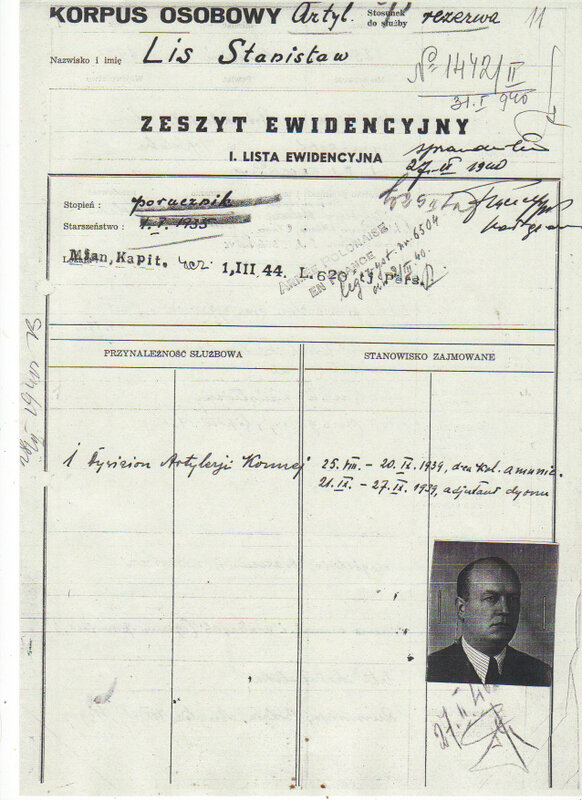
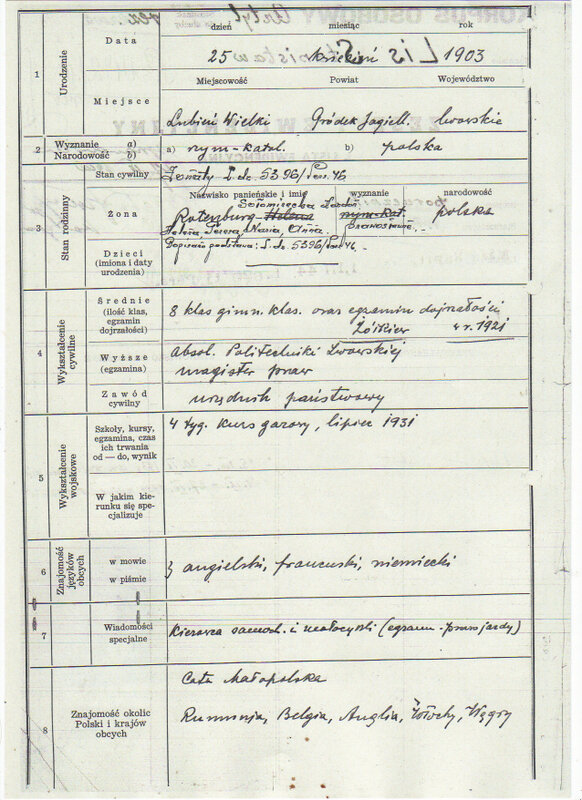
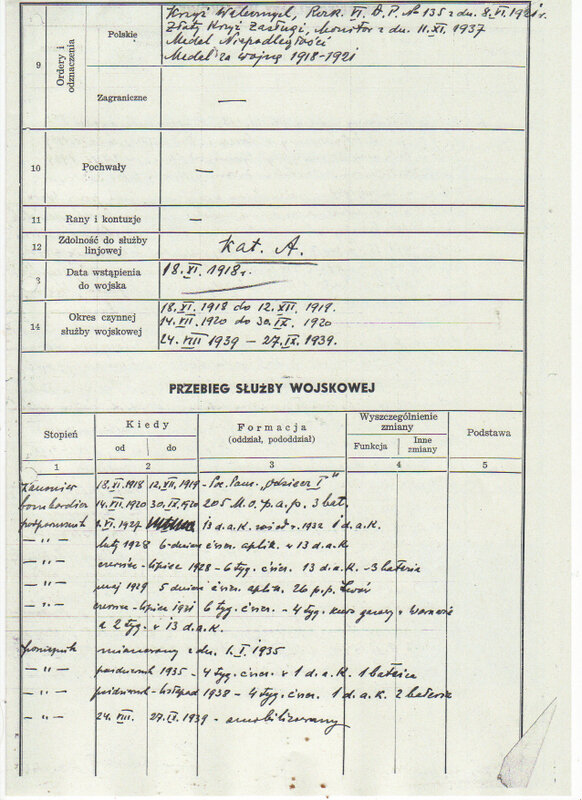
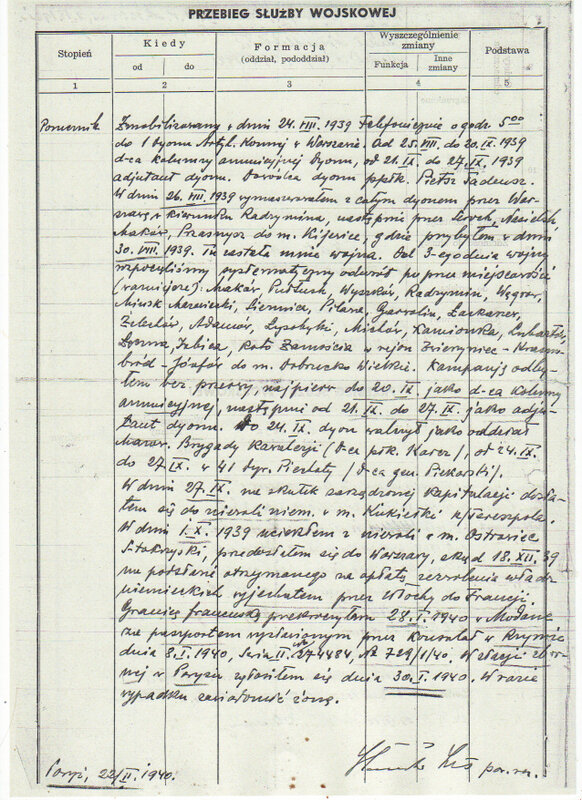
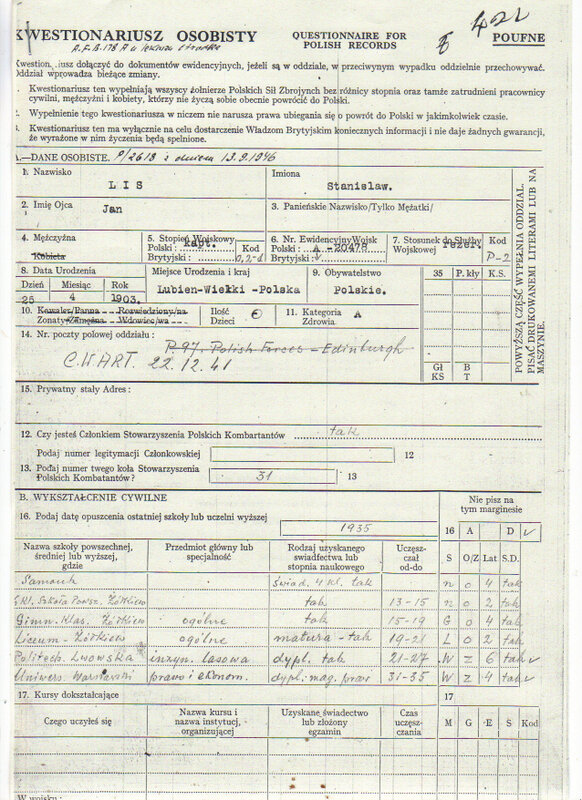
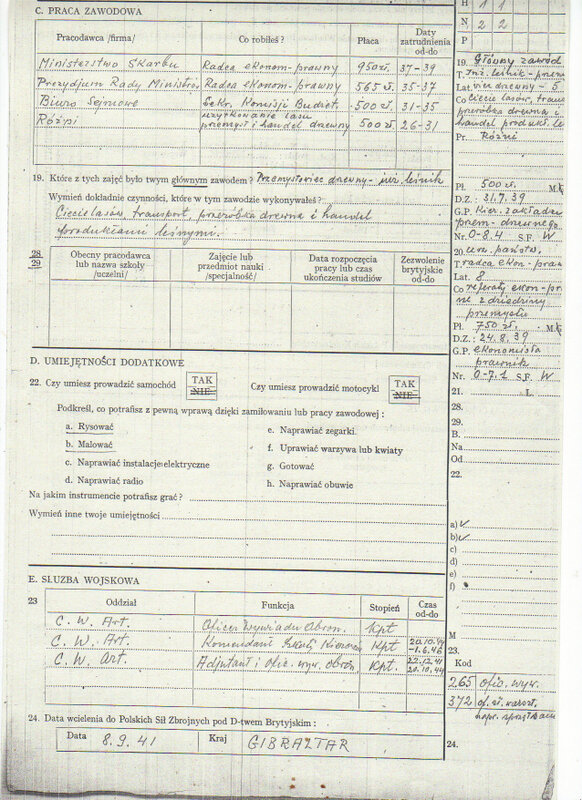
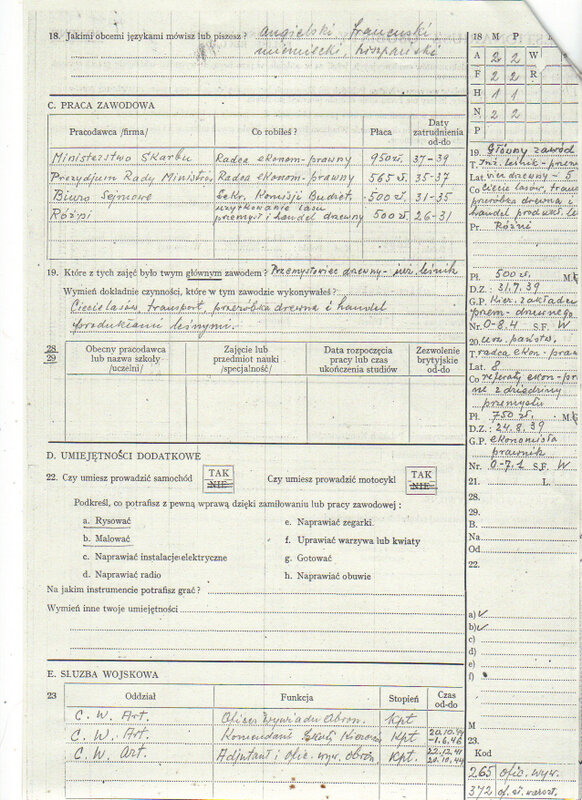
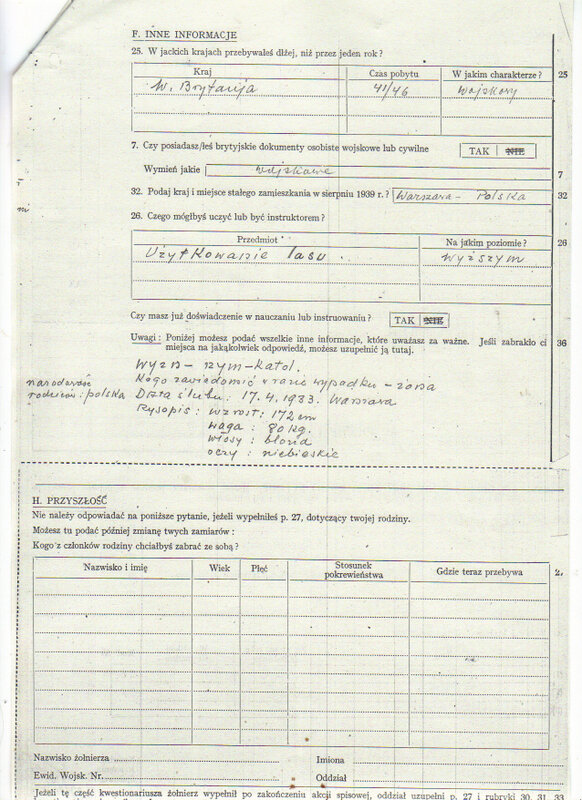
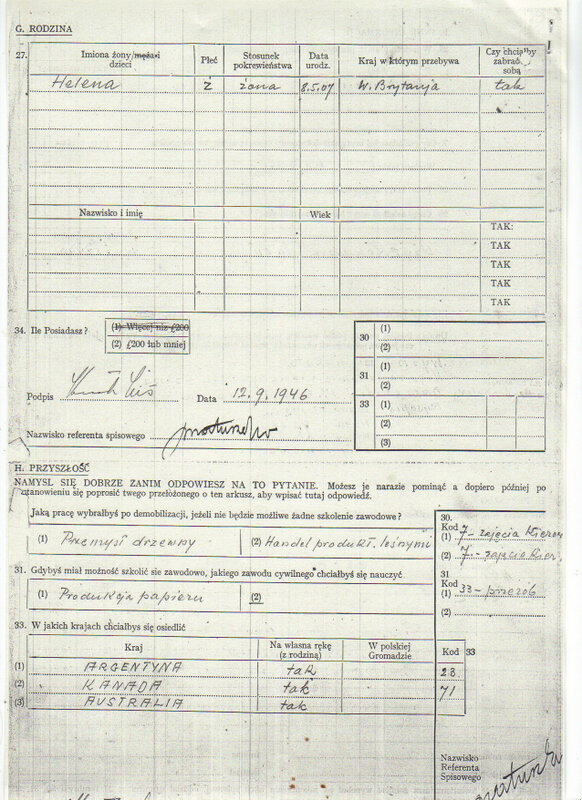
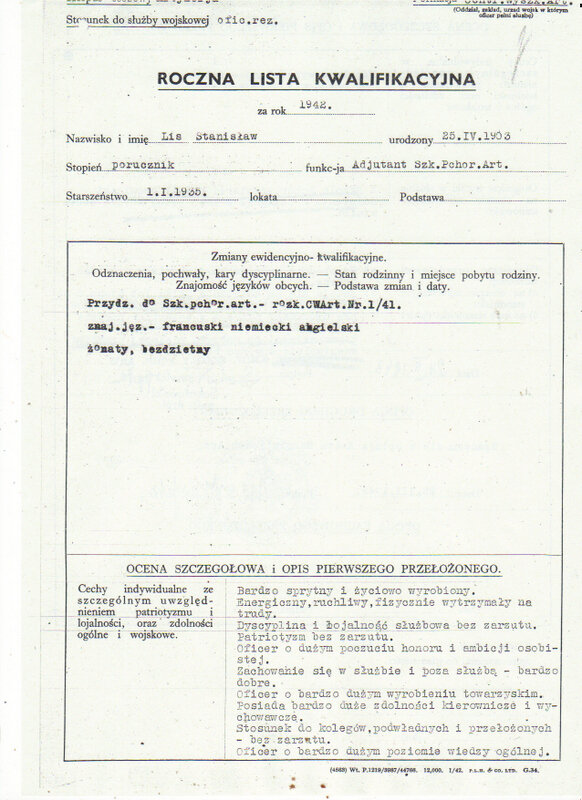

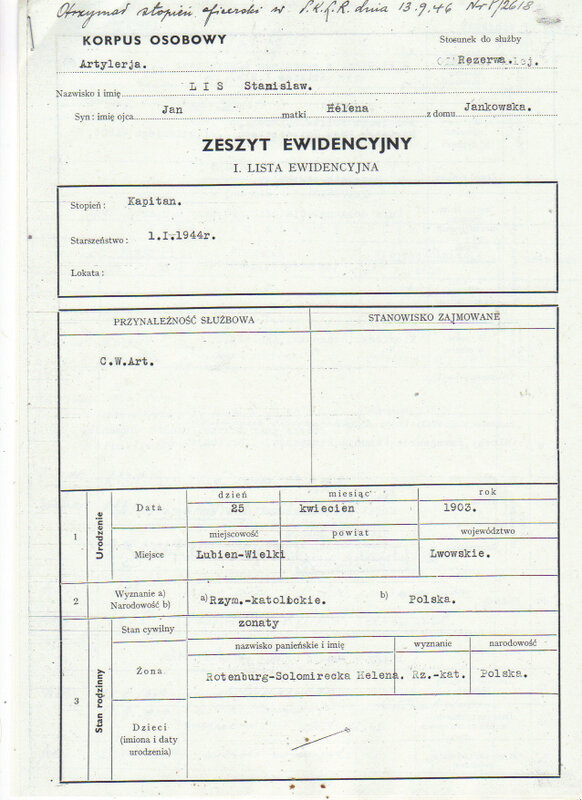
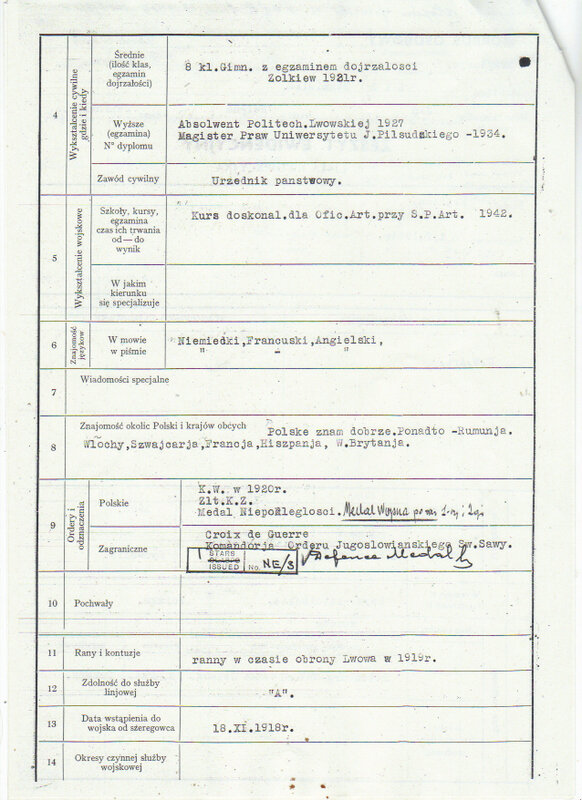
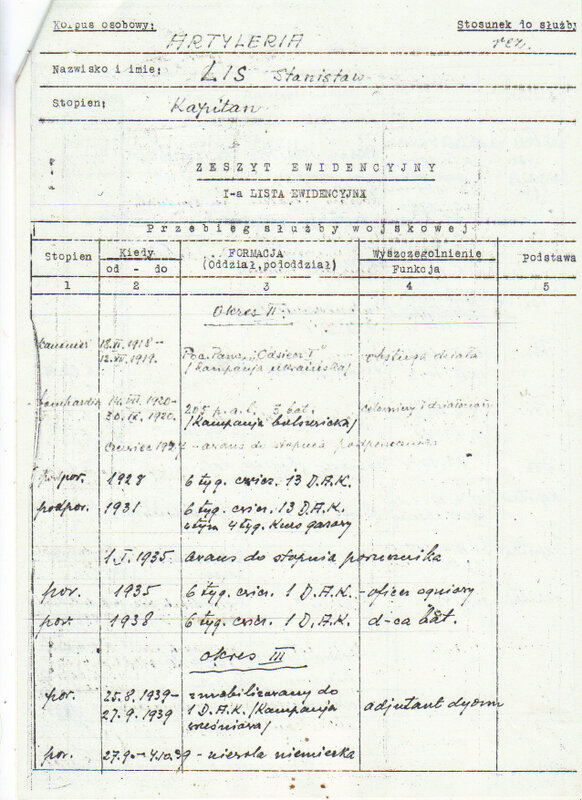
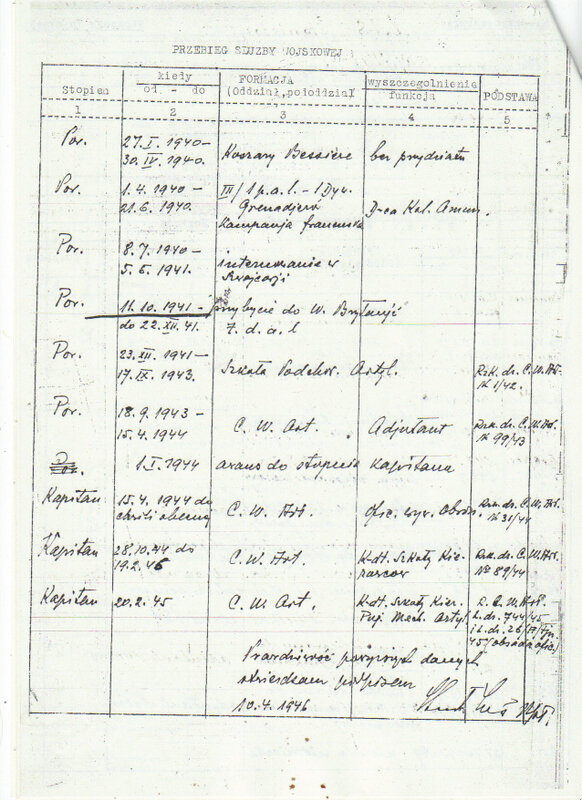
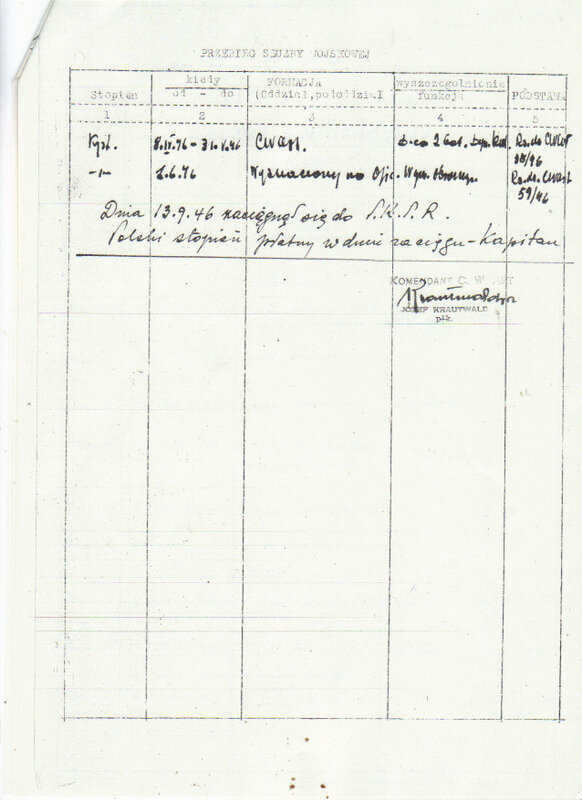
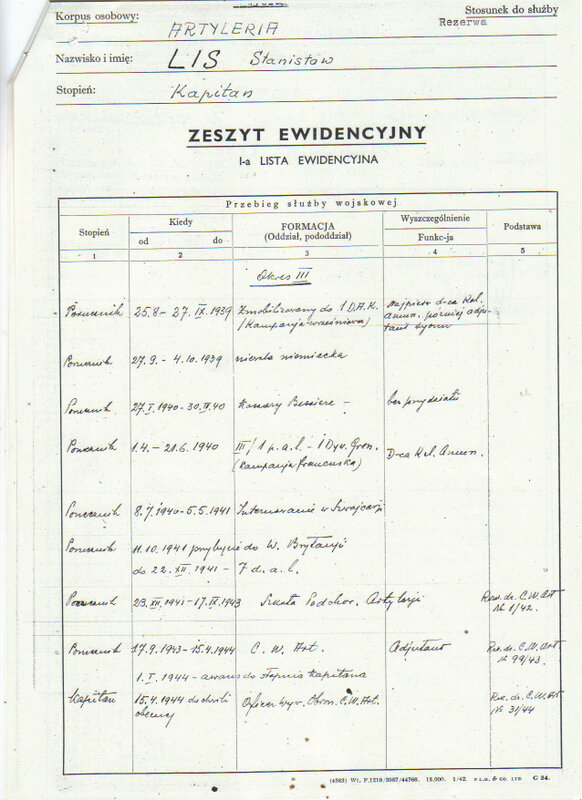


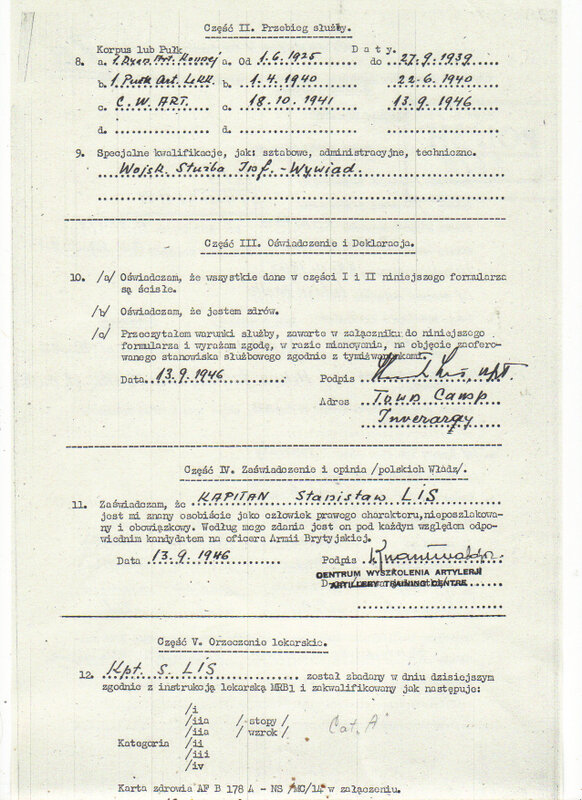
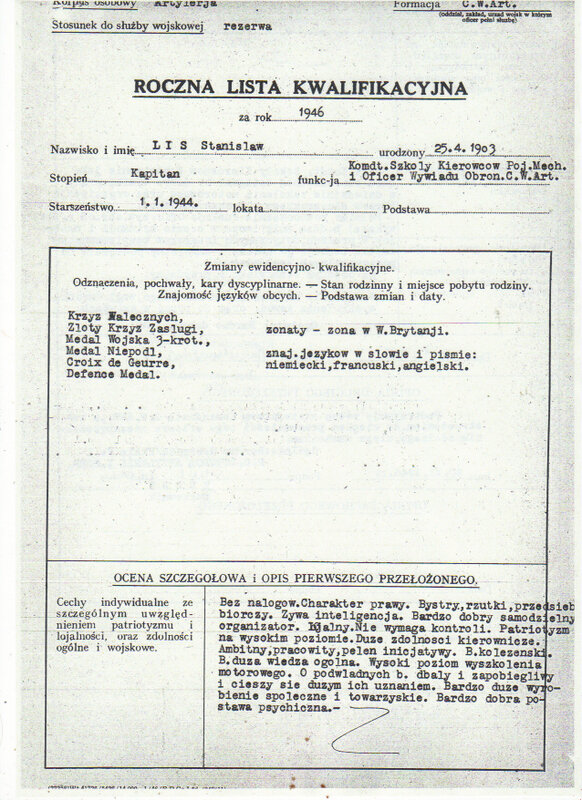

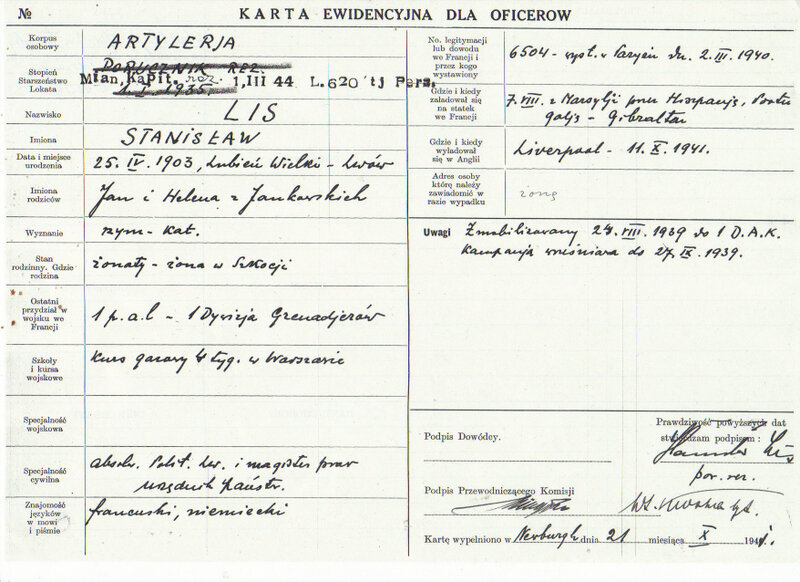
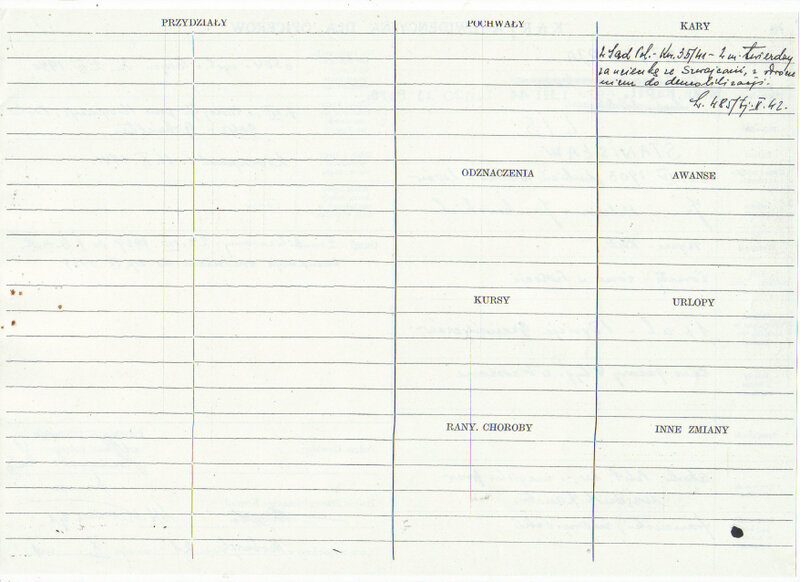
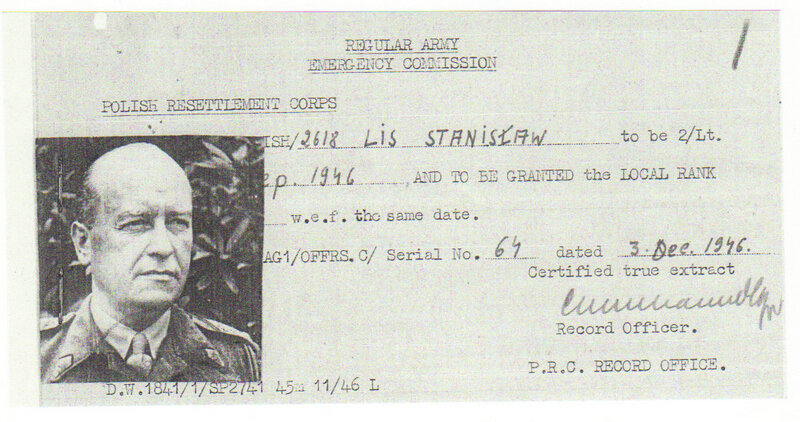
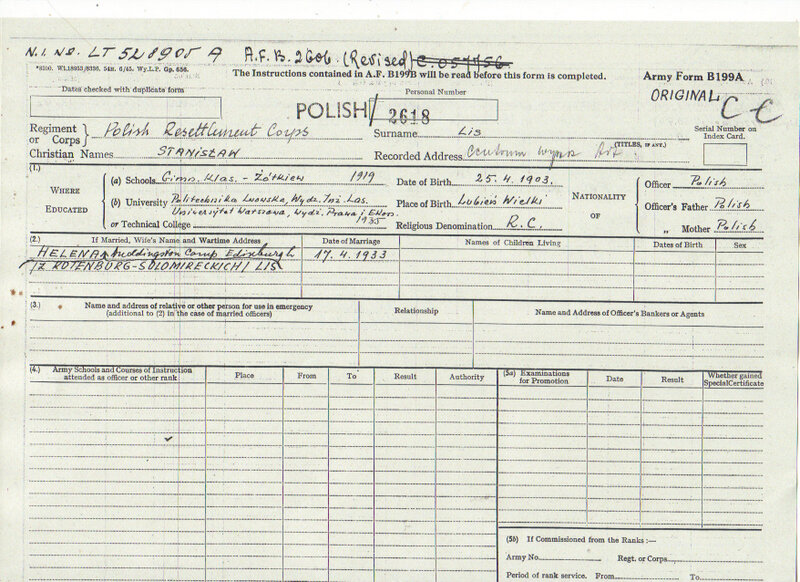
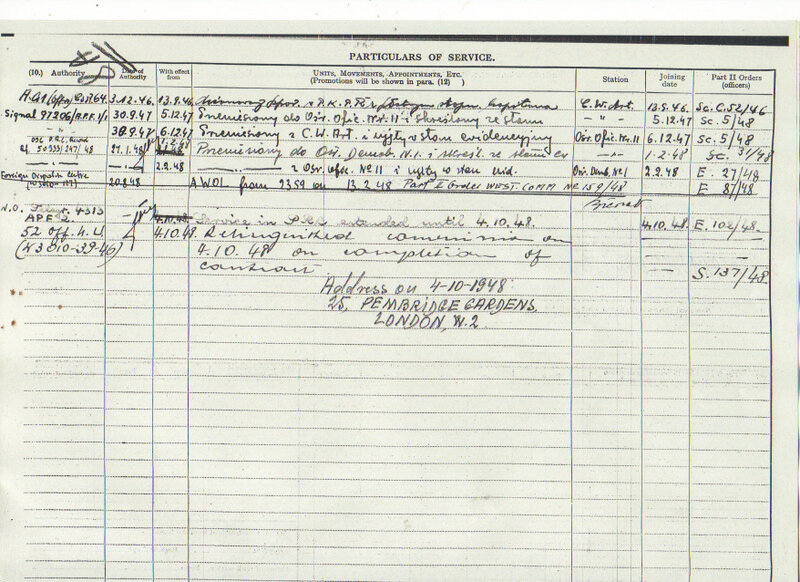
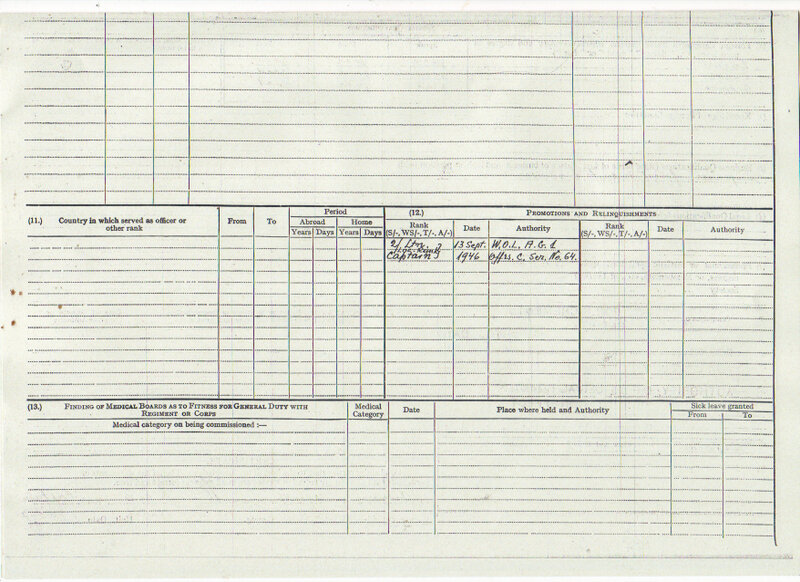

Government-in-Exile, London.
Stanislaw Lis was a prominent figure in the Polish émigré community, particularly in the United Kingdom. He was deeply involved in supporting Polish refugees and maintaining Polish cultural and political identity abroad. His activities included advocacy and organization within the broader network of Polish émigrés, and he held leadership roles in initiatives connected to the Polish Government-in-Exile based in London.
This government, established during World War II and operational until 1991, coordinated with numerous organizations that Lis was involved in, such as the Federation of Poles in Great Britain and the World Council of Free Poles. These organizations were instrumental in rallying international support for Poland during its years under communist rule and promoting Polish independence and culture abroad. Lis played a role in these networks, working to unify and inspire the émigré community to preserve their heritage and support those affected by political upheaval in Poland.
Additionally, his work extended to international connections, leveraging relationships between Polish communities in different countries to create solidarity and political influence. Figures like Lis were essential in maintaining a strong sense of Polish identity among émigrés while advocating for Poland on the global stage.
(Photographs courtesy of the Polish Ex-Combatants Association Memorial Trust and the Jennie Milne family archives)
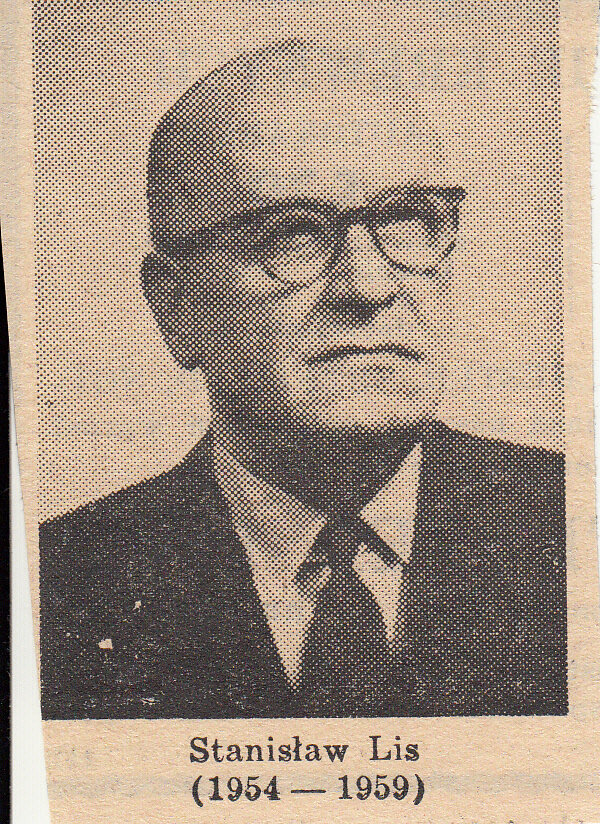
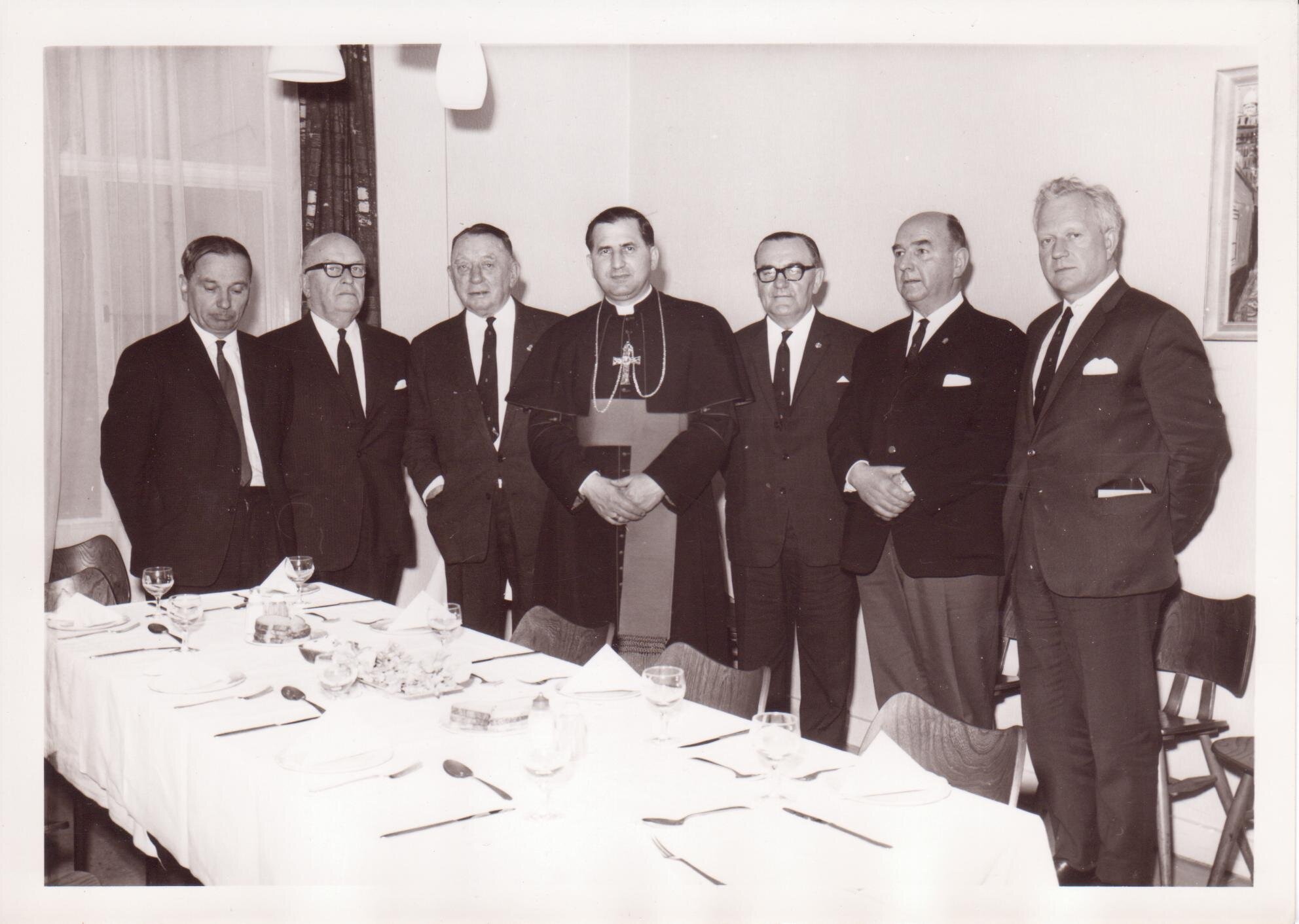
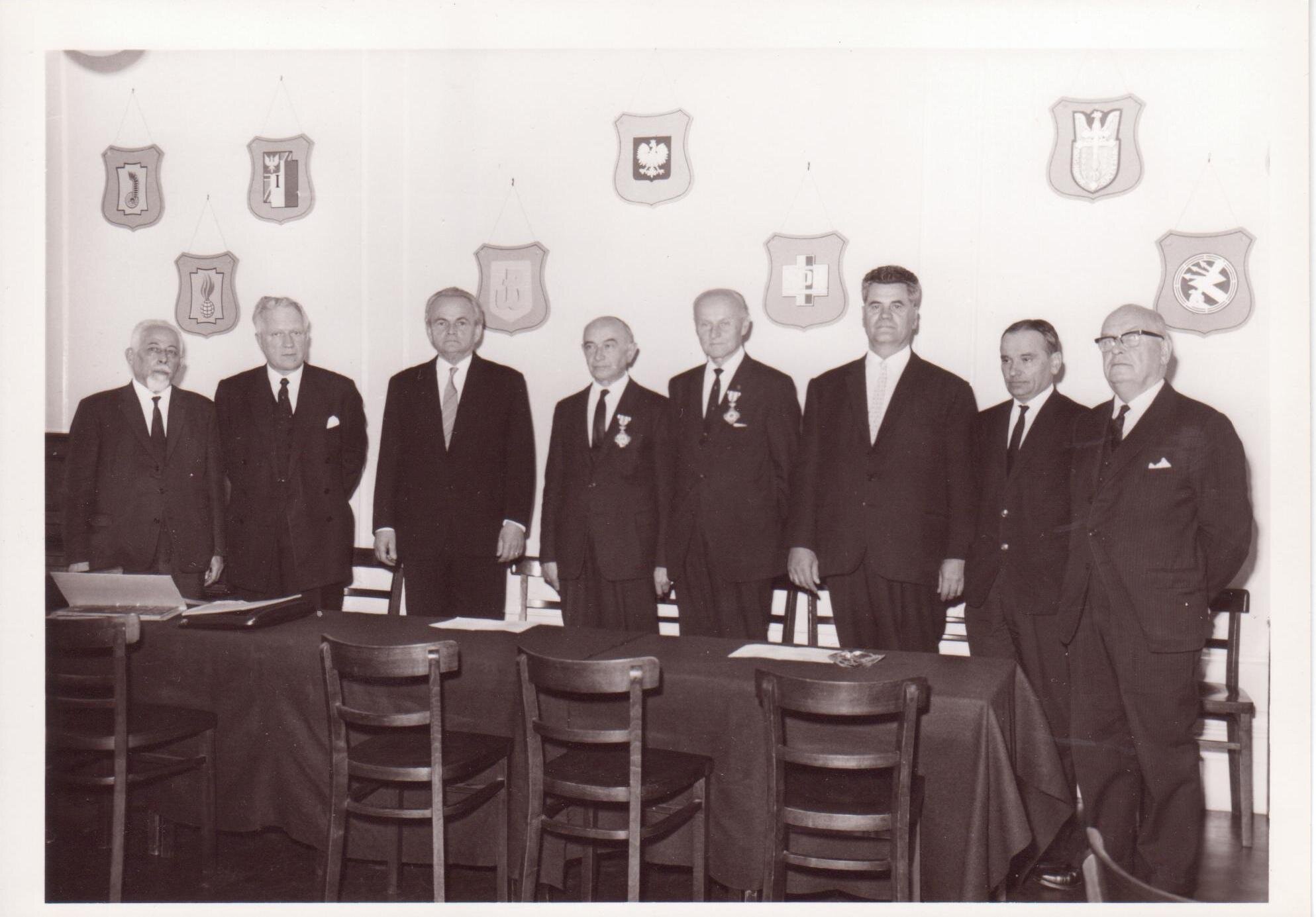
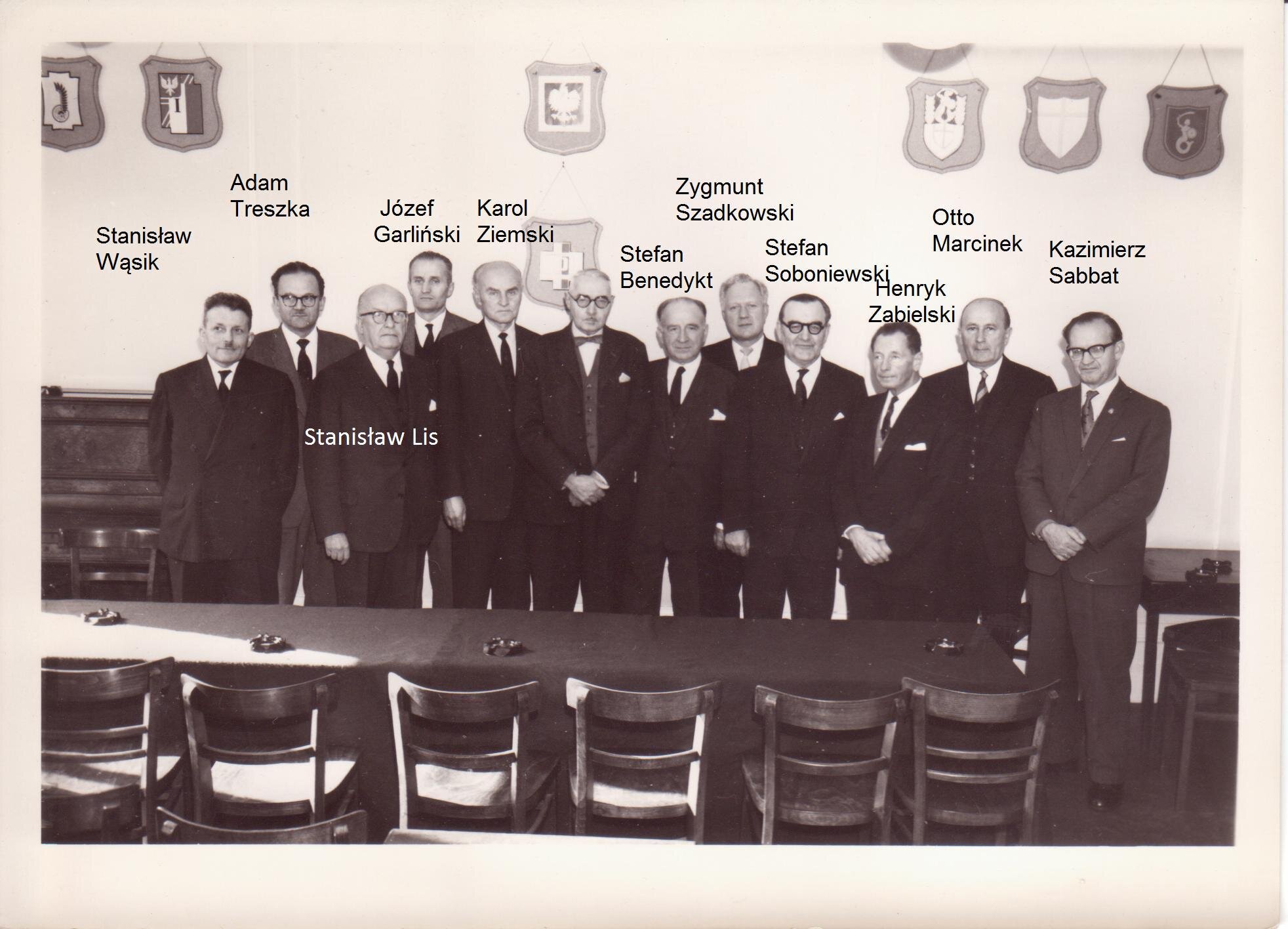
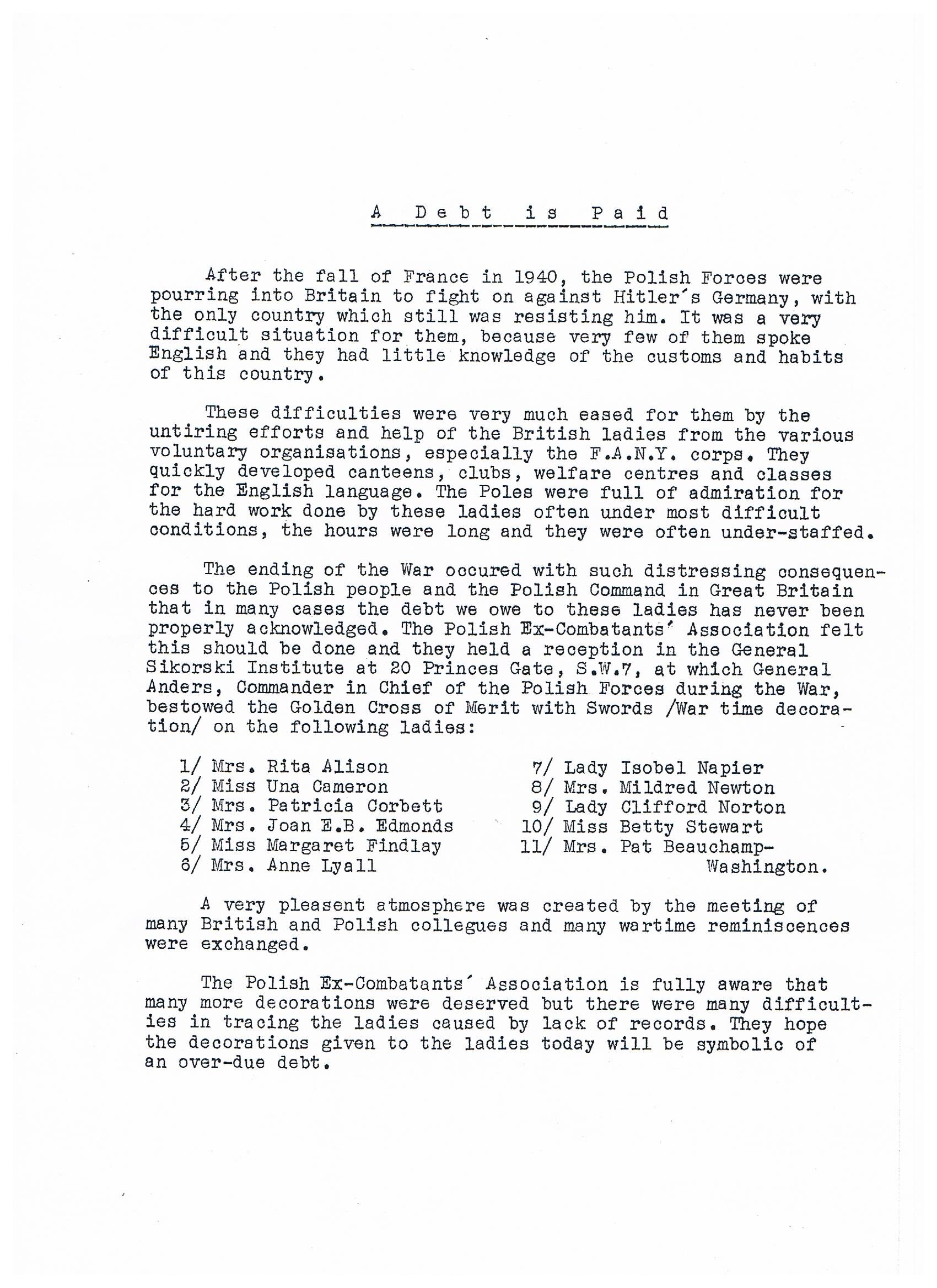
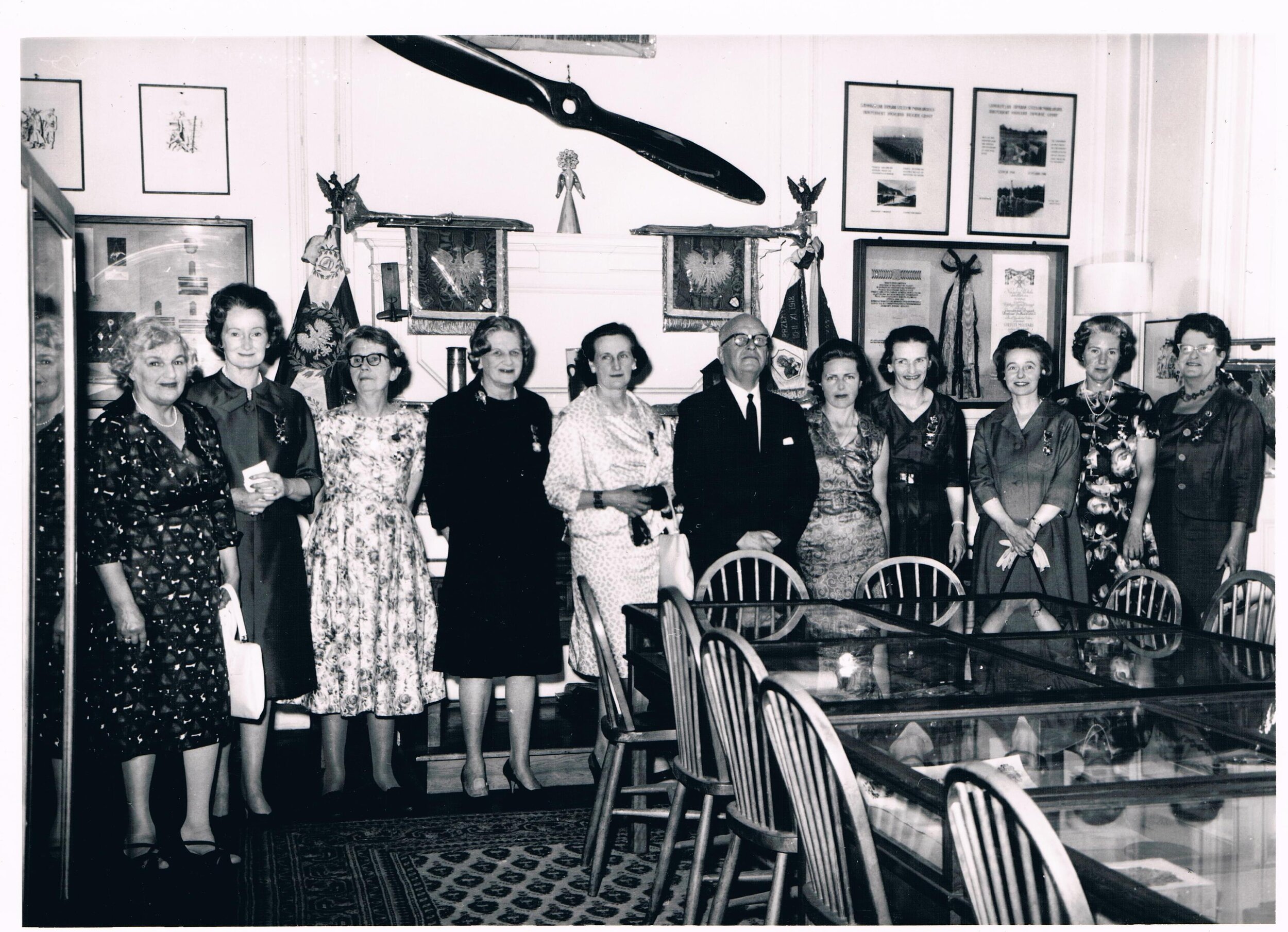
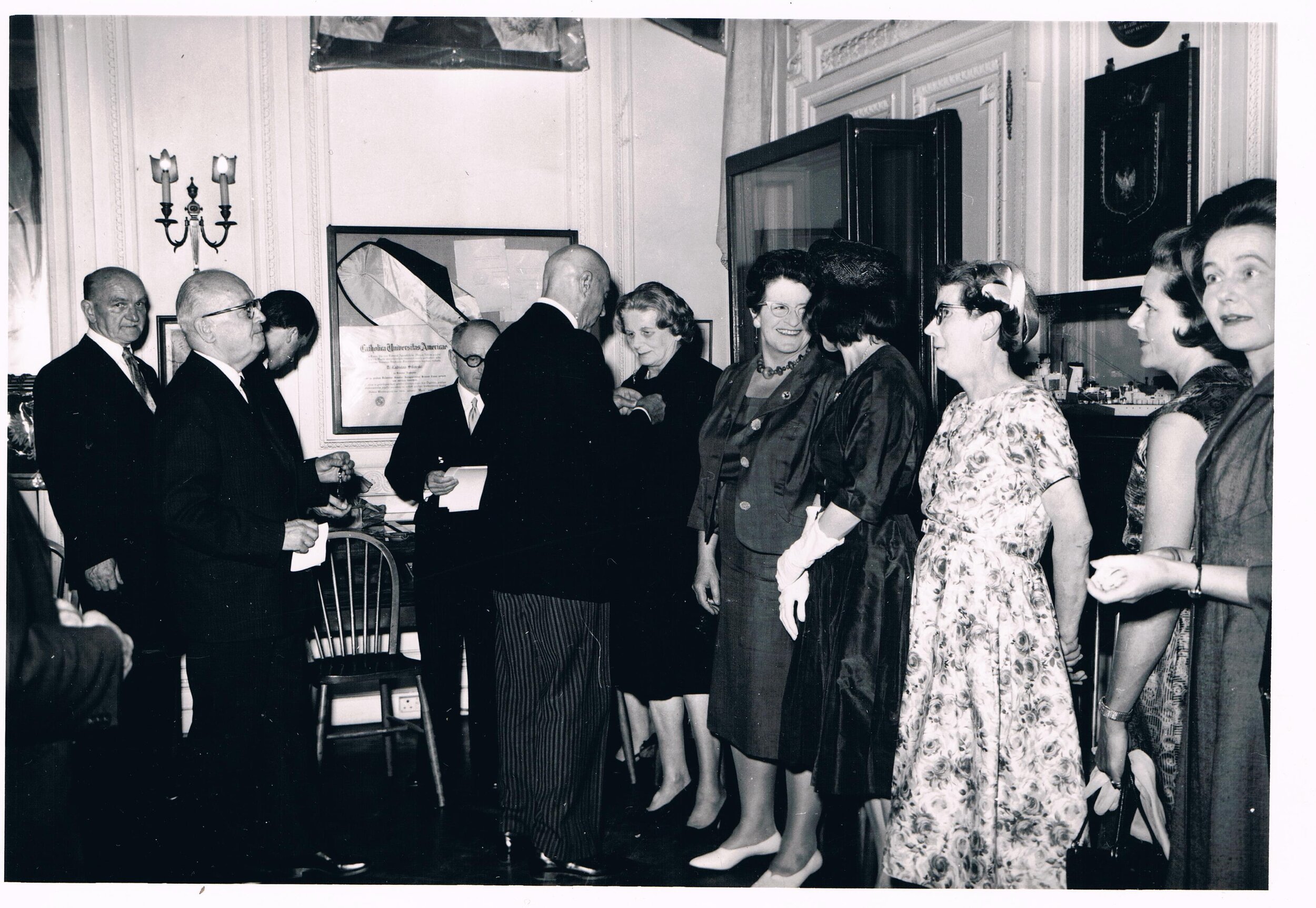
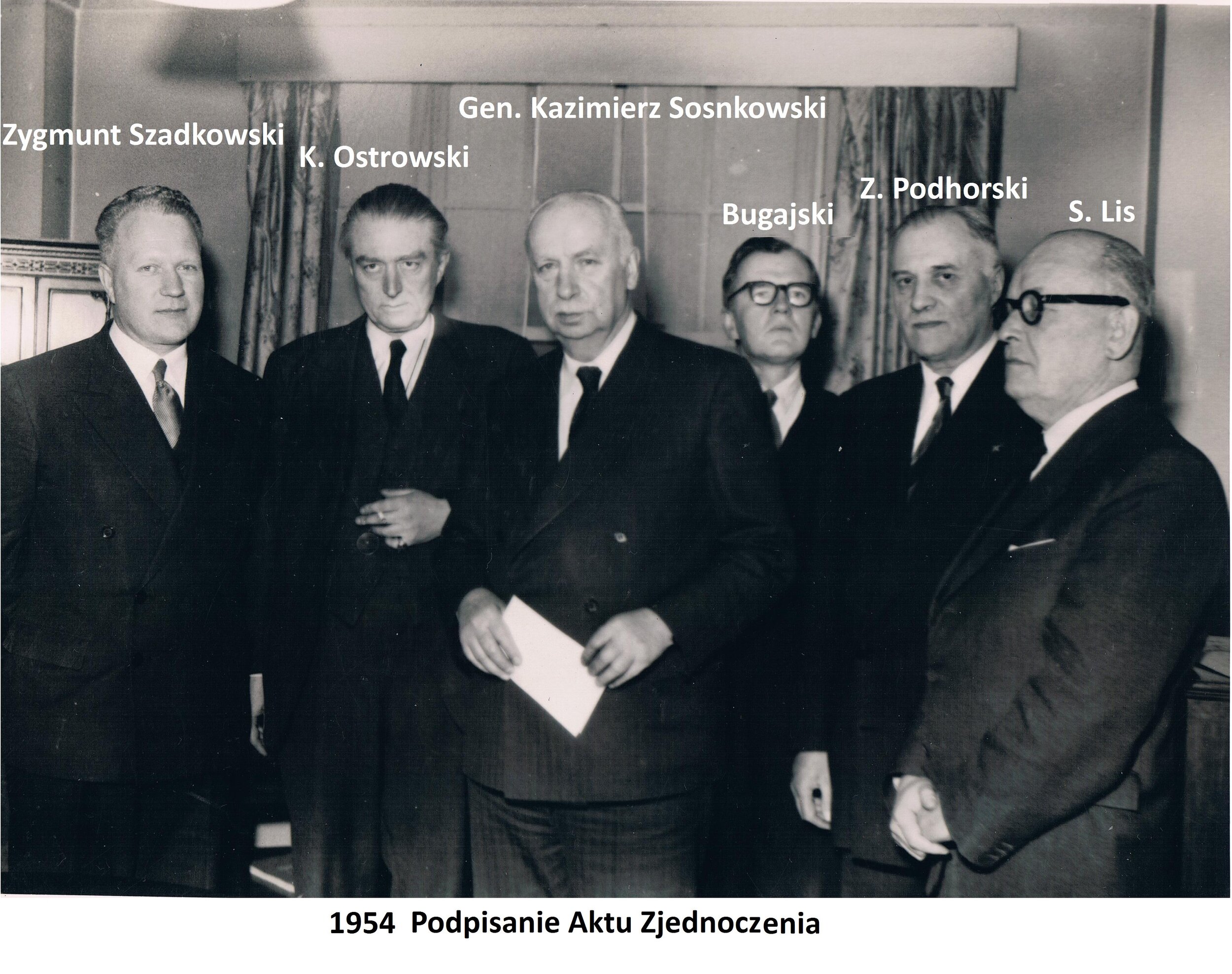


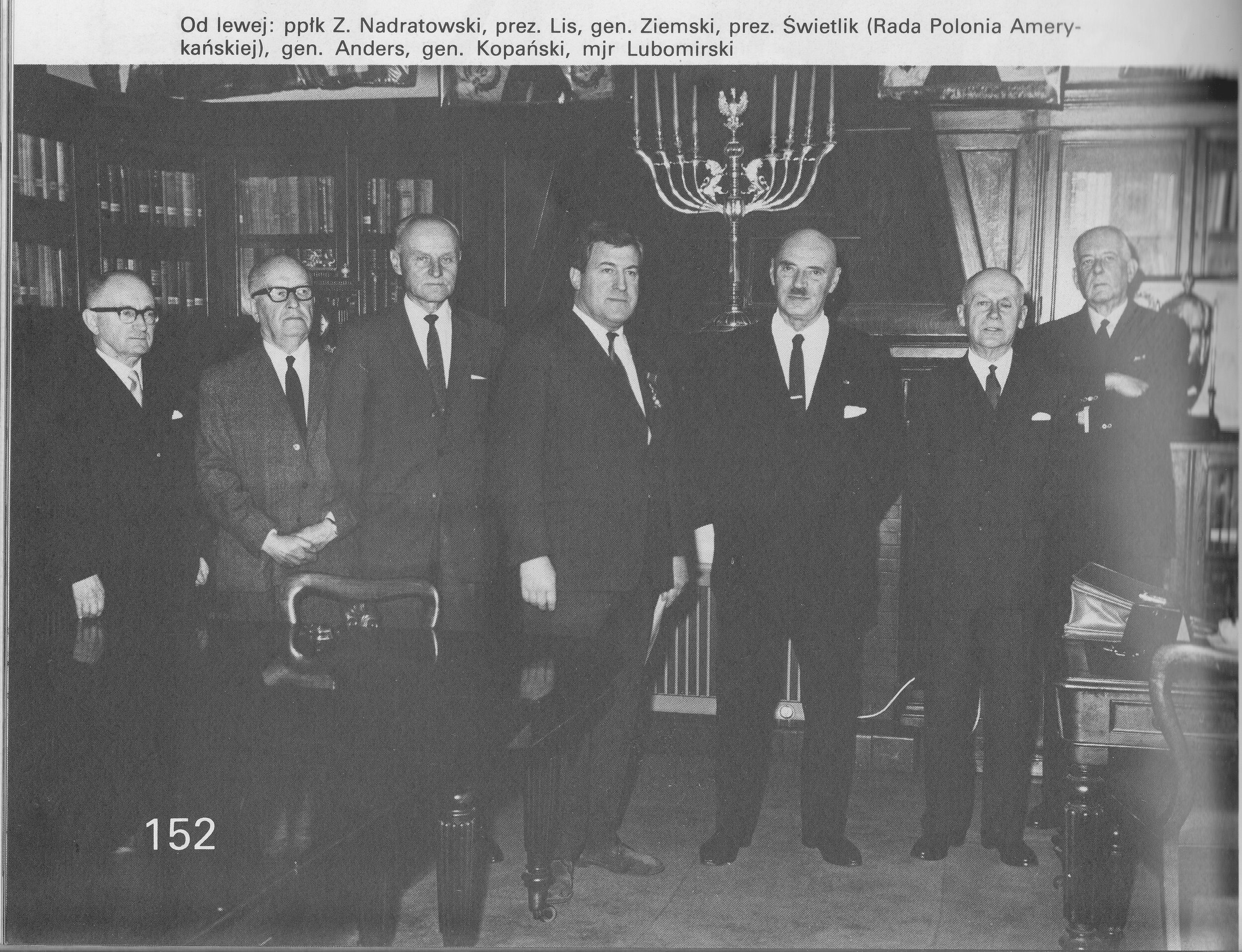
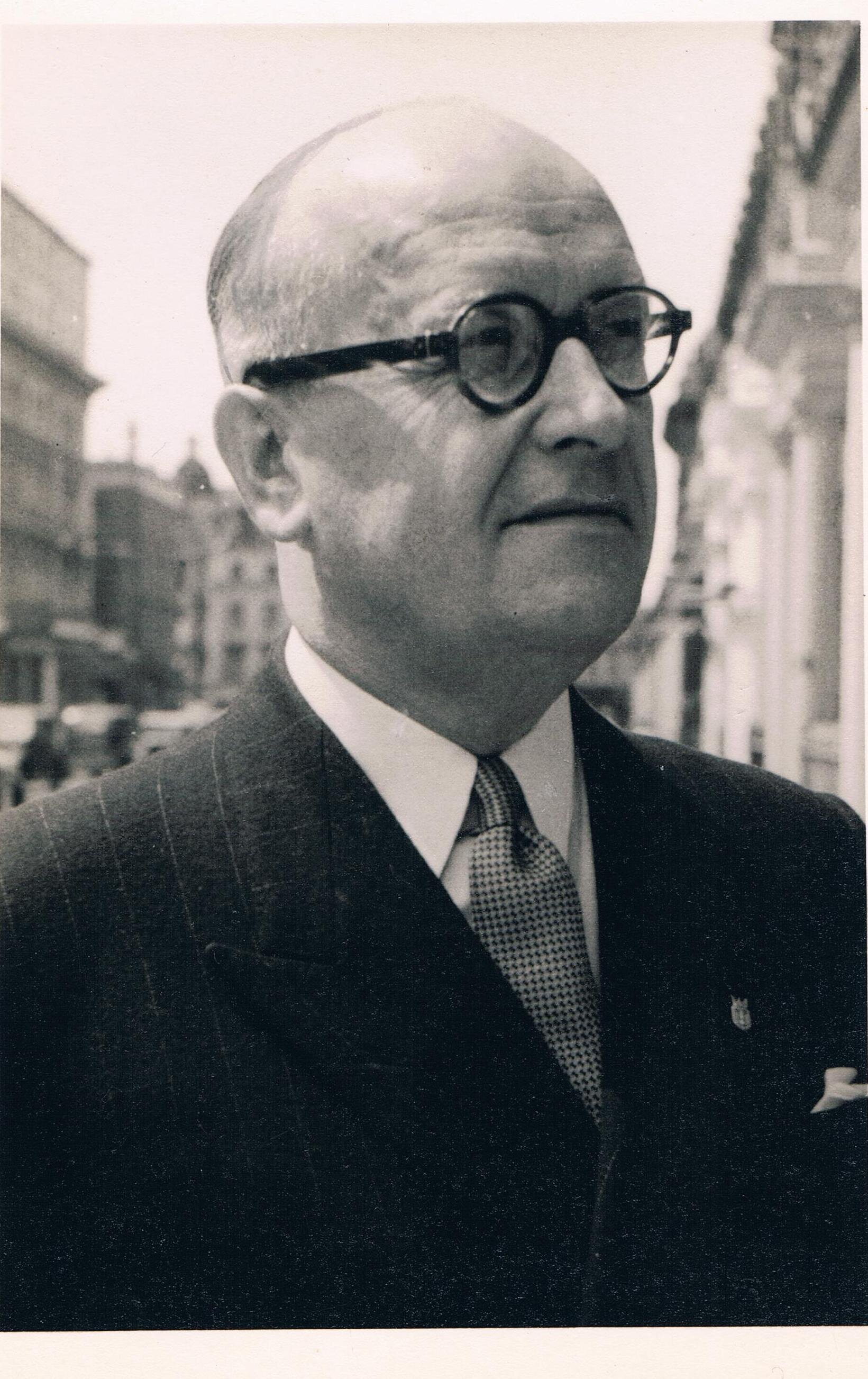
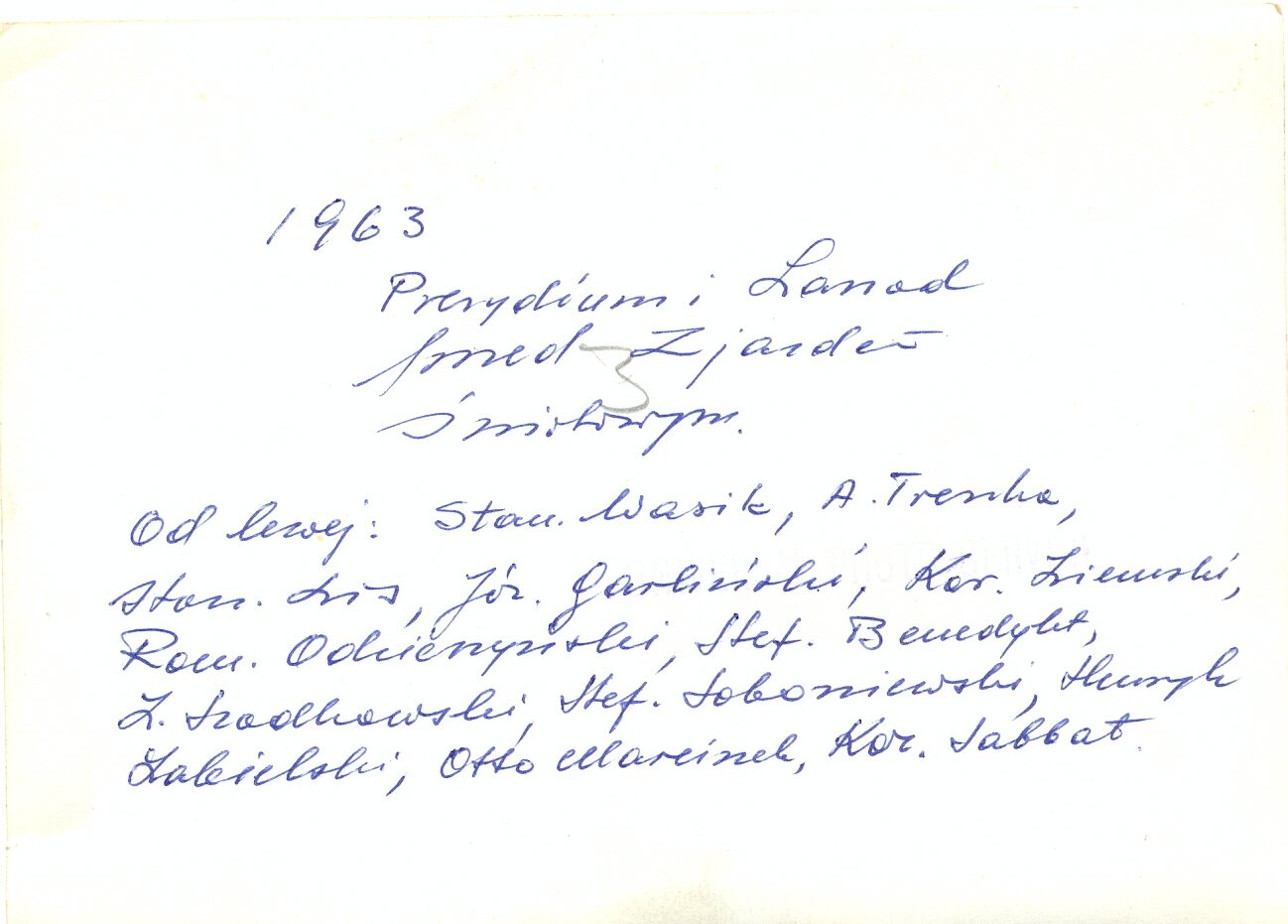
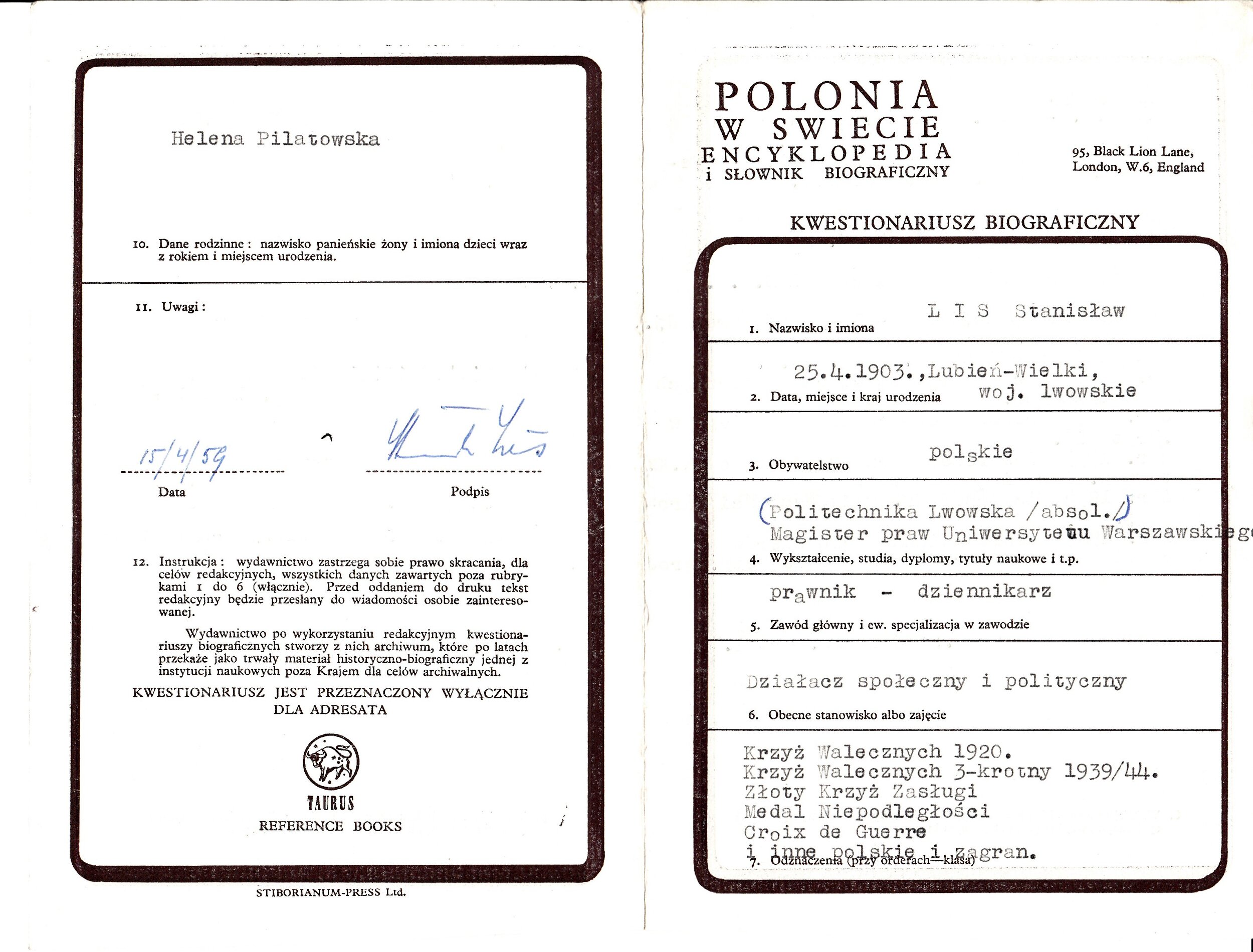
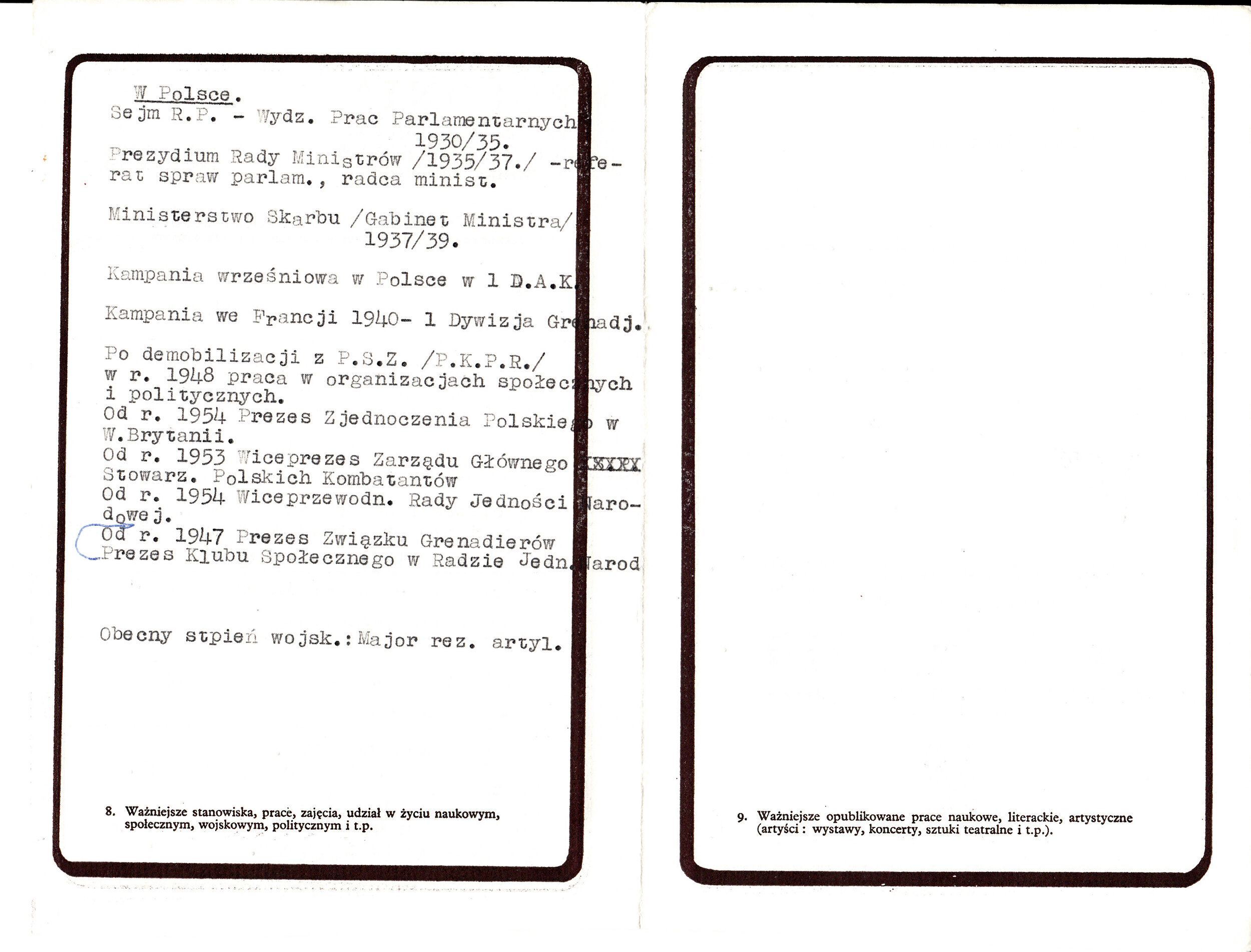
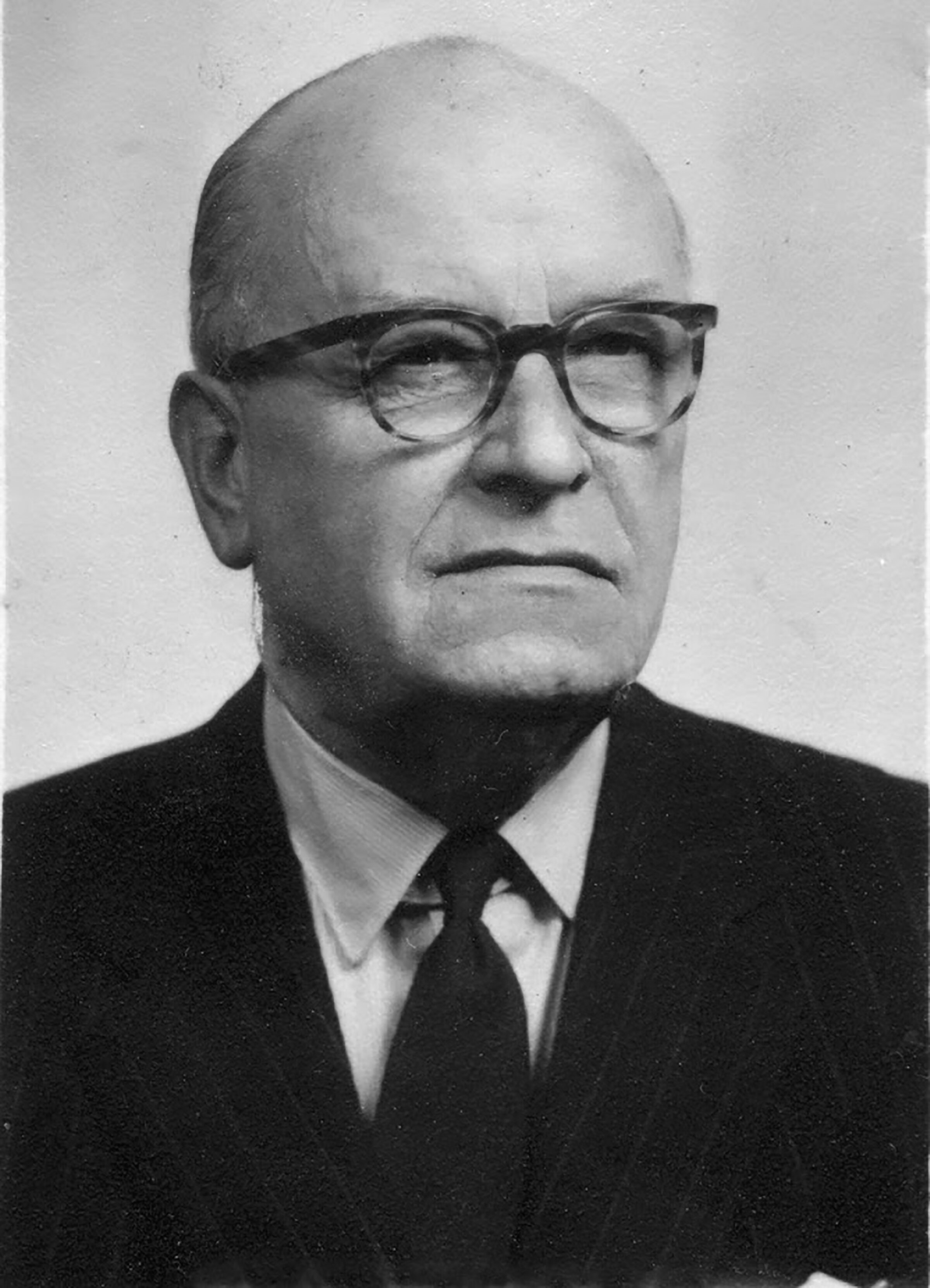

The Silent March, London 1956
“For four years (1954 -1959) he (Lis) stood at the head of the Movement for Polish Unity and it was at his particular insistence, that the famous 'silent march' took place, as a sign of protest at the Soviet occupation of Poland, during the visit of Bulganin and Khrushchev in London. This was the greatest and most successful effort of sp. Prezes Lis and of which he can be rightly proud”
- Dr Tadeusz Bielecki, Council of National Unity 6th May 1967










The Silent March in London on April 26, 1956, was a protest organized by Polish exiles and anti-communist activists, aimed at opposing the visit of Soviet leaders Nikita Khrushchev and Nikolai Bulganin to Britain. This silent demonstration was a powerful display by the Polish émigré community in the UK, protesting Soviet oppression and the impact of communism on Poland and Eastern Europe. Participants included Polish veterans, civilians, and community leaders who marched silently through the streets of London to convey their message without verbal protest, drawing attention to the oppressive nature of Soviet rule.
The organization of the march involved several Polish émigré groups, including the Polish Ex-Combatants Association and the Federation of Poles in Great Britain, both of which were actively engaged in anti-communist activities and advocacy for Polish independence. Major Stanislaw Lis, a key figure among Polish exiles, played an instrumental role in organizing and rallying support for such events. Figures like Lis used their connections within the Polish community and their standing as veterans and activists to mobilize support and keep the cause of Polish independence alive in Western consciousness.
The march and similar actions represented the resilience and unity of Polish émigrés, demonstrating against the political influence of the USSR and in favor of Poland's sovereignty. The silent nature of the protest was intended to underscore the repressive silence imposed on those within Poland under communist rule, making a potent statement in the heart of London.
1965 - Stanisław Lis Meets His Daughter
In November 1943, my mother, Elizabeth Lis, began searching for her parents with the help of her godmother, Lisbet. The pair quickly managed to trace her parents, and Lisbet made contact with Stanisław and Helena. It was then revealed that Helena was actually Stanisław's second wife. Despite the confusion, Helena agreed to meet Elizabeth at her home in Barnes, London.
During their meeting, Elizabeth learned more about her birth mother, Helena Rothenberg (whom she referred to as "Helena 1"). Helena 1 was described as "half Jewish" and from an "aristocratic family." Helena Narzymska, Stanisław's second wife, had known Helena 1 in Poland. Still, Elizabeth remained unsure throughout her life about the truth of this information, feeling that Helena Narzymska may have been jealous of her birth mother and tried to discredit her.
Elizabeth also discovered that Stanisław had been Helena Narzymska's tutor when she was just 13 years old, while he was still engaged to Helena 1. After the war, Helena Narzymska arrived in England in 1949, having spent three years in Siberia with her young son, Georg, from her first marriage. This period was part of the larger Soviet deportation of Polish citizens under Stalin, as millions of Poles were sent to Siberia and other forced labor camps after the Soviet invasion of Poland in 1939. After their release, Helena and Georg crossed Europe, working various jobs, and eventually made their way to England. Mum believed Helena married Stanisław around 1950, after both had recently been divorced.
My mother described Helena Narzymska as fiercely patriotic but disorganized and not a "housekeeping type." She was well-built and clumsy, and intimidated her, especially as Elizabeth felt she tried very hard to make her ‘Polish’. Helena earned money through dressmaking for schools and private clients and also rented out the top floor of their house in Barnes for £7 a week. Her son Georg, whom Elizabeth considered her half-brother, lived in the USA and was much happier - "unmarried and looking rather a lad."
In 1965, mum’s birth mother, Helena Rothenberg, reached out to Stanisław to confirm that Elizabeth was indeed their daughter and requested a meeting. At first, Stanisław declined, possibly to process the fact that he had a 21-year-old daughter he hadn't known about. However, the two met on Easter Monday, 1965, and from that point forward, they kept in regular contact. Elizabeth learned that her parents had divorced in 1949, both had remarried, and her birth mother was living in Ealing with her second husband.
Elizabeth described her father, Stanisław, as brilliant. He held law and agricultural (forestry) degrees from Warsaw University and had escaped to England in 1941 with the Polish Forces. After the German invasion of Poland in 1939, the Polish government-in-exile was established in London, and many Polish soldiers, including Stanisław, joined the Allied Forces to continue the fight against Nazi occupation. By 1945, according to mum’s notes, Stanisław had become the personal representative of the Polish President-in-Exile and later served as the International Secretary of the Polish community in exile. He was also a respected philatelist, known for his collection of rare stamps.
Stanisław lived in Barnes with Helena Narzymska and two dogs, in what Elizabeth described as "disorganized chaos”, unable to return to Poland due to his anti-communist stance. Mum described him as a “Marked Man” - his life would have been in danger had he returned, due to Poland becoming a Soviet satellite state after the war. Stanisław had younger sisters in Poland, two of whom were alive when Elizabeth met him, with a third believed to have died.
Over the course of about a year, mum met with her father several times, including visits to the Polish club in London, where he shared stories about his family and showed her photographs. However, she became overwhelmed by the intensity surrounding the exiled Polish communities’ experiences, and especially by her stepmother, who pressured her to become a Pole. Mum told me she suddenly felt ‘very British’ and, in 1967, moved out of London, unaware that Stanisław had passed away earlier that year. She later deeply regretted losing contact and tried to reconnect in the late 1970s, but was unable to locate her father again.
Helena Narzymska survived Stanisław, but tragically took her own life in the Polish Home in Penrhos on October 23, 1992. Records later revealed that she and Georg had been deported to Kazakhstan in 1941 as part of Stalin's mass deportations, which affected tens of thousands of Polish citizens during and after World War II.





He became a central figure in the Polish émigré community, contributing actively to political and veteran organisations. He co-founded the SPK Study Circle, served as President of the Polish Union in Great Britain (1960–1964), and later became Vice President of the Association of Former Soldiers, holding the role for over two decades.
Obituaries
1. Stanisław Lis
Vice-President of the Council of National Unity and the Social Club
Died: 11 February 1967, London
The painful loss of a distinguished independence activist is announced.
Issued by: Independent Social Group and Social Club of the J.N. Council
Reference: 5159
2. S.P. Stanisław Lis
Deputy Chairman of the Council of National Unity
Died: 11 February 1967, London
A distinguished social, veteran, and political activist.
A Requiem Mass will be celebrated at St. Andrew Bobola Church on Saturday, 18 February at 10:00 a.m., followed by burial at Gunnersbury Cemetery.
Issued by: National Unity Council (Council for National Unification)
Reference: 5162
3. S.+P. Stanisław Lis
Polish Army Soldier
Died: 11 February 1967, London | Age: 63
Endowed with the Holy Sacraments.
The painful loss is announced by his wife and son.
Funeral date to be announced separately.
Registration No.: 24/67 D.P. | Date: 15 February 1967
Reference: 5142
4. S.P. Stanisław Lis
Lieutenant Colonel
President of the Association of Polish Grenadiers in France
Distinguished veteran and activist, participant in the 1st Battle of Dy A, decorated with numerous Polish and foreign honors.
Died in London on 11 February 1967.Viewing: Ballard Funeral Home, Lard Chapel, 308 Old Brompton Rd, SW5 – Friday, 17 February, 5:00–7:00 p.m.
Funeral Service: St. Andrew Bobola Church – Saturday, 18 February, 10:00 a.m., followed by burial at Gunnersbury Cemetery.At the request of the deceased, there will be no graveside speeches.
Transportation to the cemetery will be provided.
Issued by: Board of the Association of Polish Grenadiers
Reference: 5151
5. S.P. Stanisław Lis
Veteran, Journalist, Political Activist
Well-known social and political activist, collaborator of Orzeł Biały, and member of the Polish Union of Journalists.
Died in London on 11 February 1967.
Hail to His Memory!
Issued by: Association of Journalists of the Republic of Poland
Reference: 5160 | Date: 17 February 1967
6. S.P. Stanisław Lis
Lieutenant Colonel of Horse Artillery
Defender of Lwów
Decorated with the Cross of Valour for the wars of 1920 and 1945, along with many other Polish and foreign honors.
Vice-President of the World Federation of SPK.
Died in London on 11 February 1967, aged 63, receiving the Holy Sacraments.
Viewing: Ballard Chapel – Friday, 17 February, 5:00–7:00 p.m.
Funeral Mass: St. Andrew Bobola Church – Saturday, 18 February at 10:00 a.m., followed by burial at Gunnersbury Cemetery.
Transportation from church to cemetery will be provided.
The family requests that donations be made to Polish causes in lieu of flowers.
Issued by: Polish Veterans' Association
Reference: 5158









